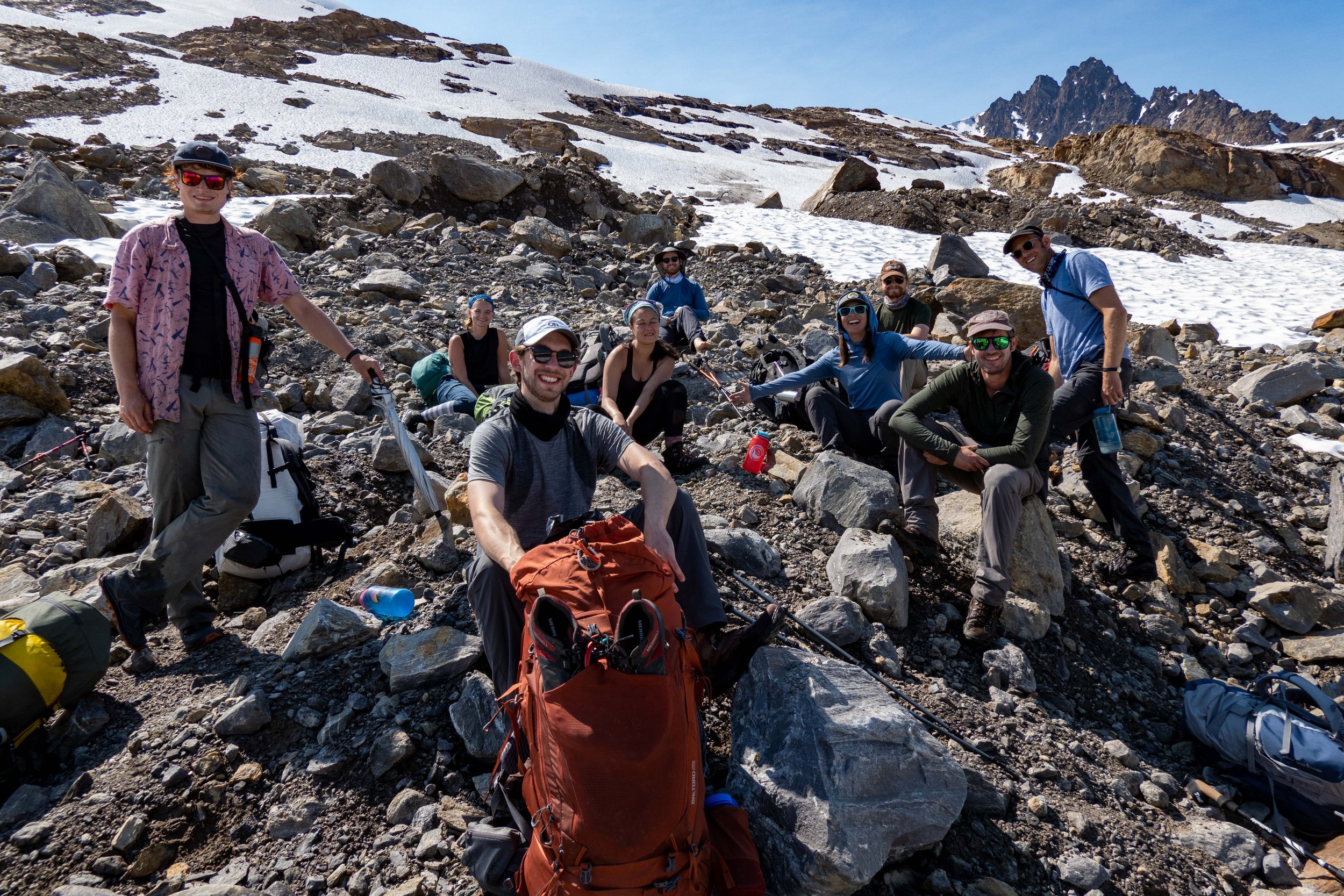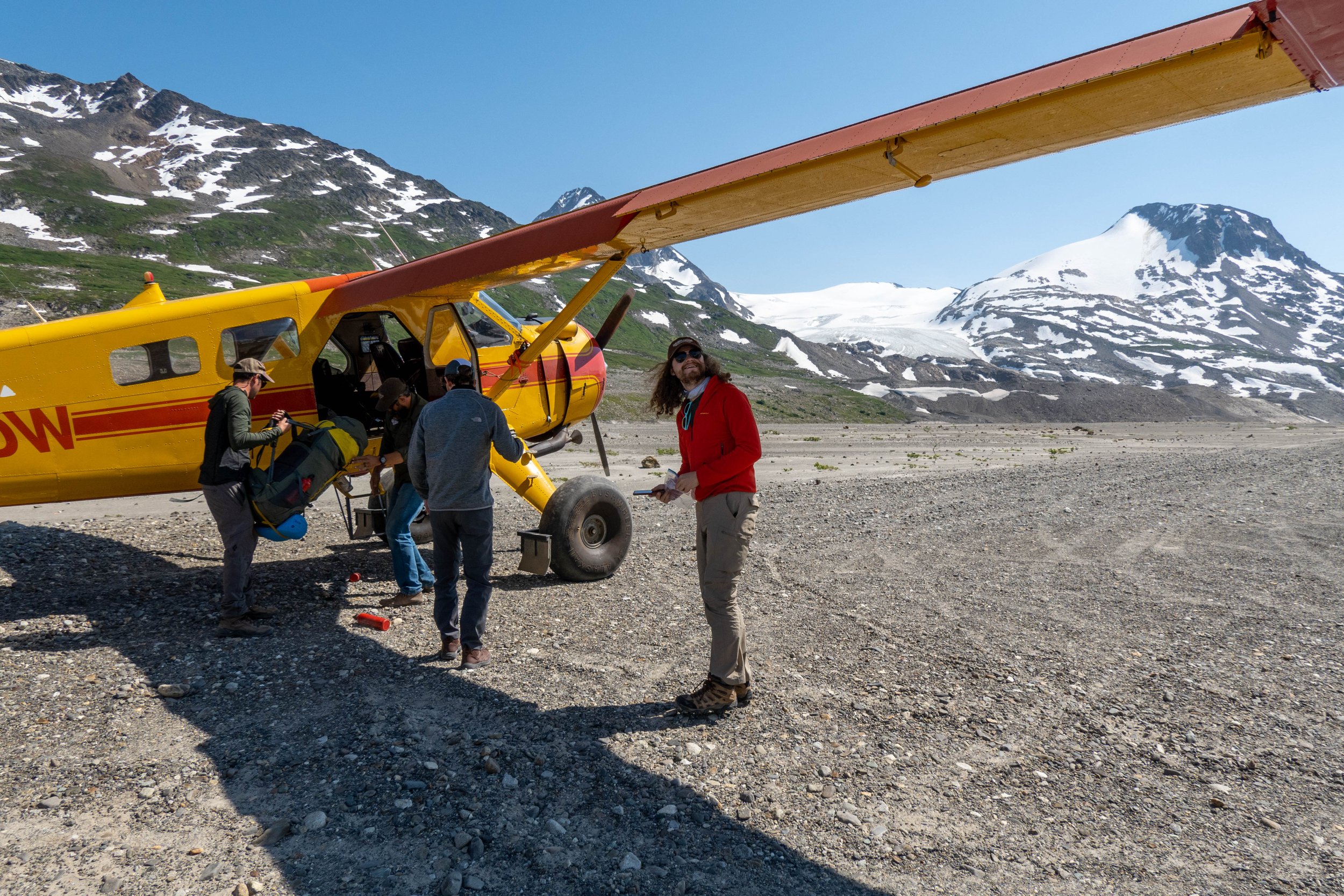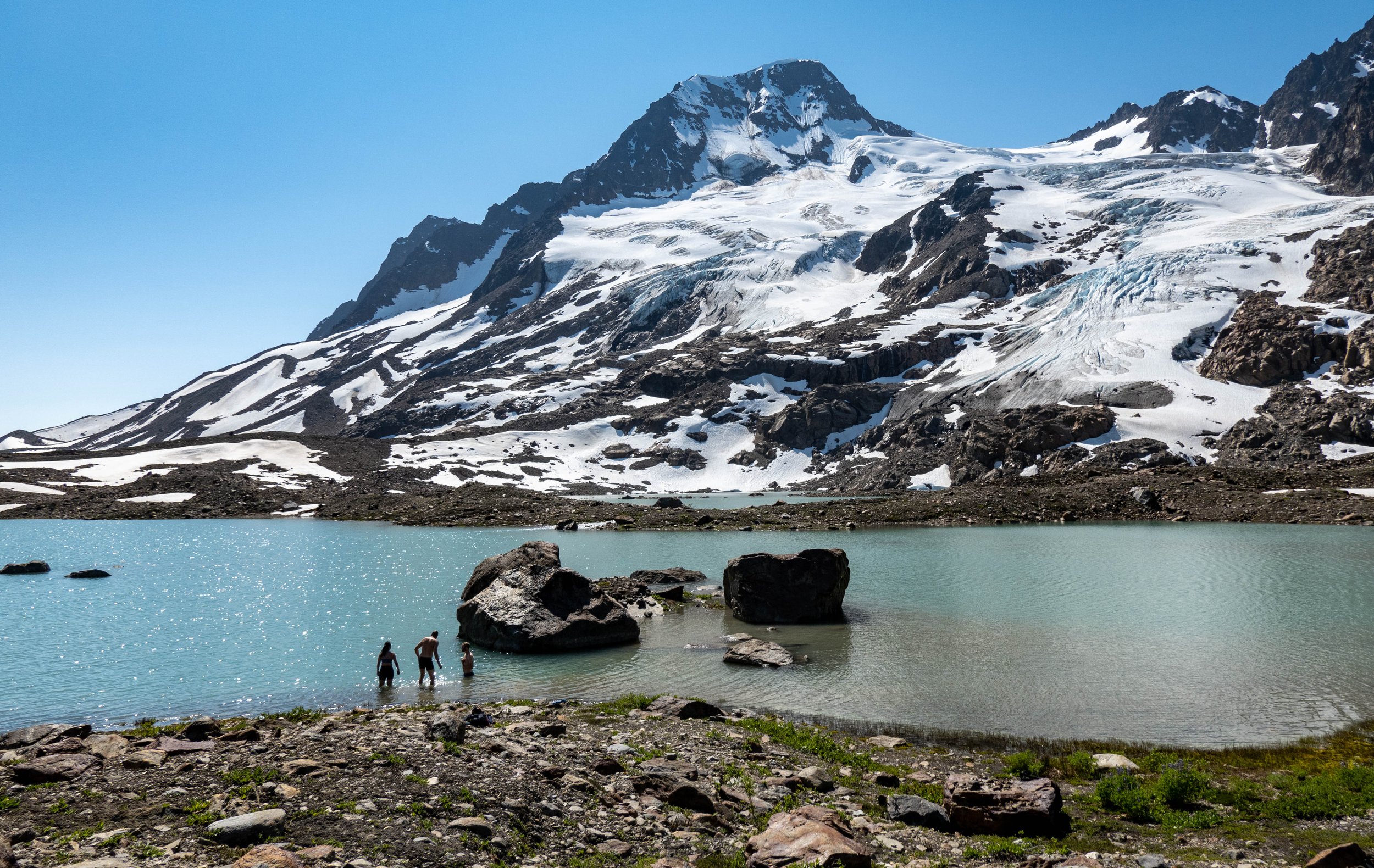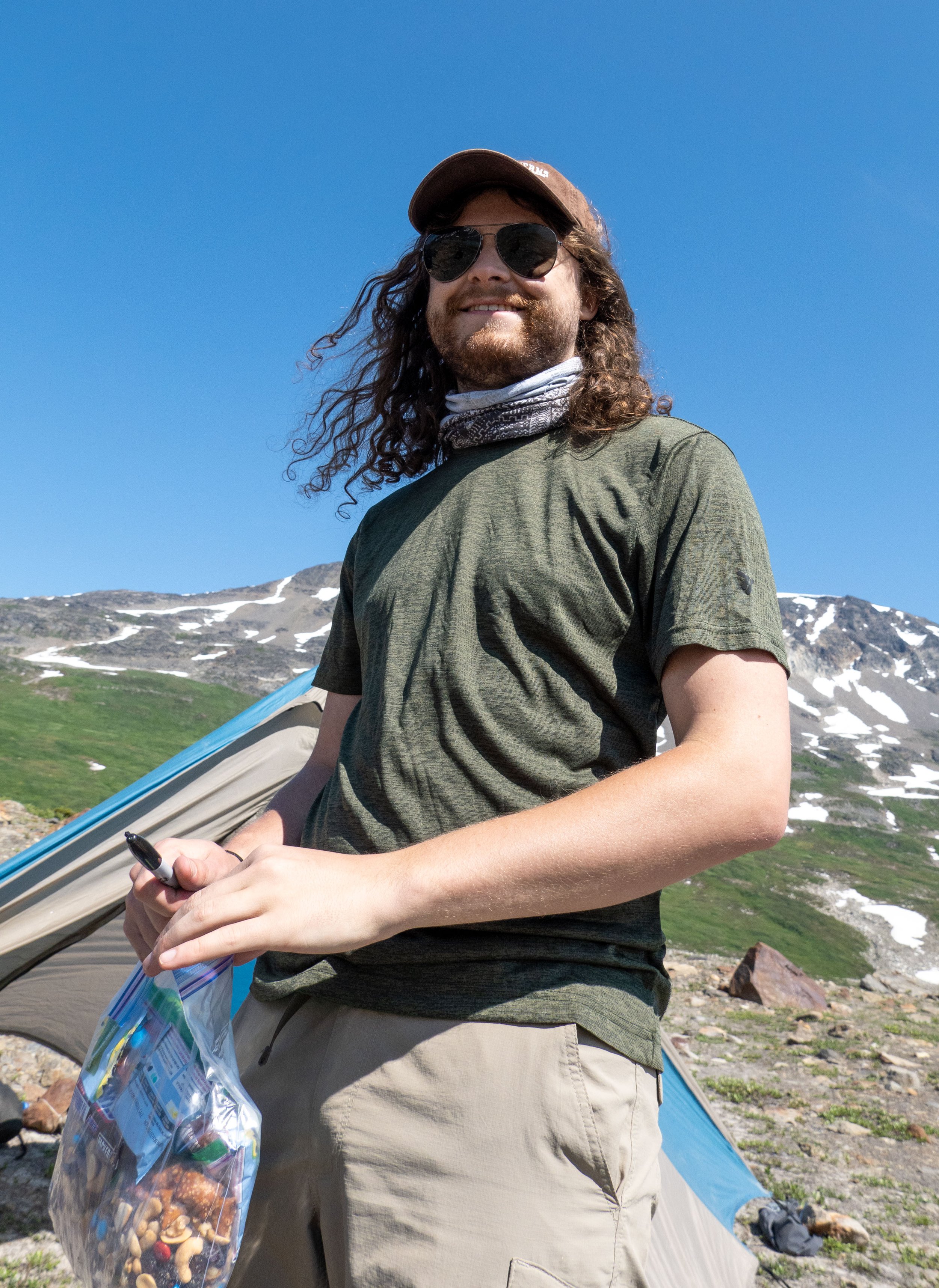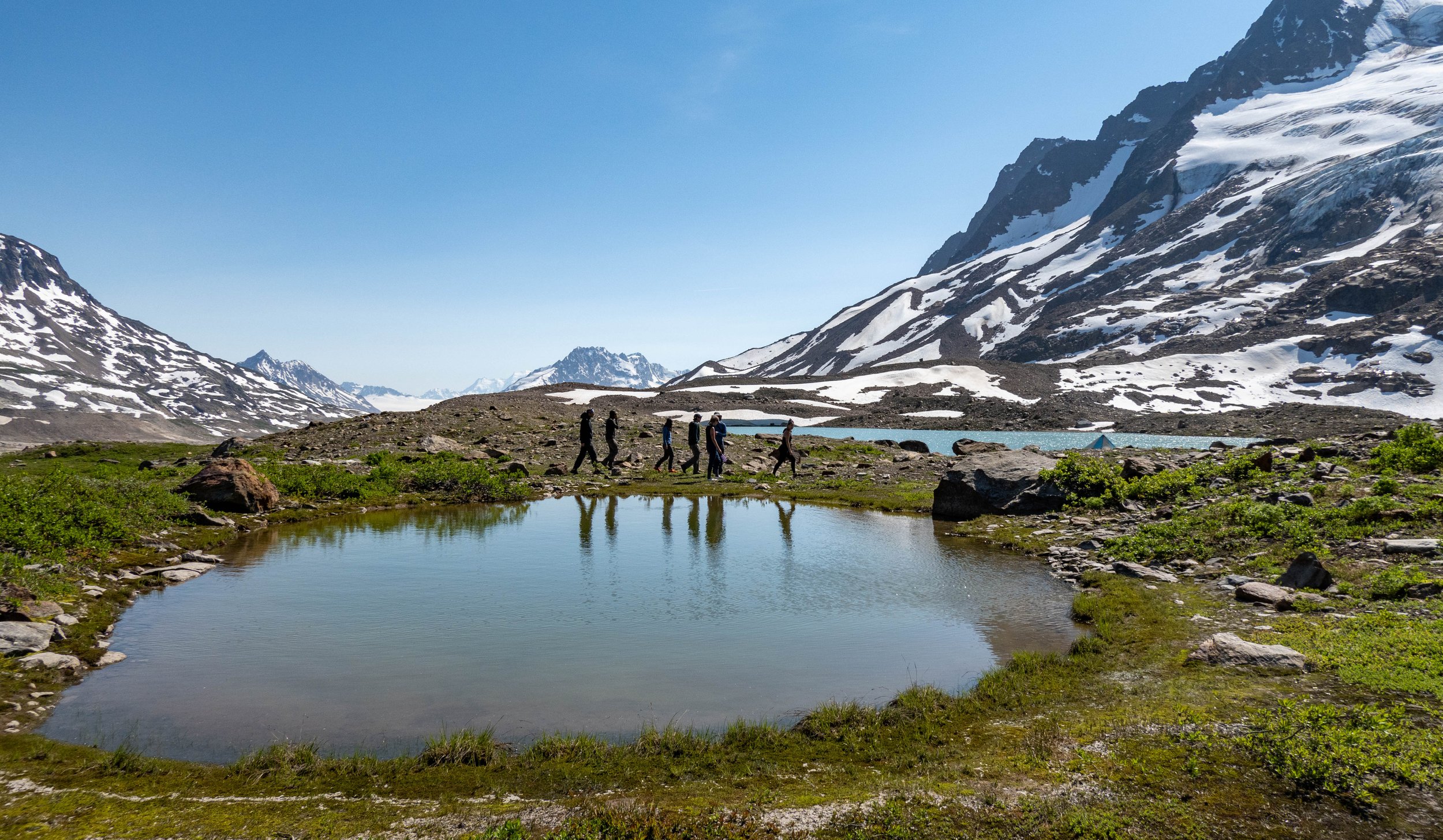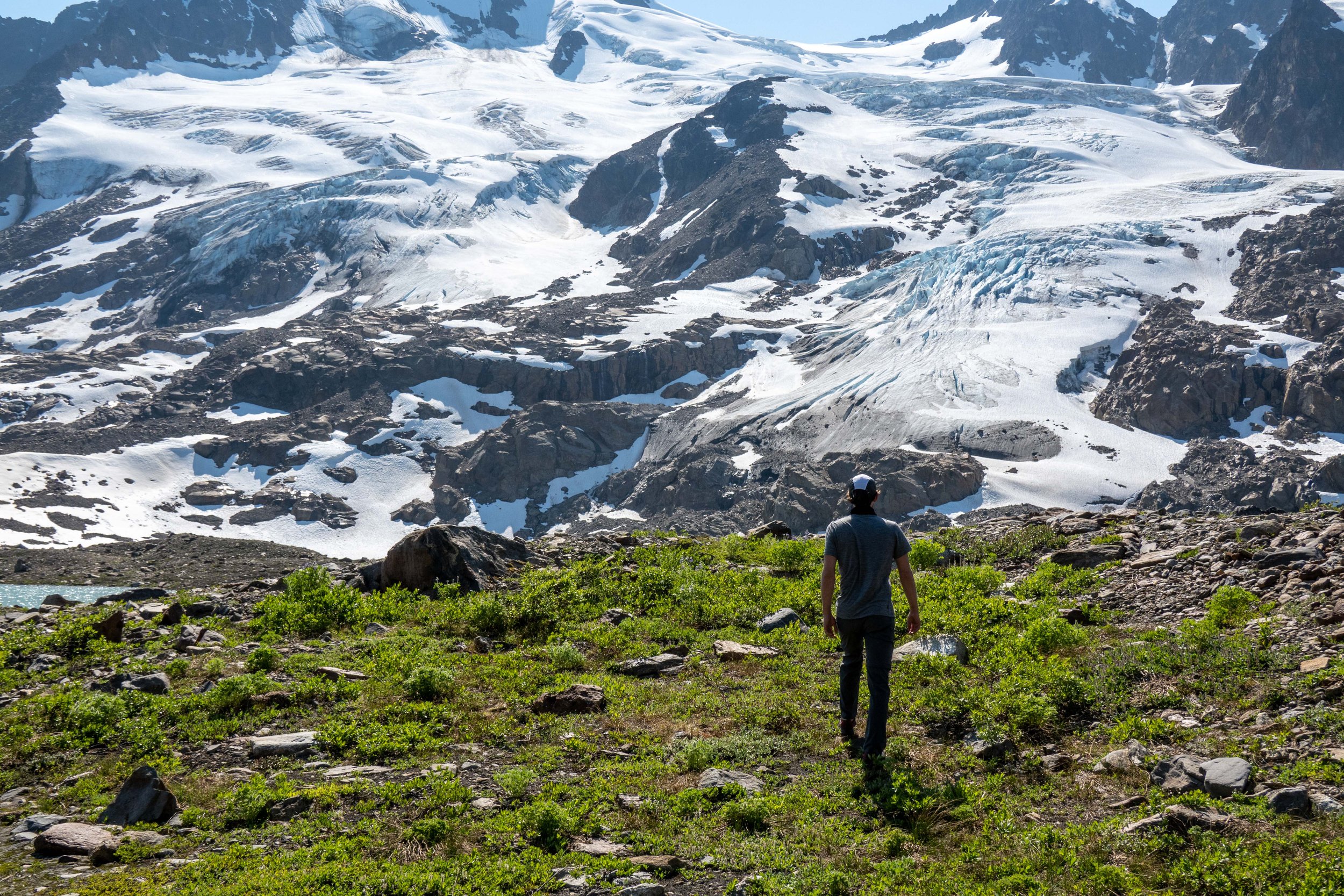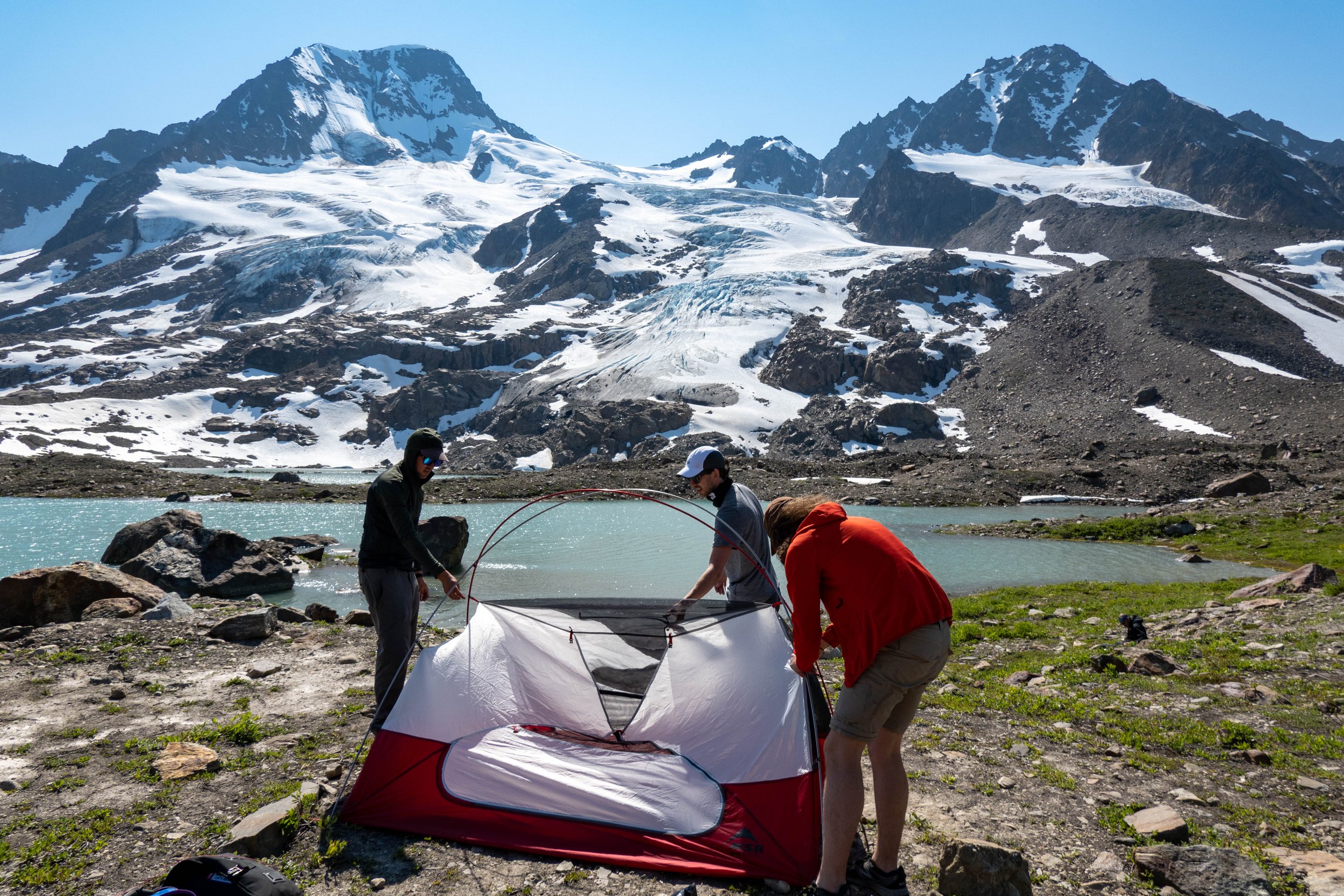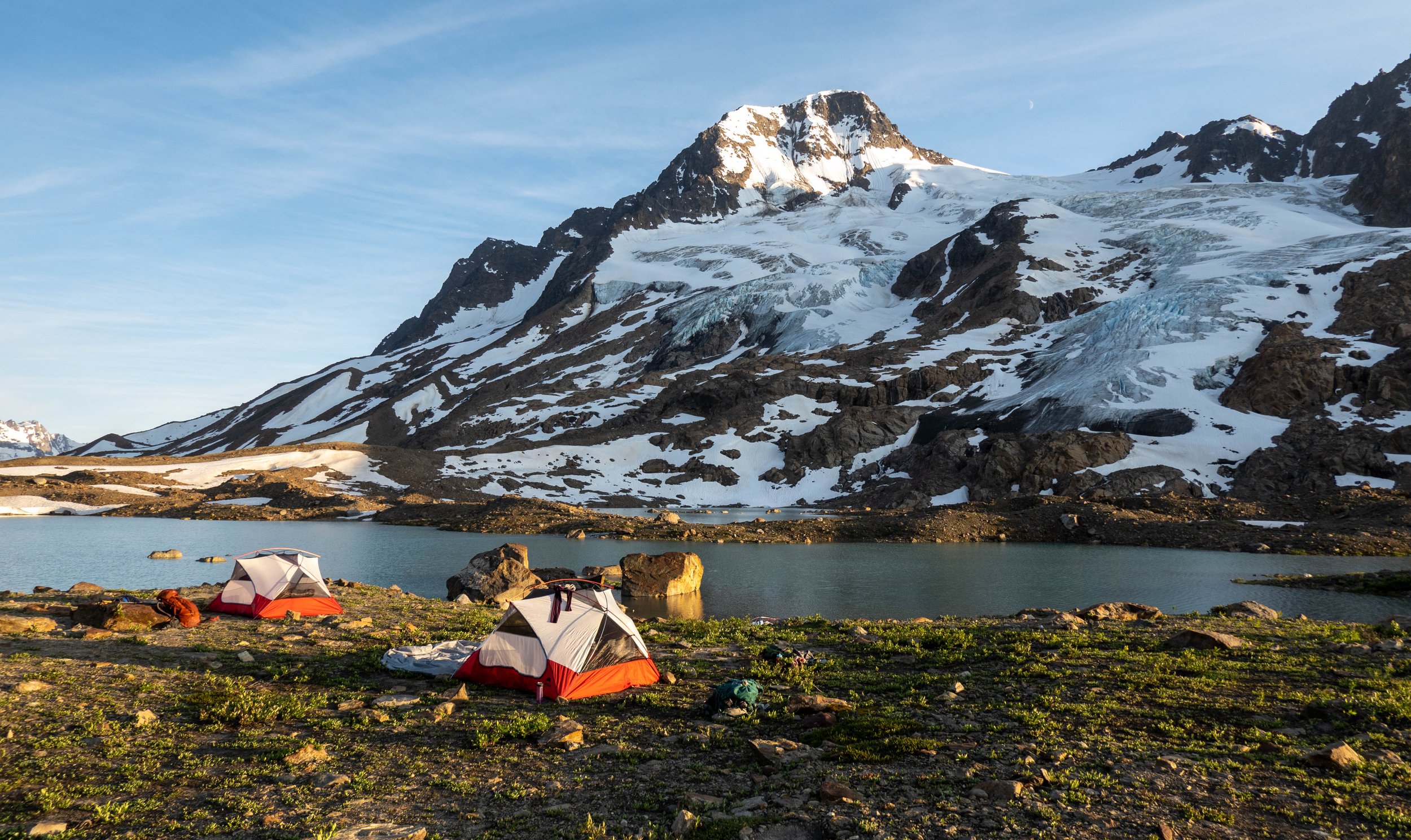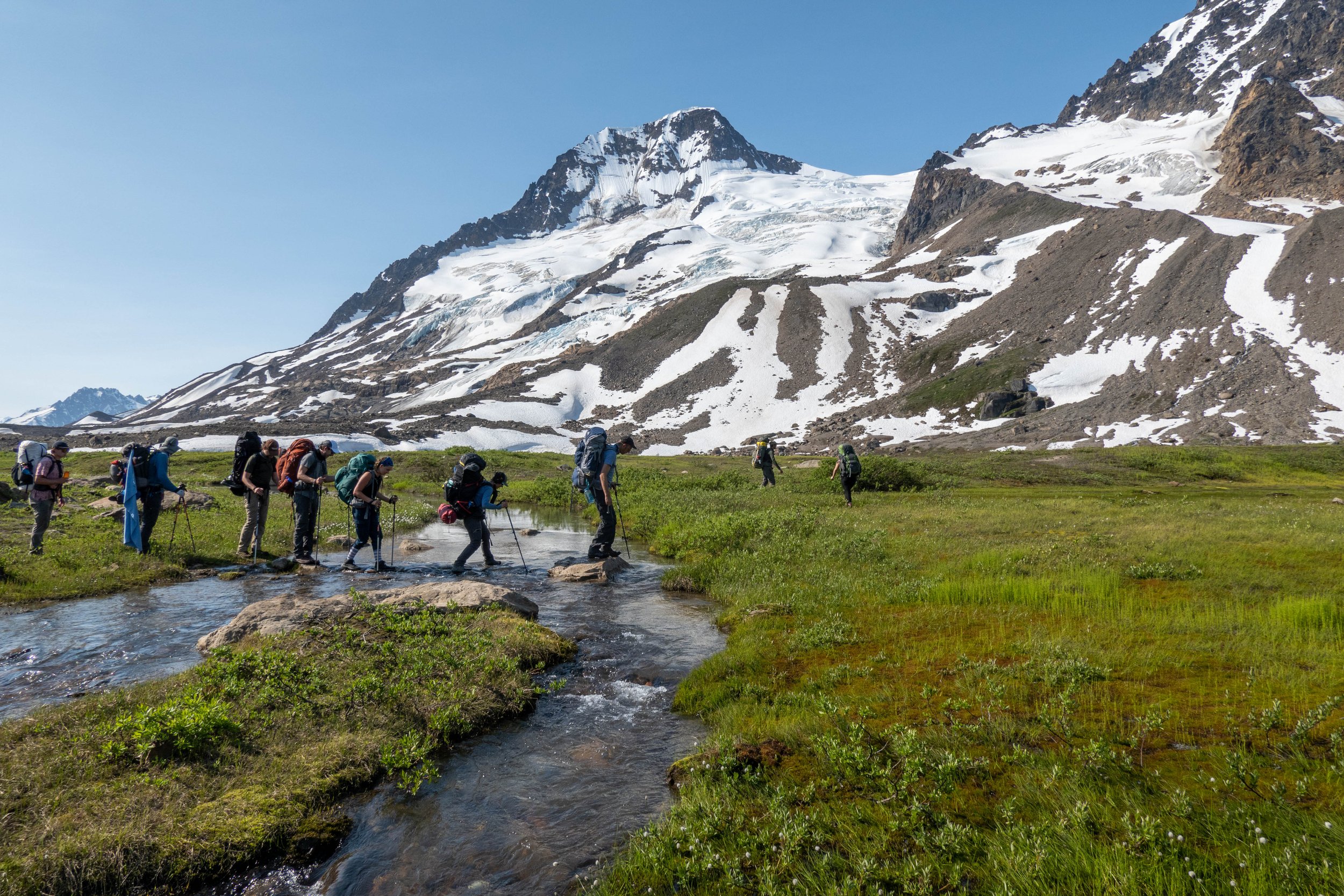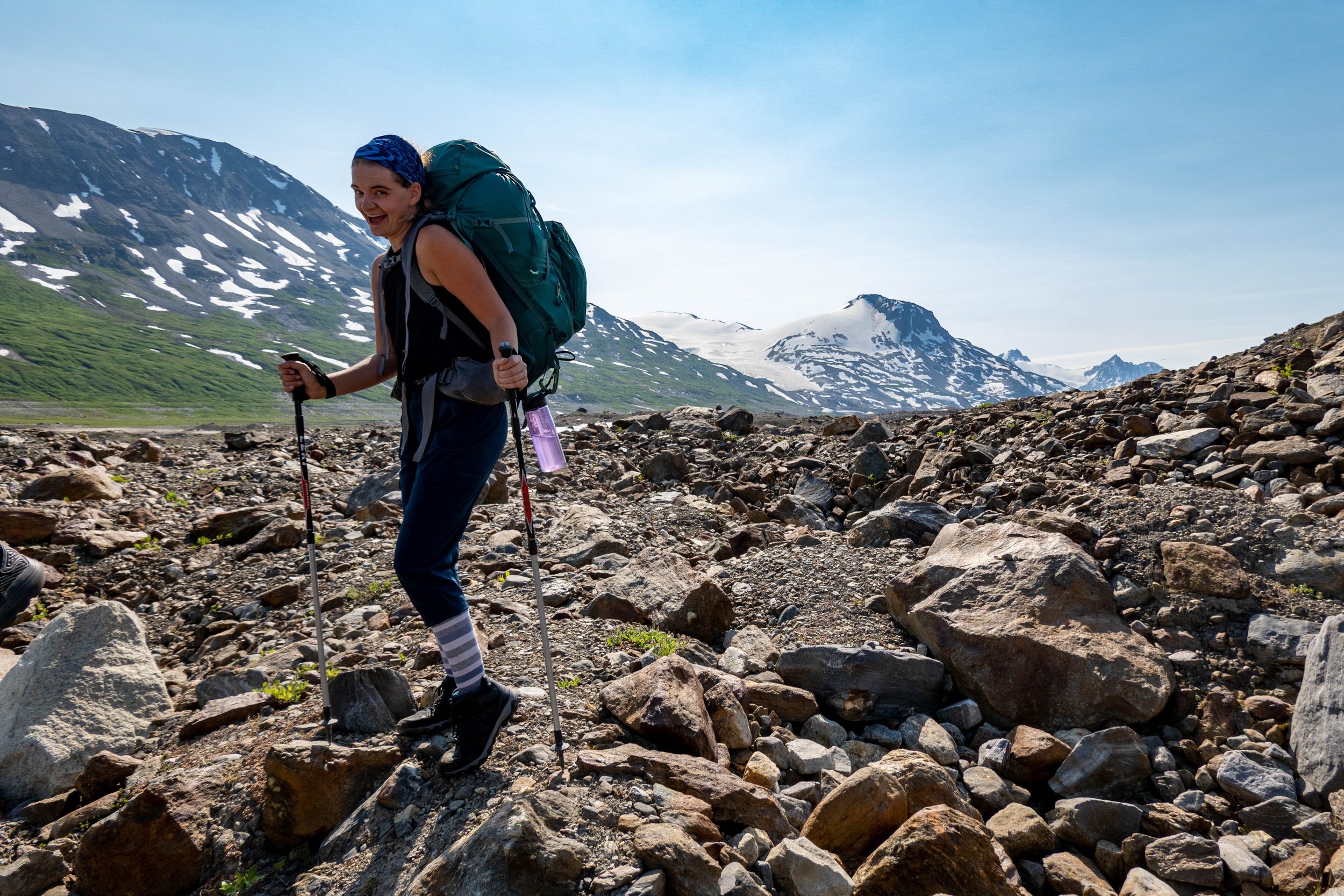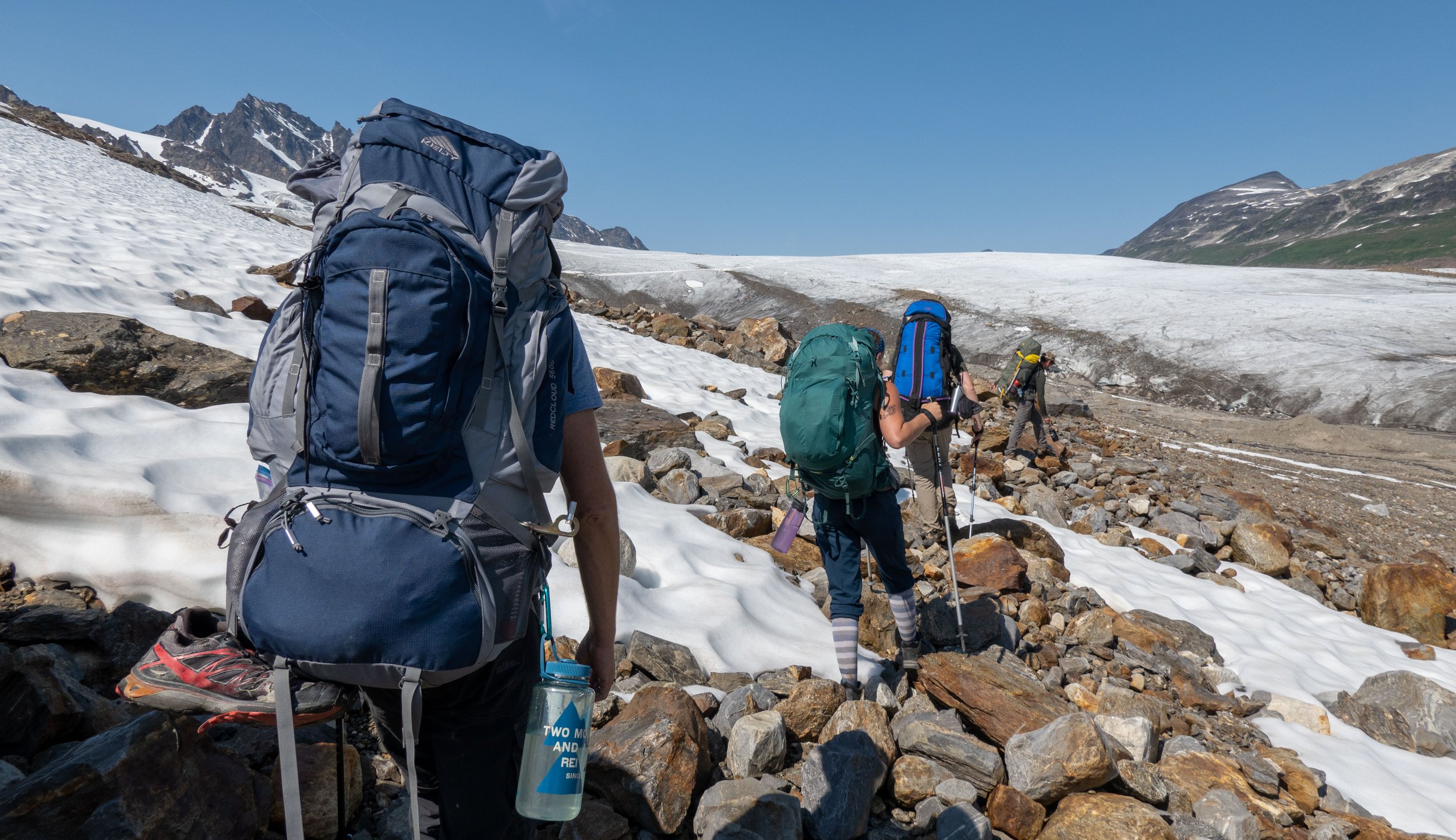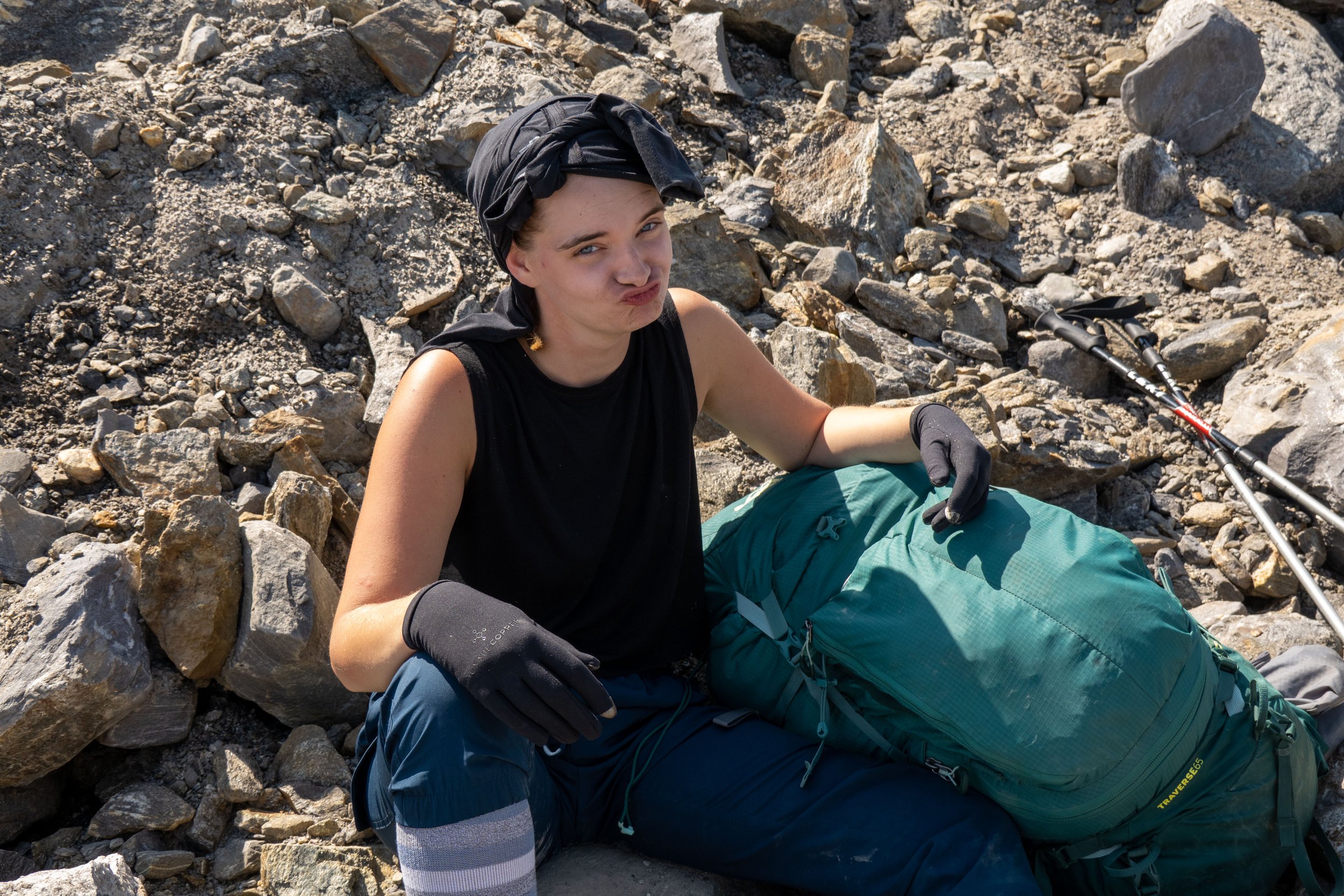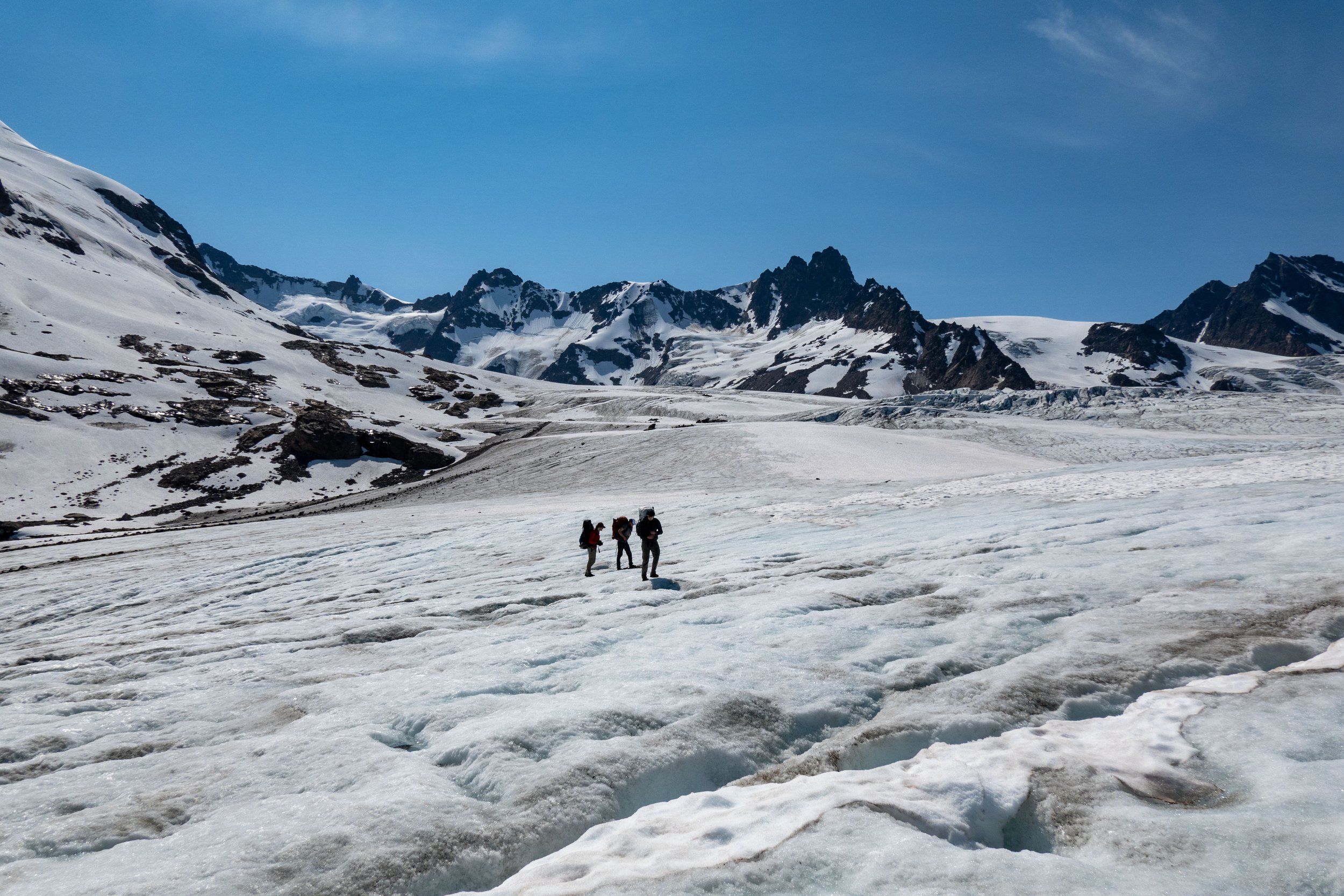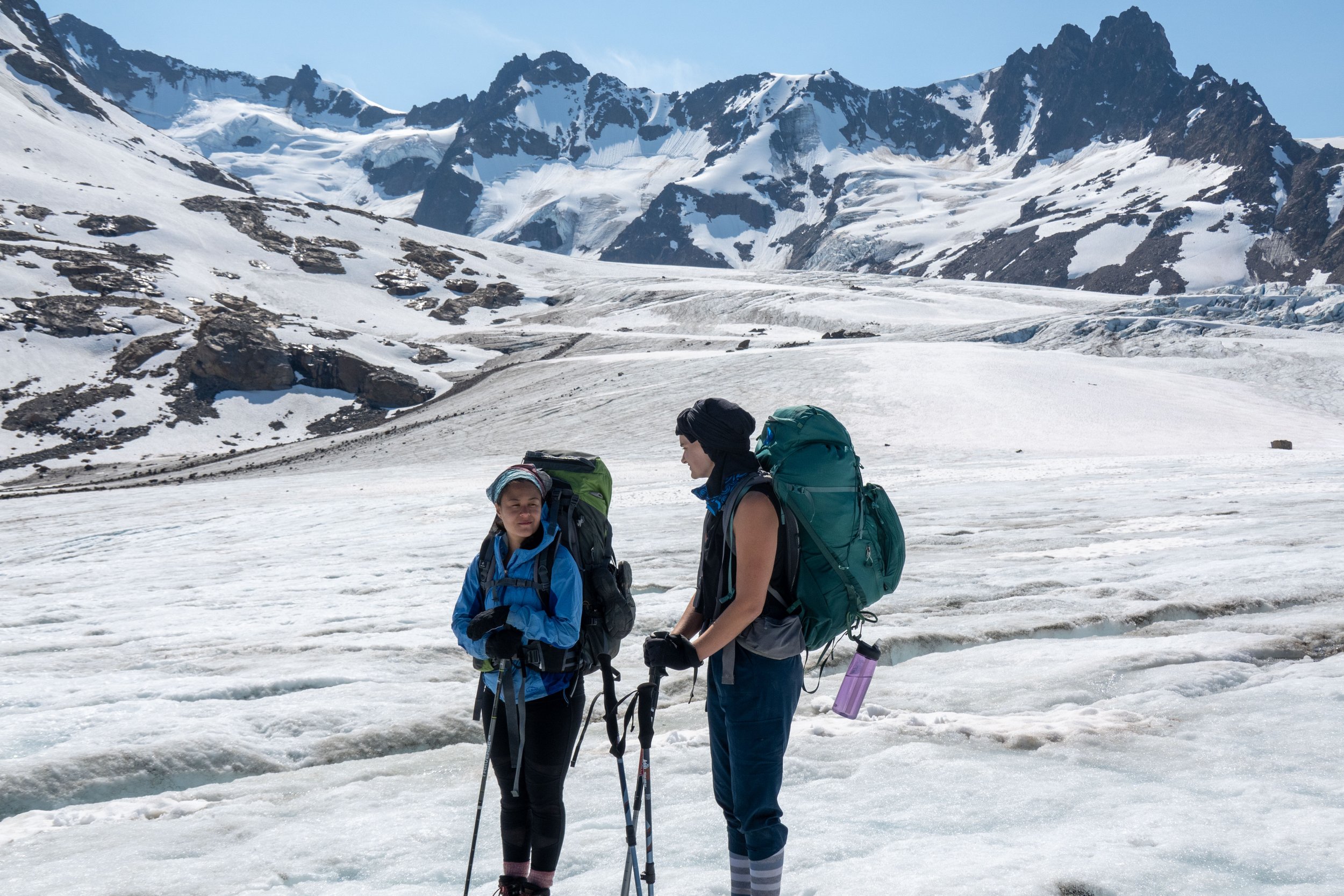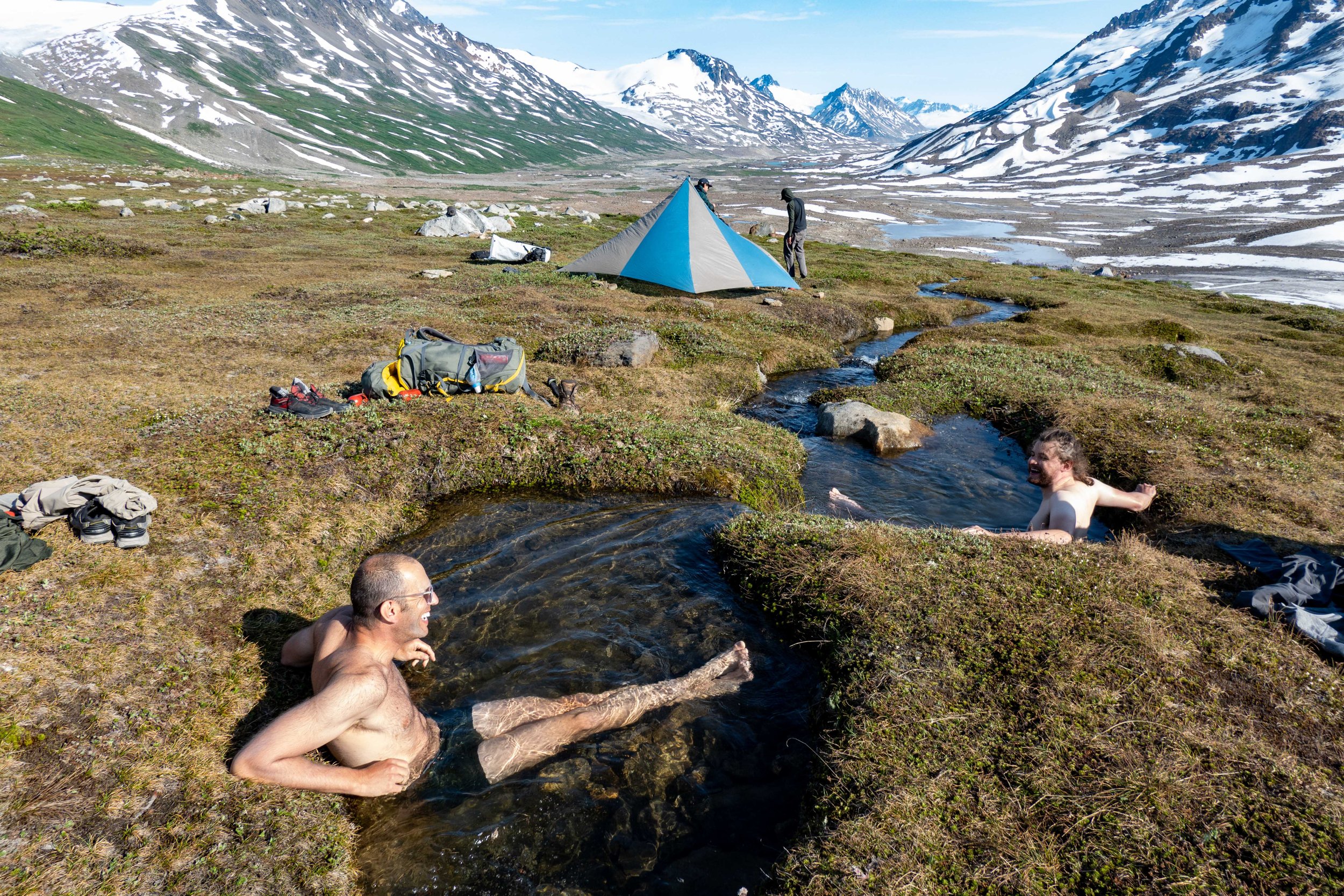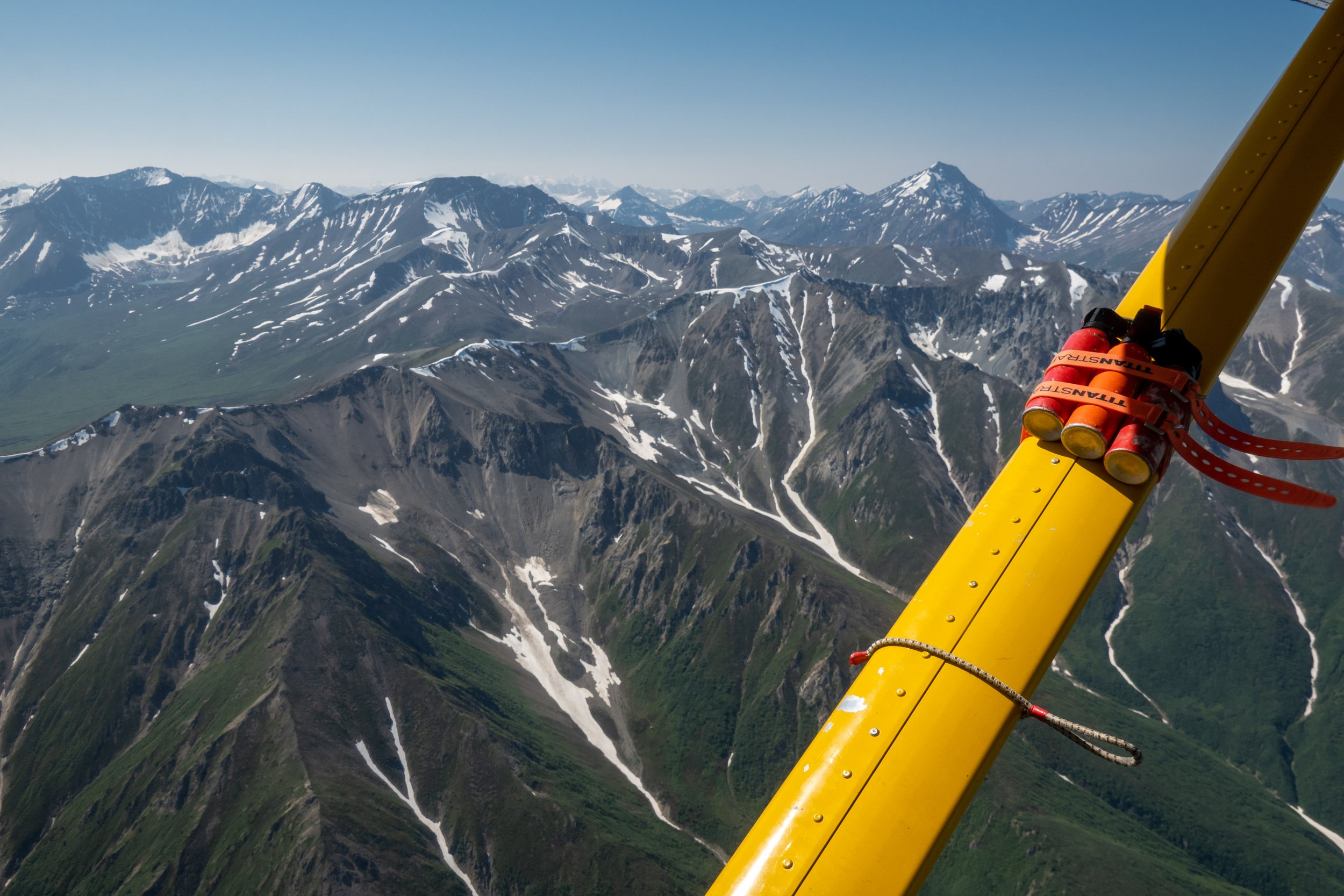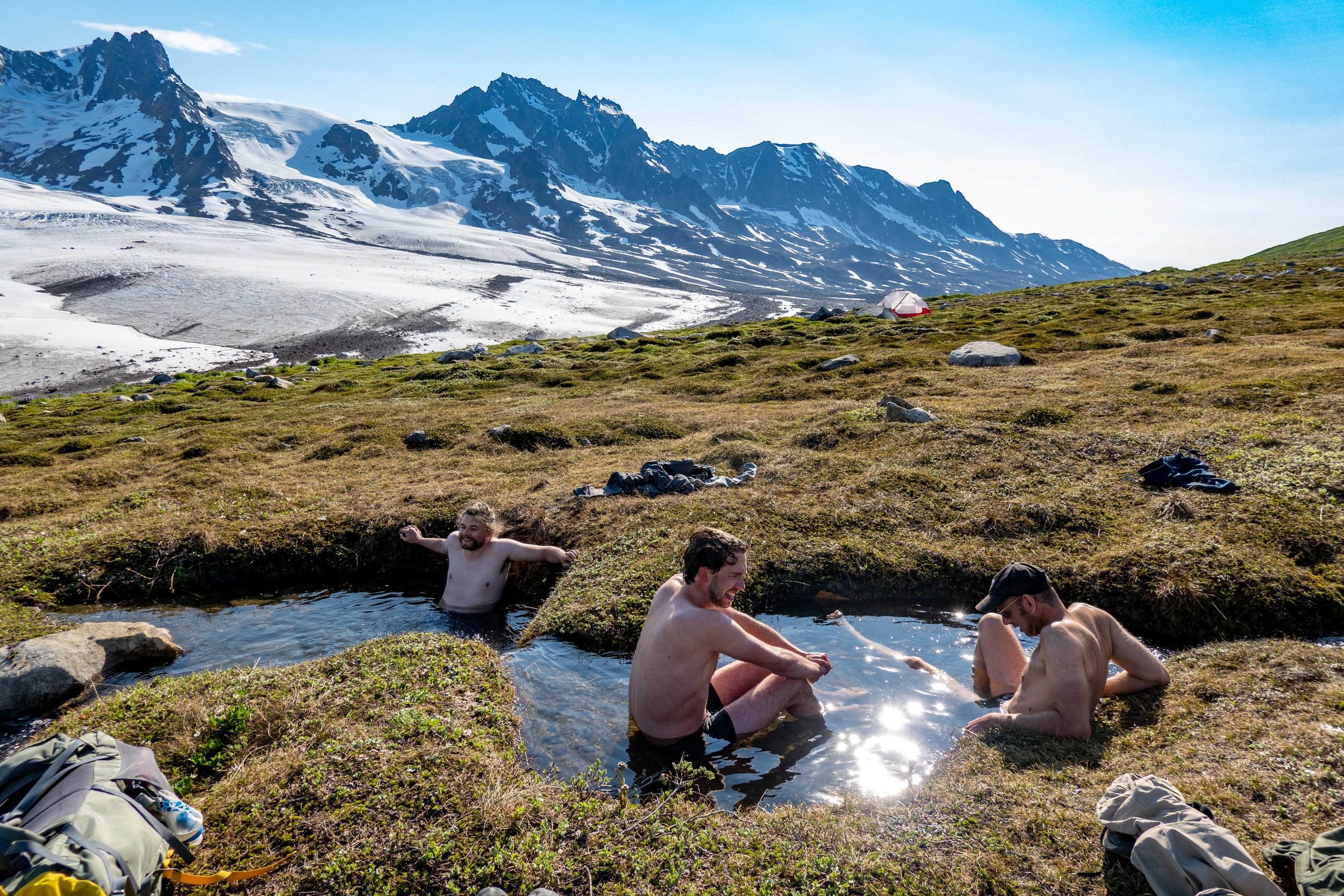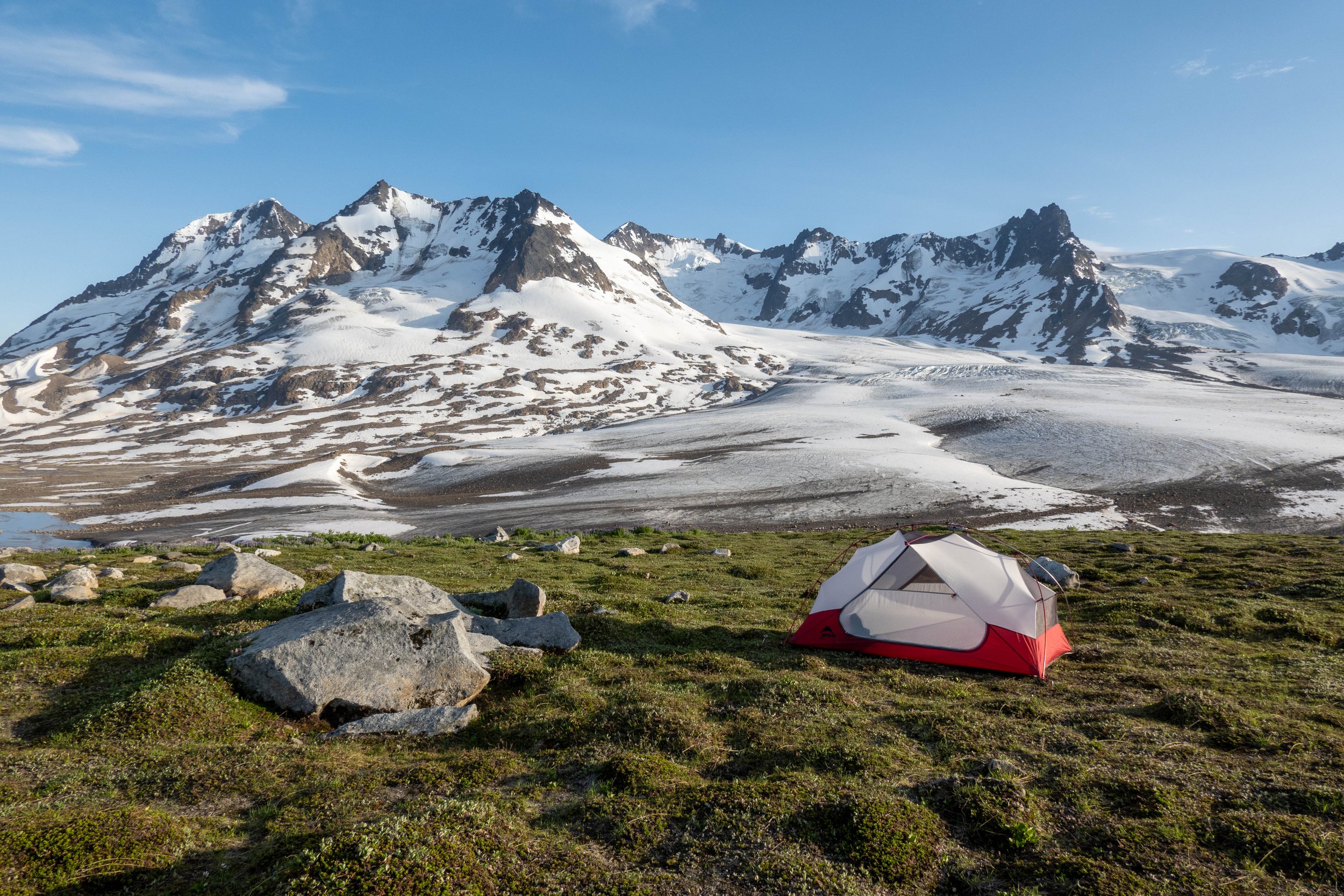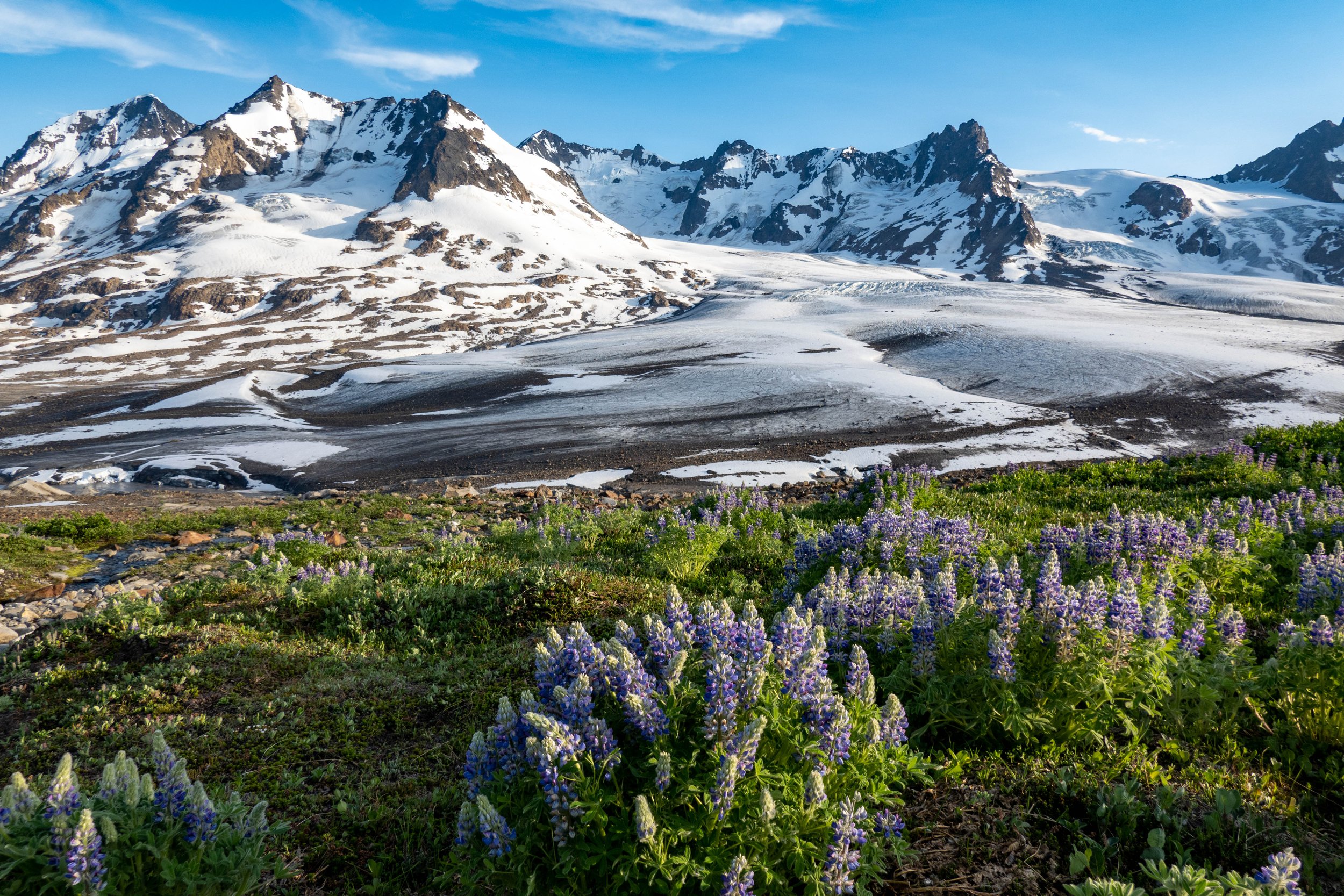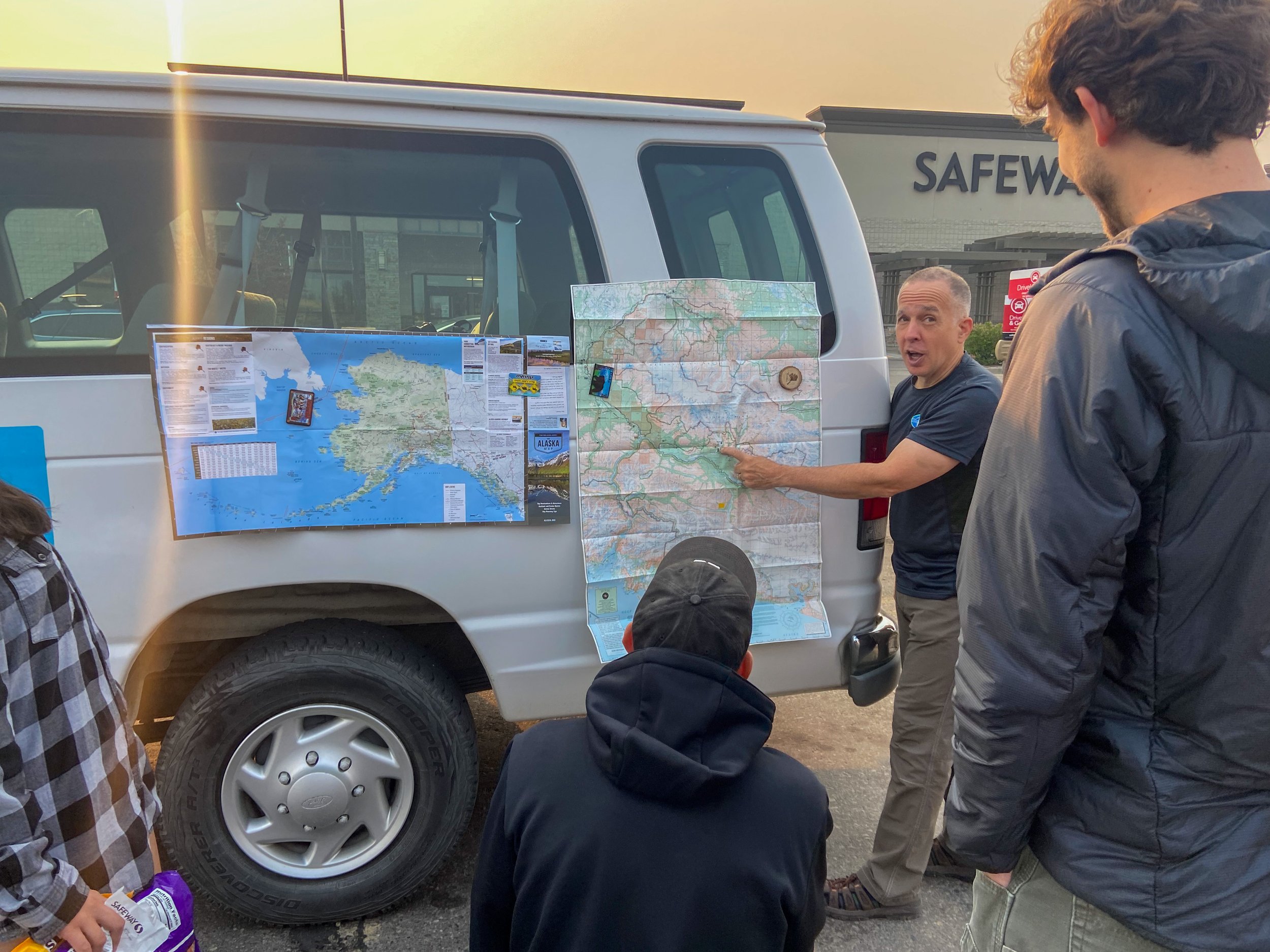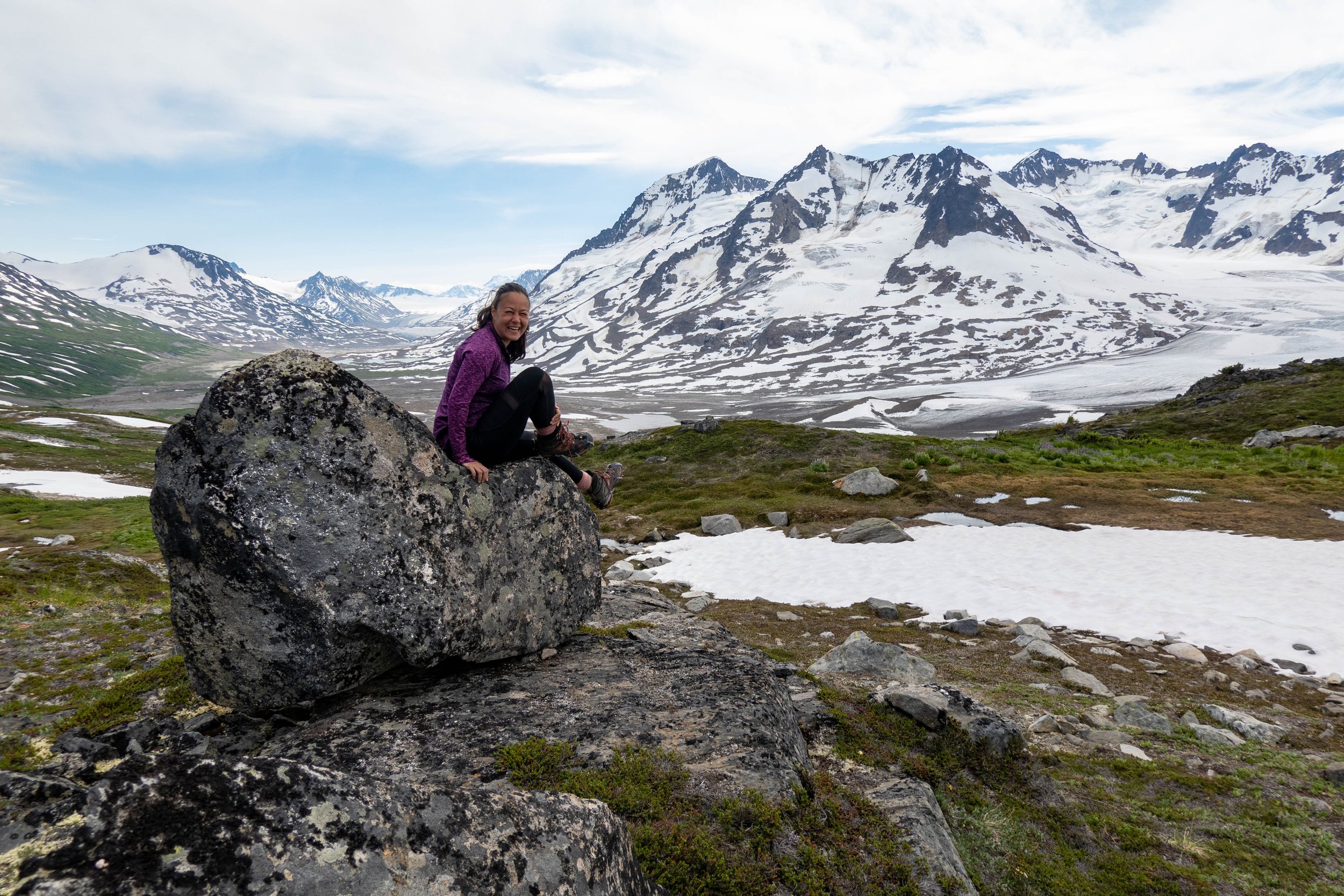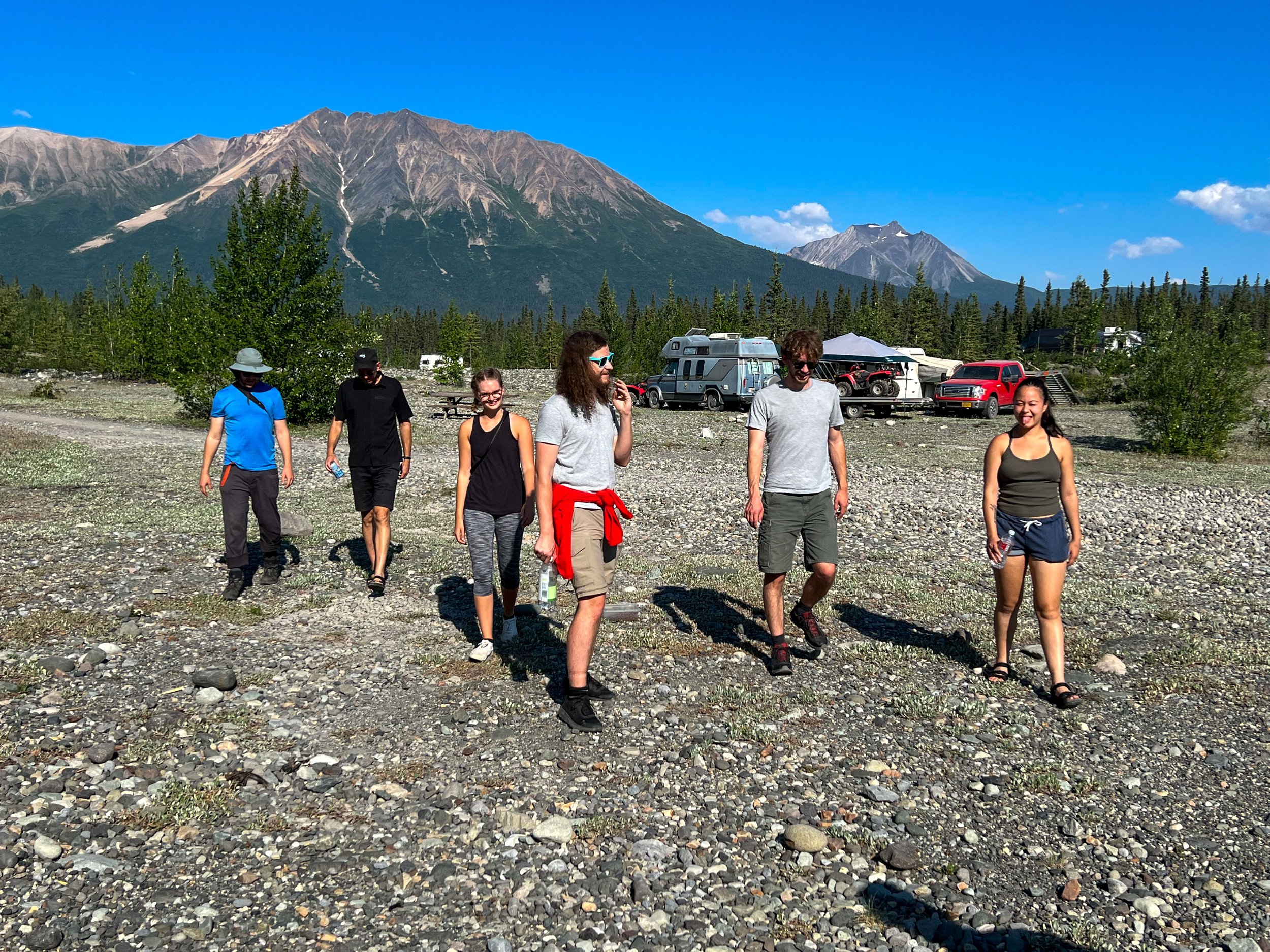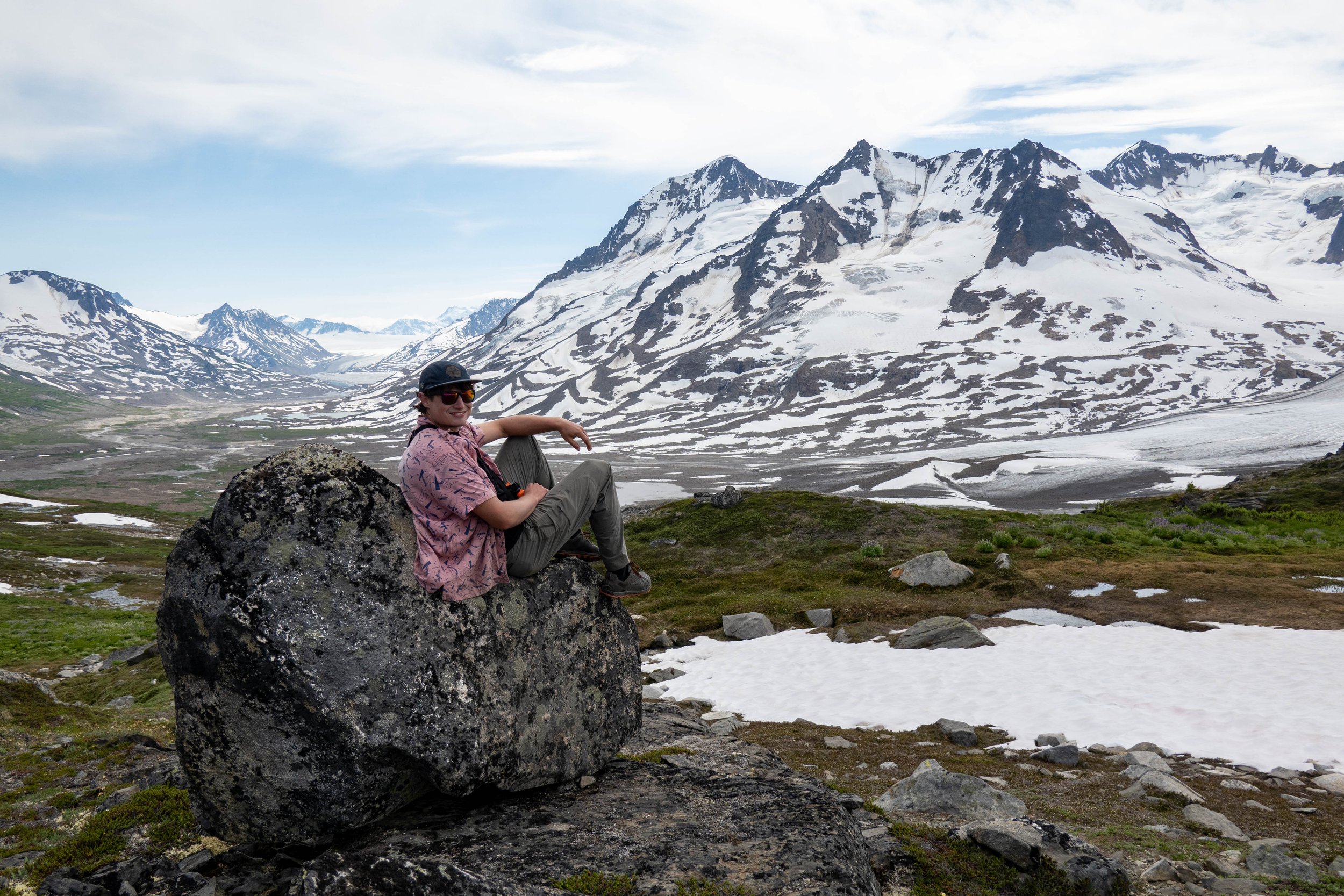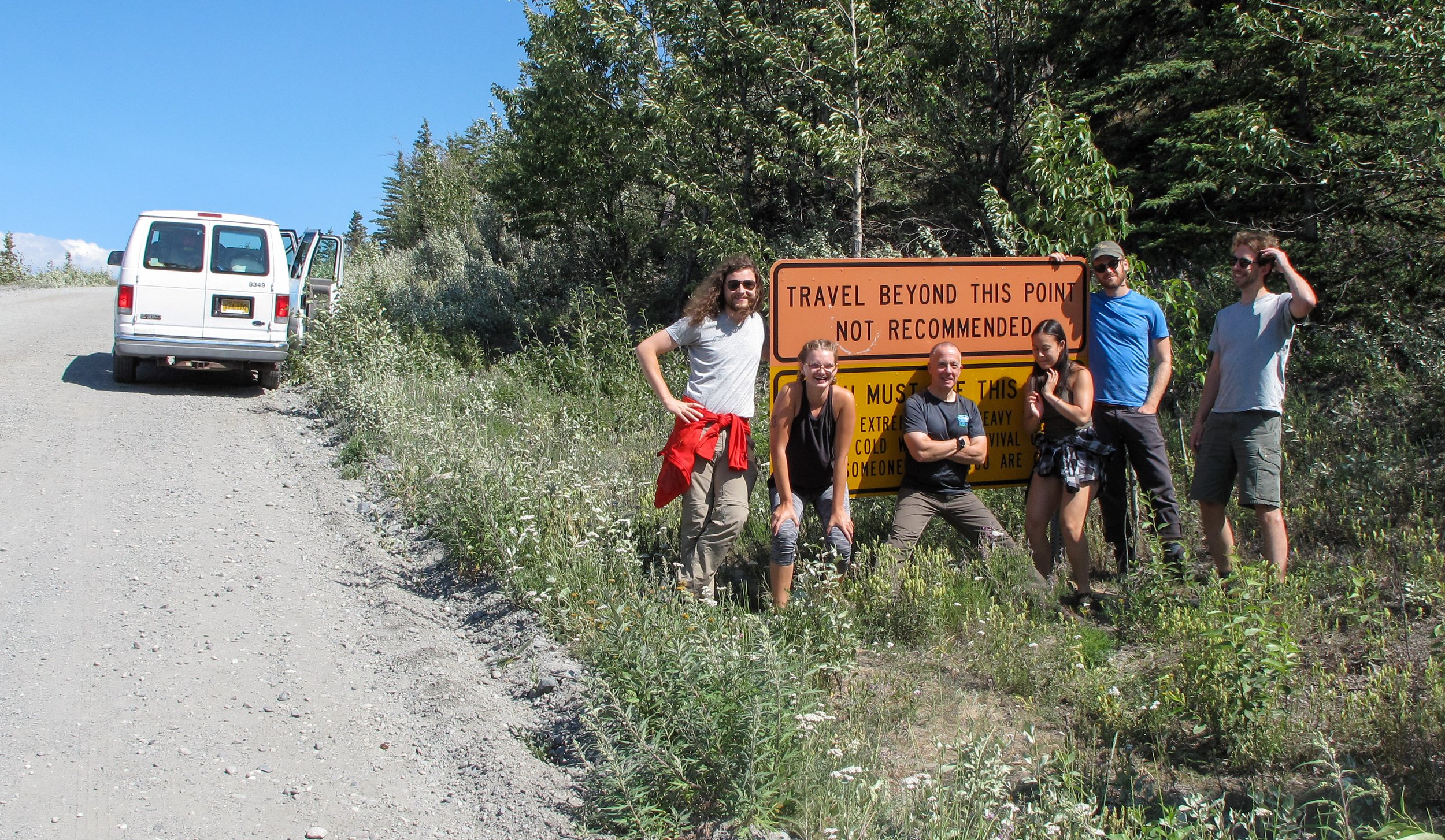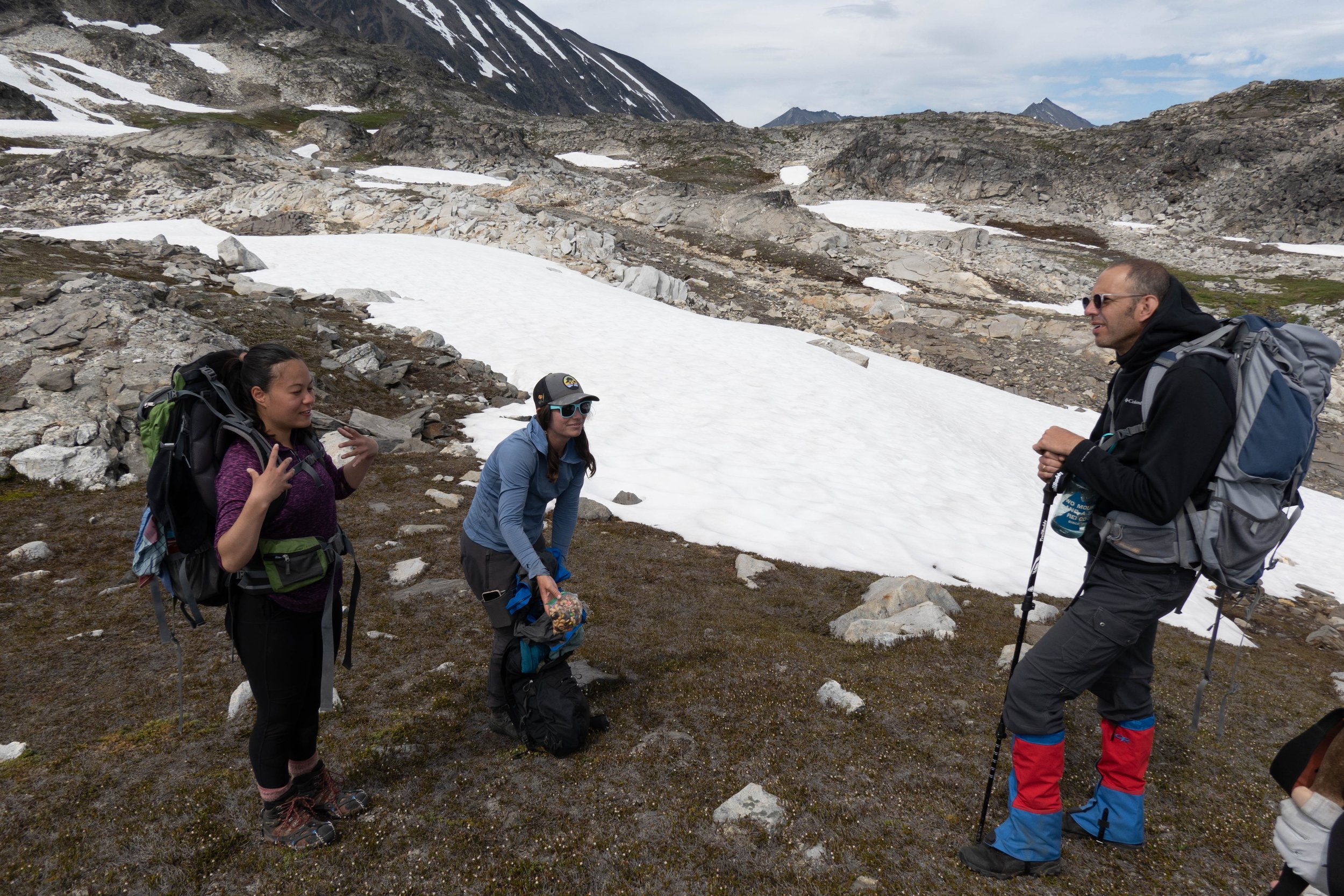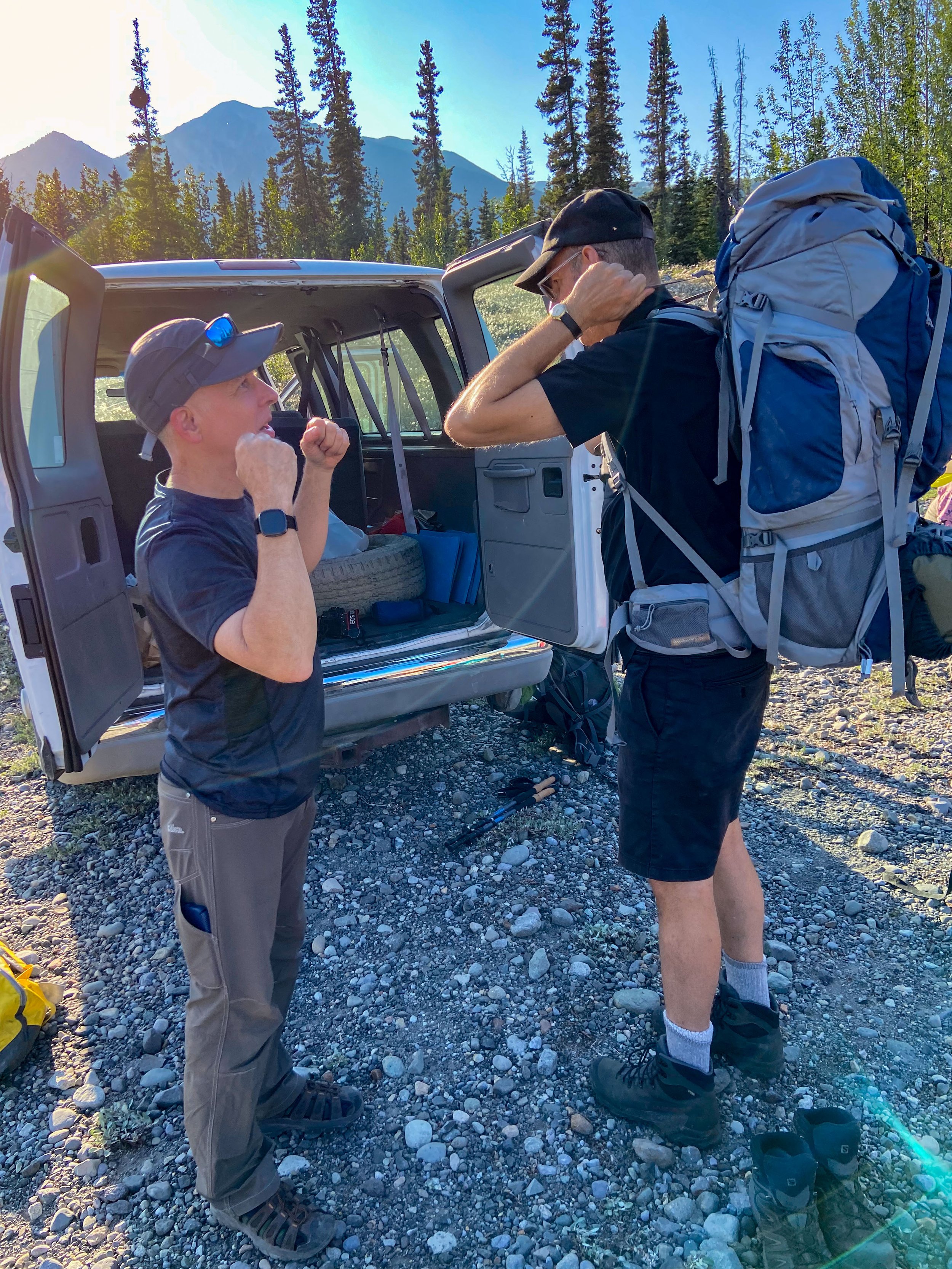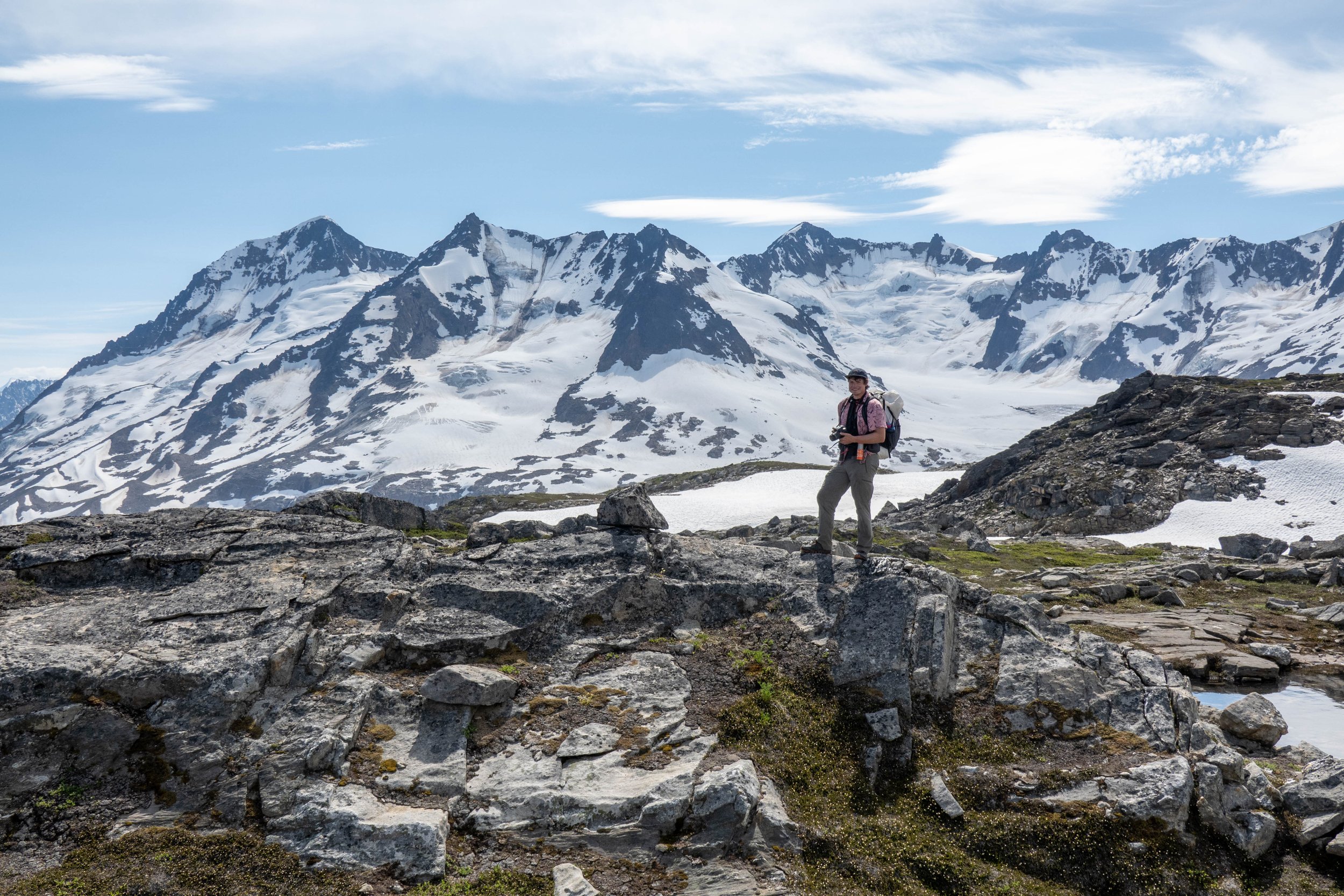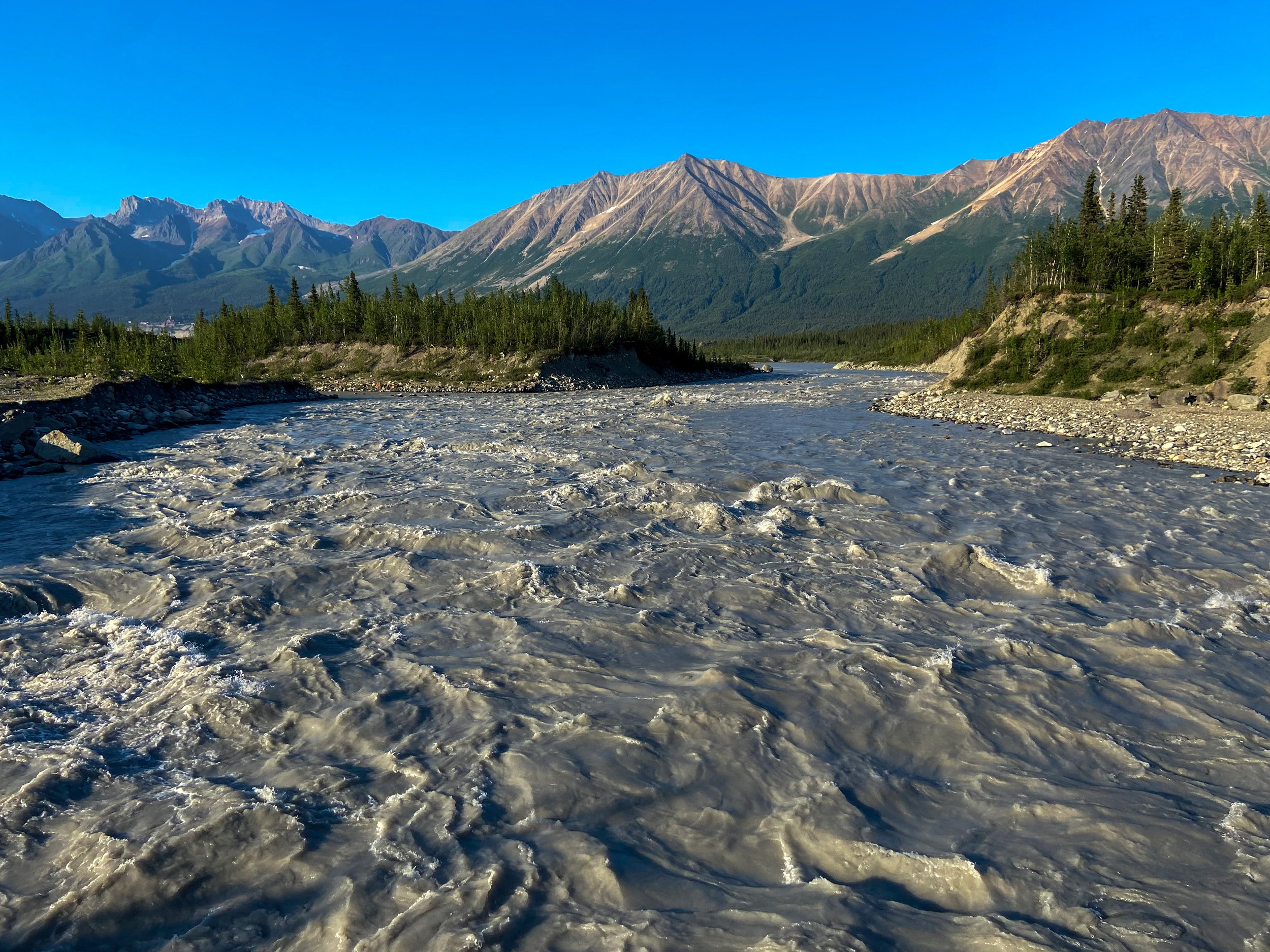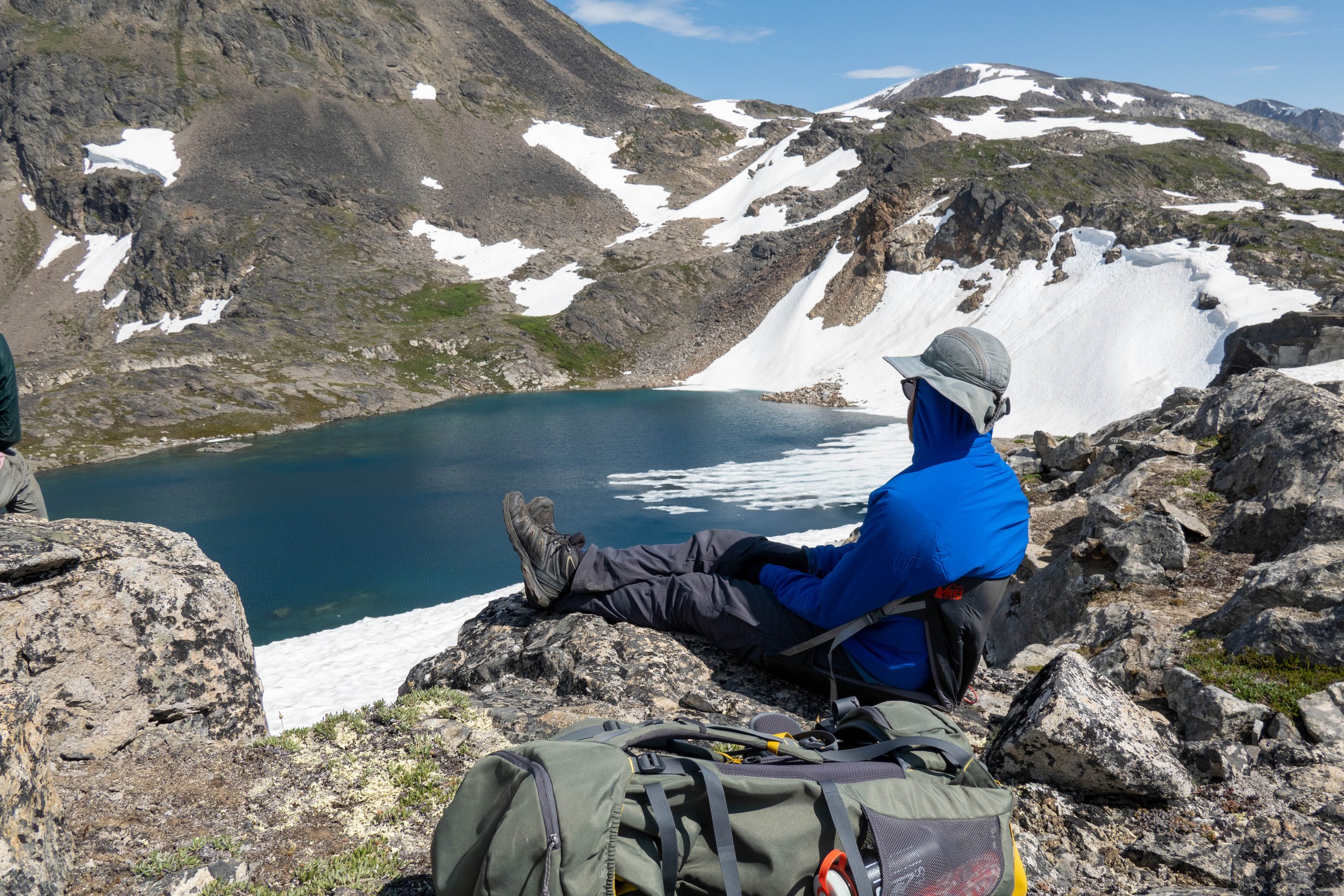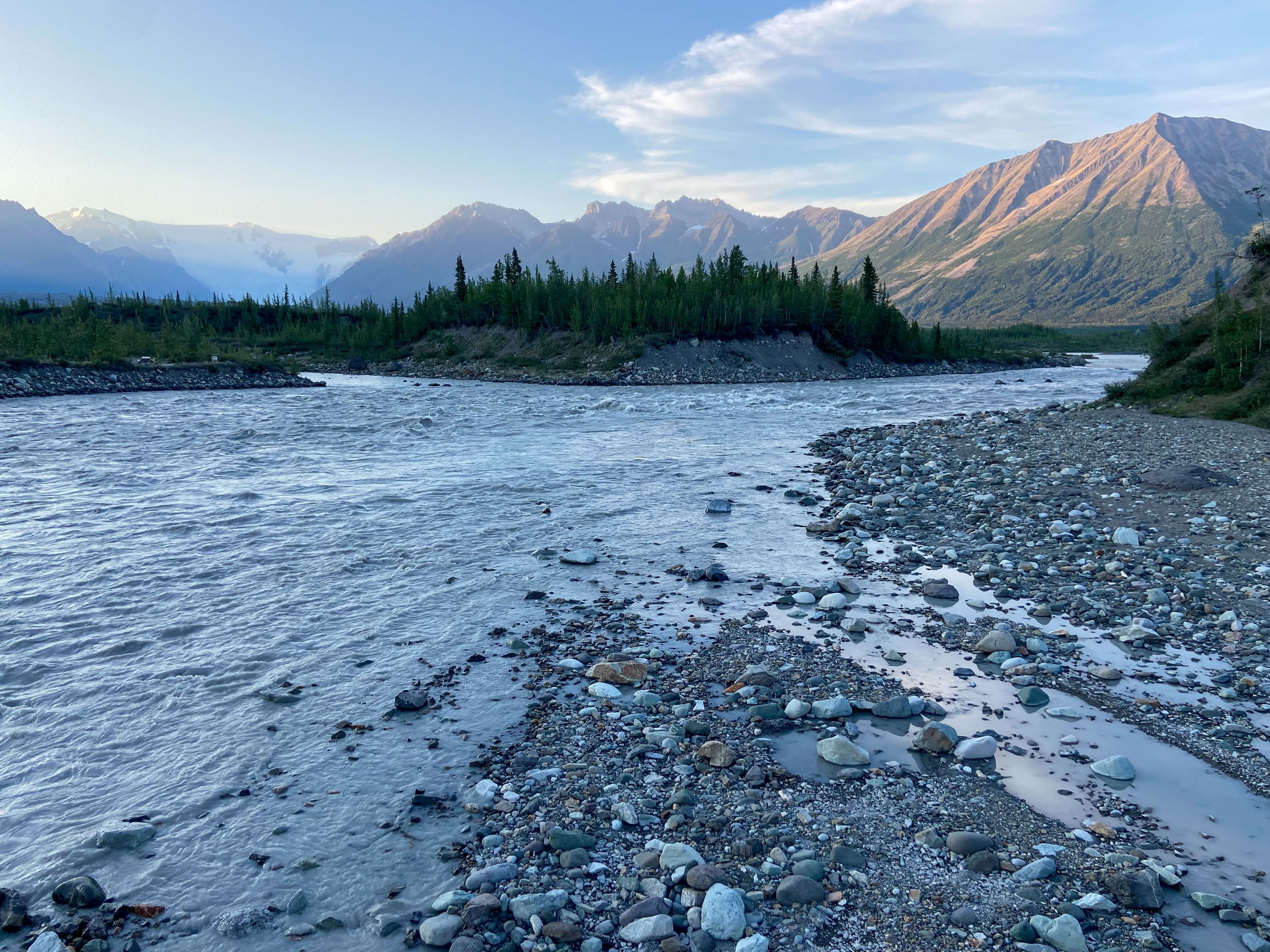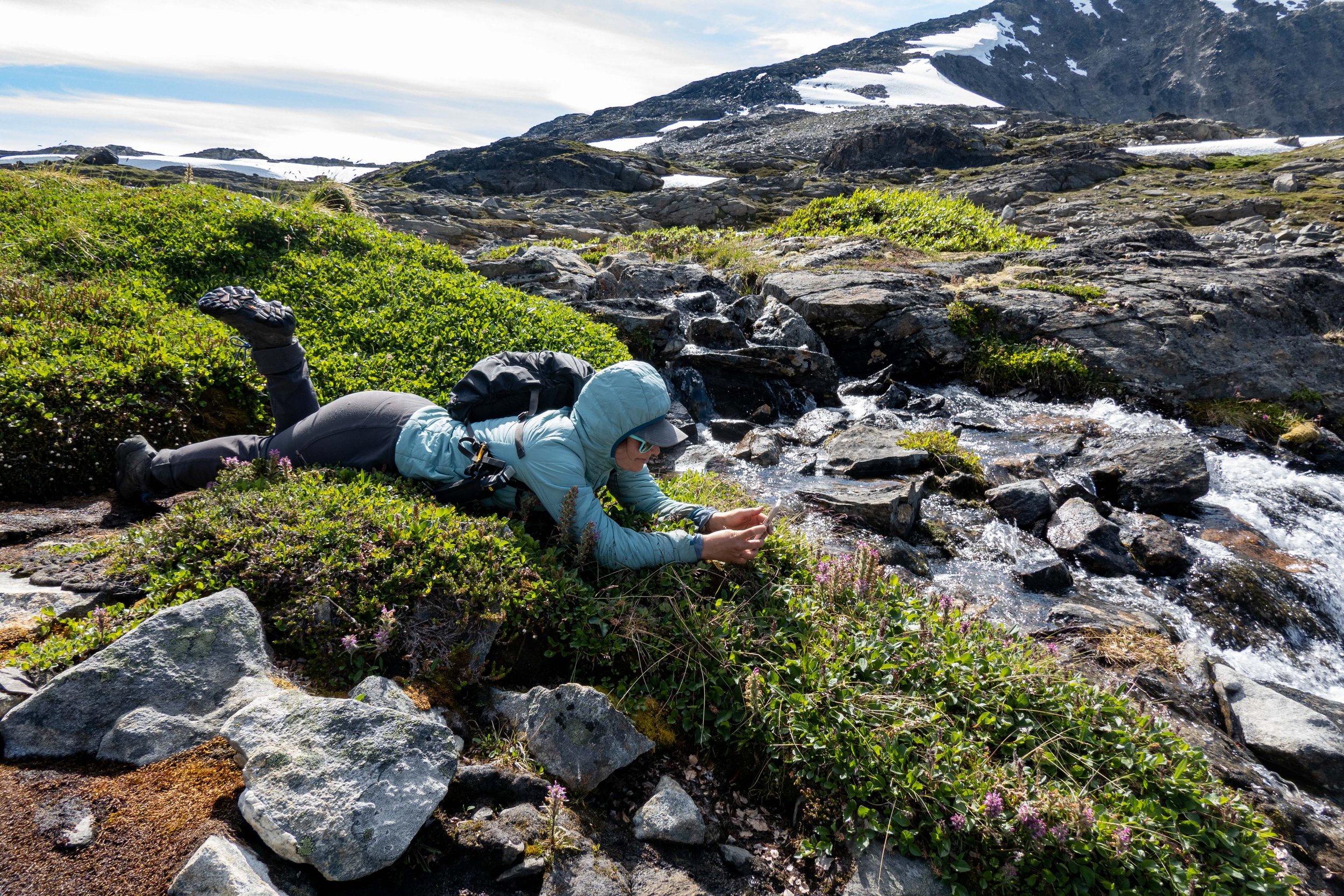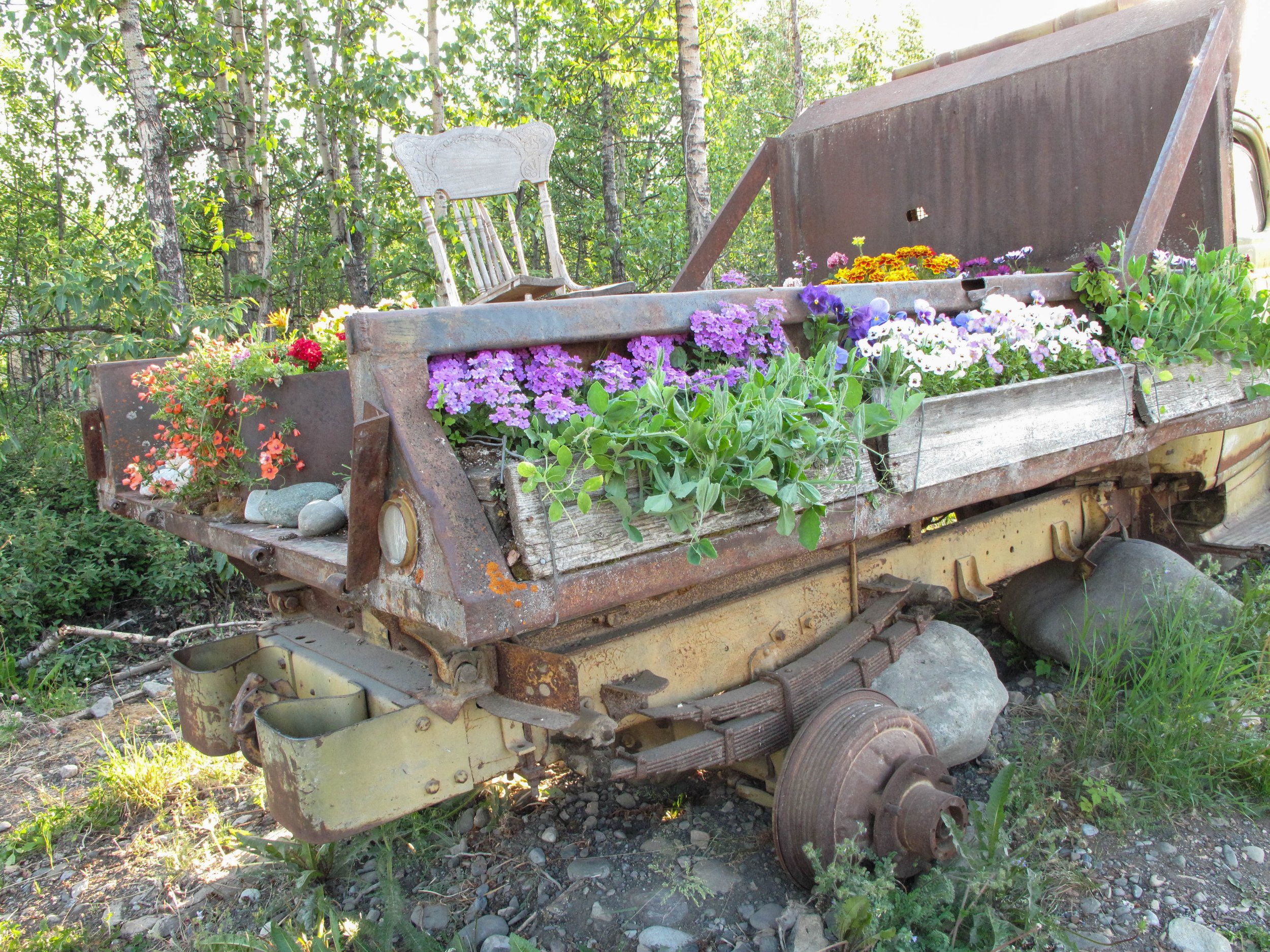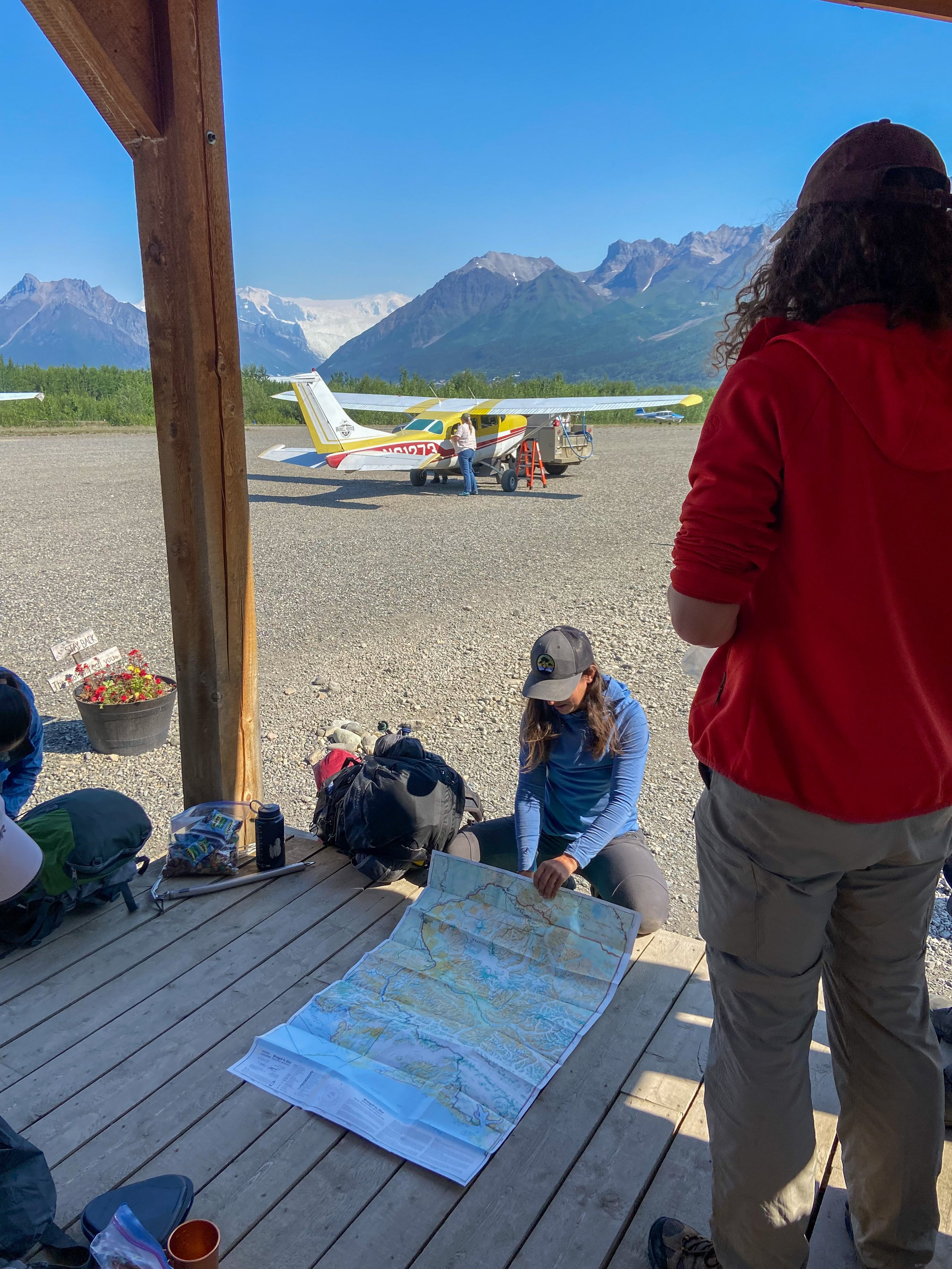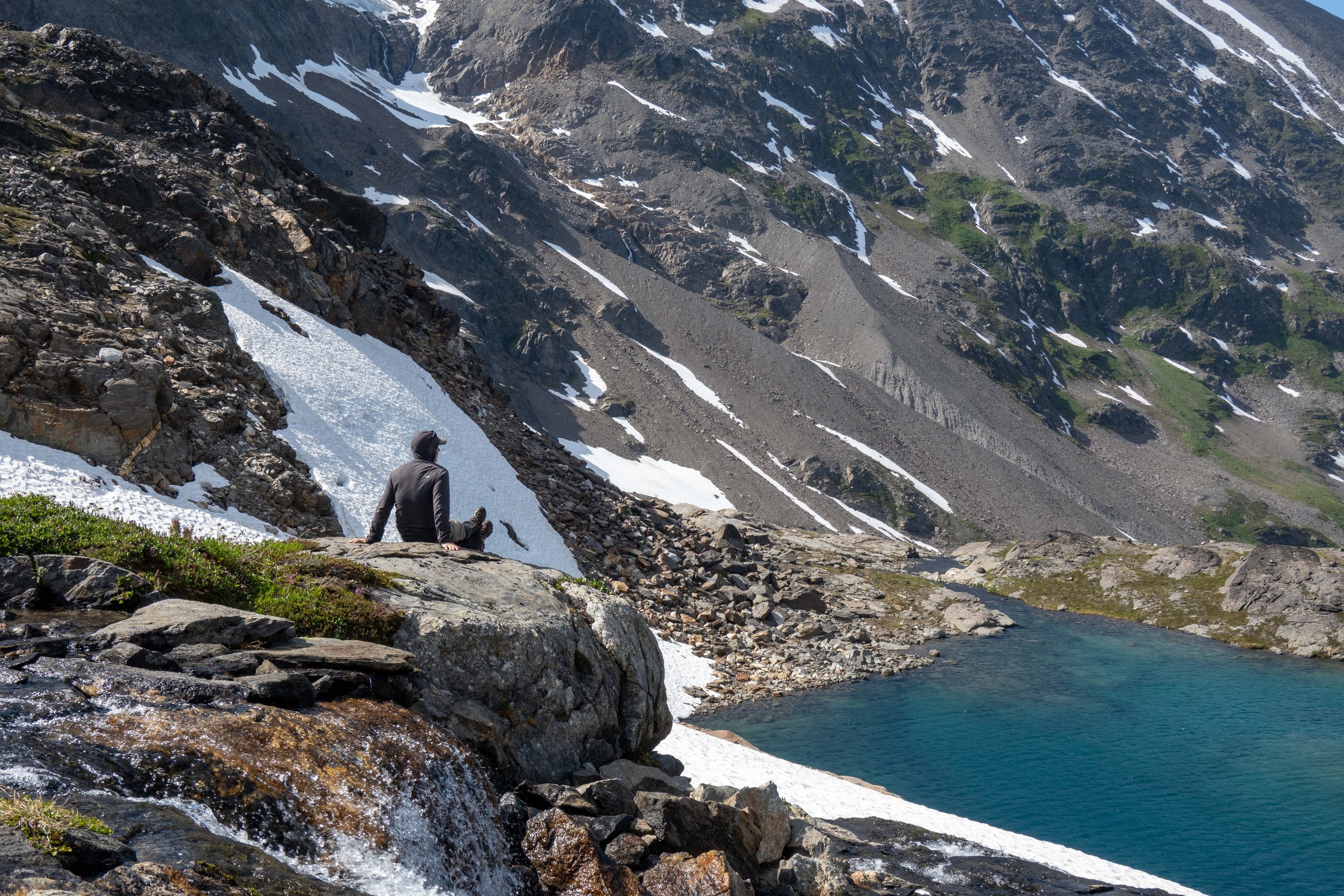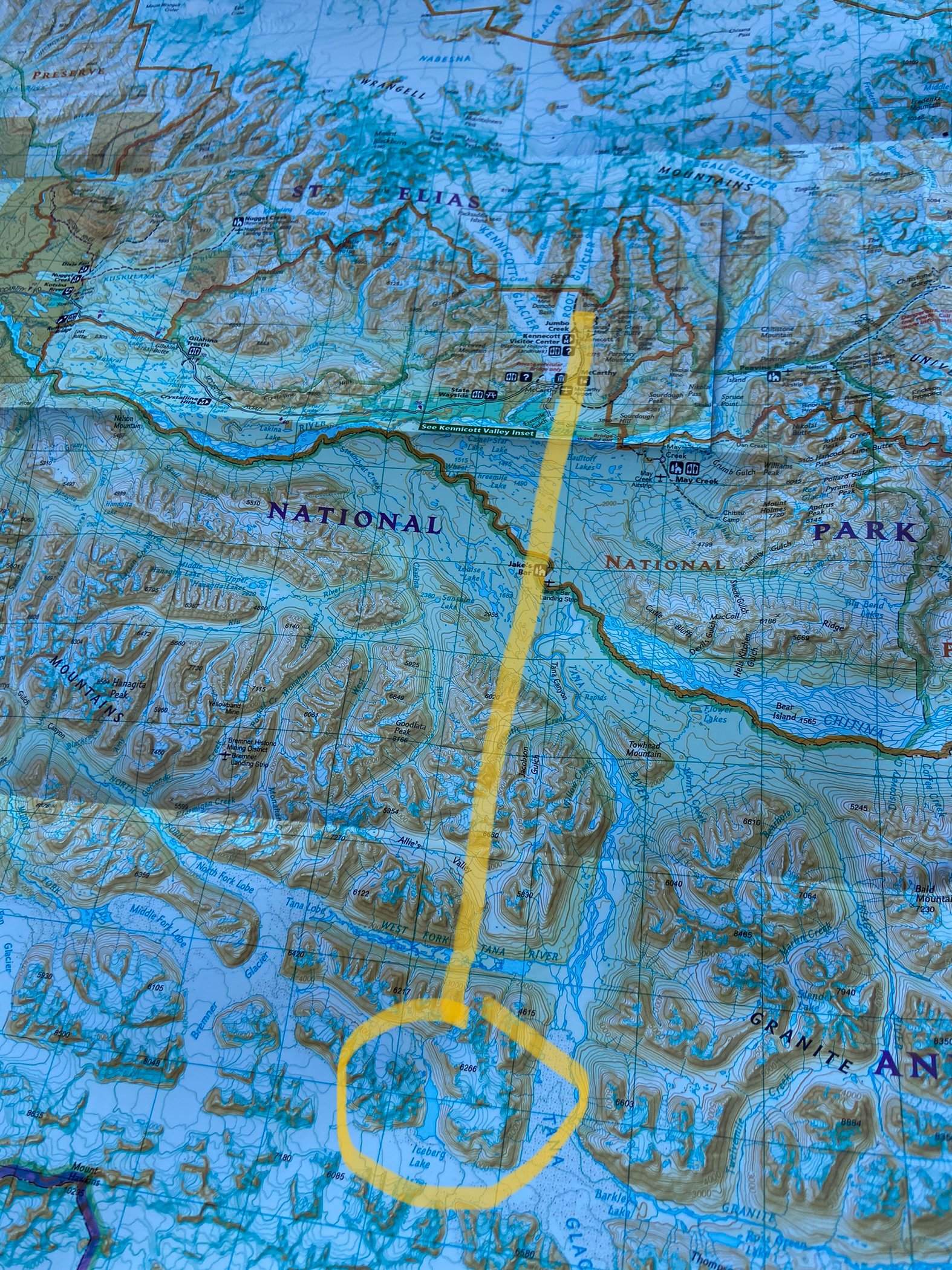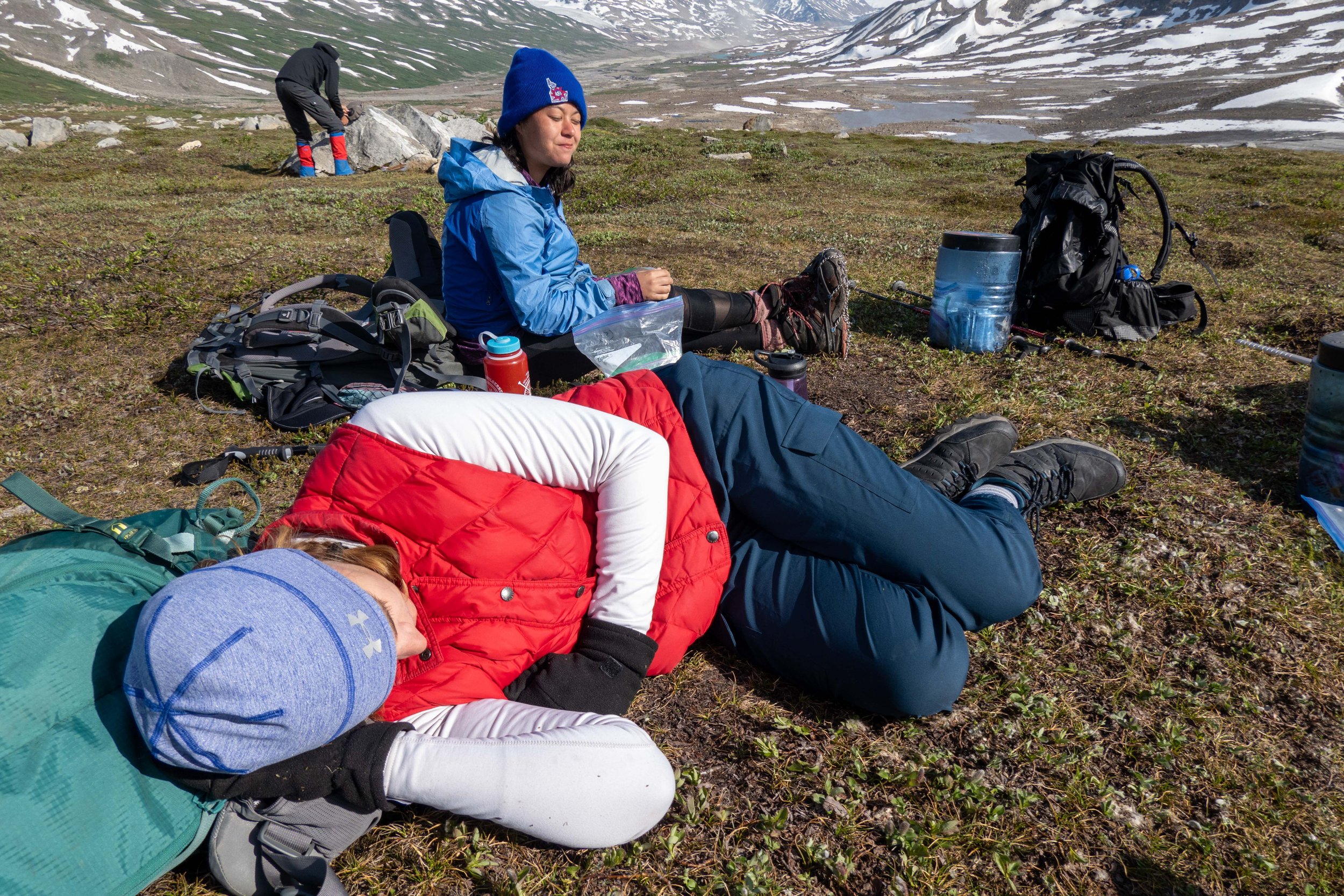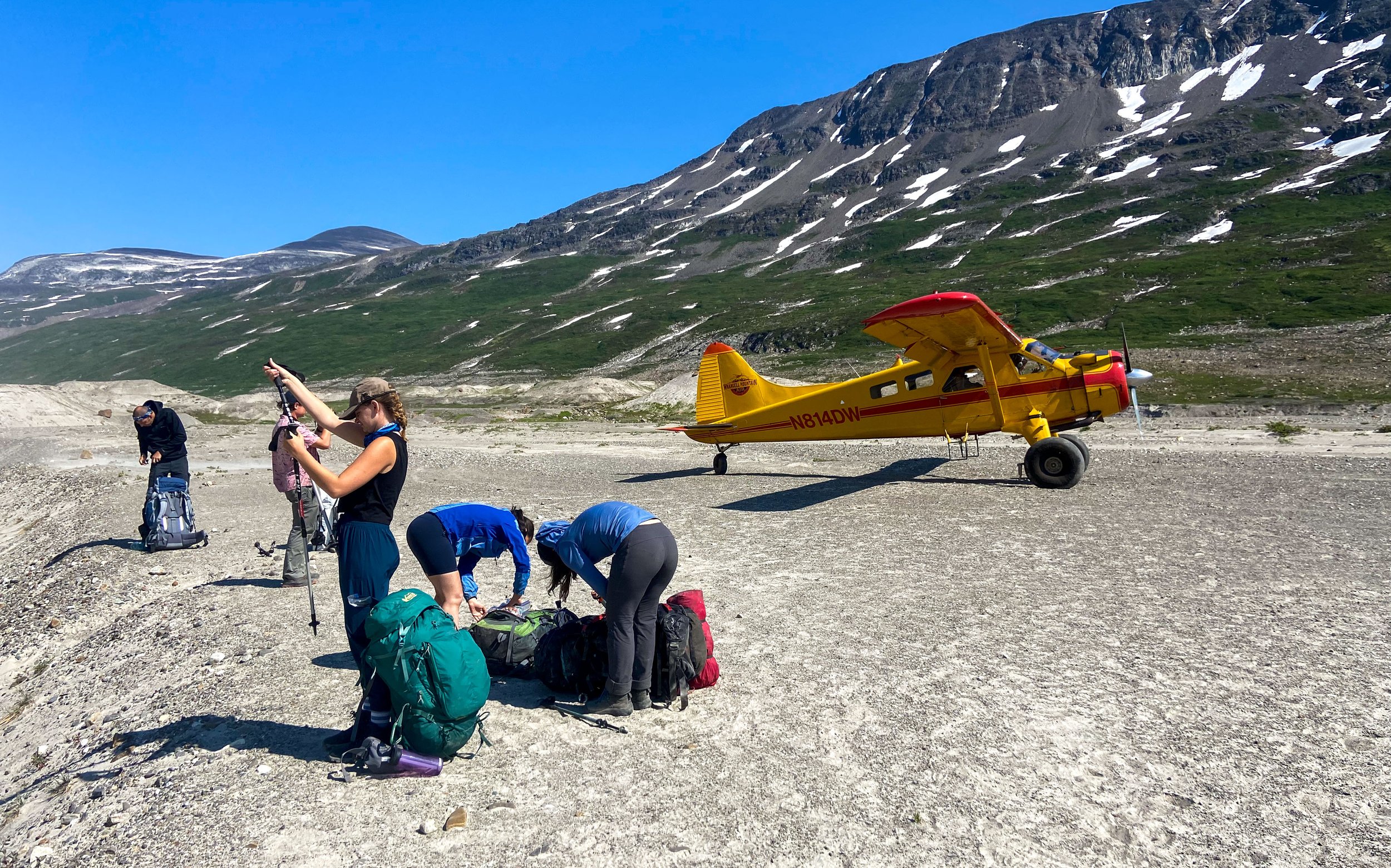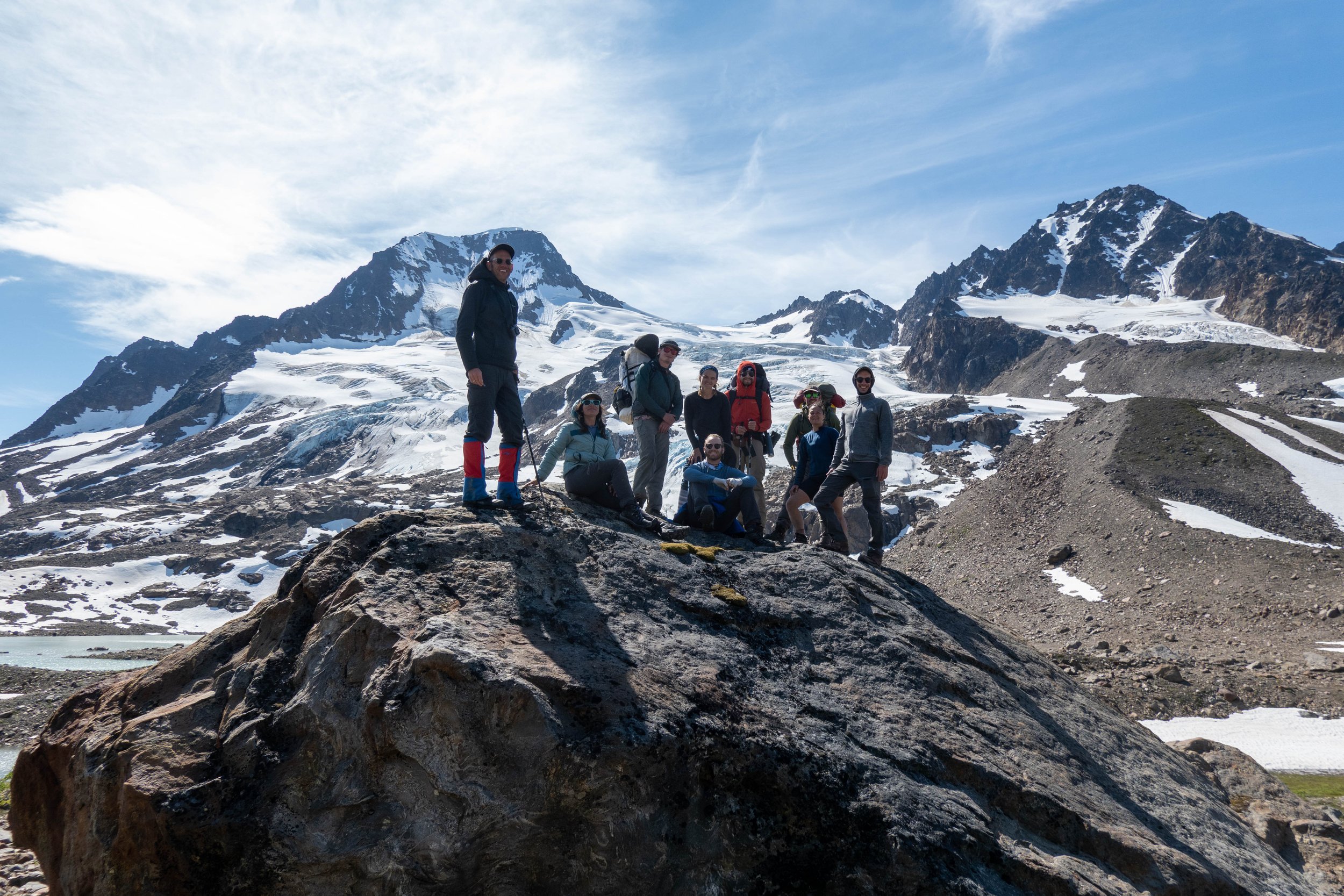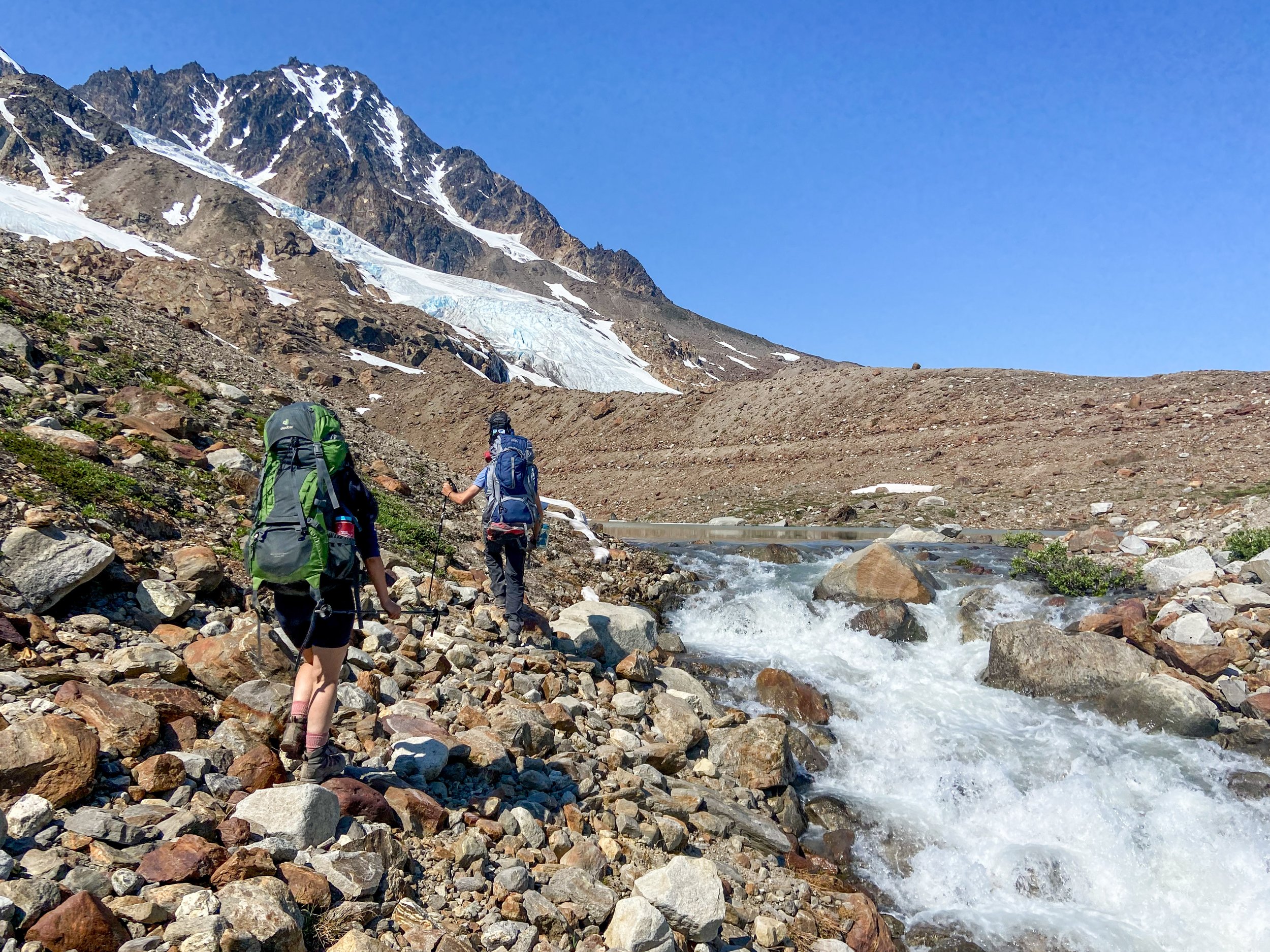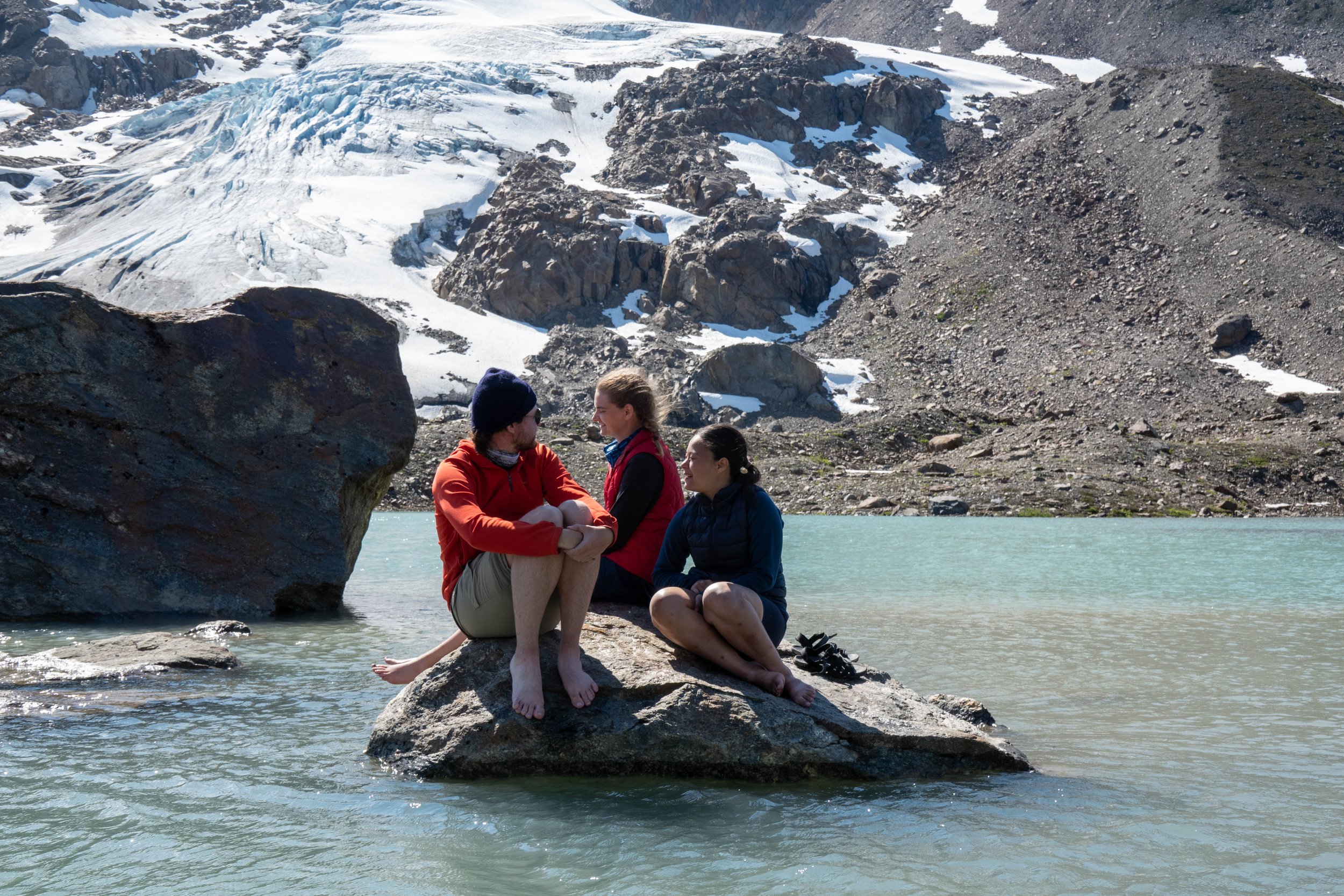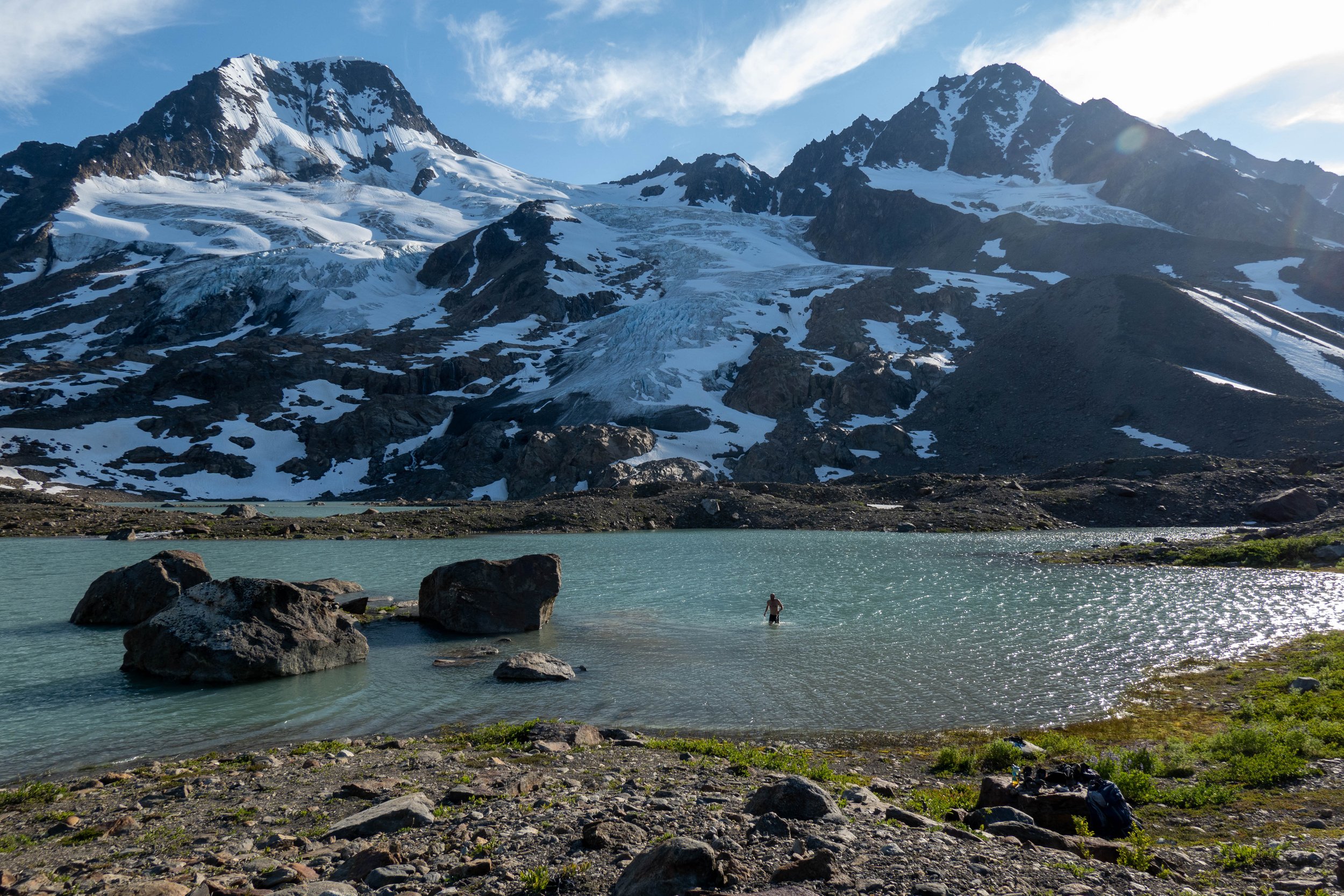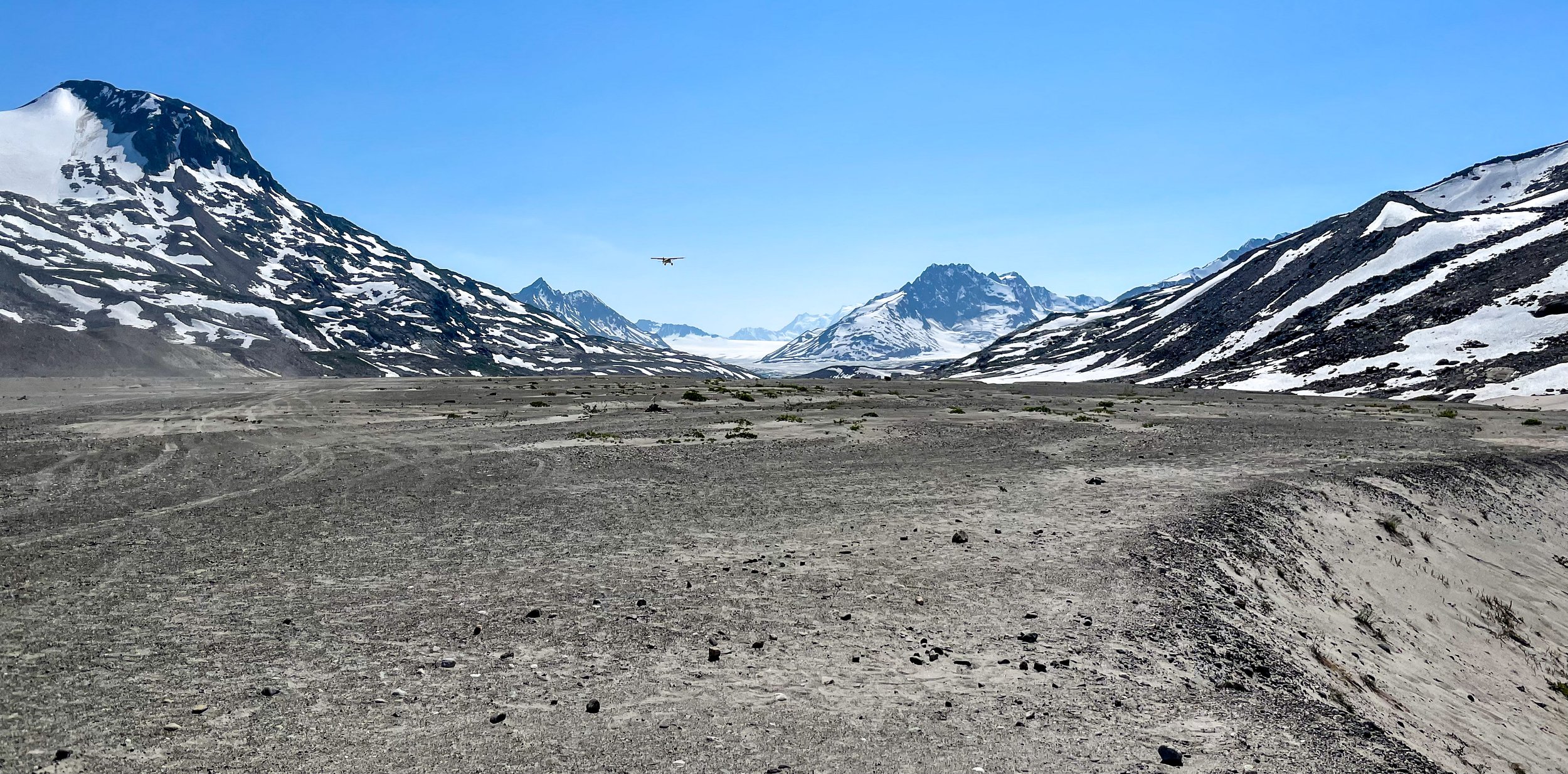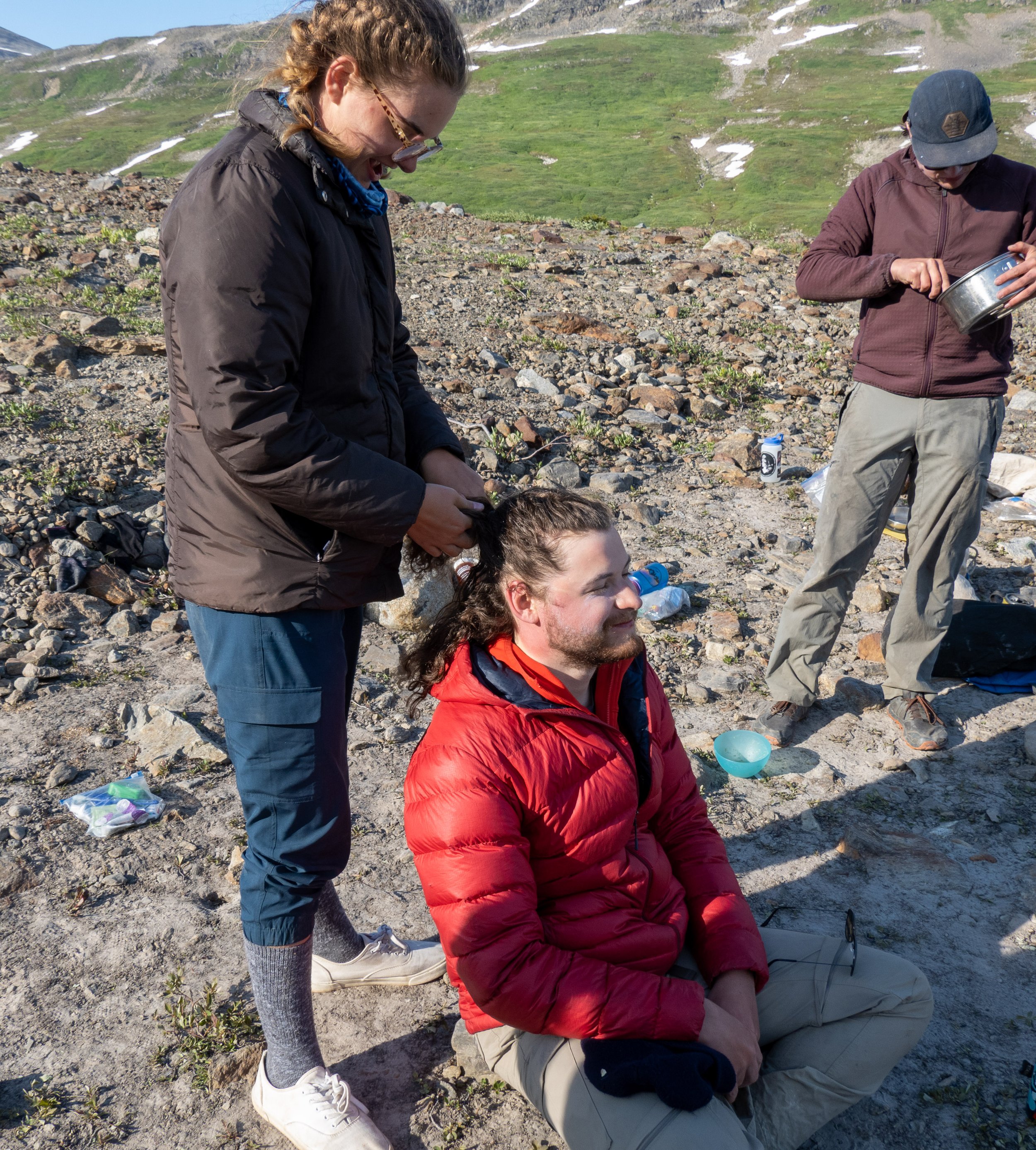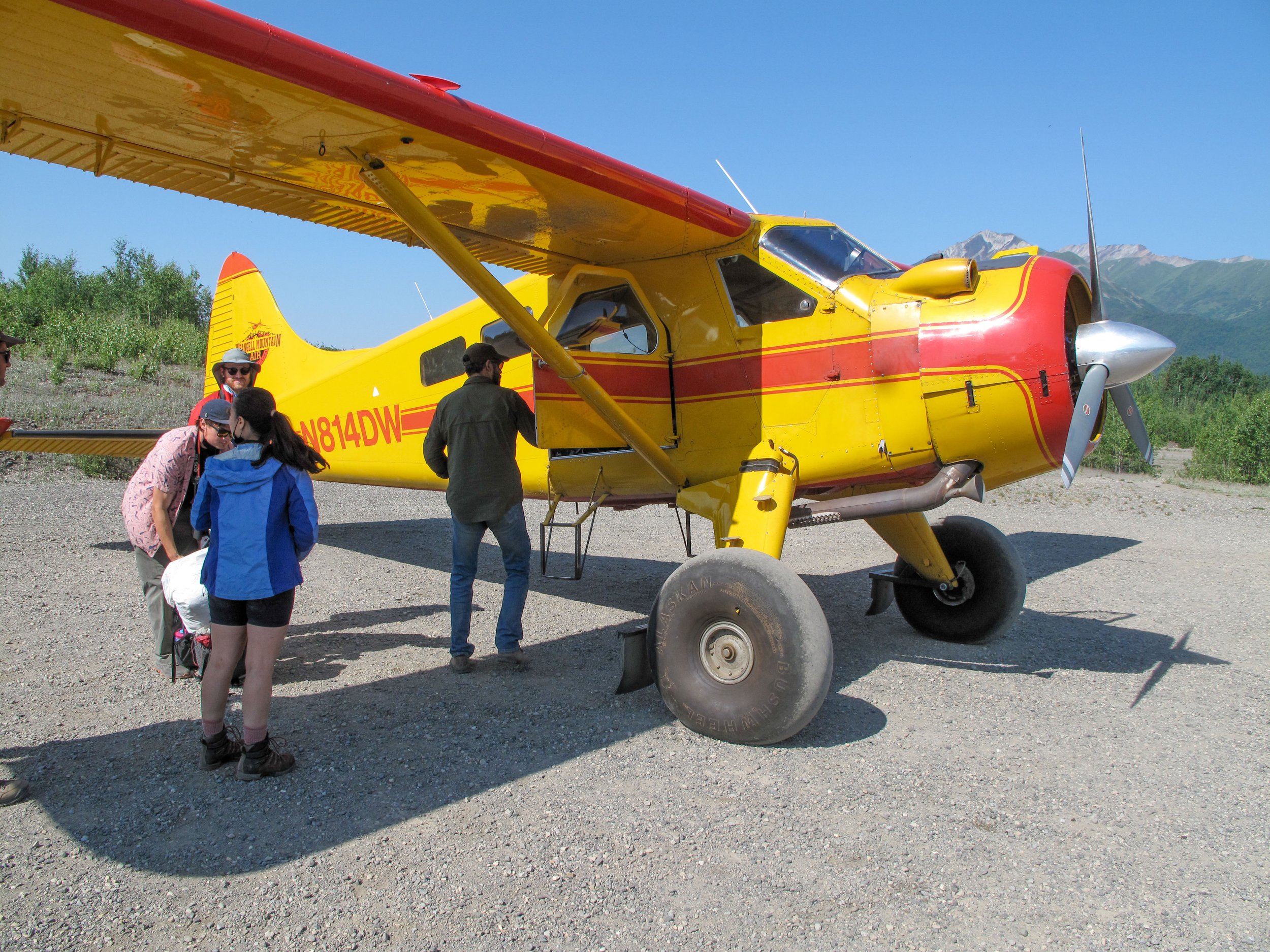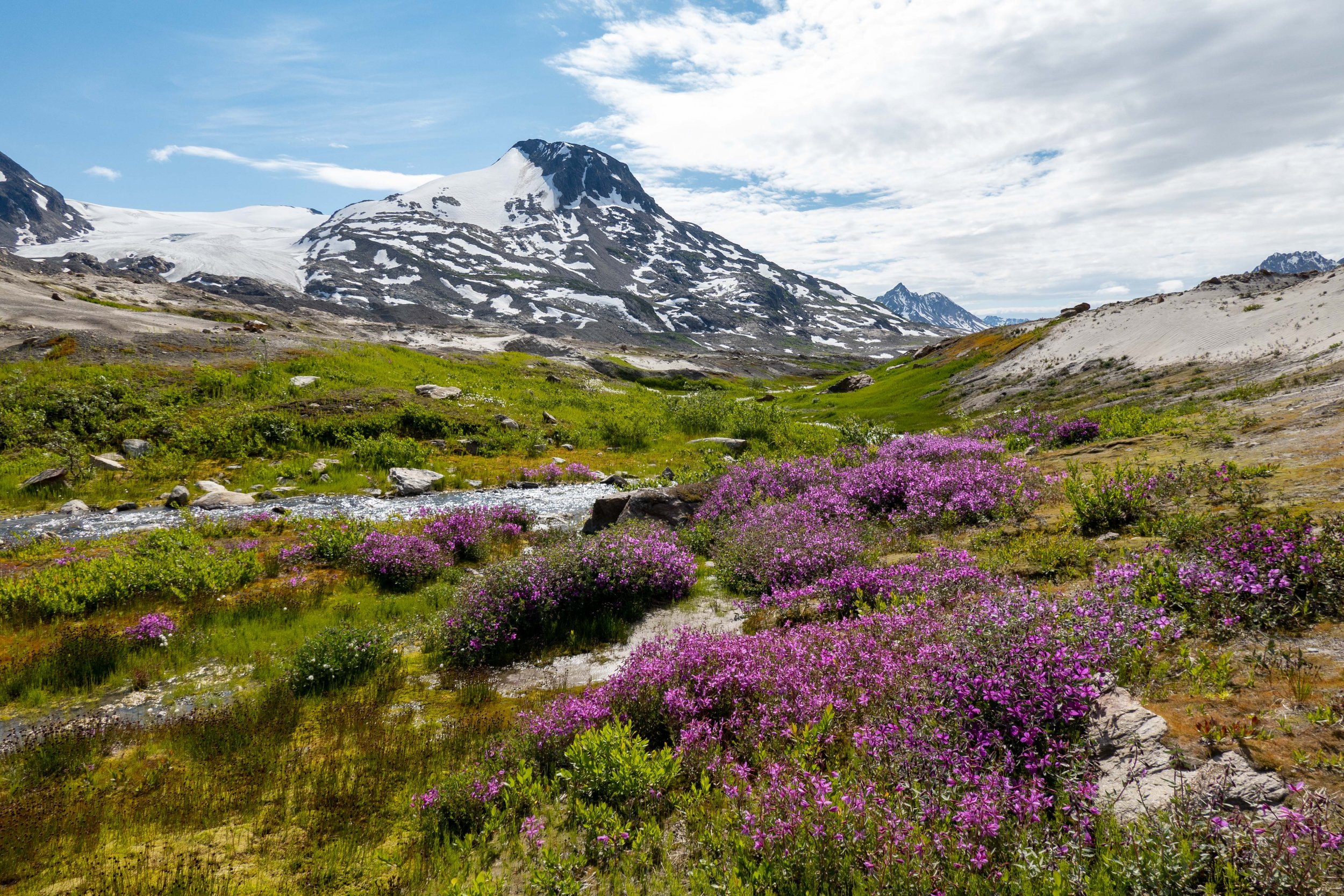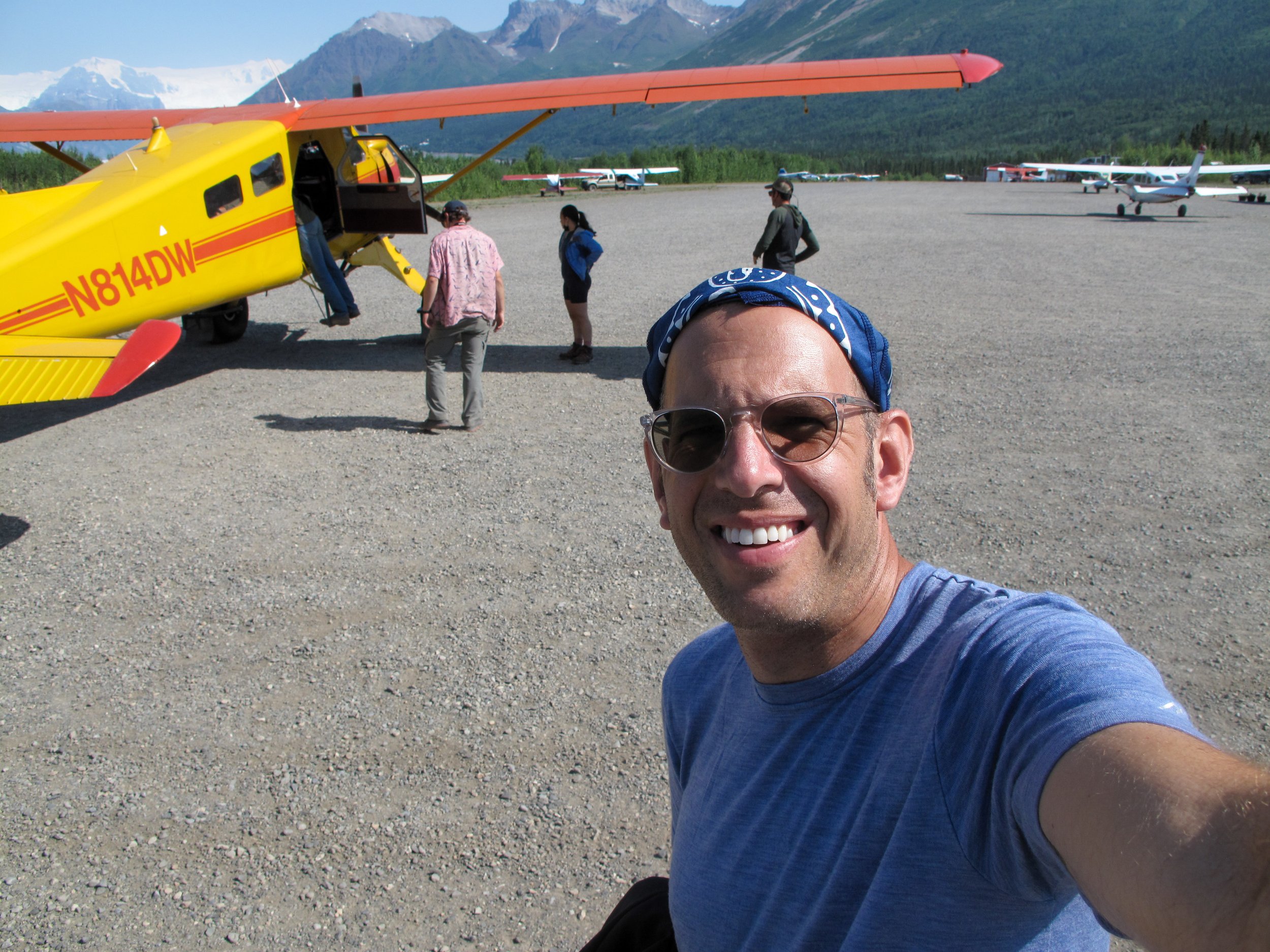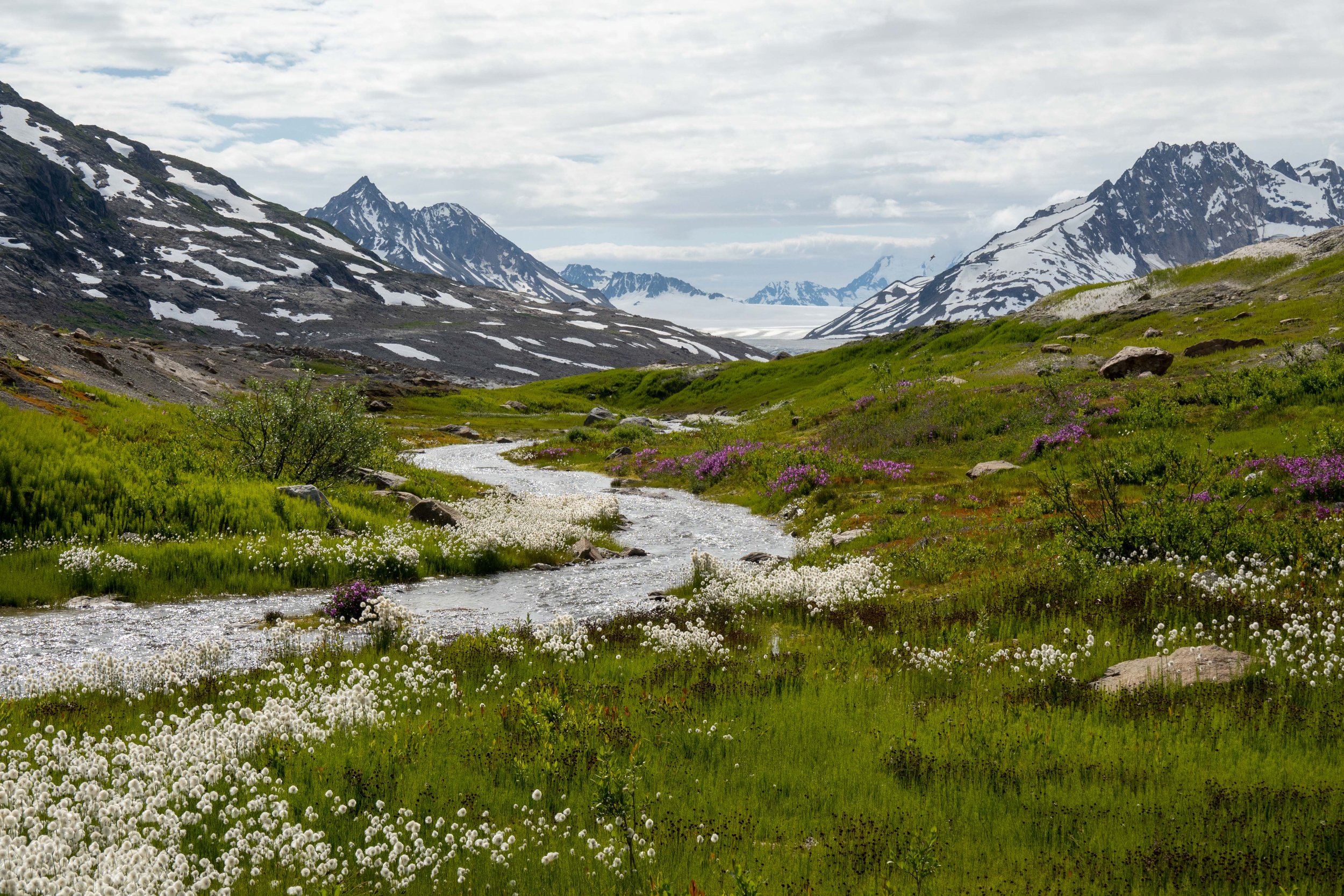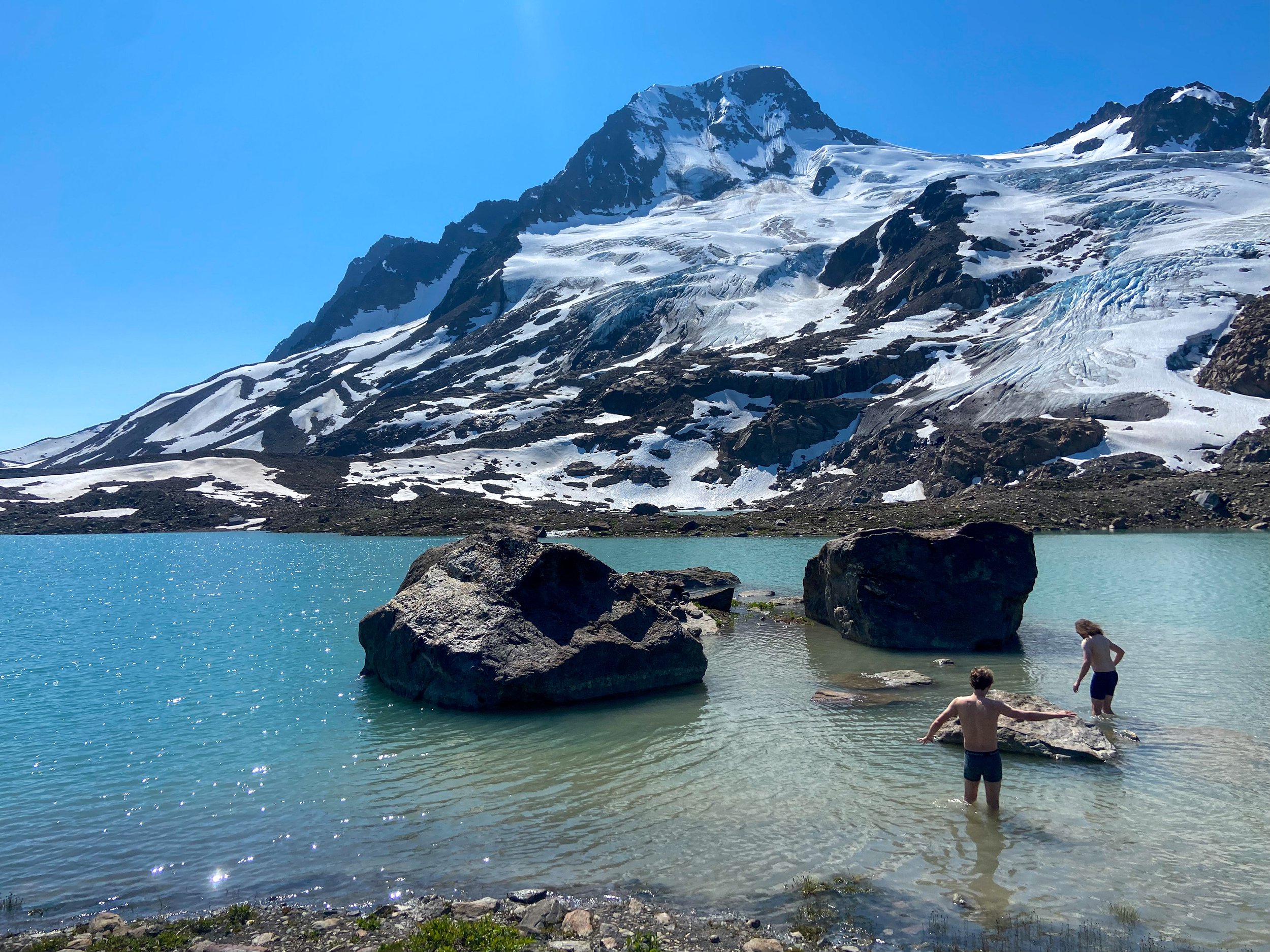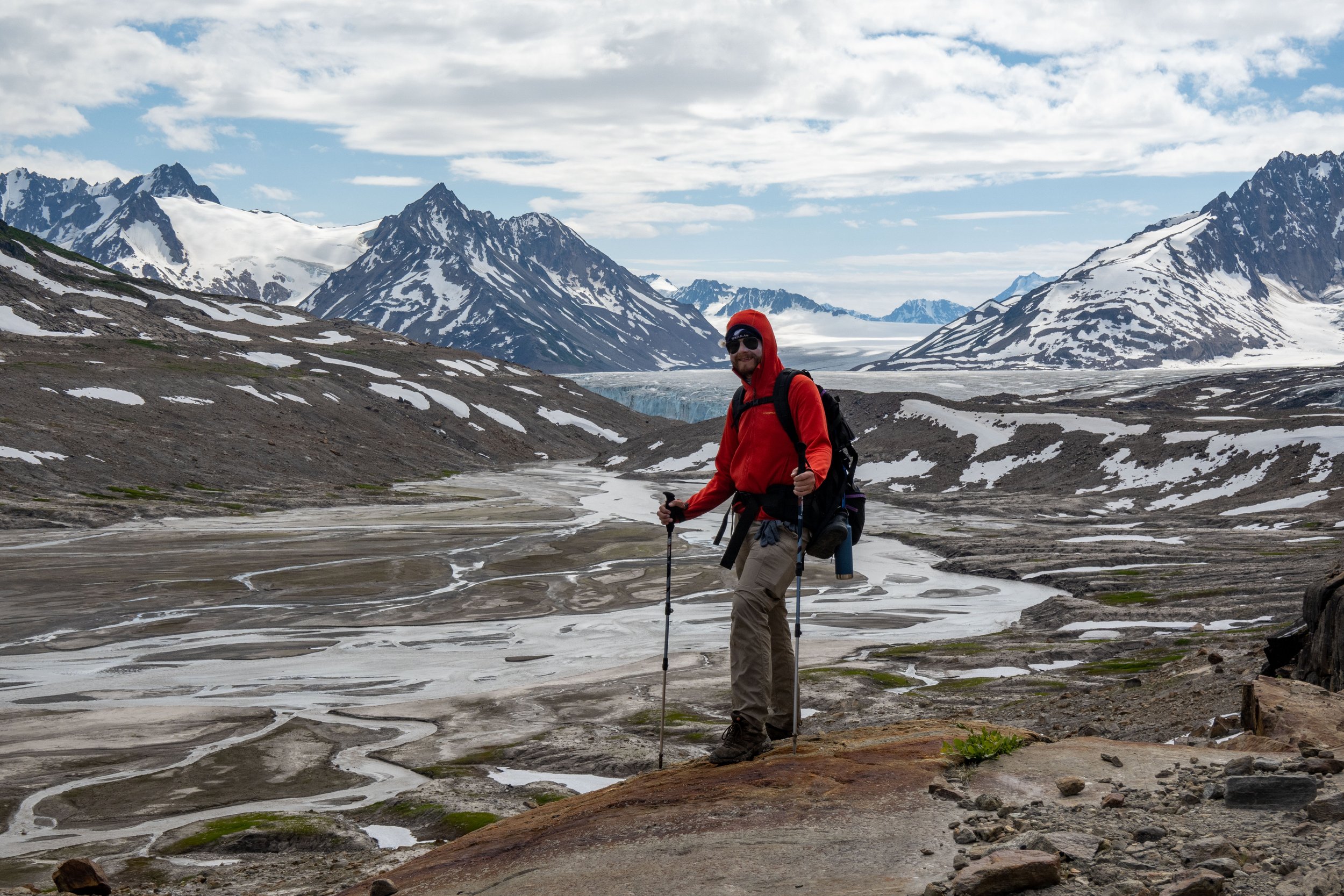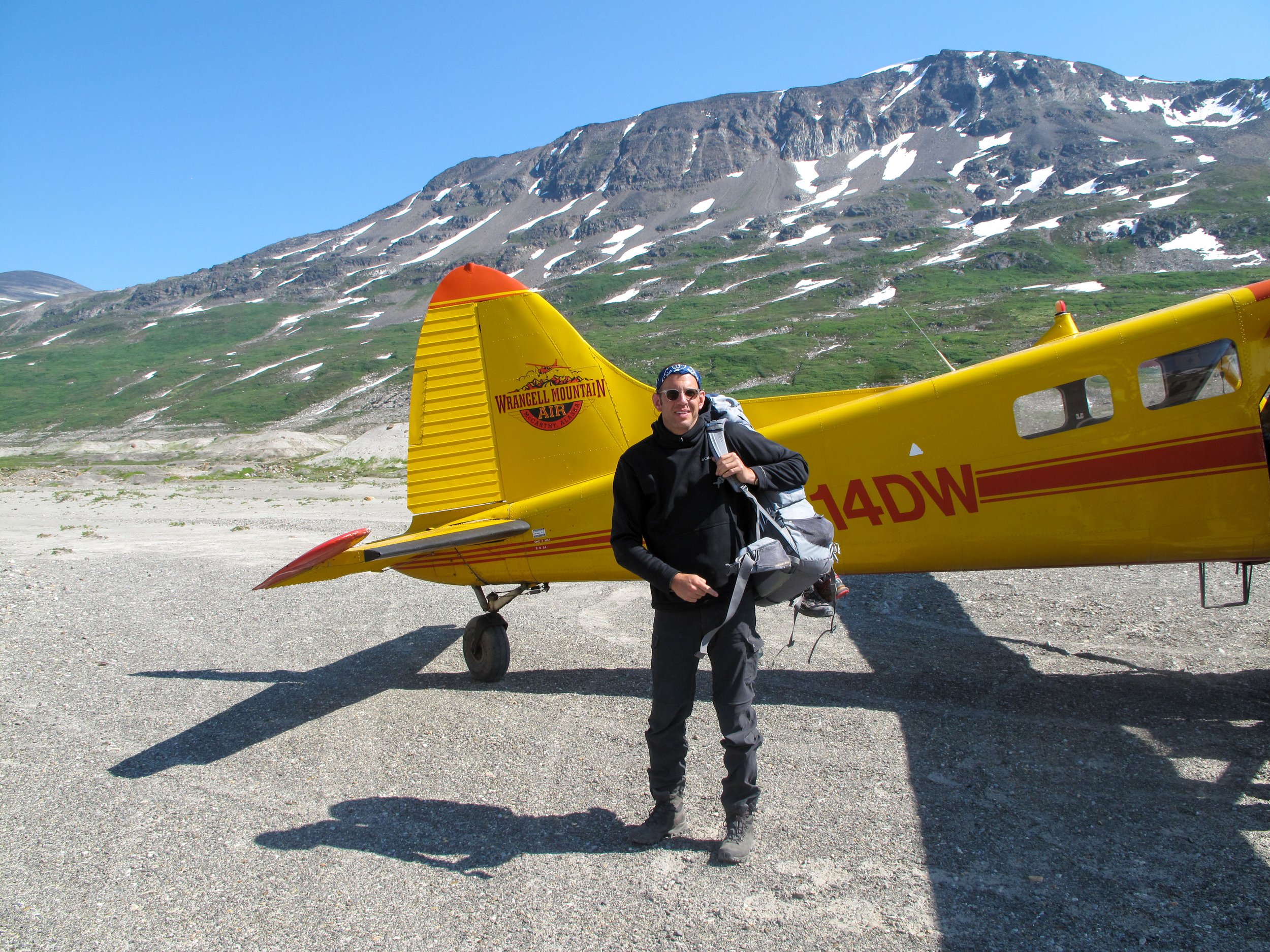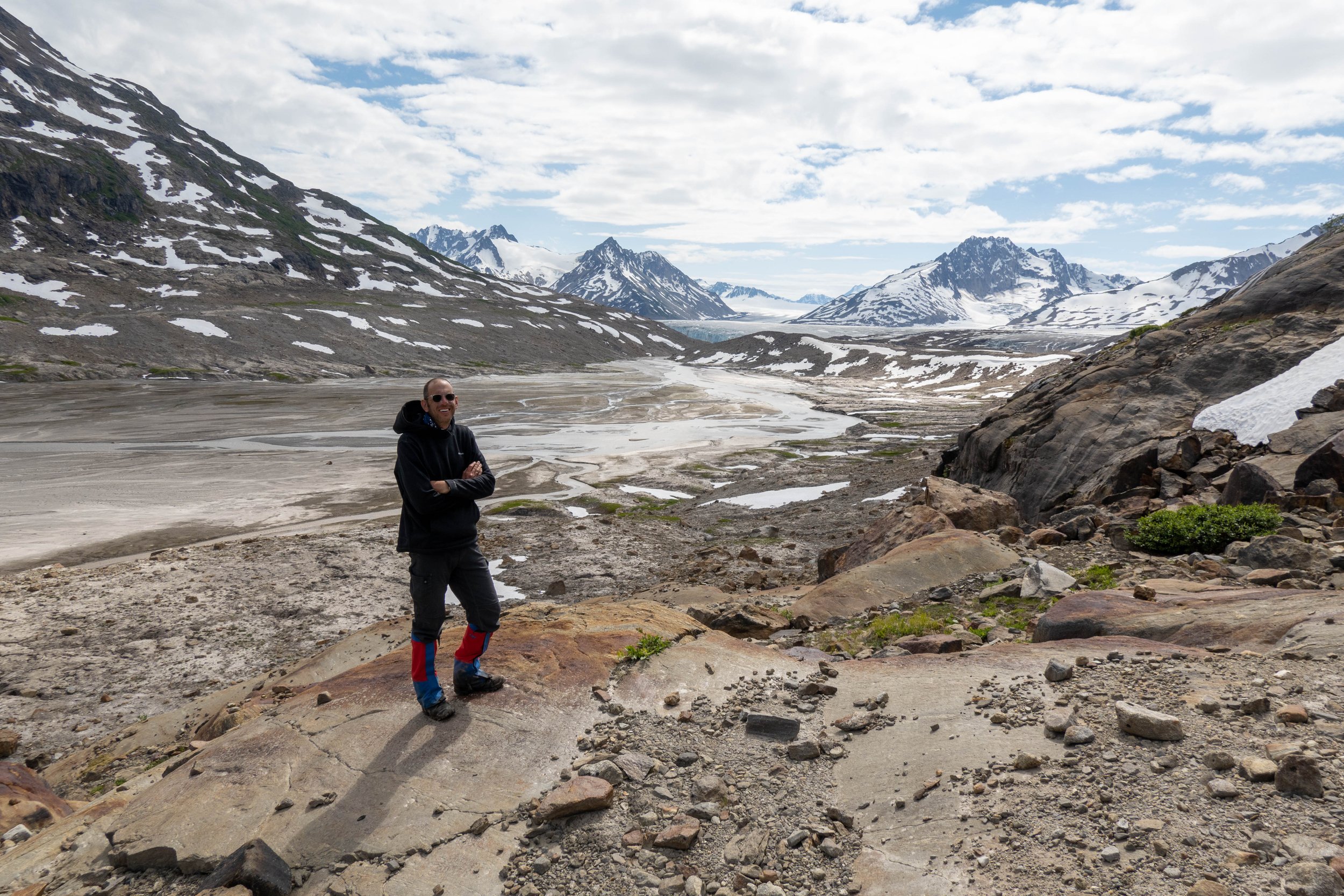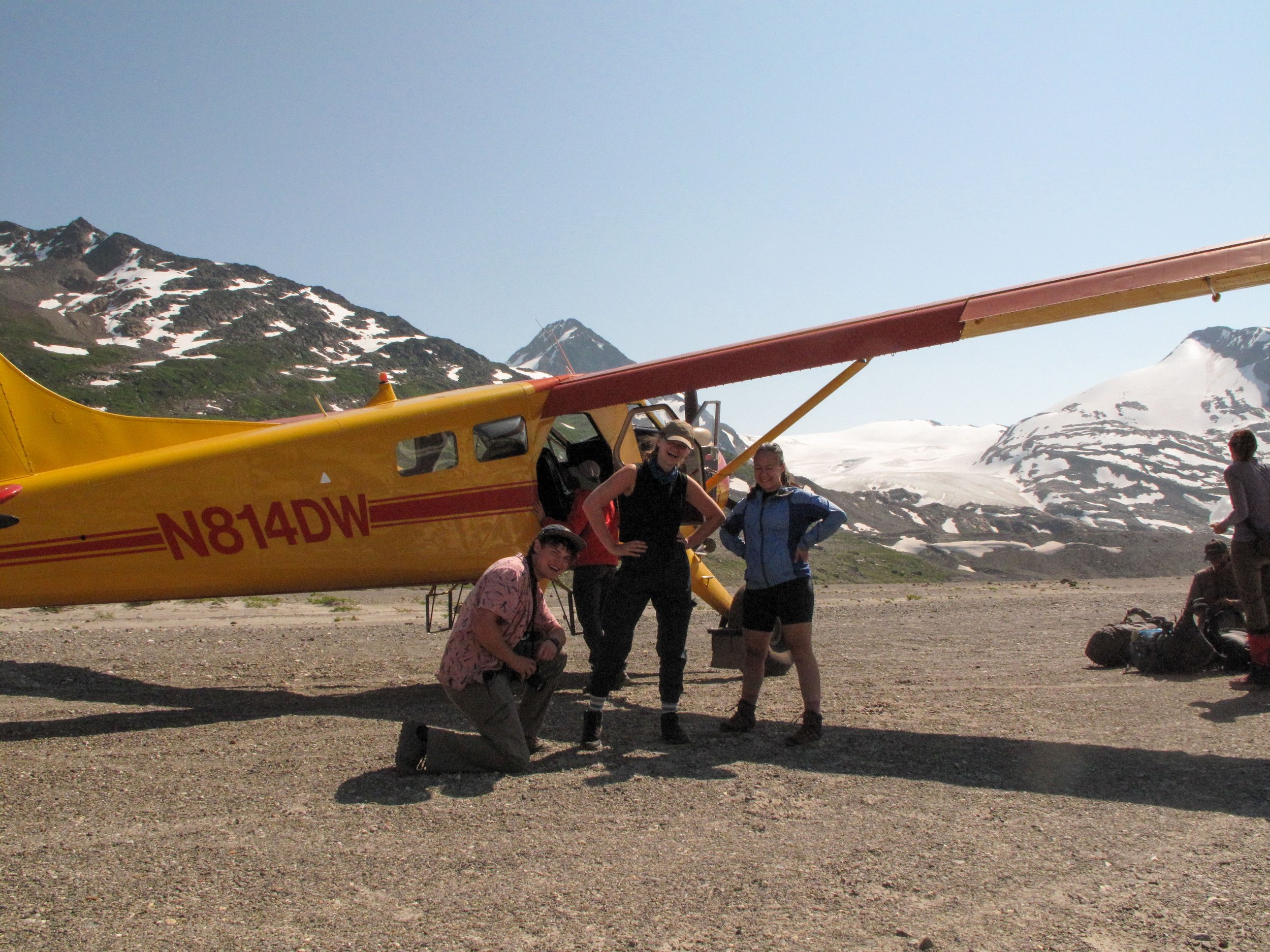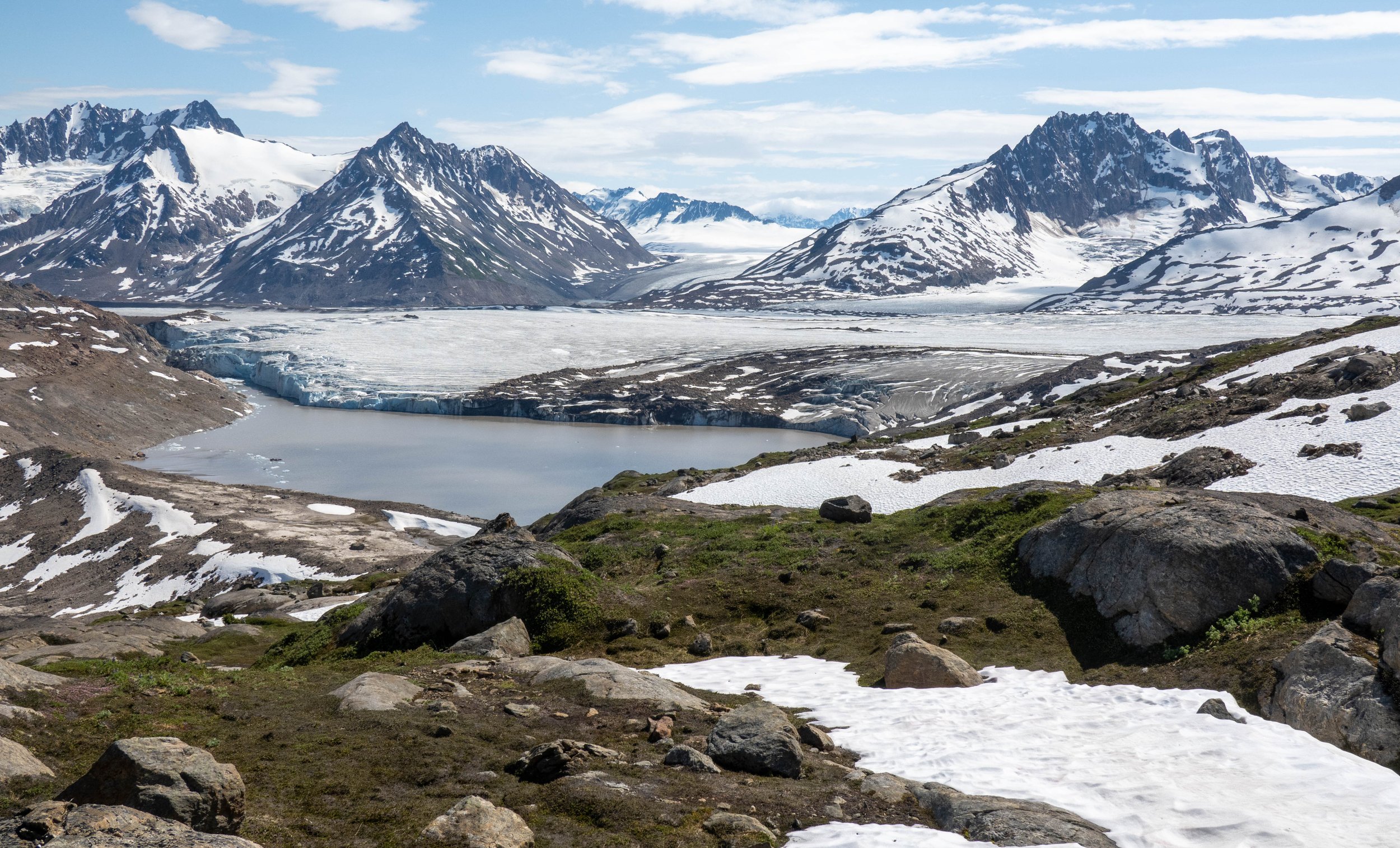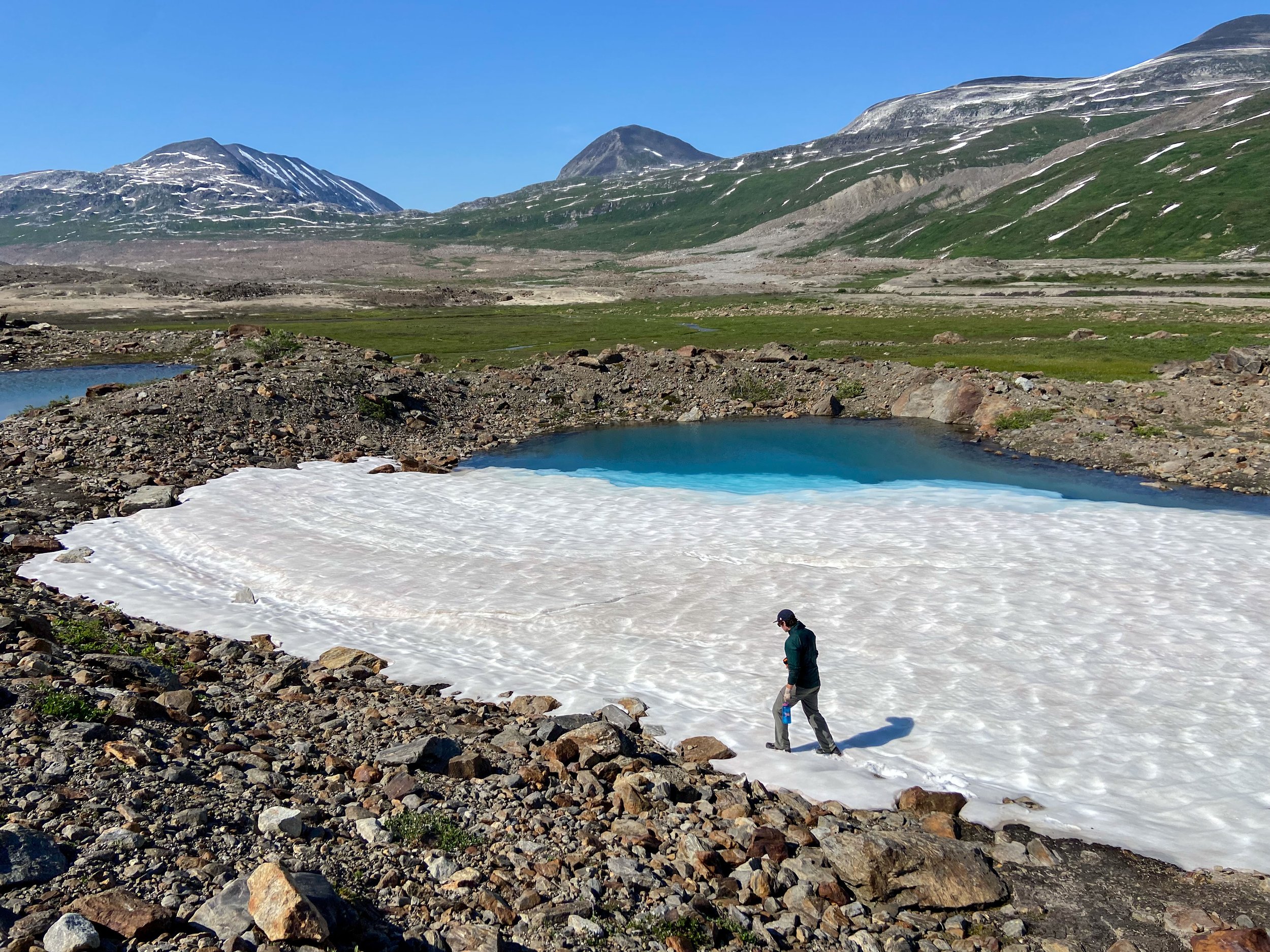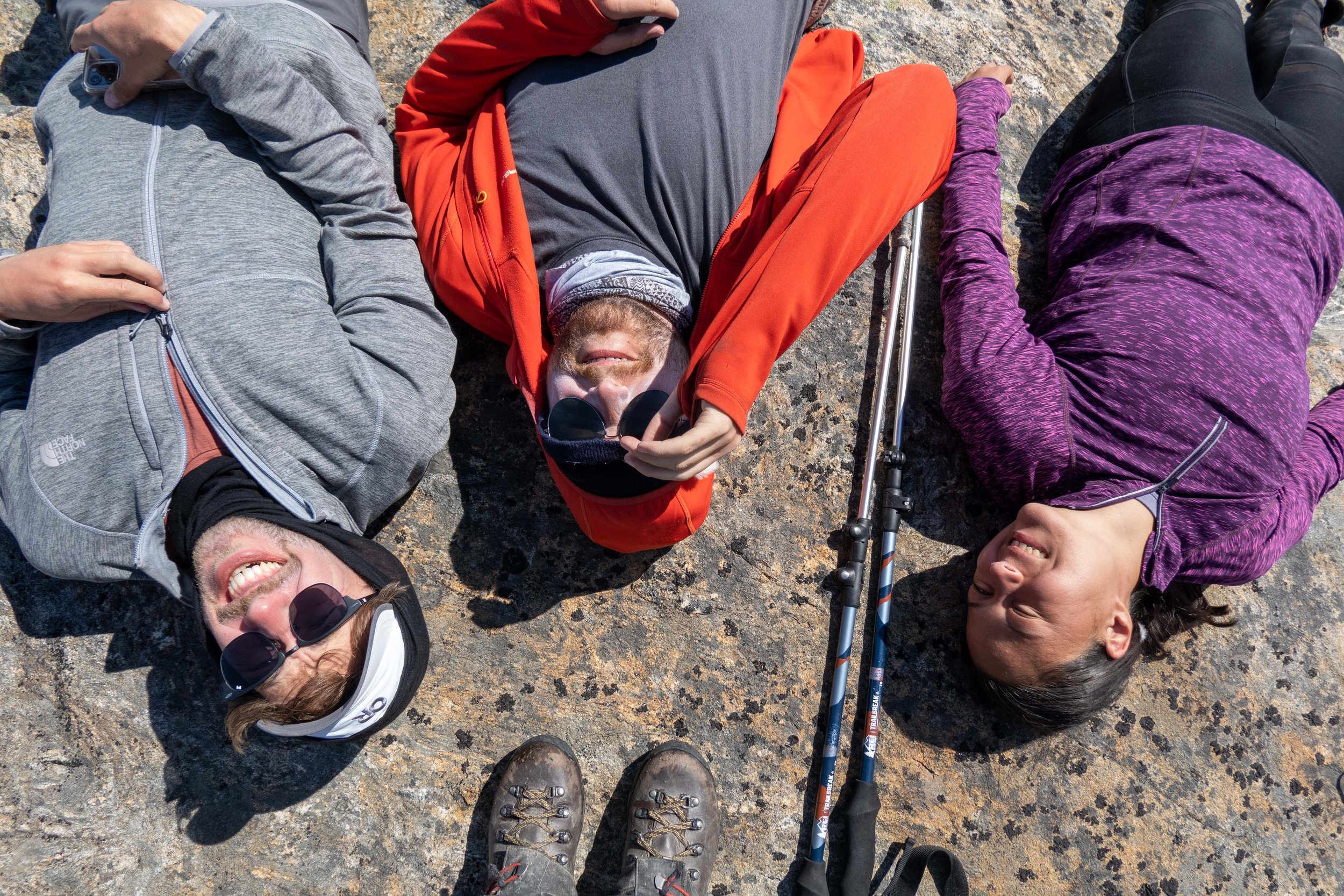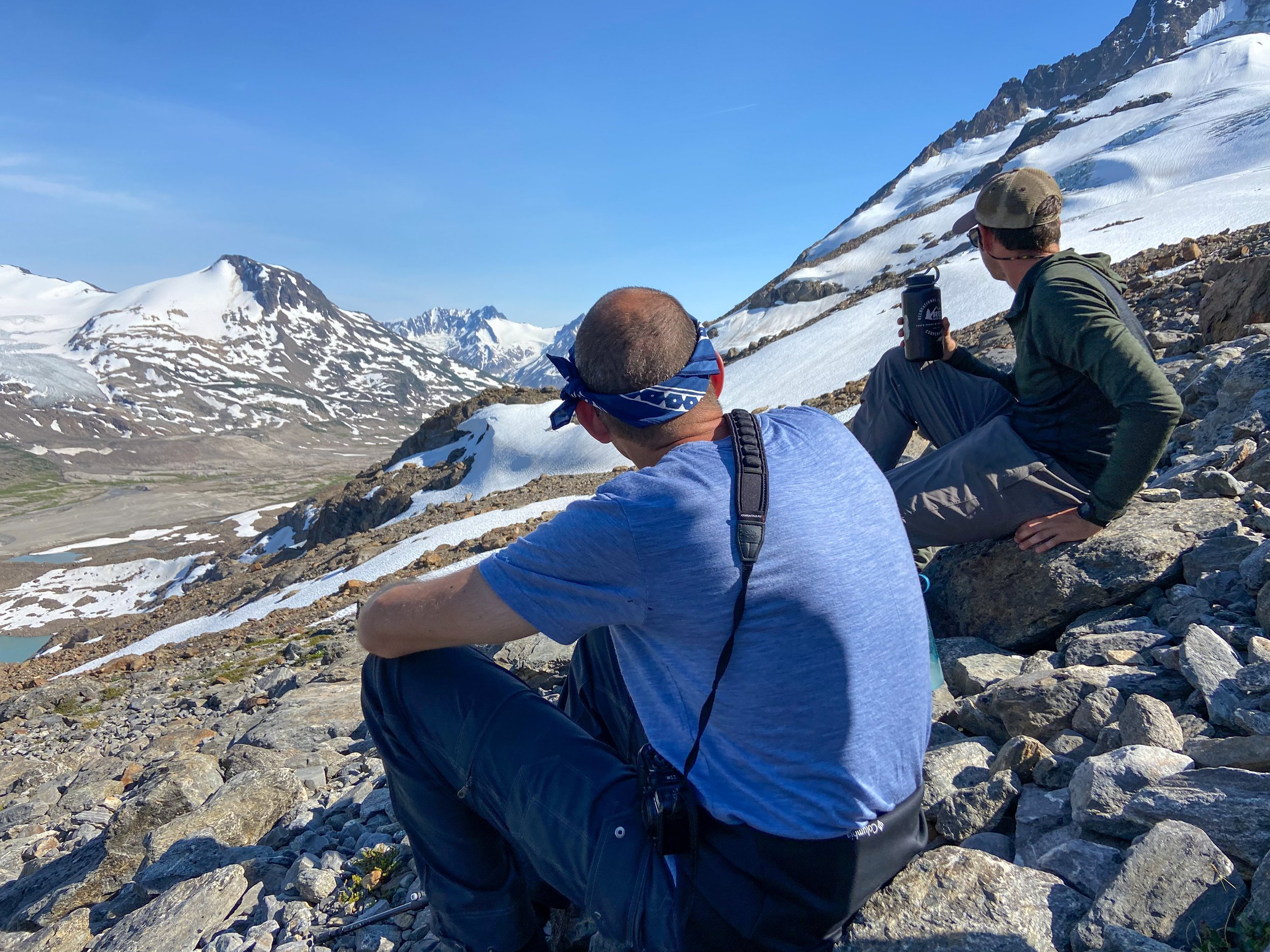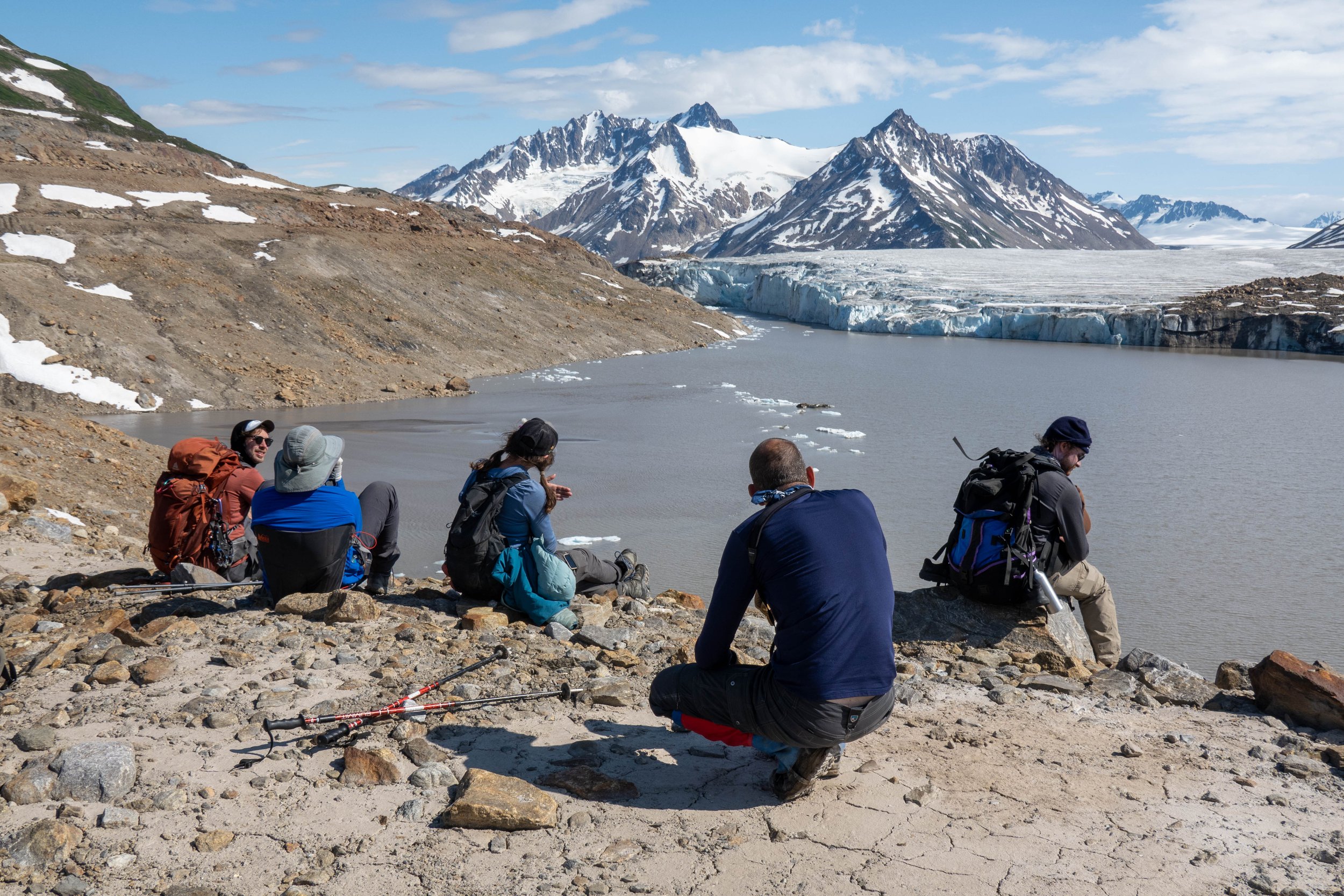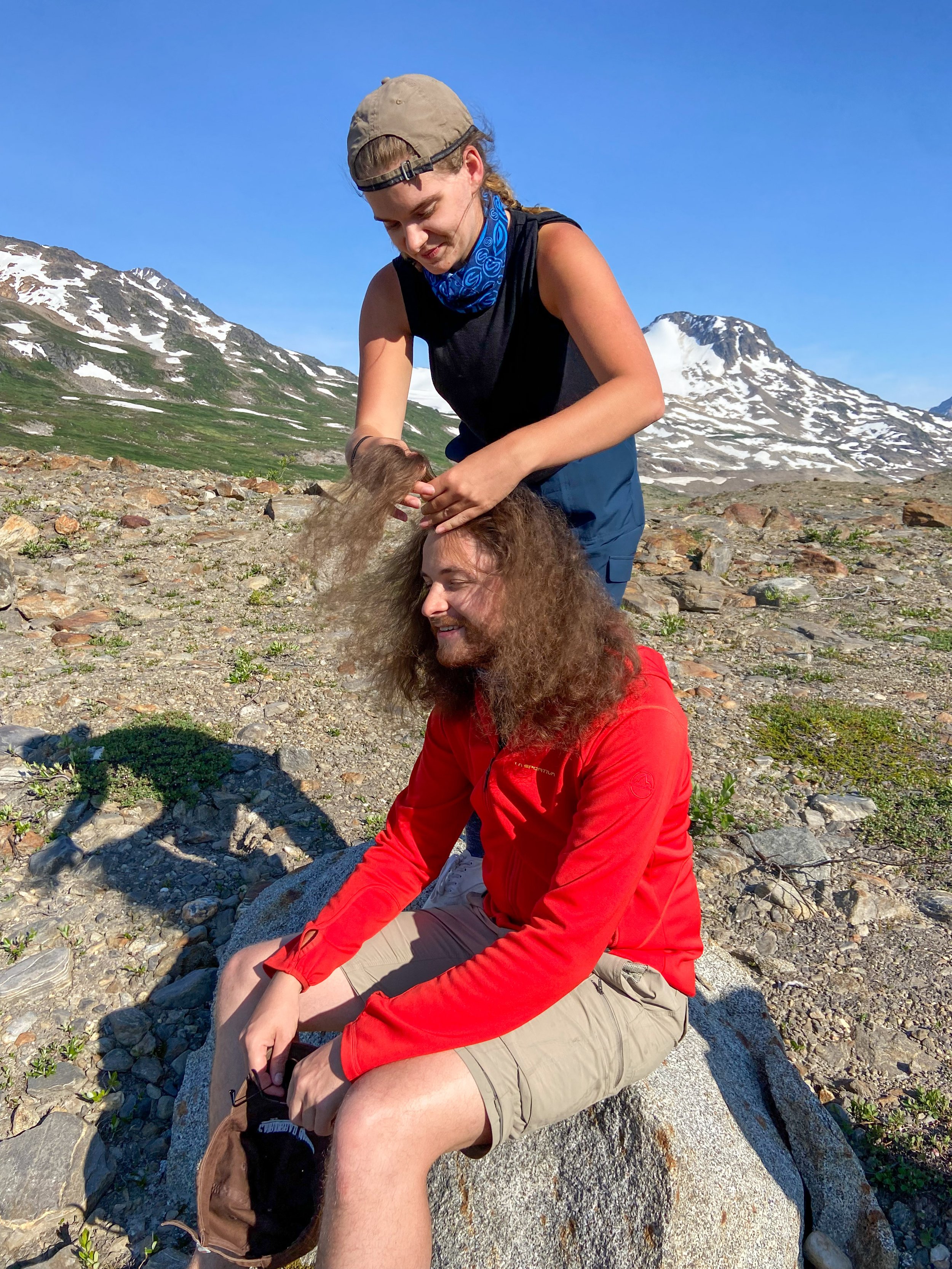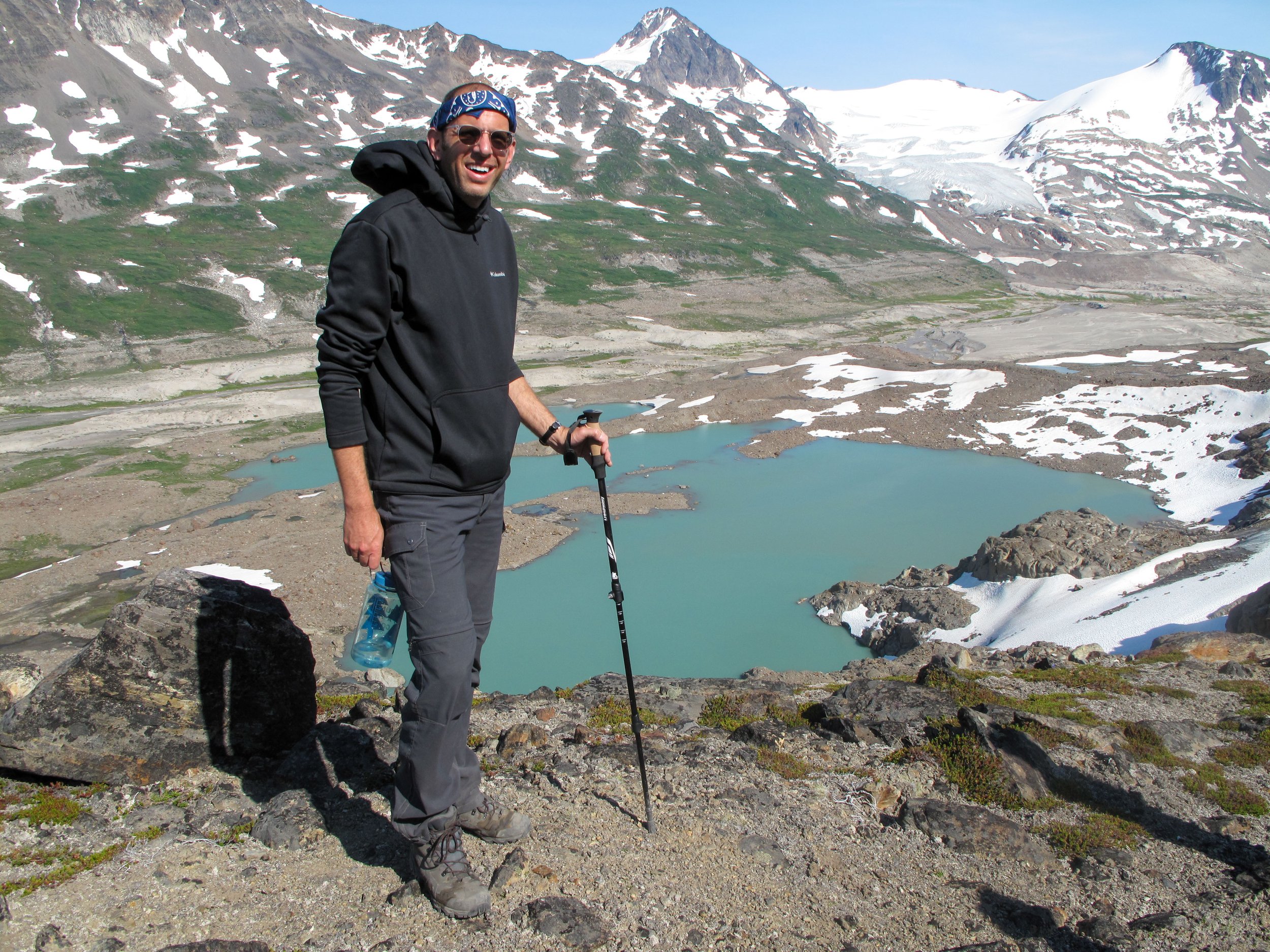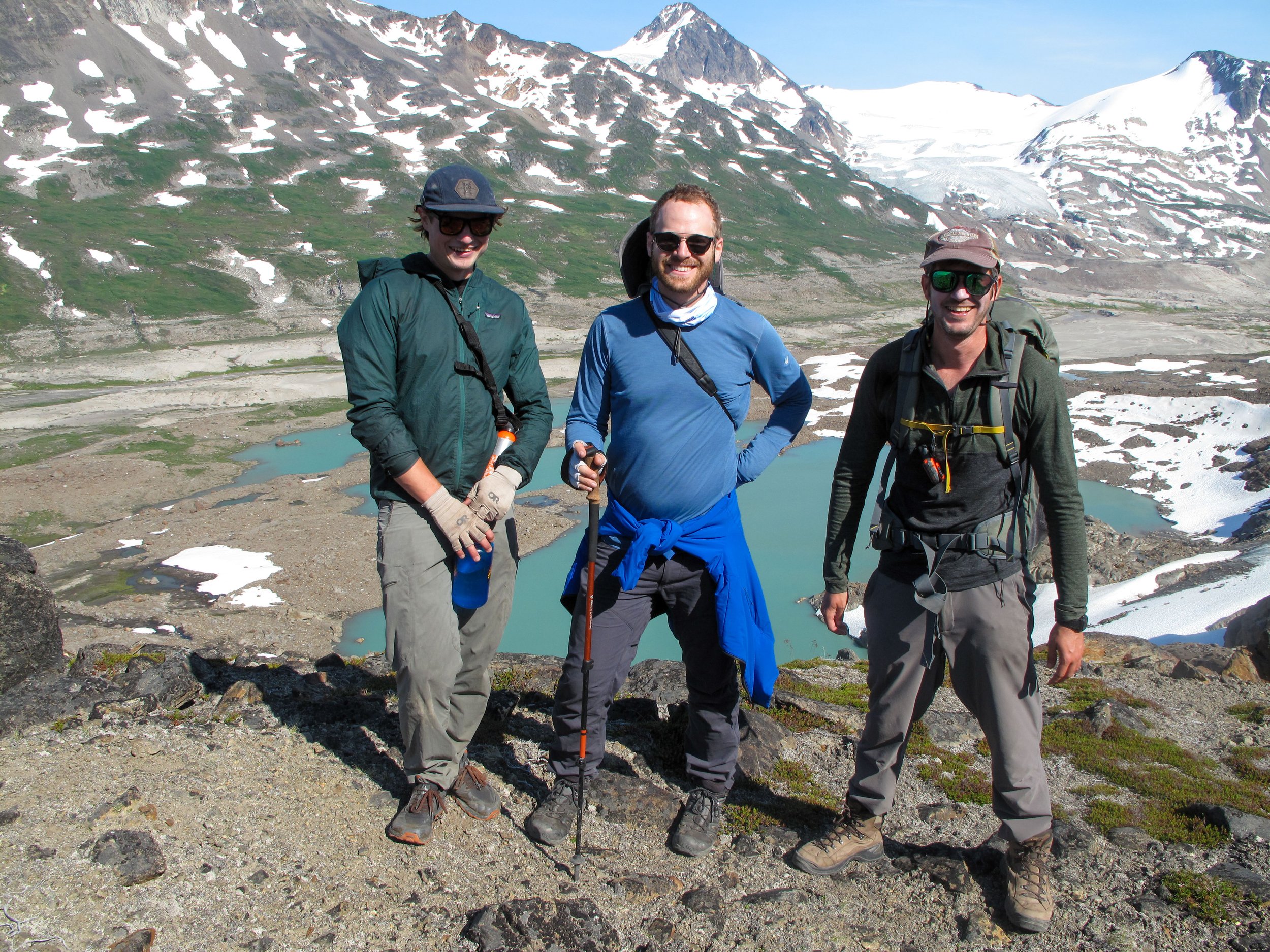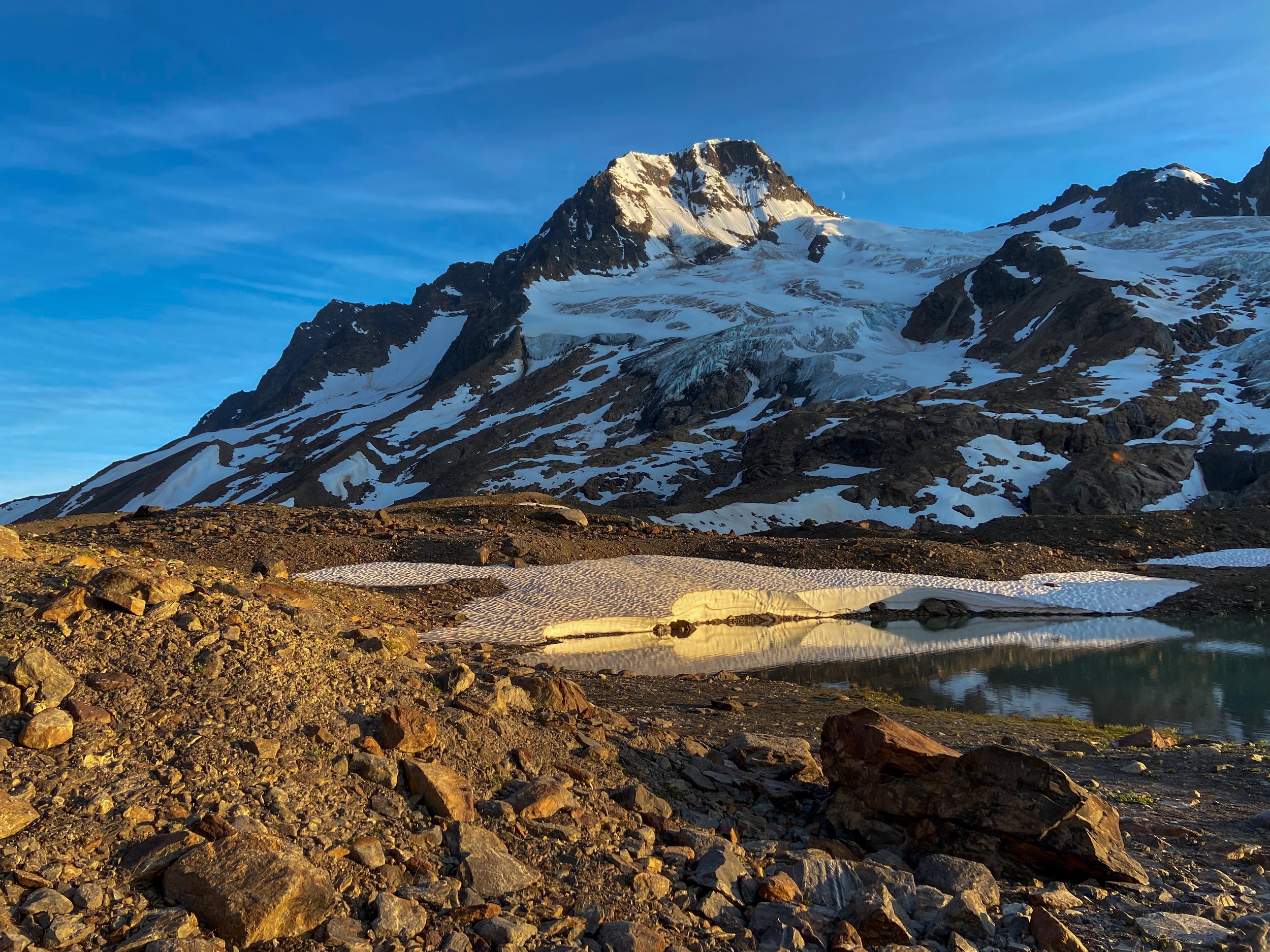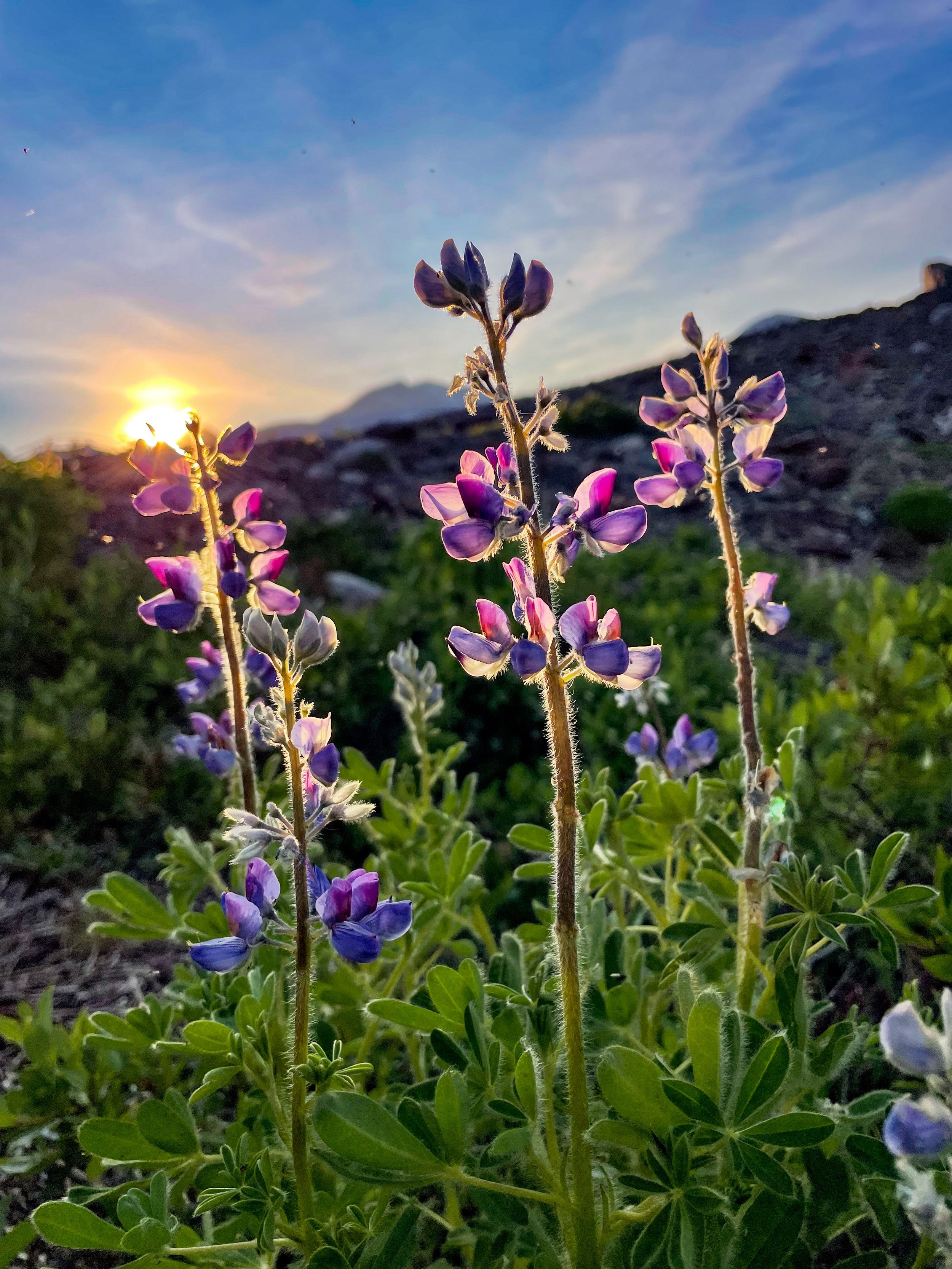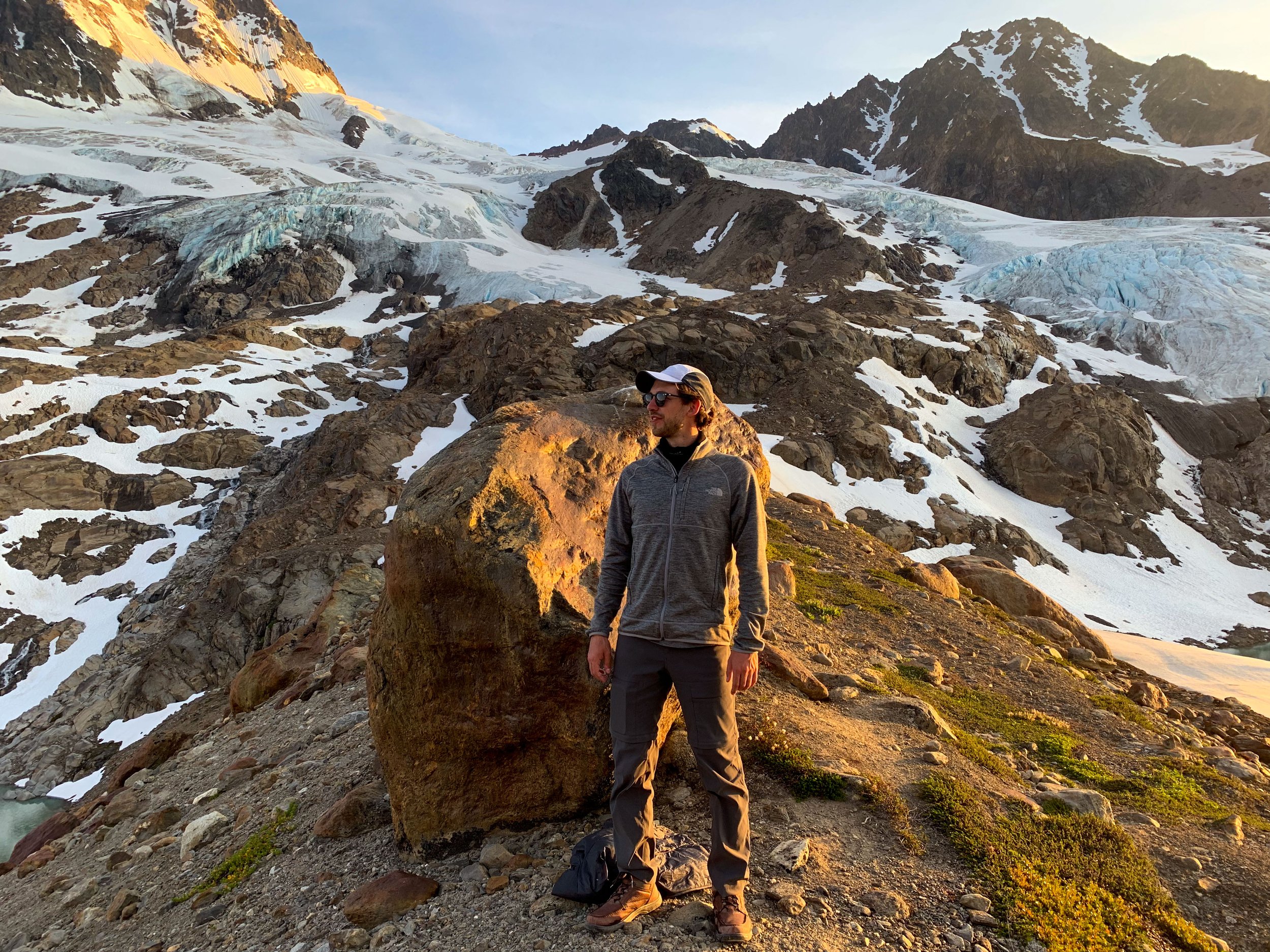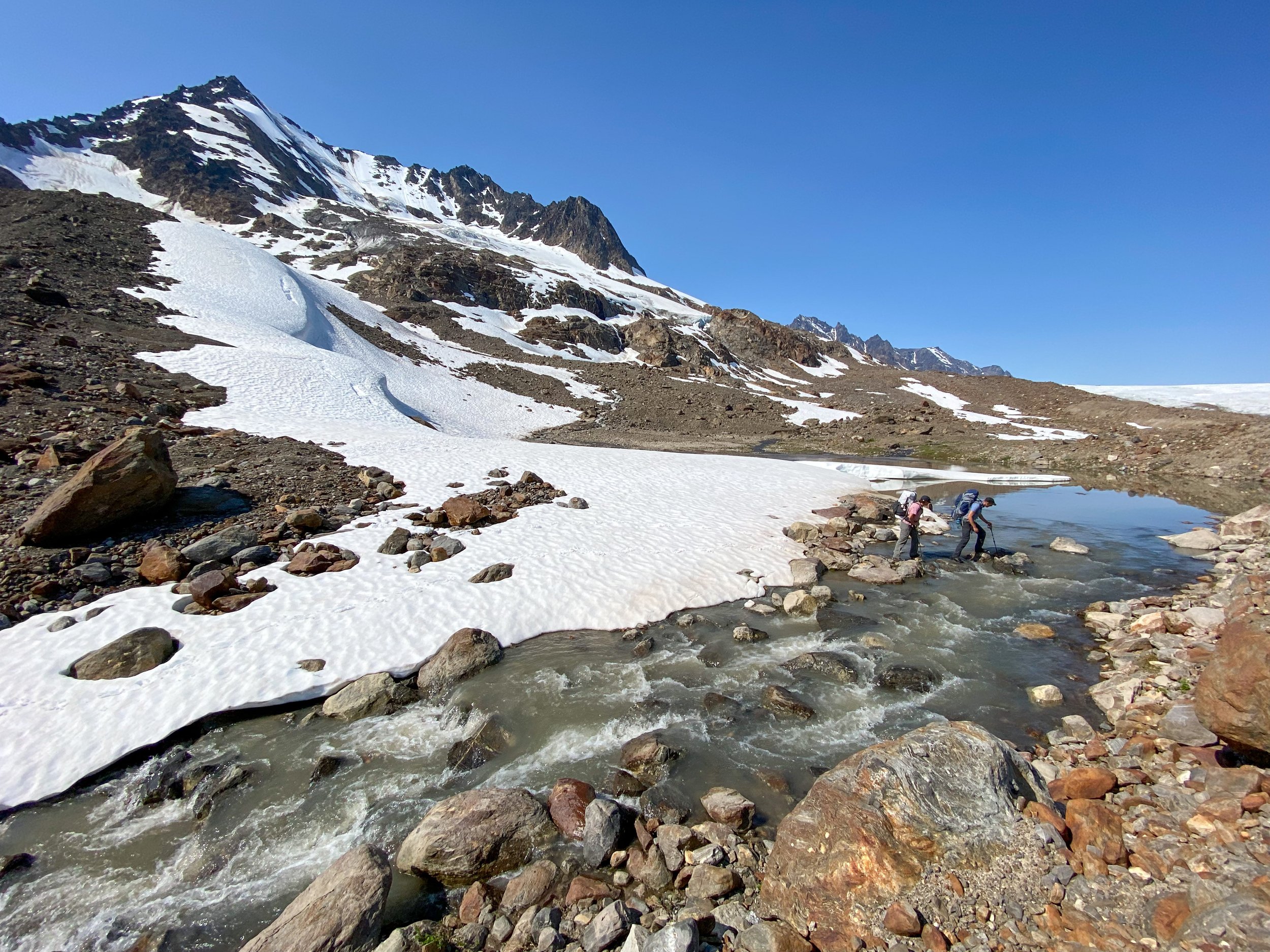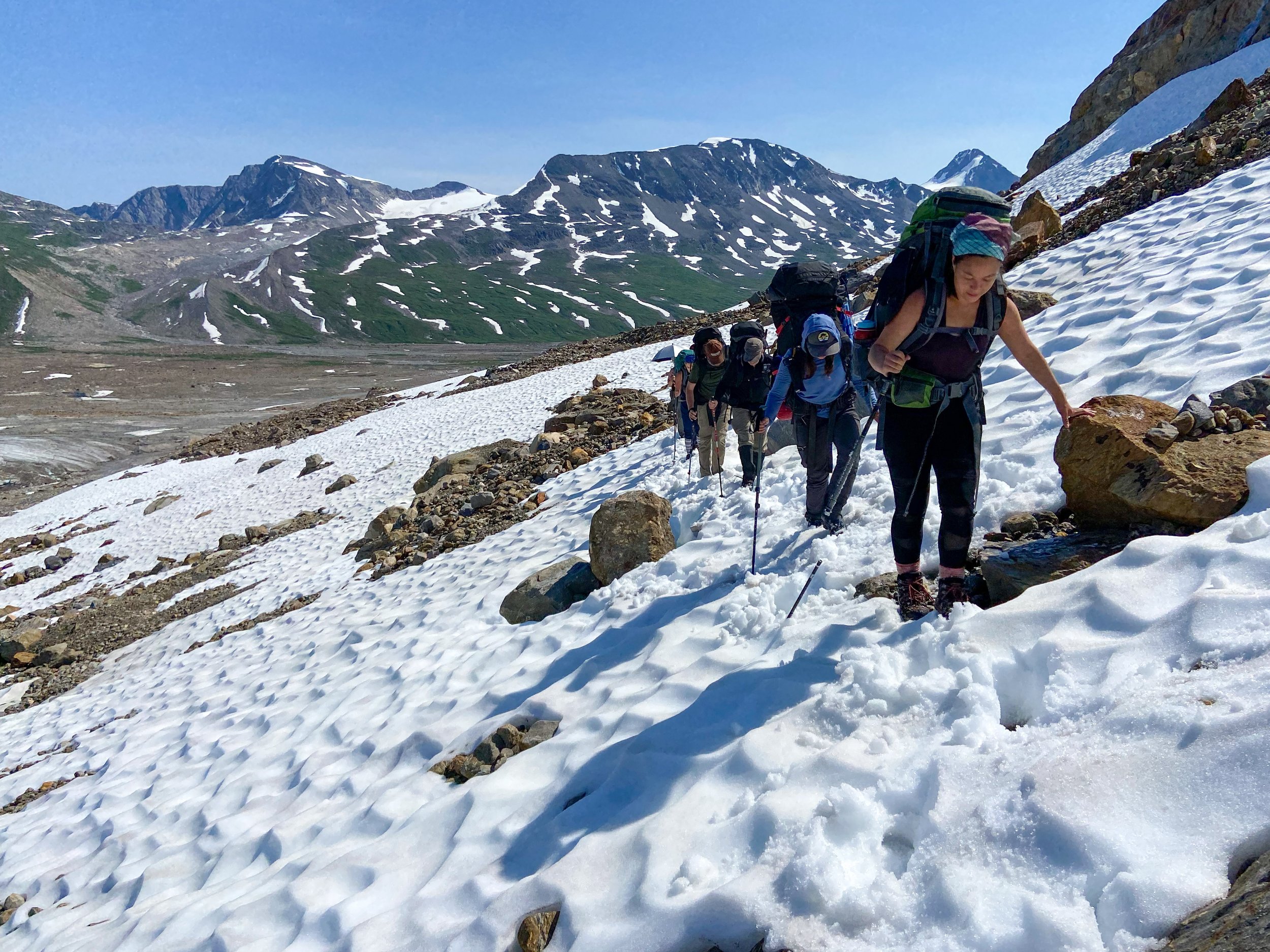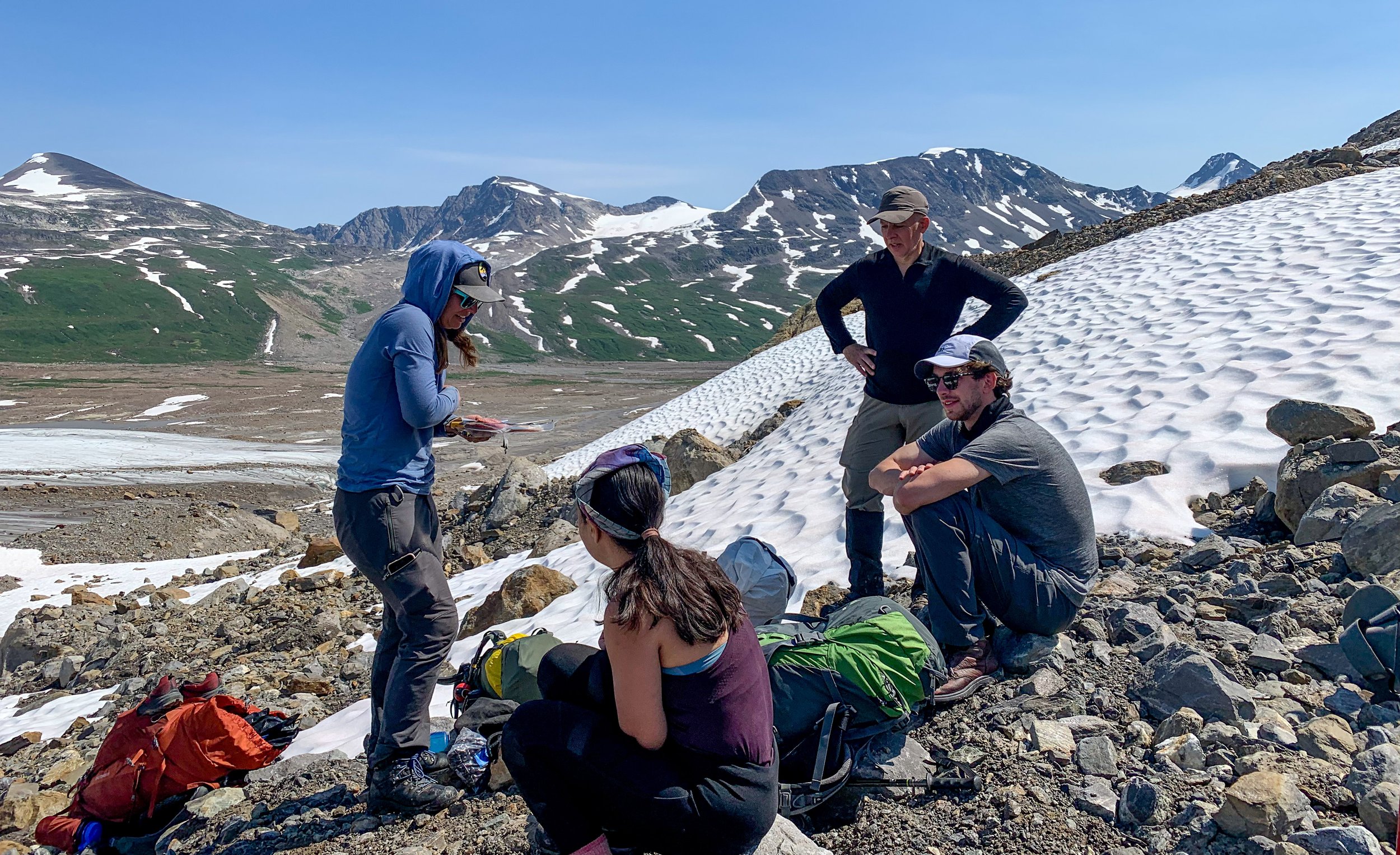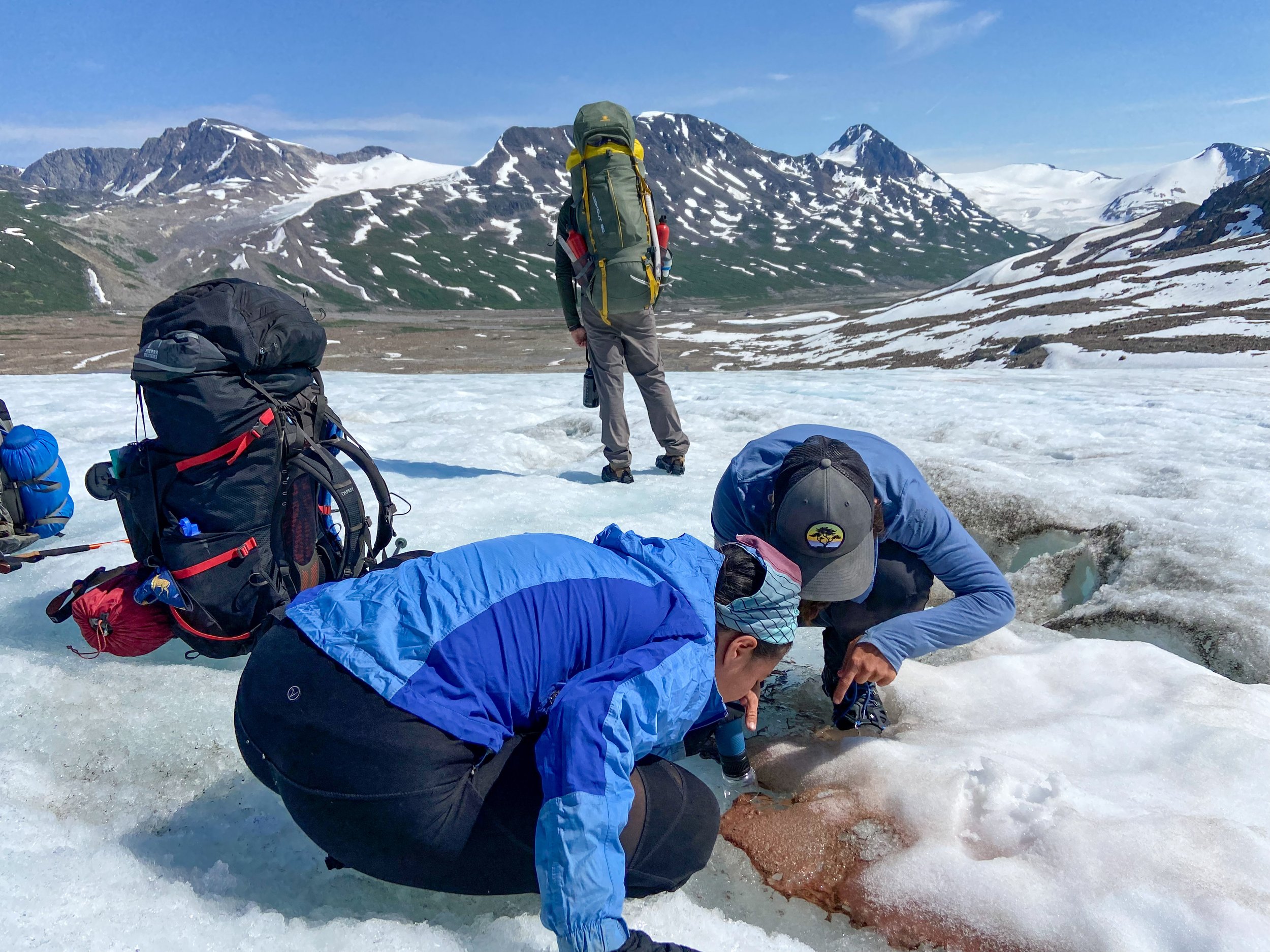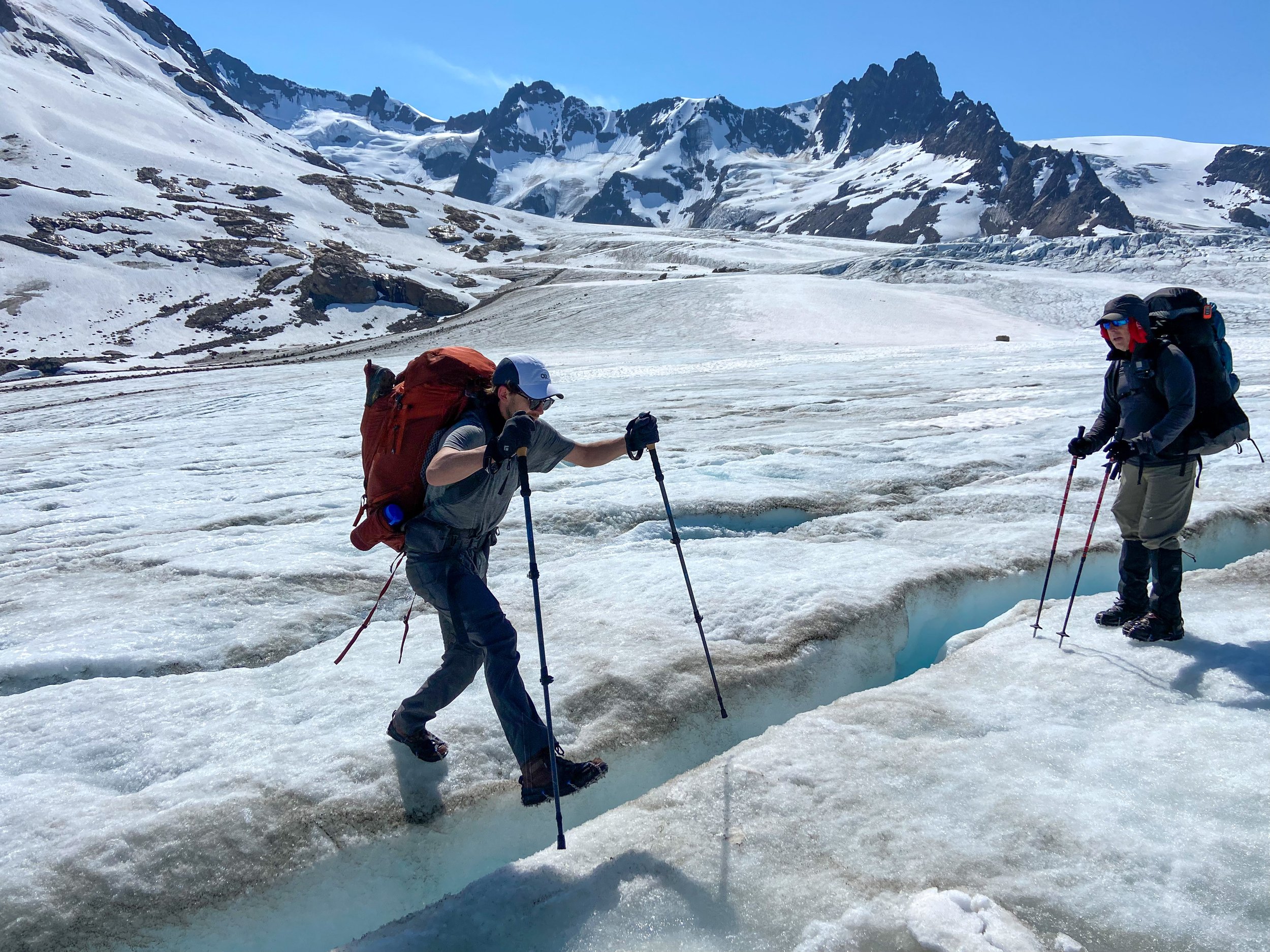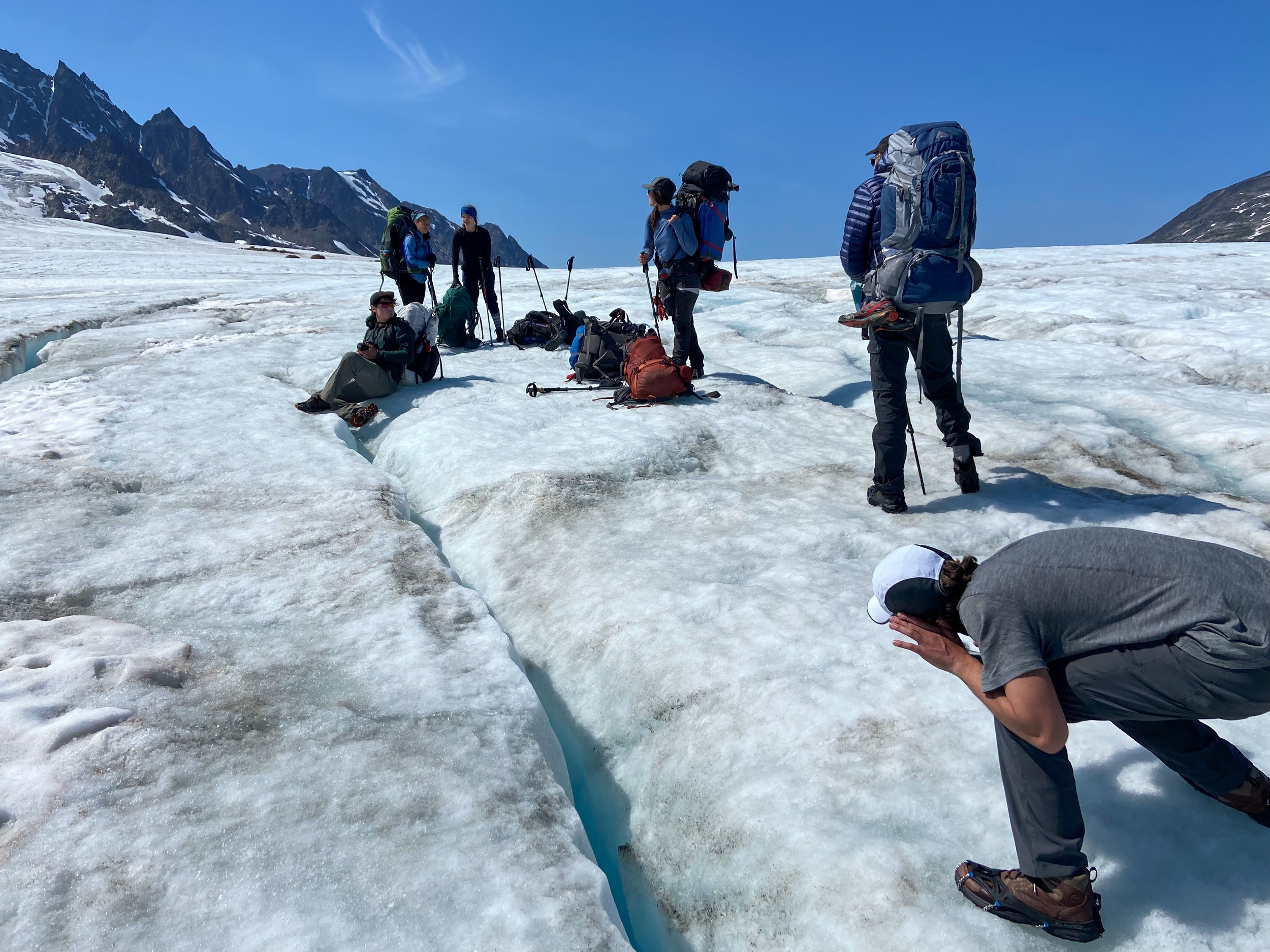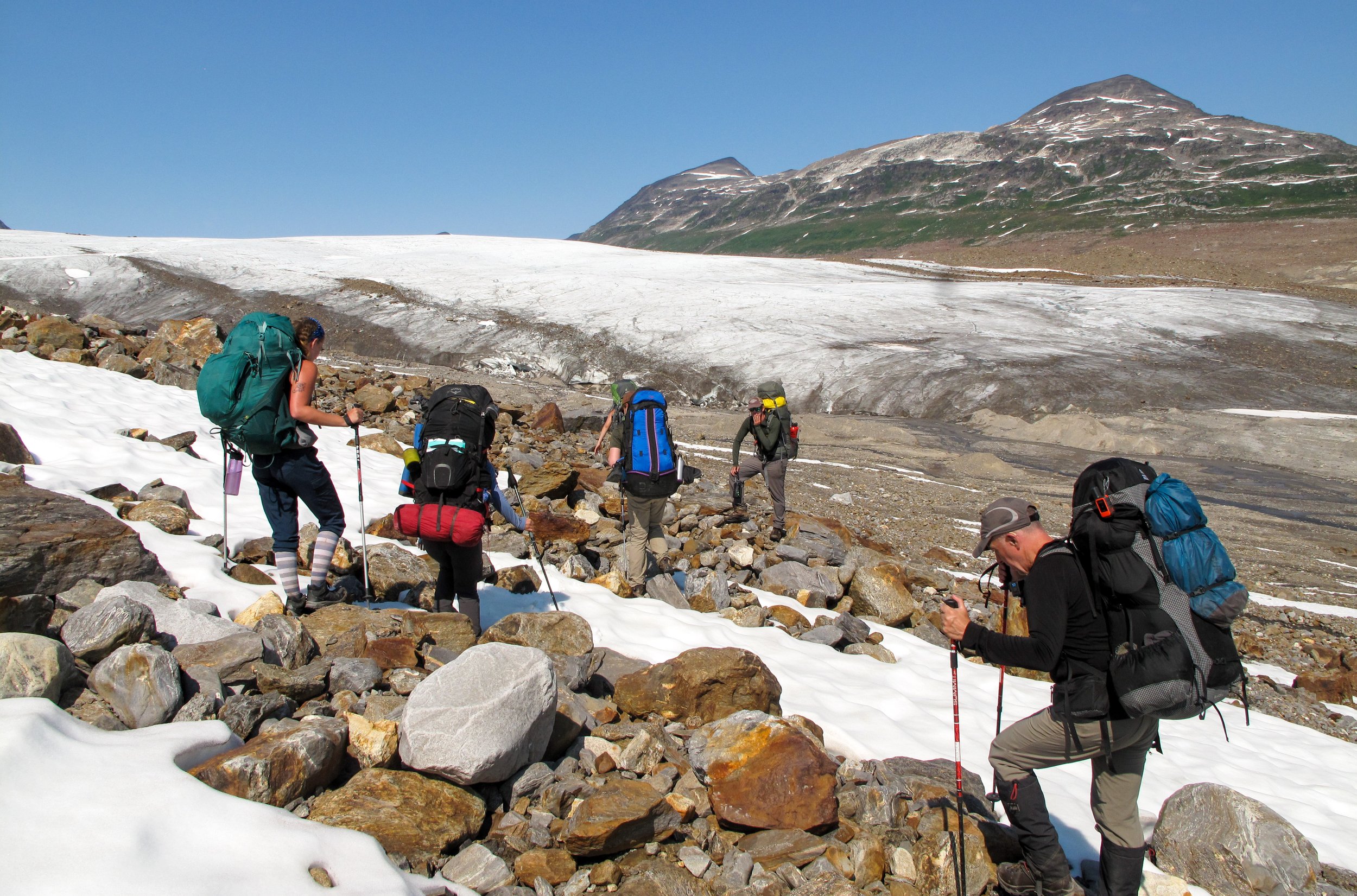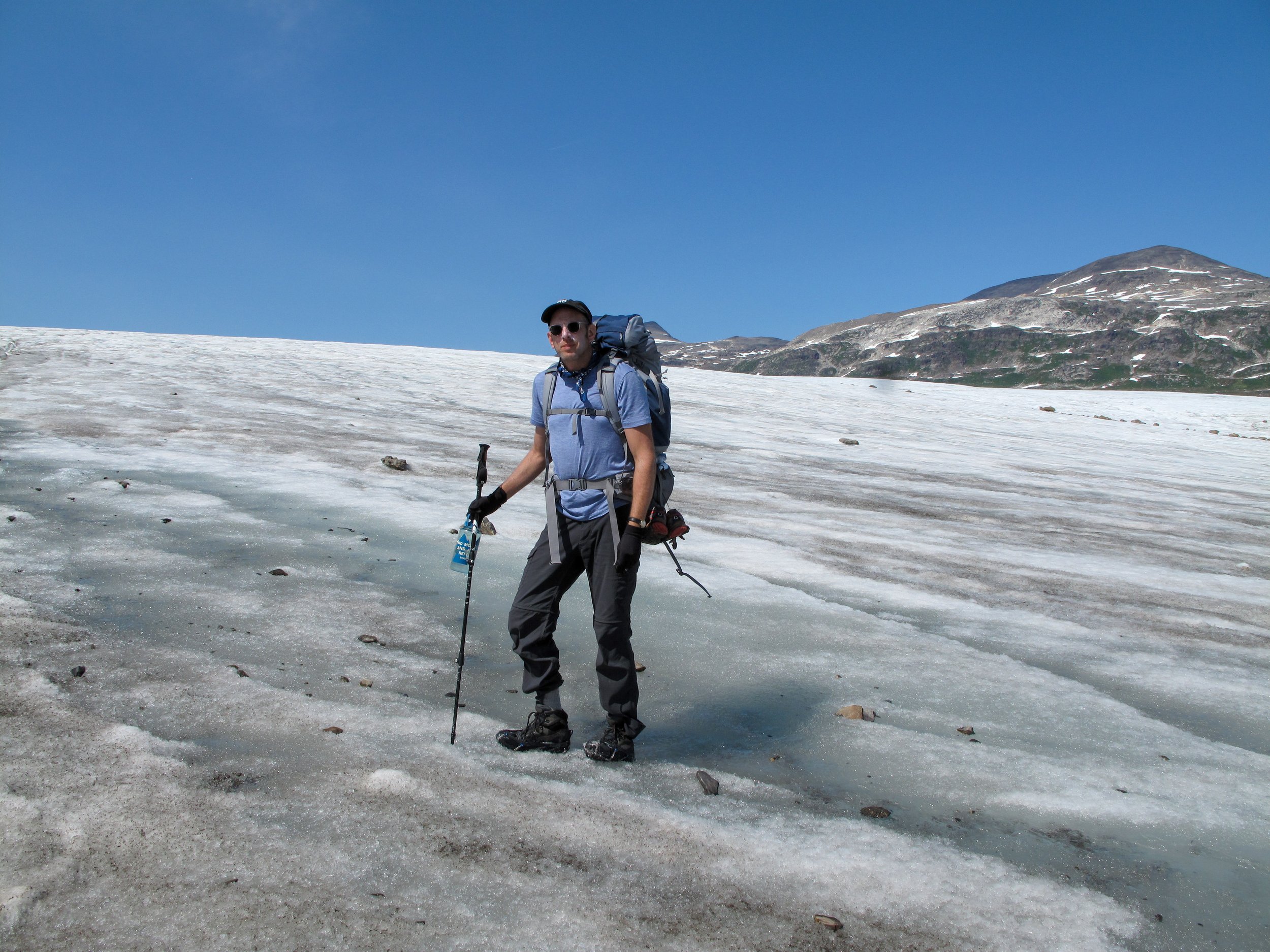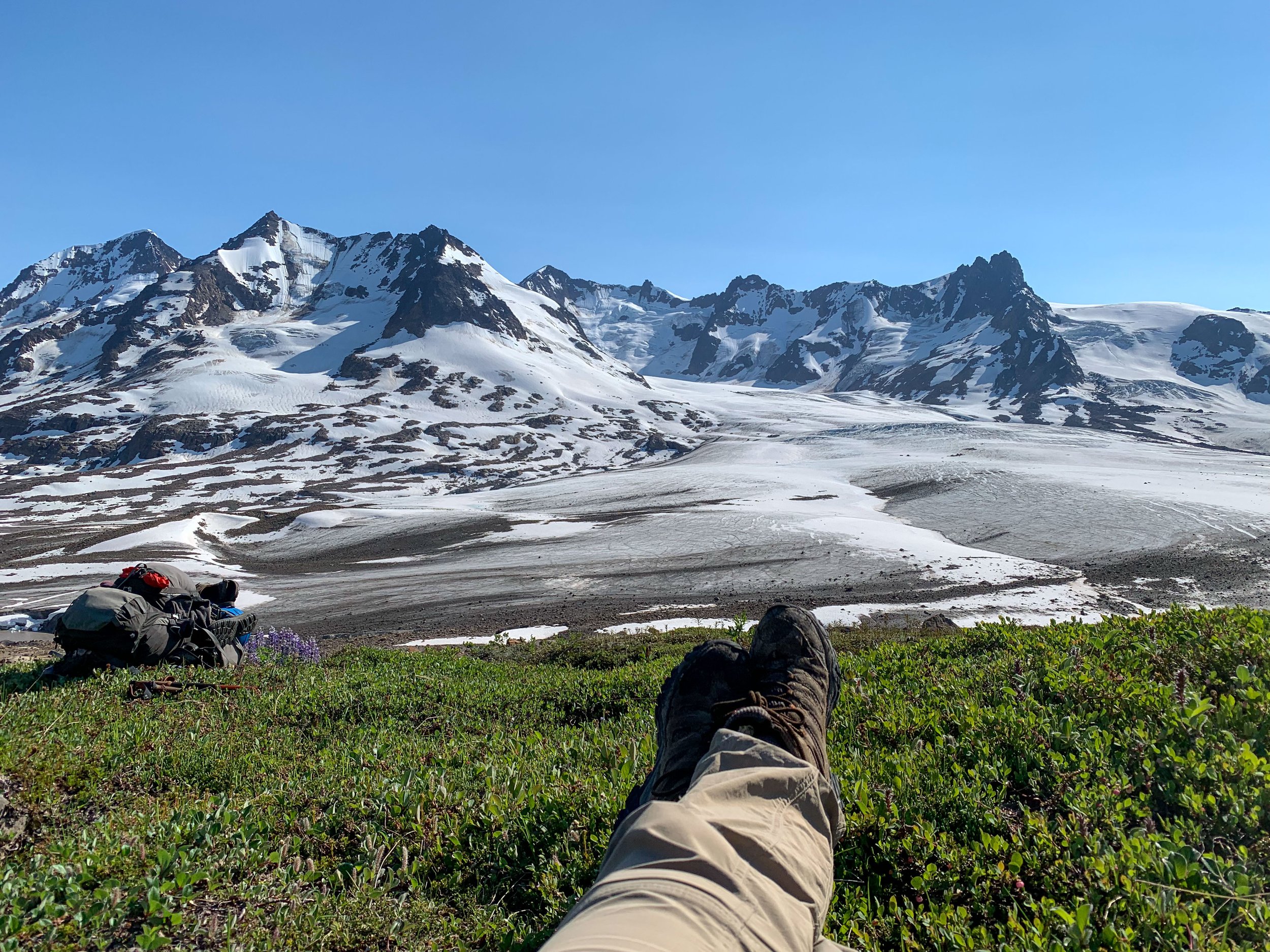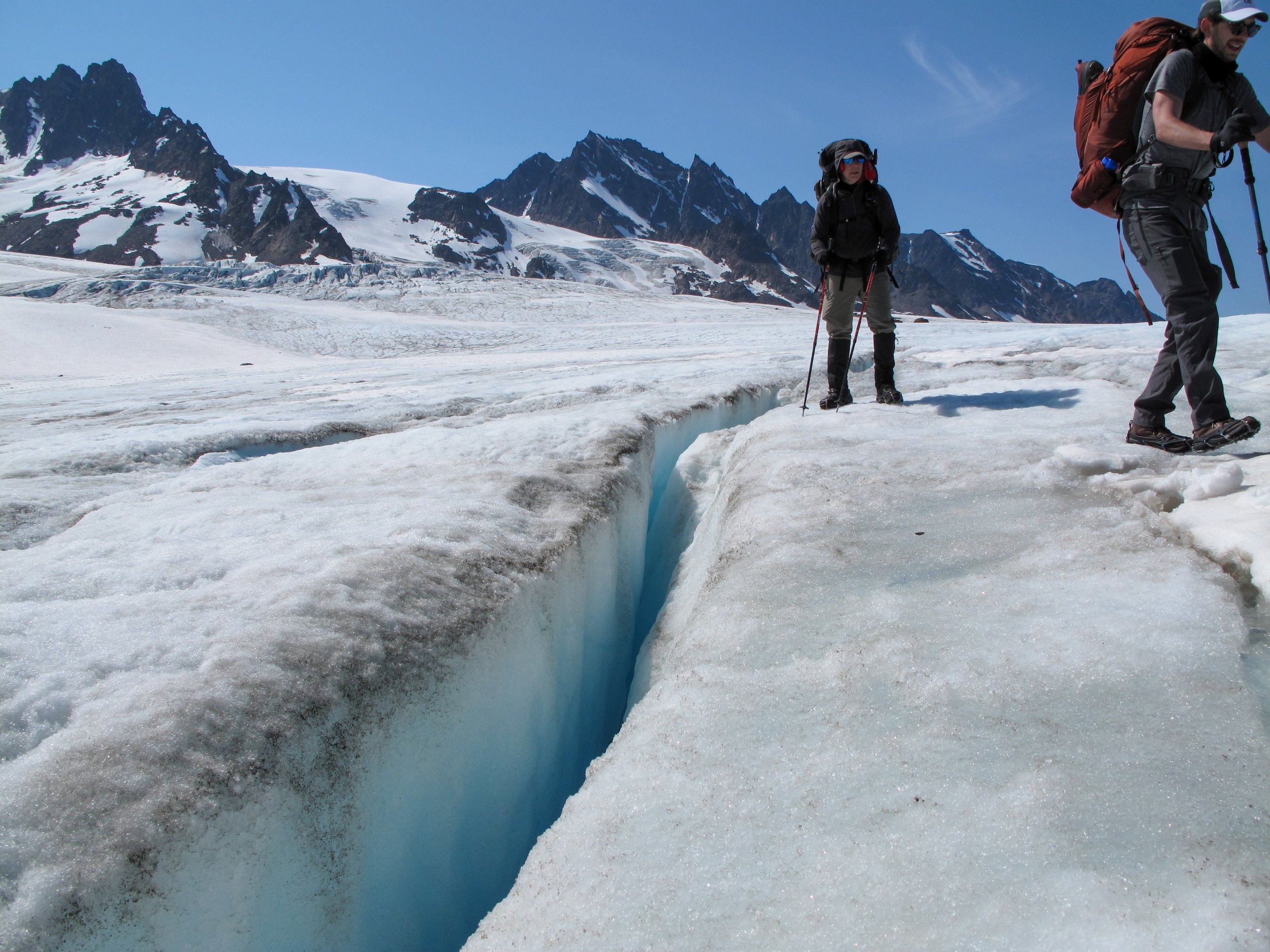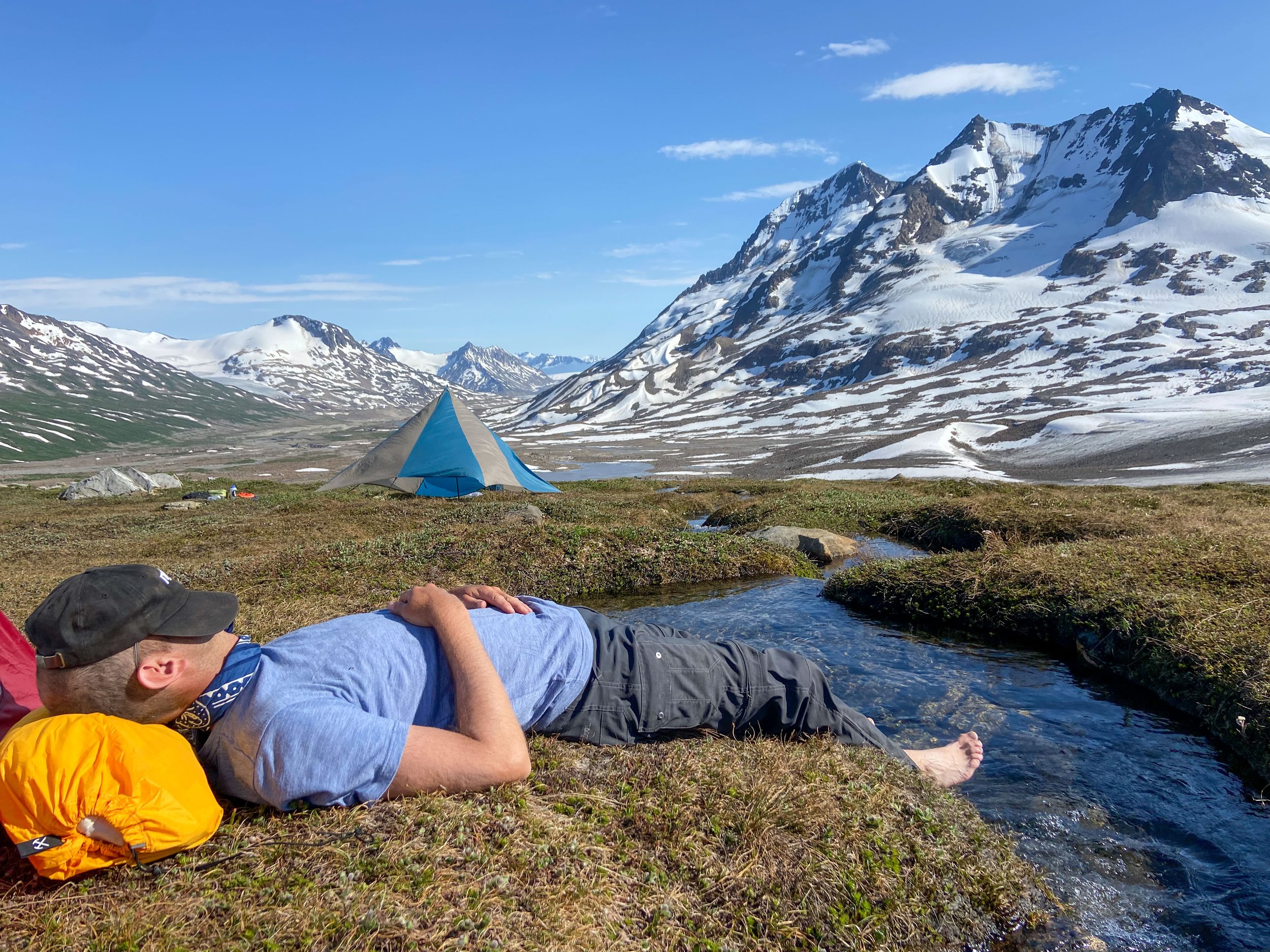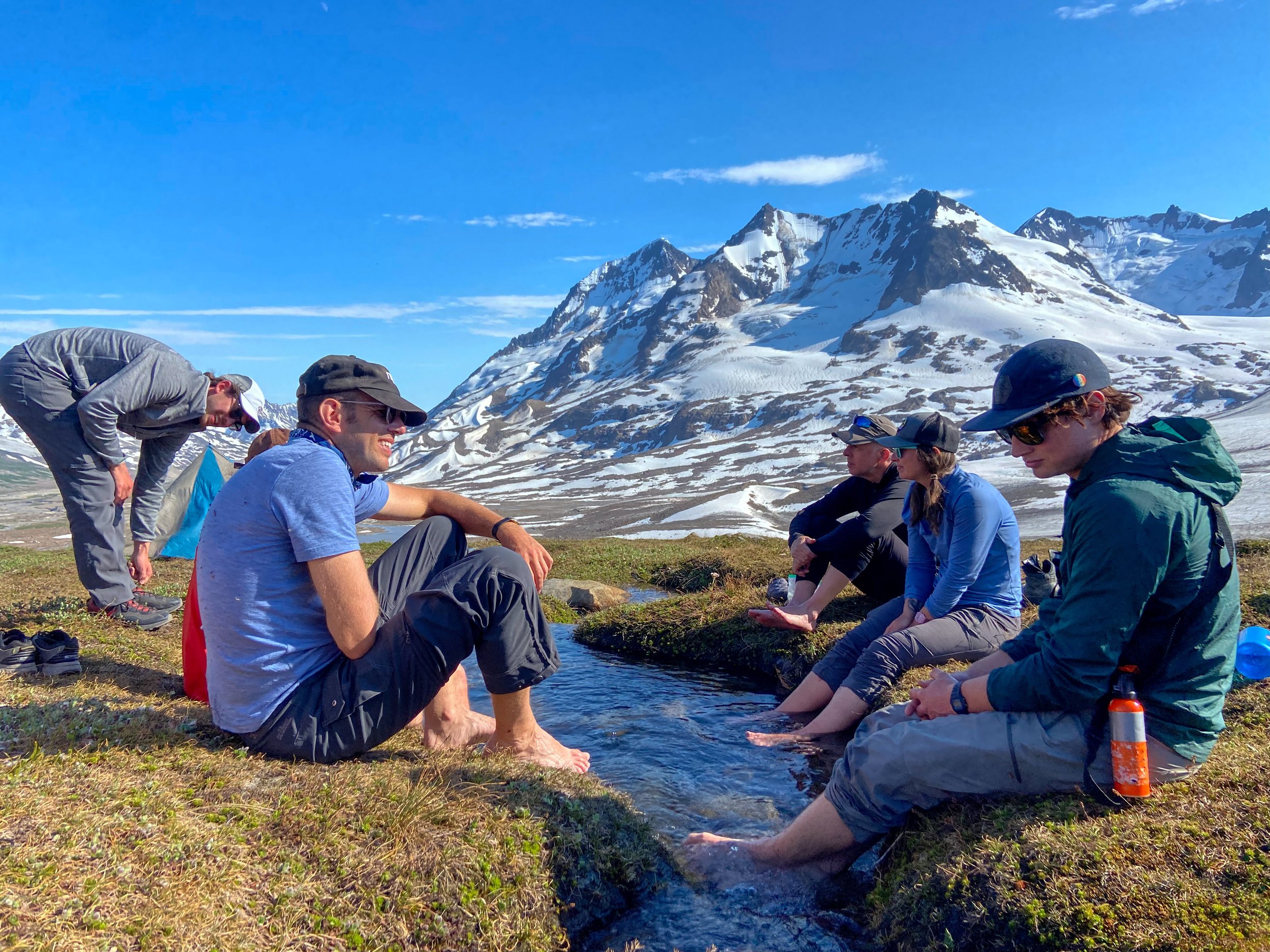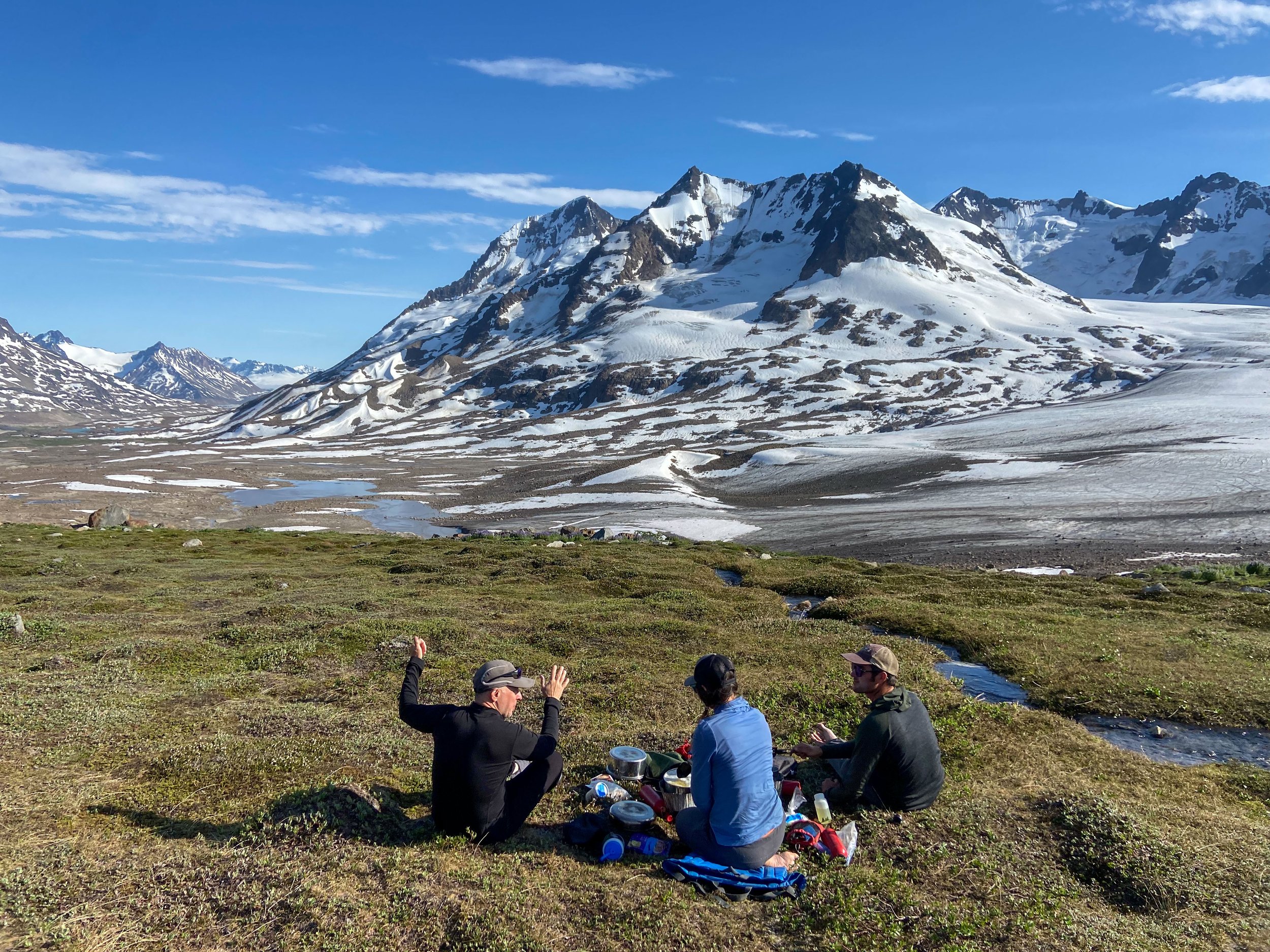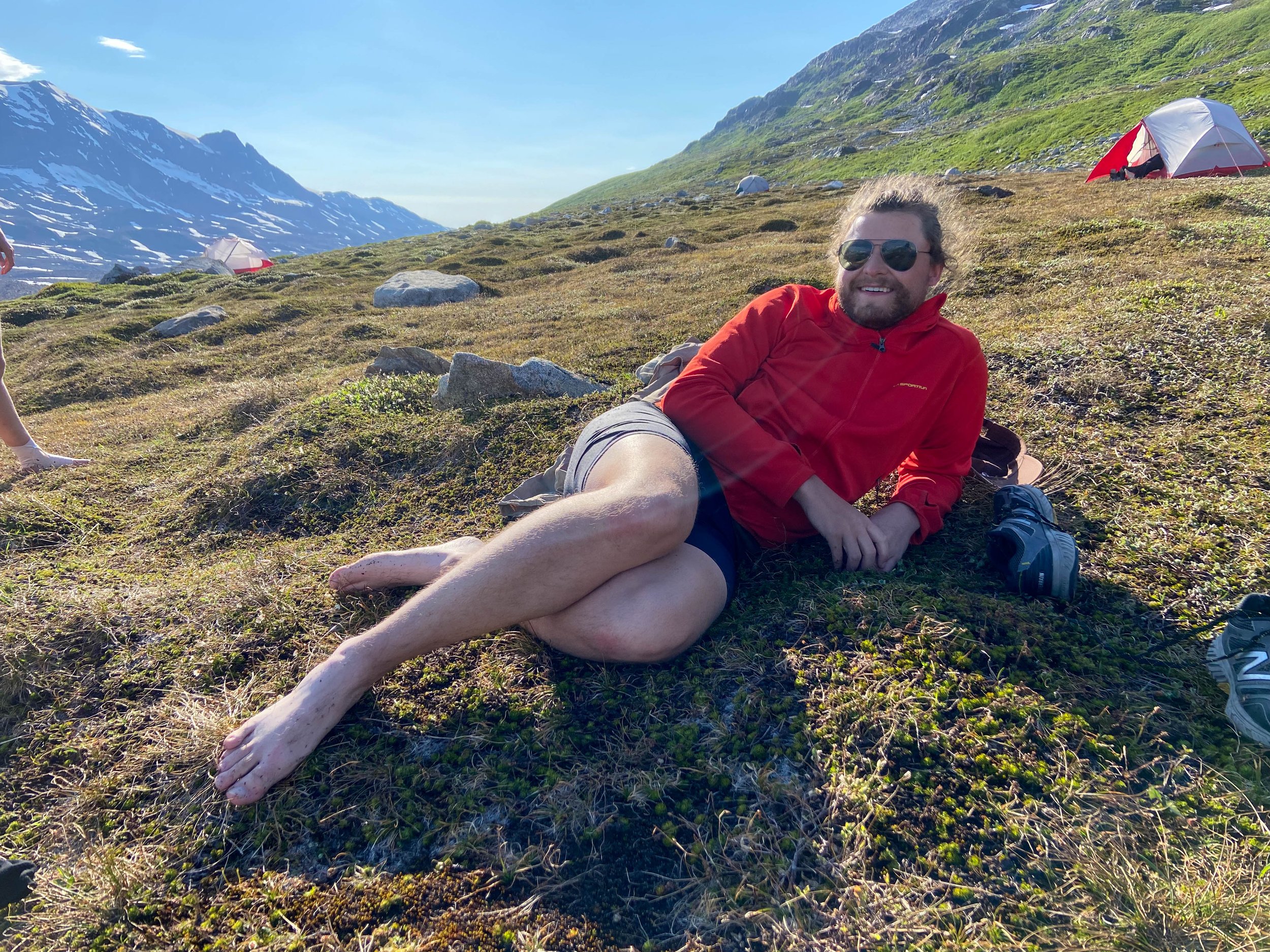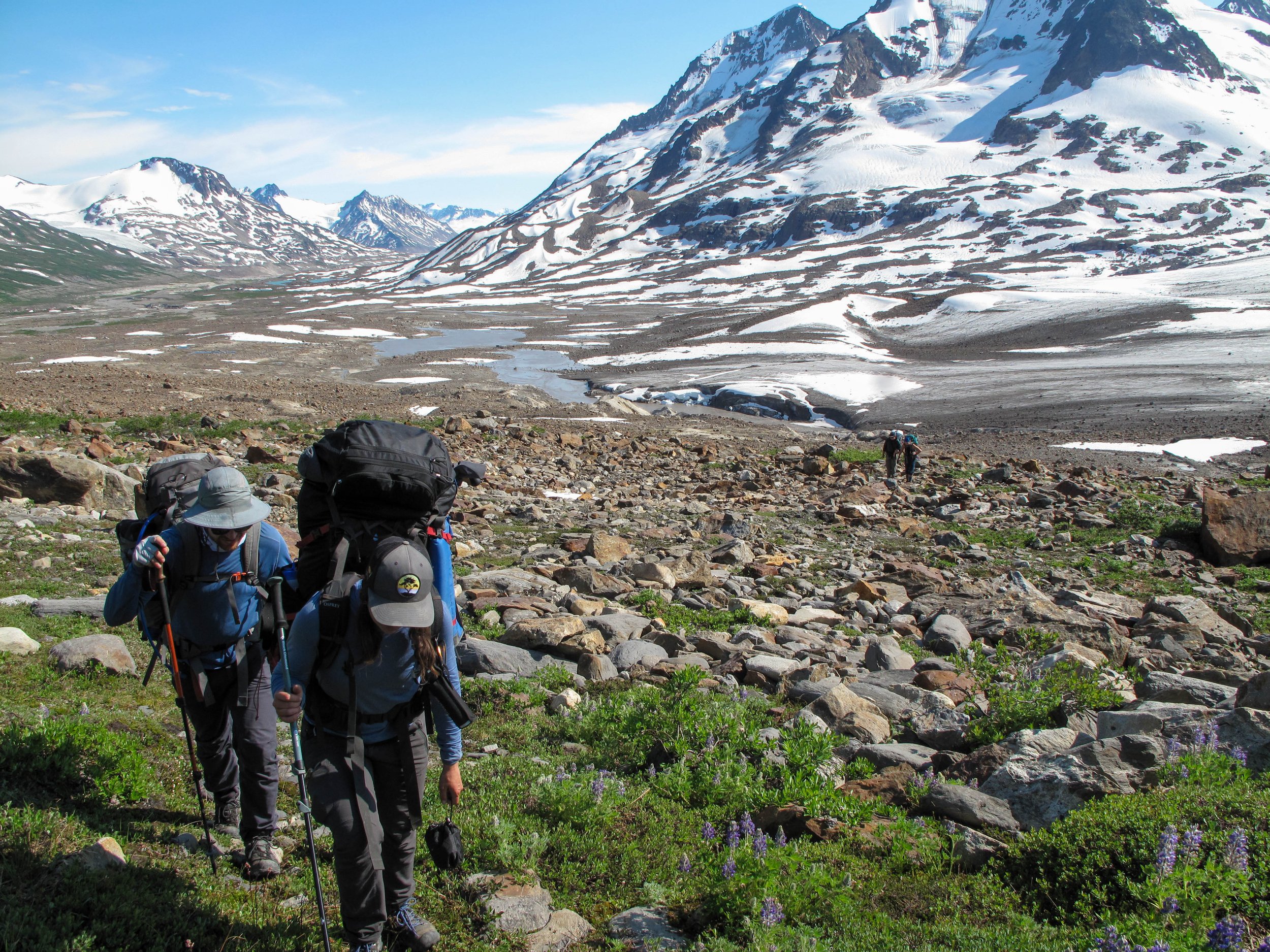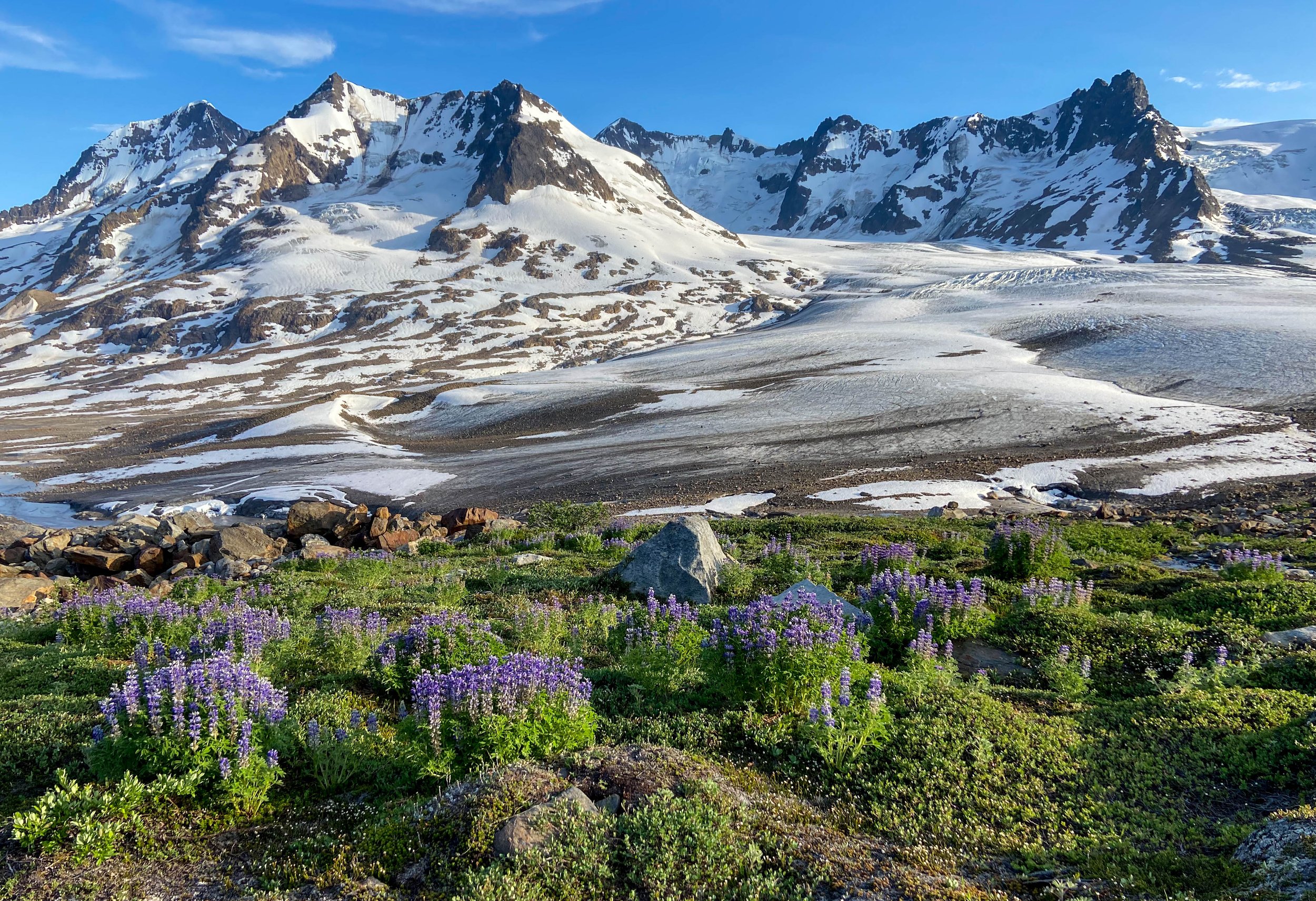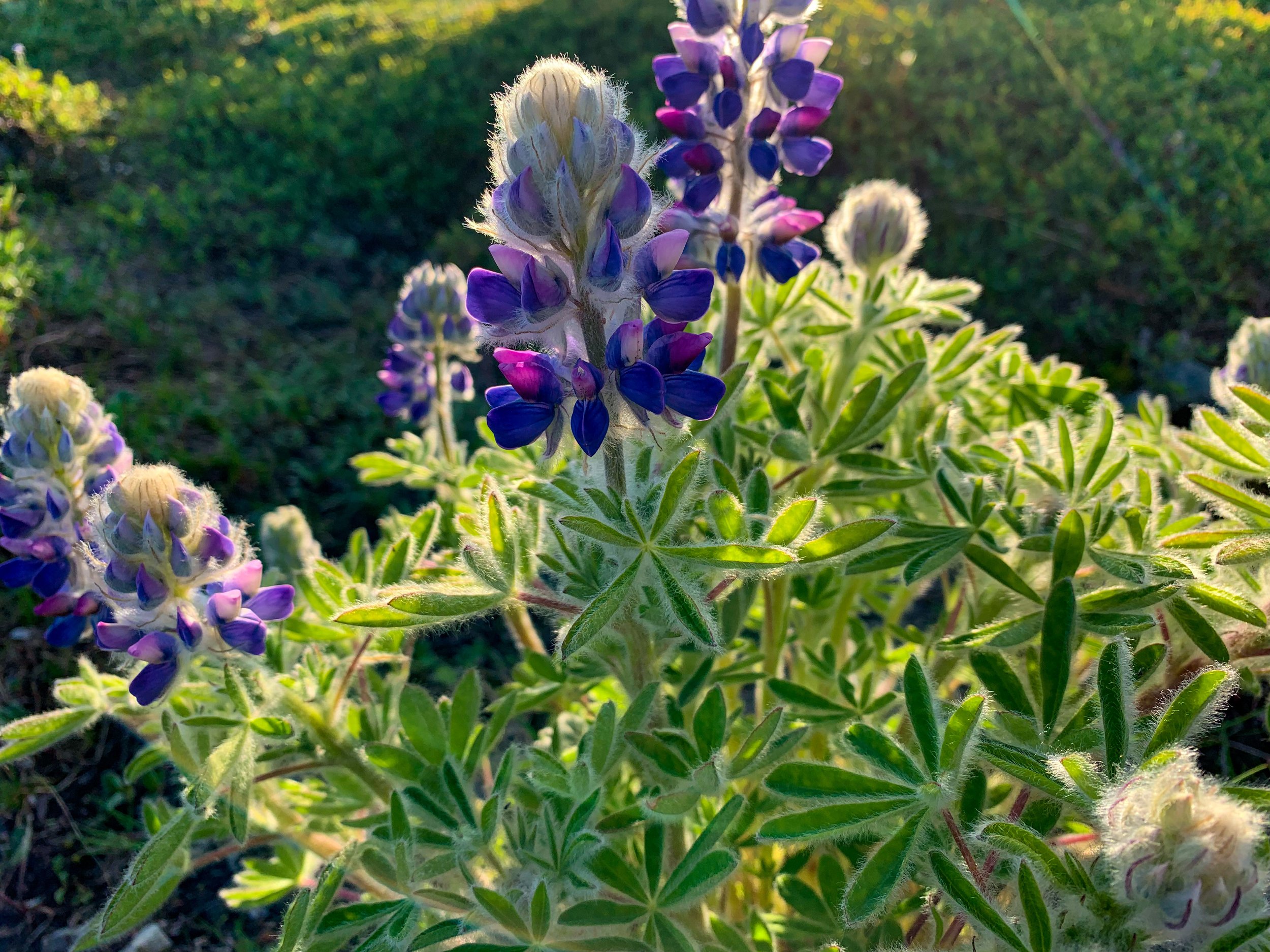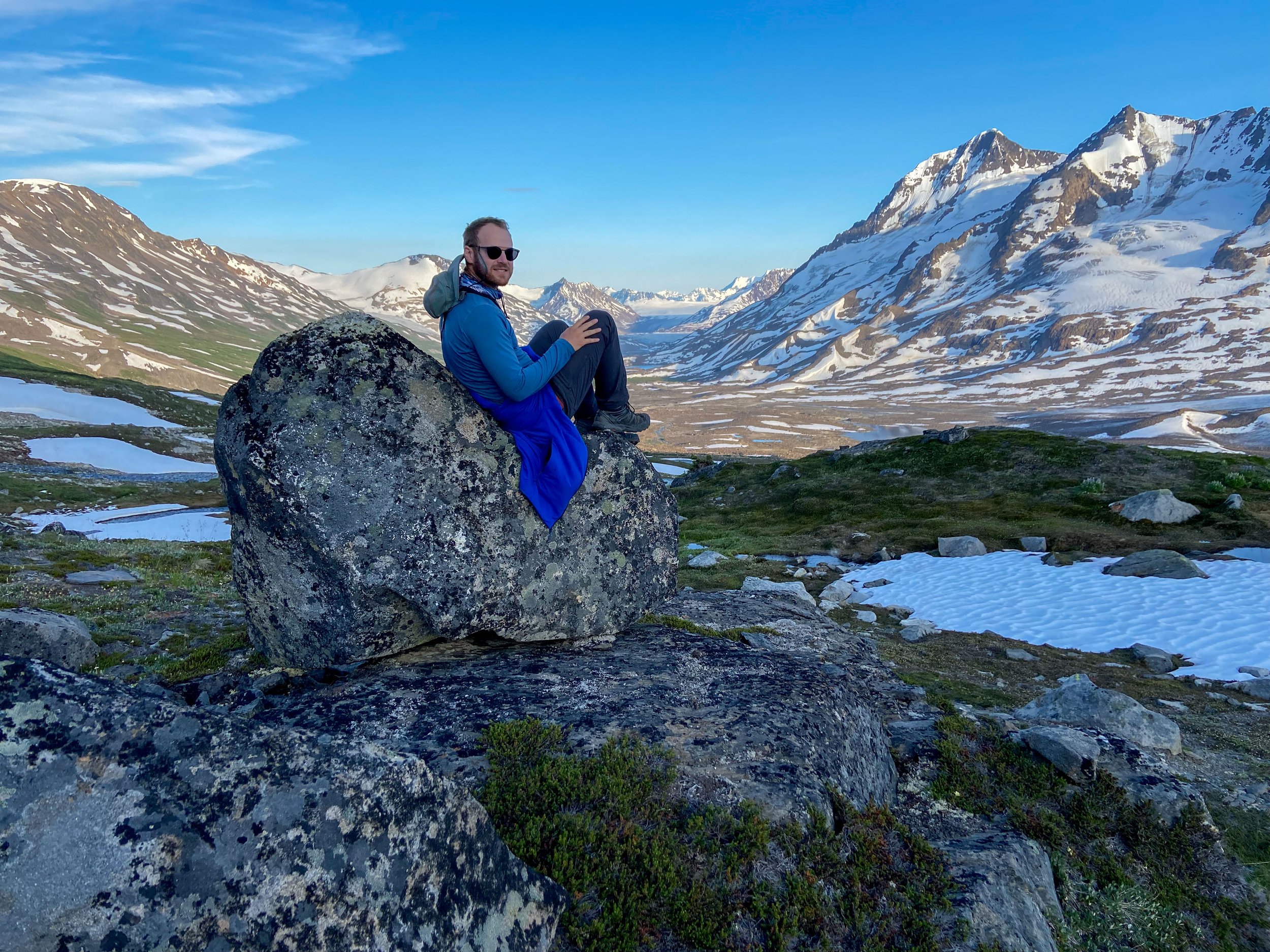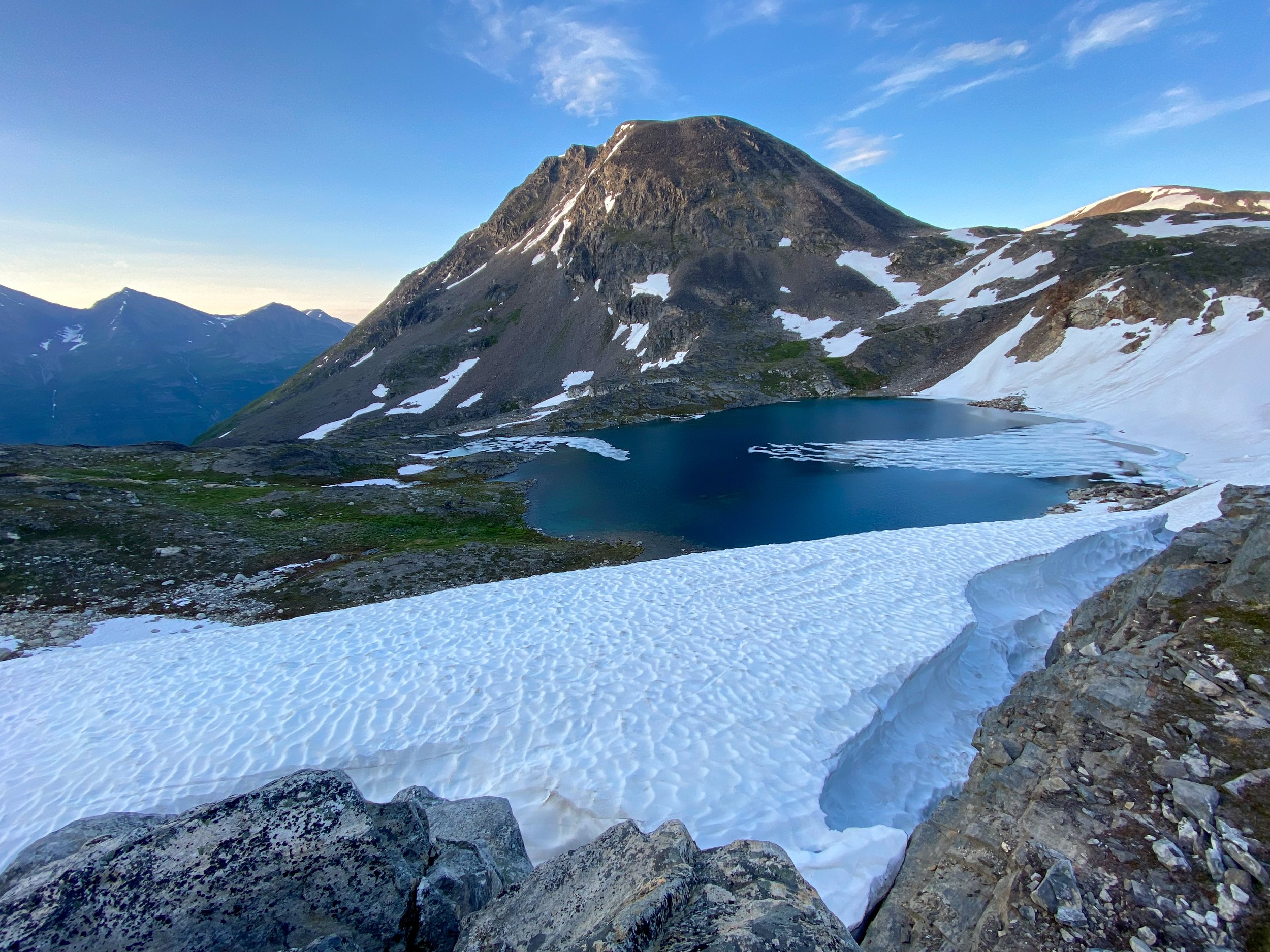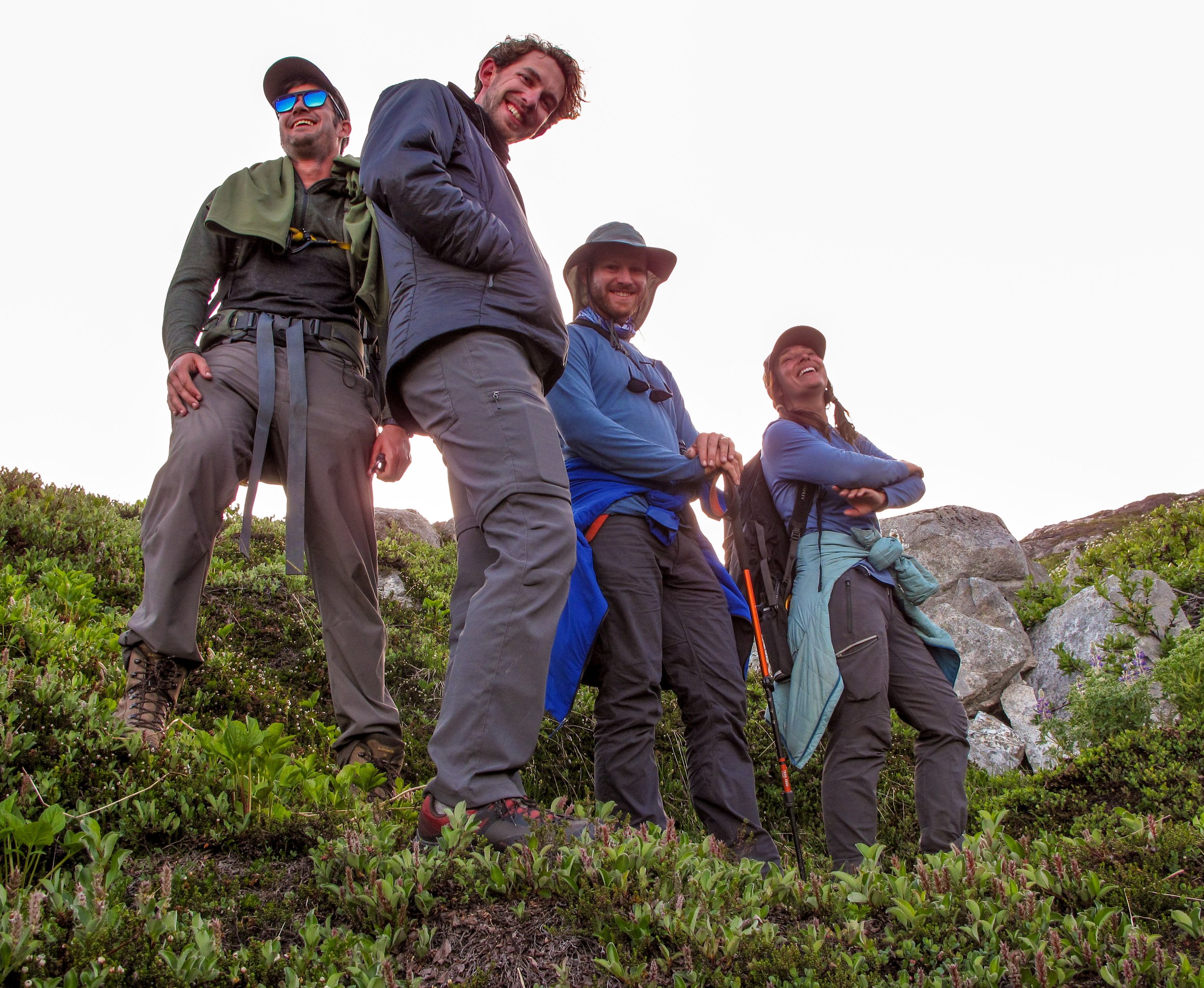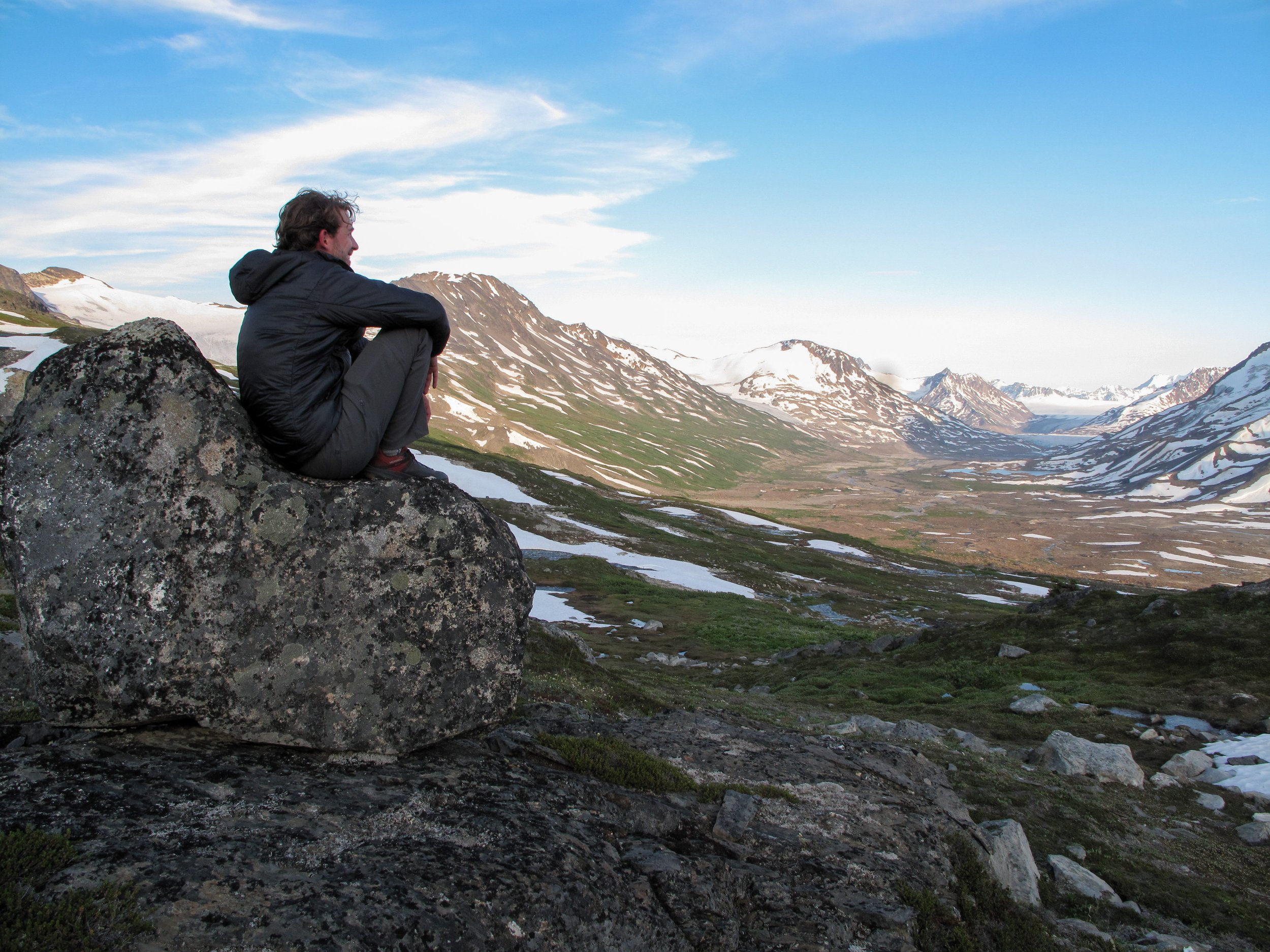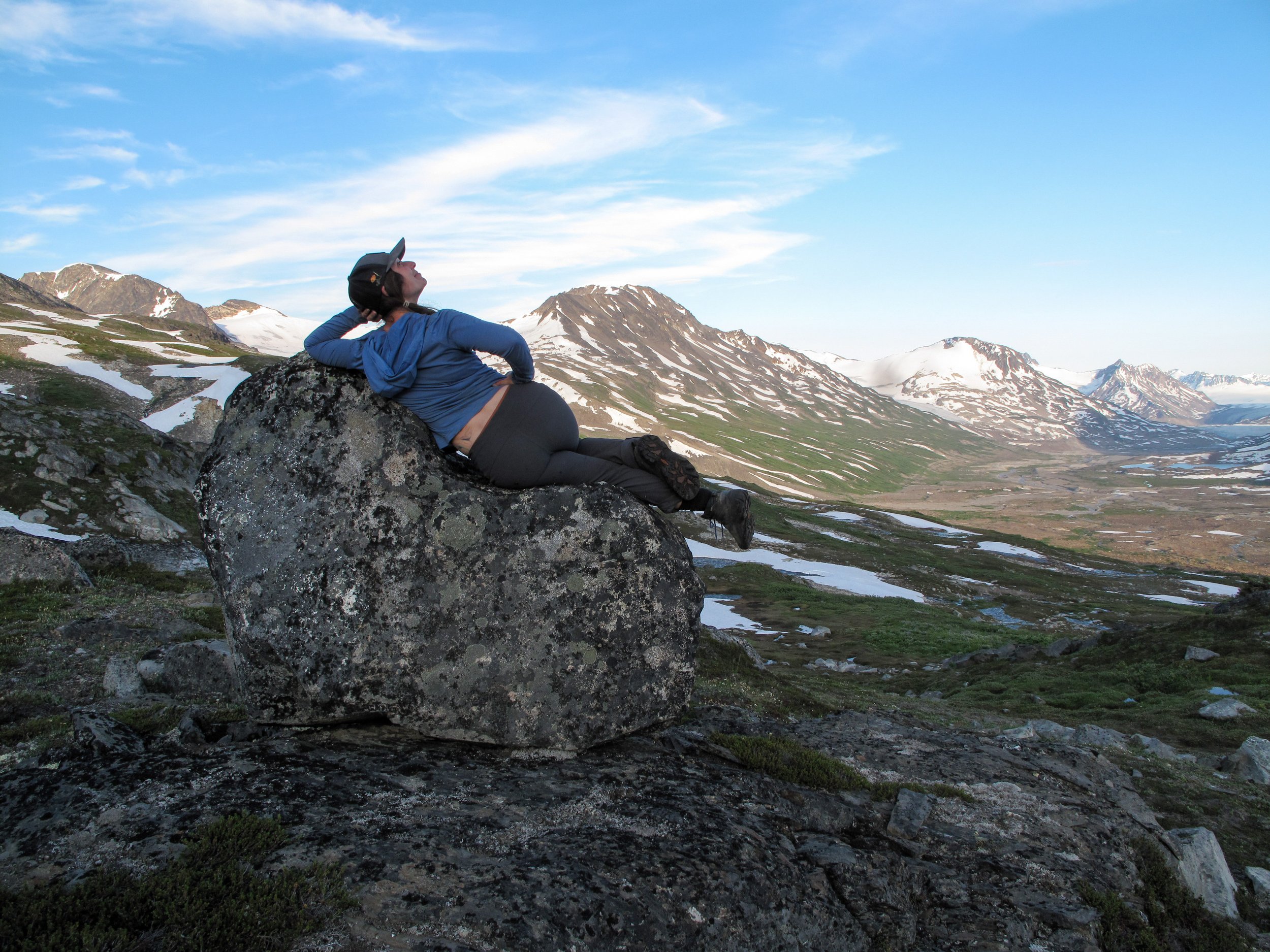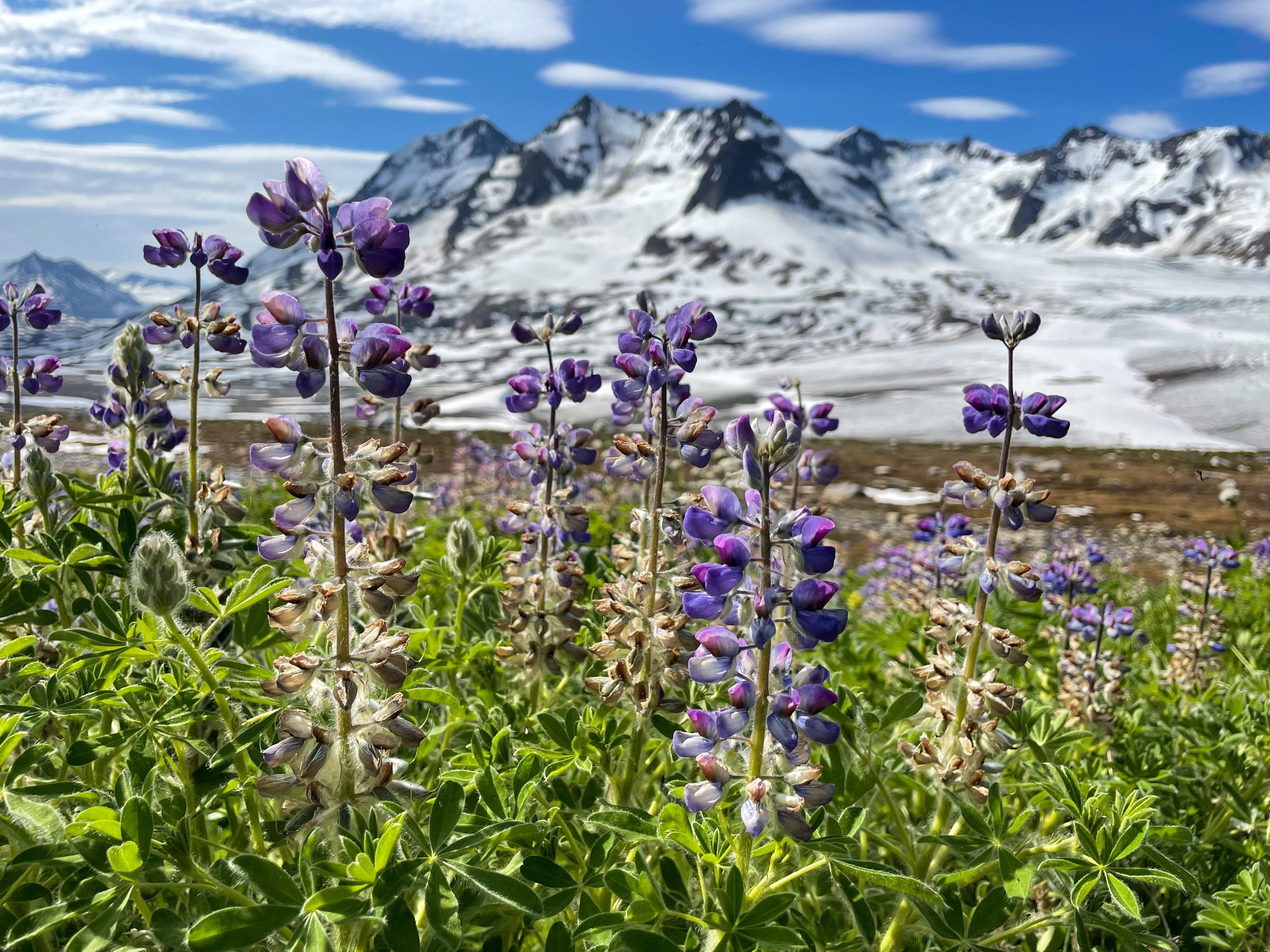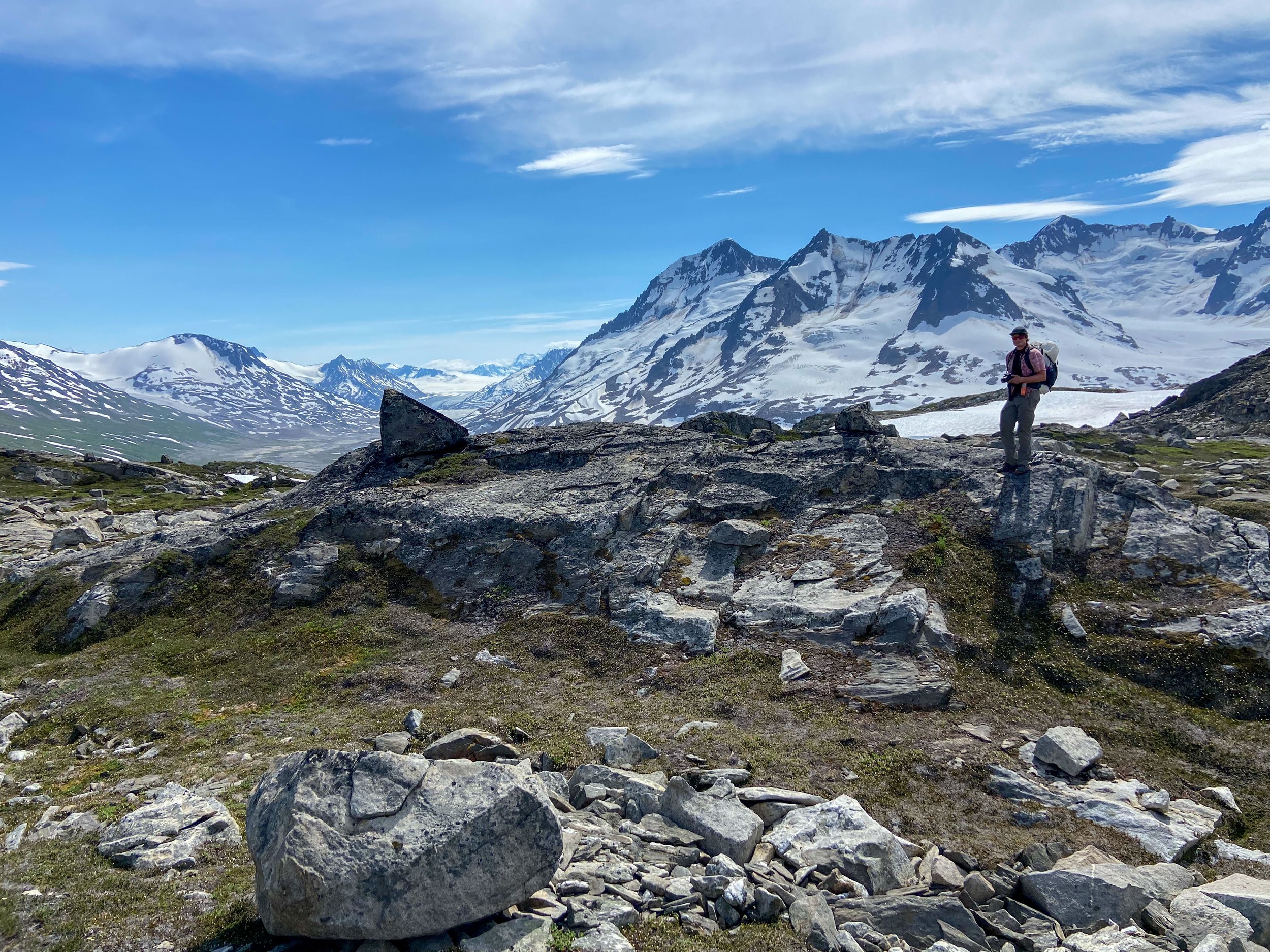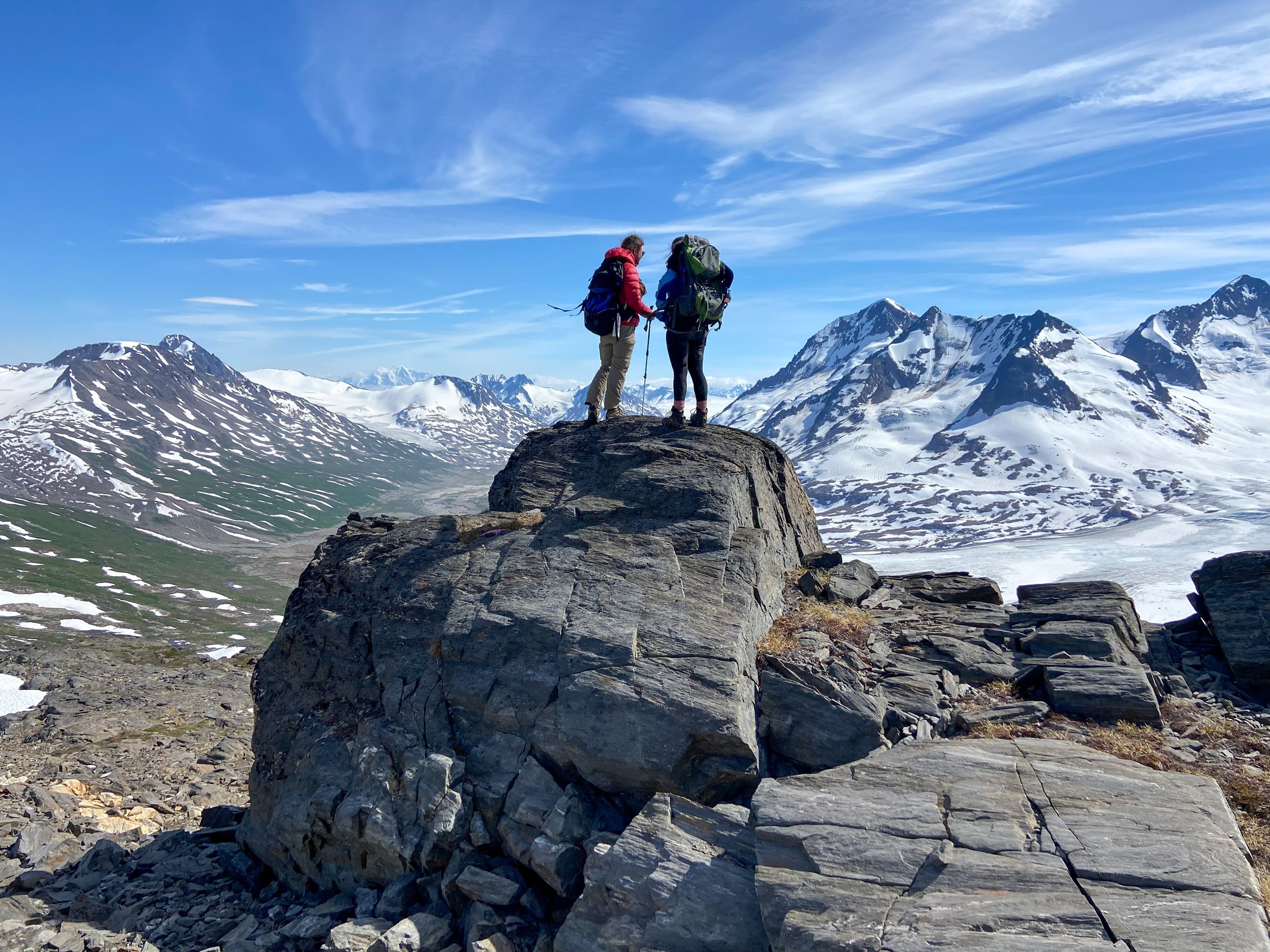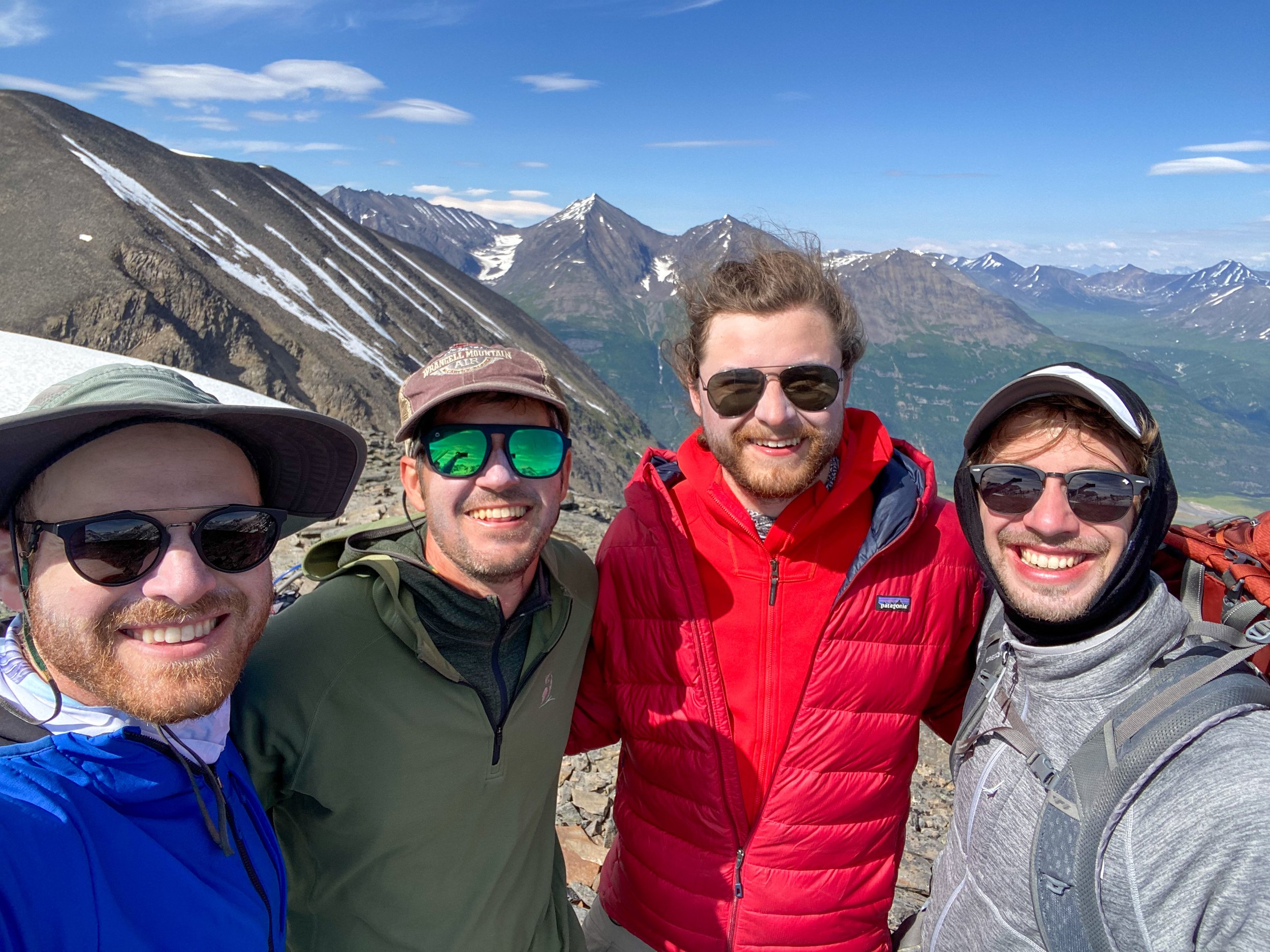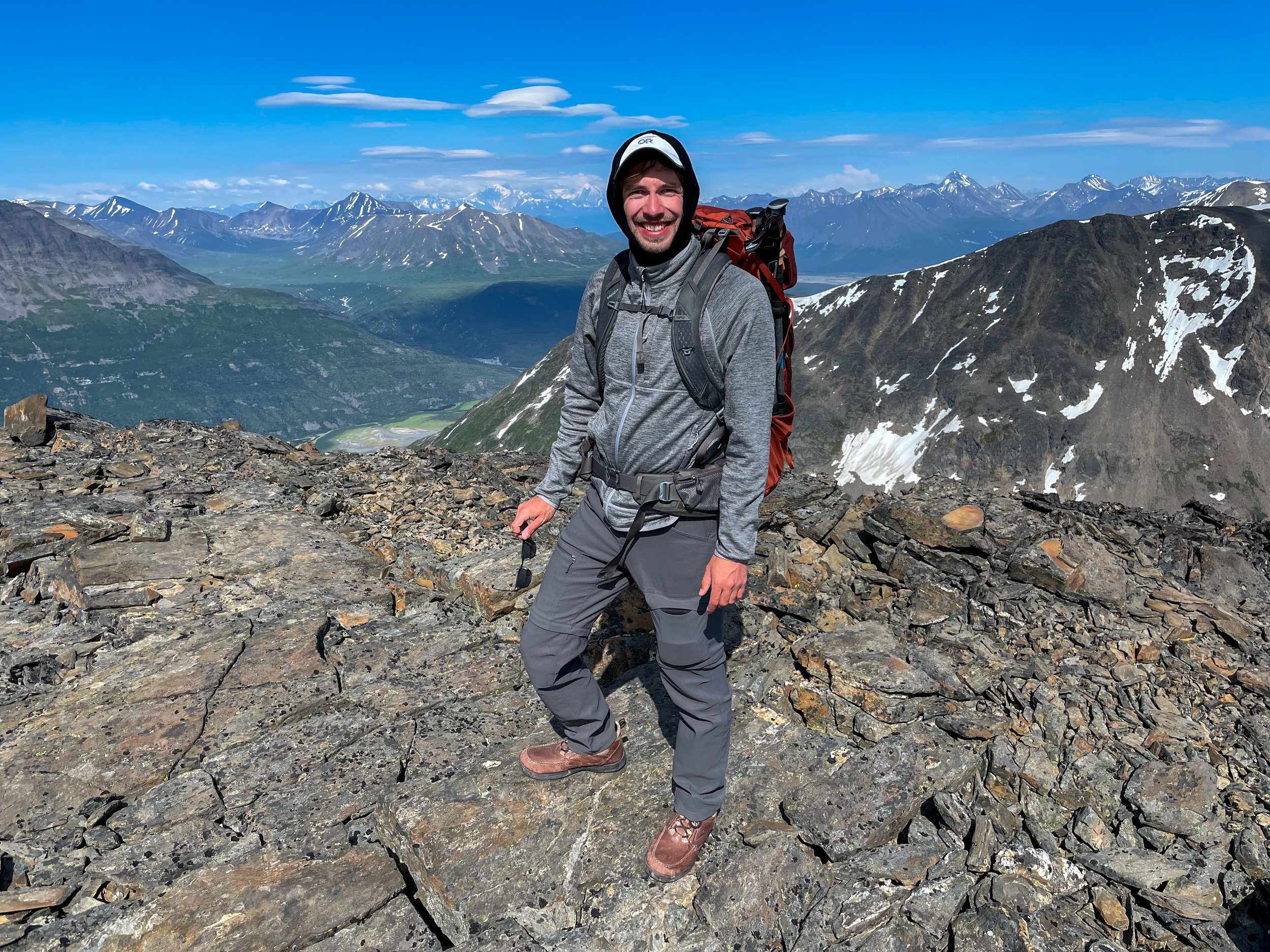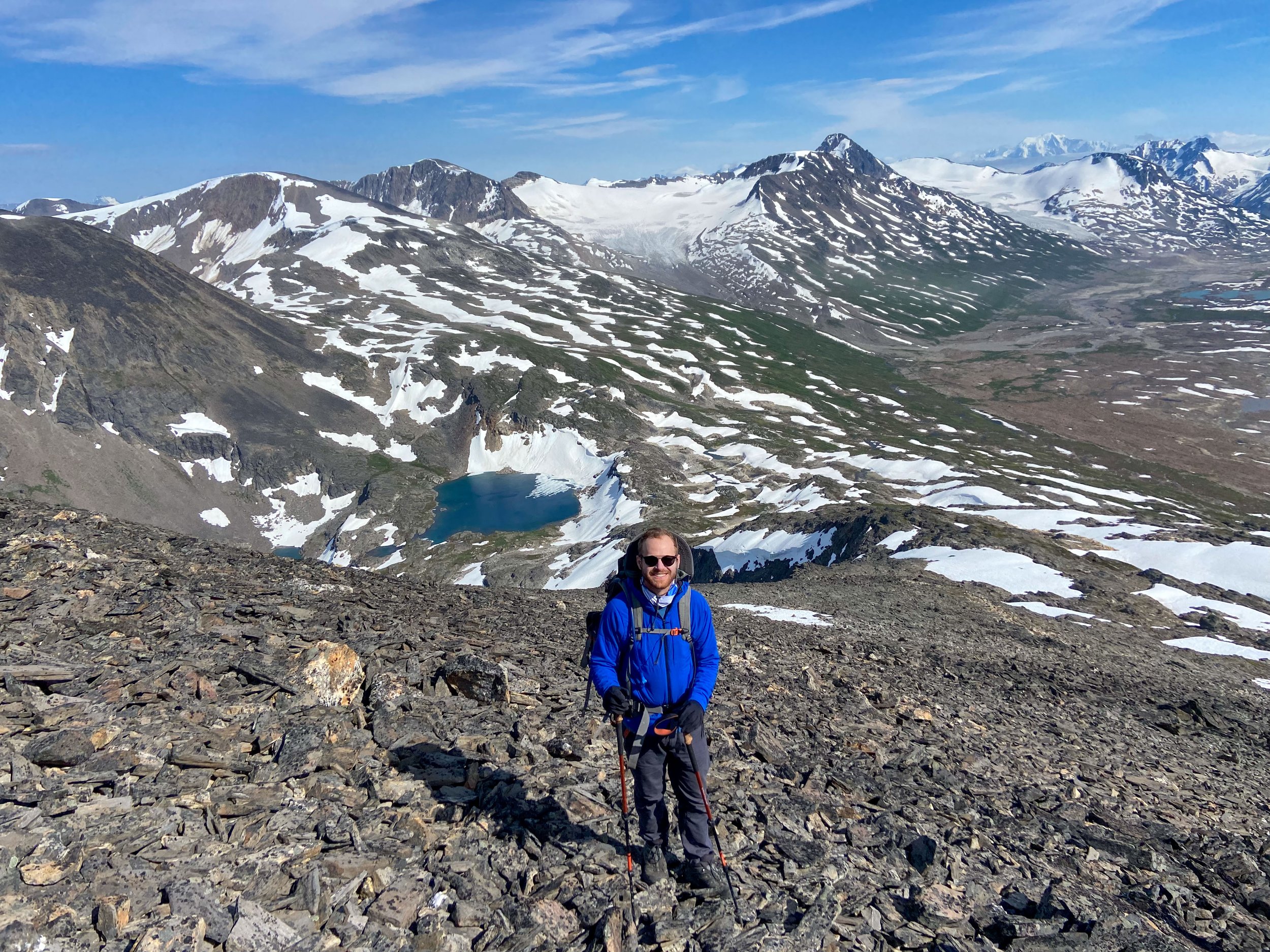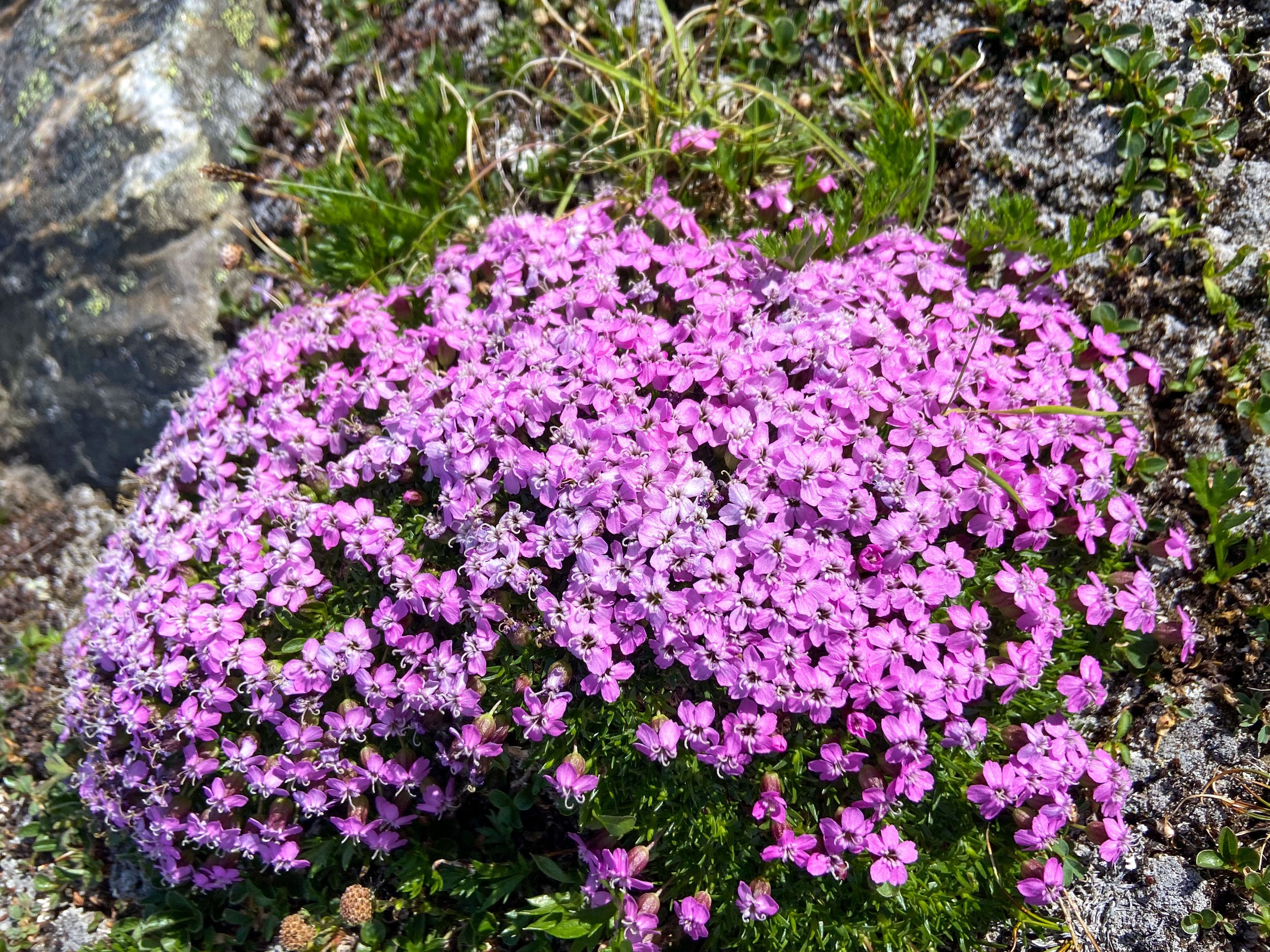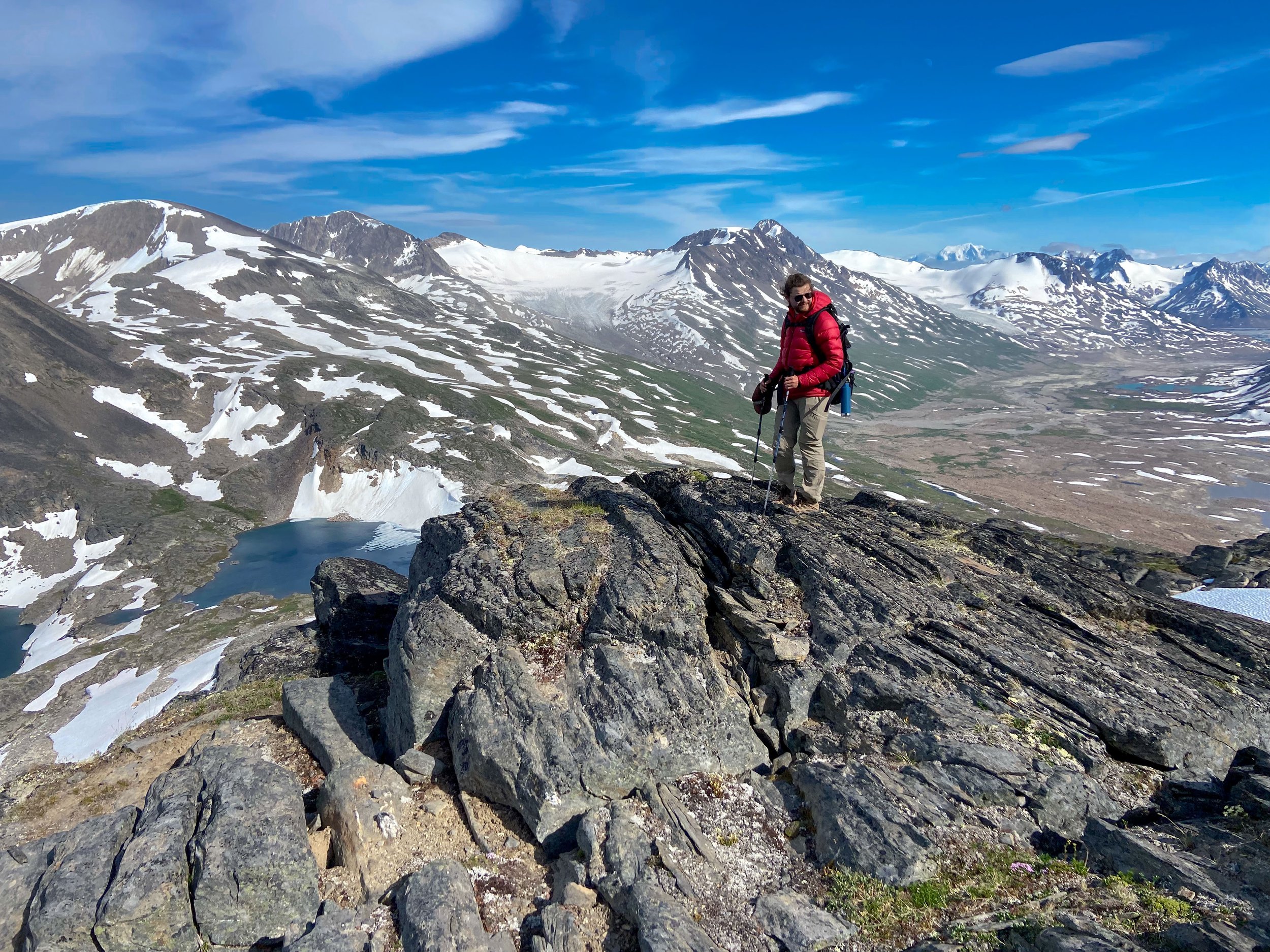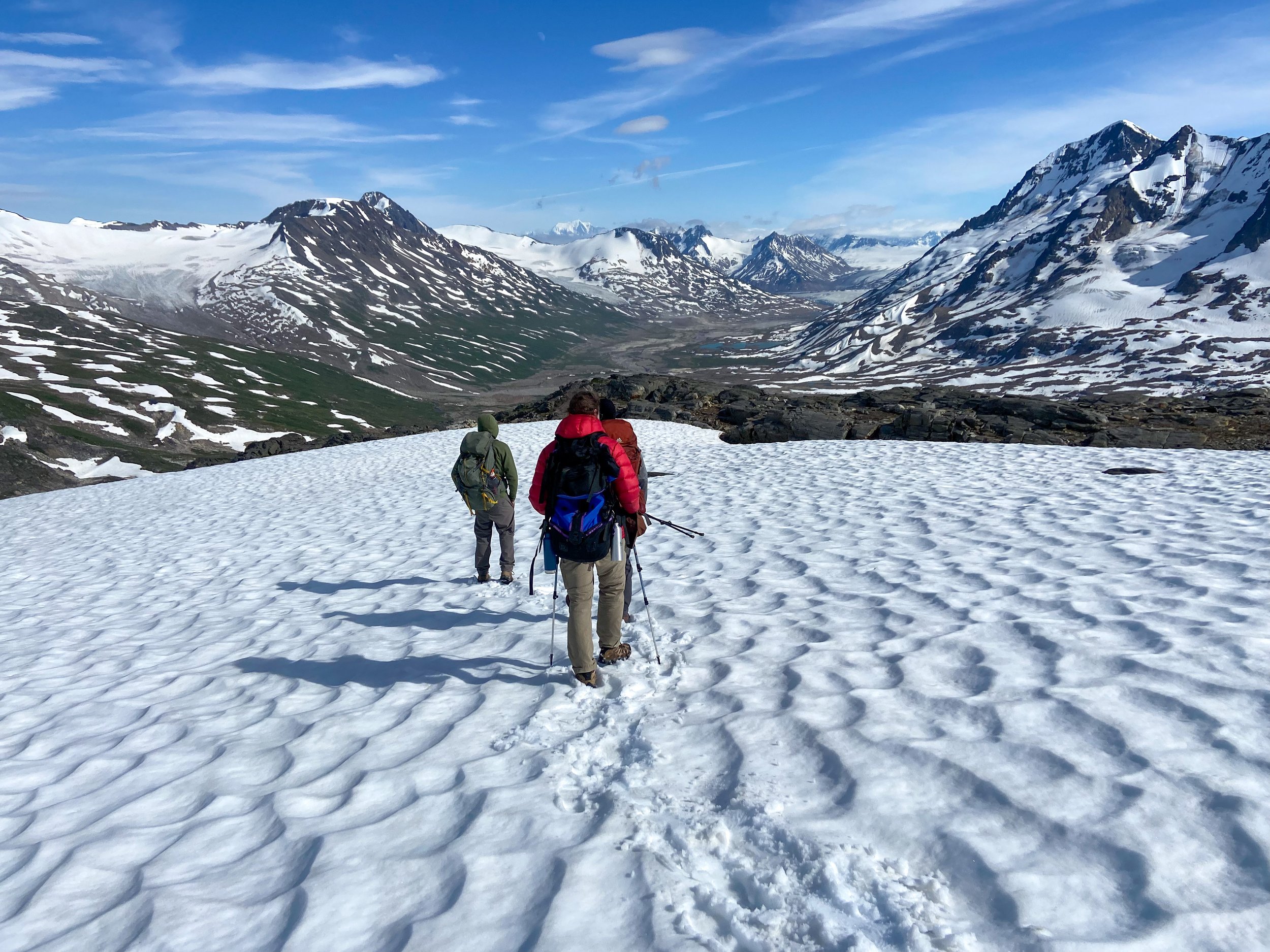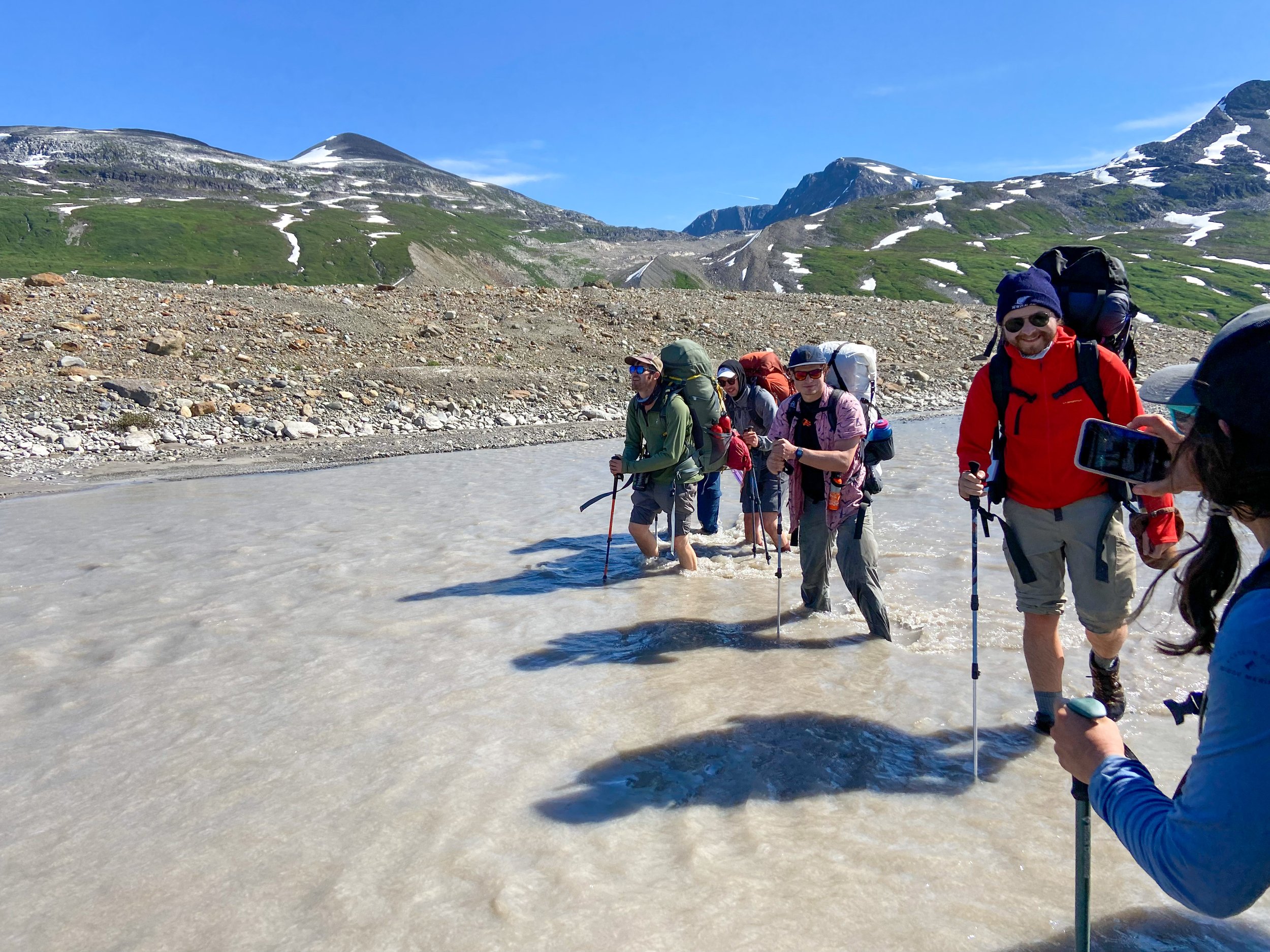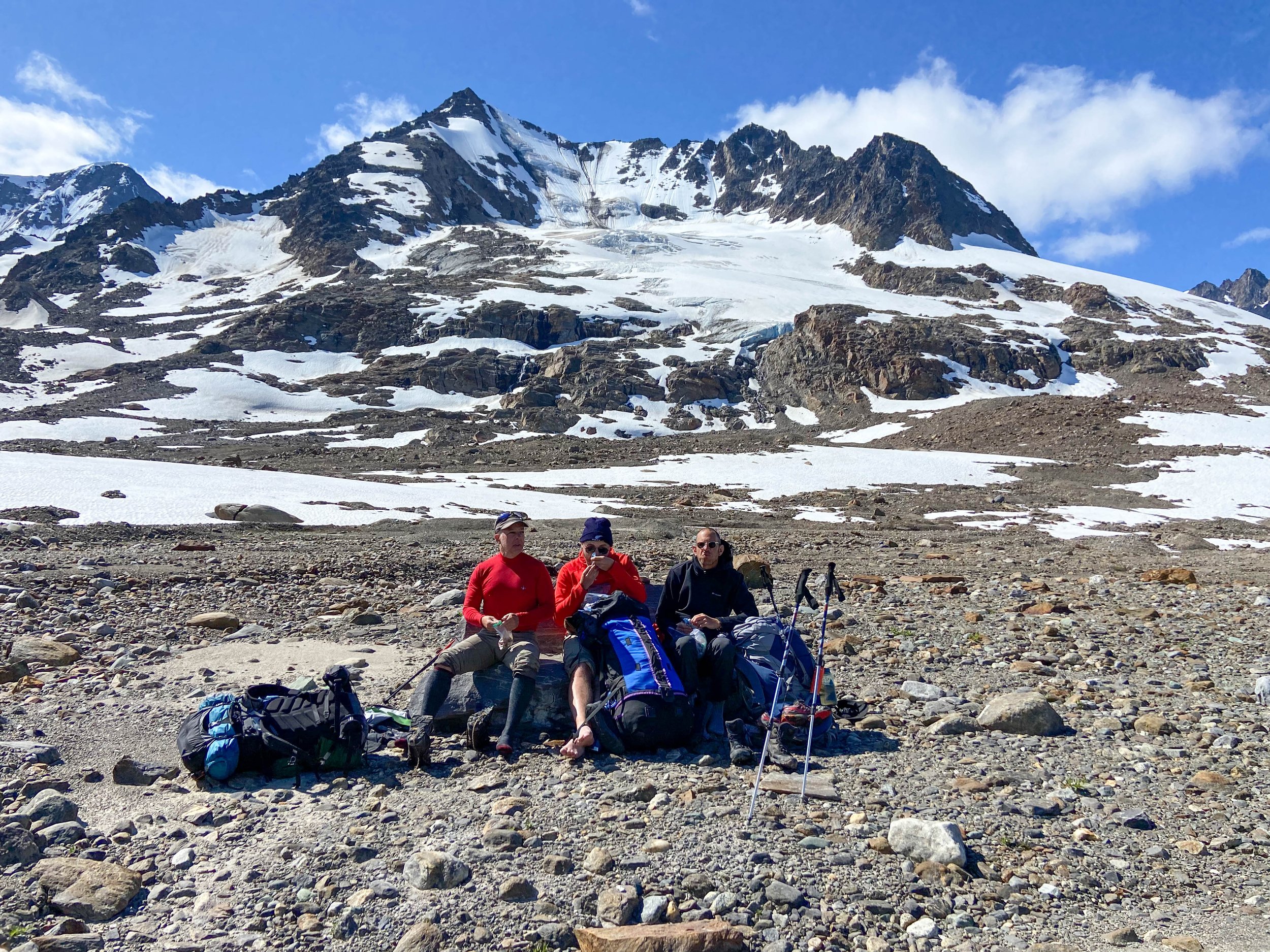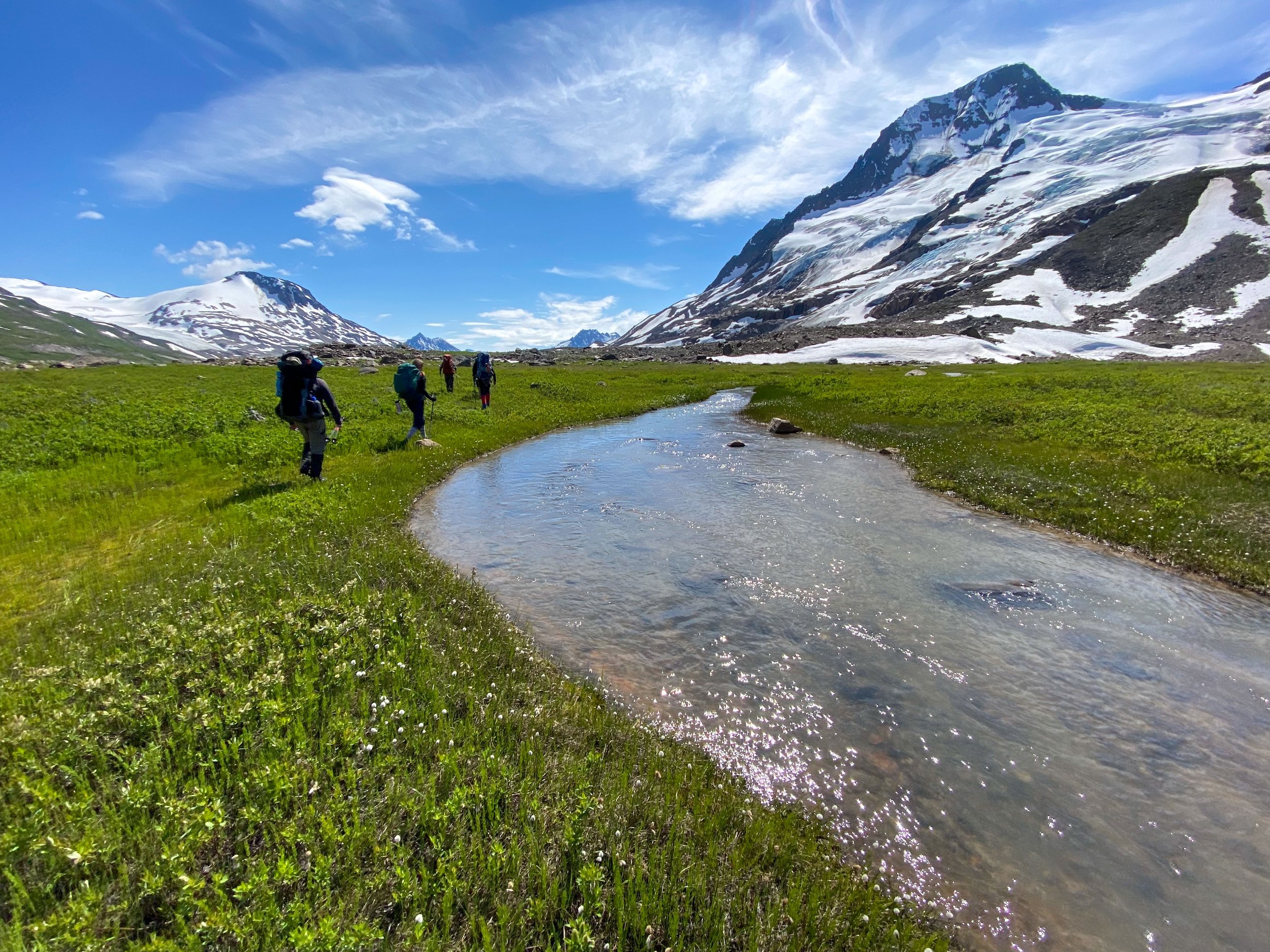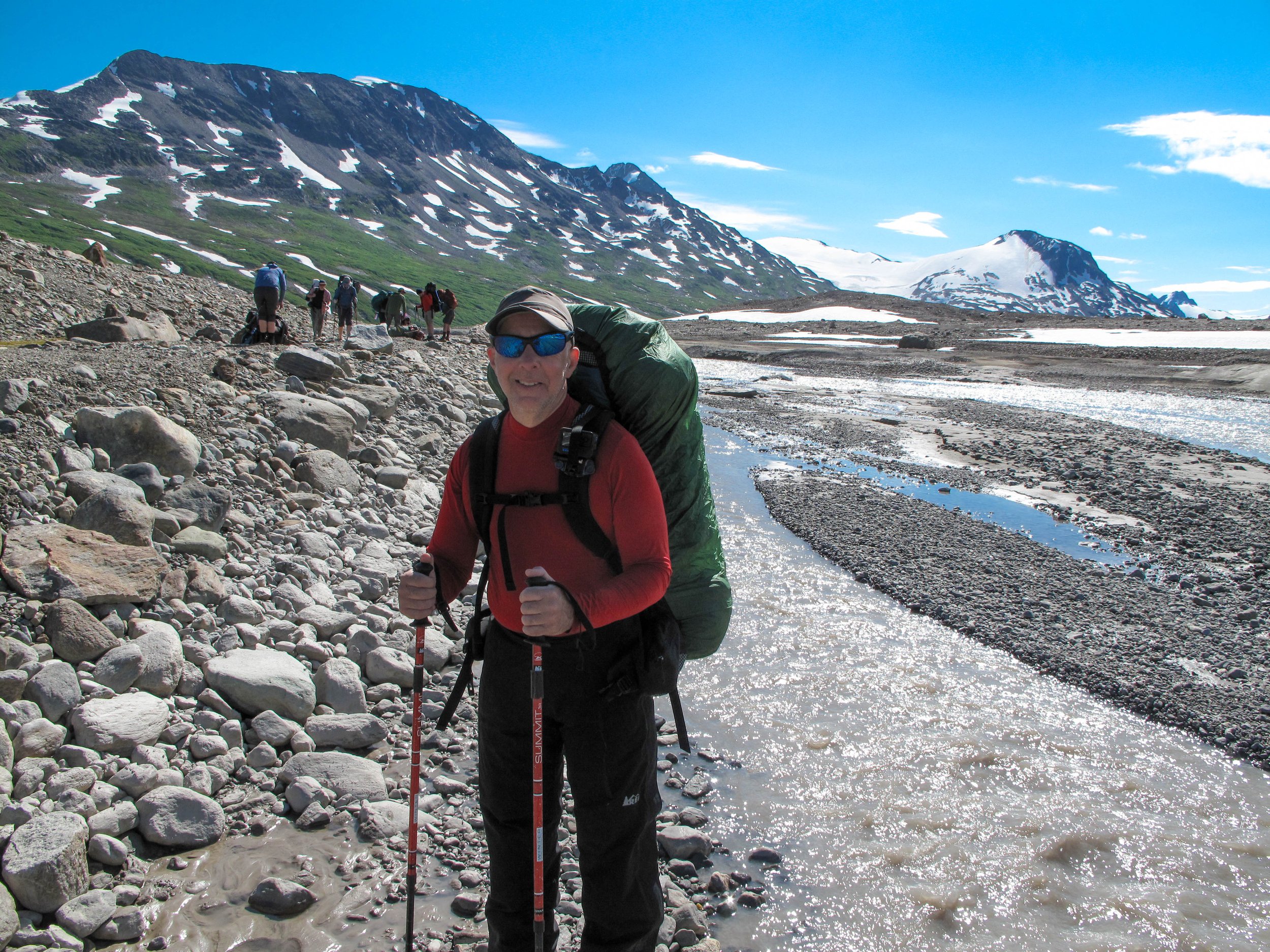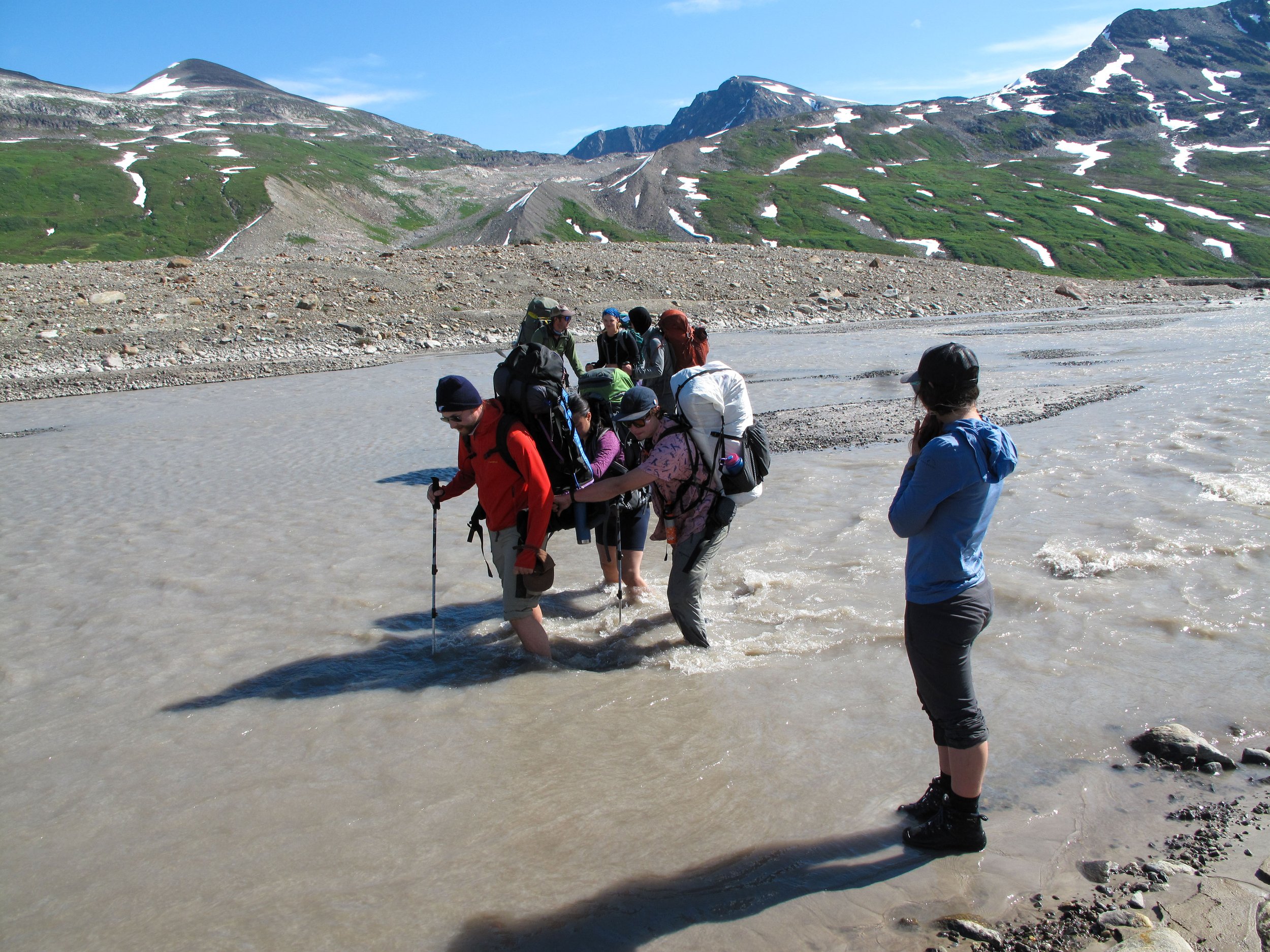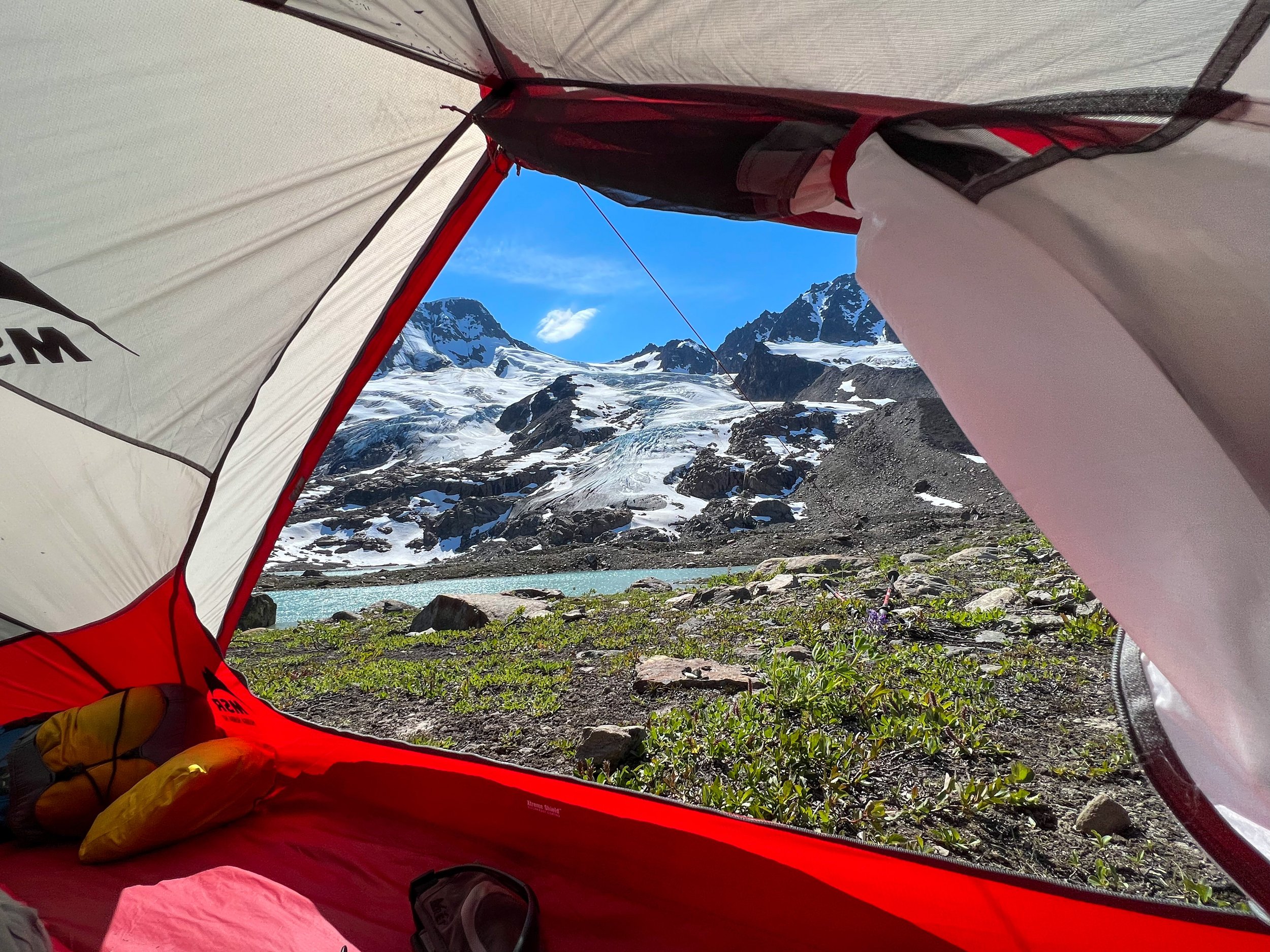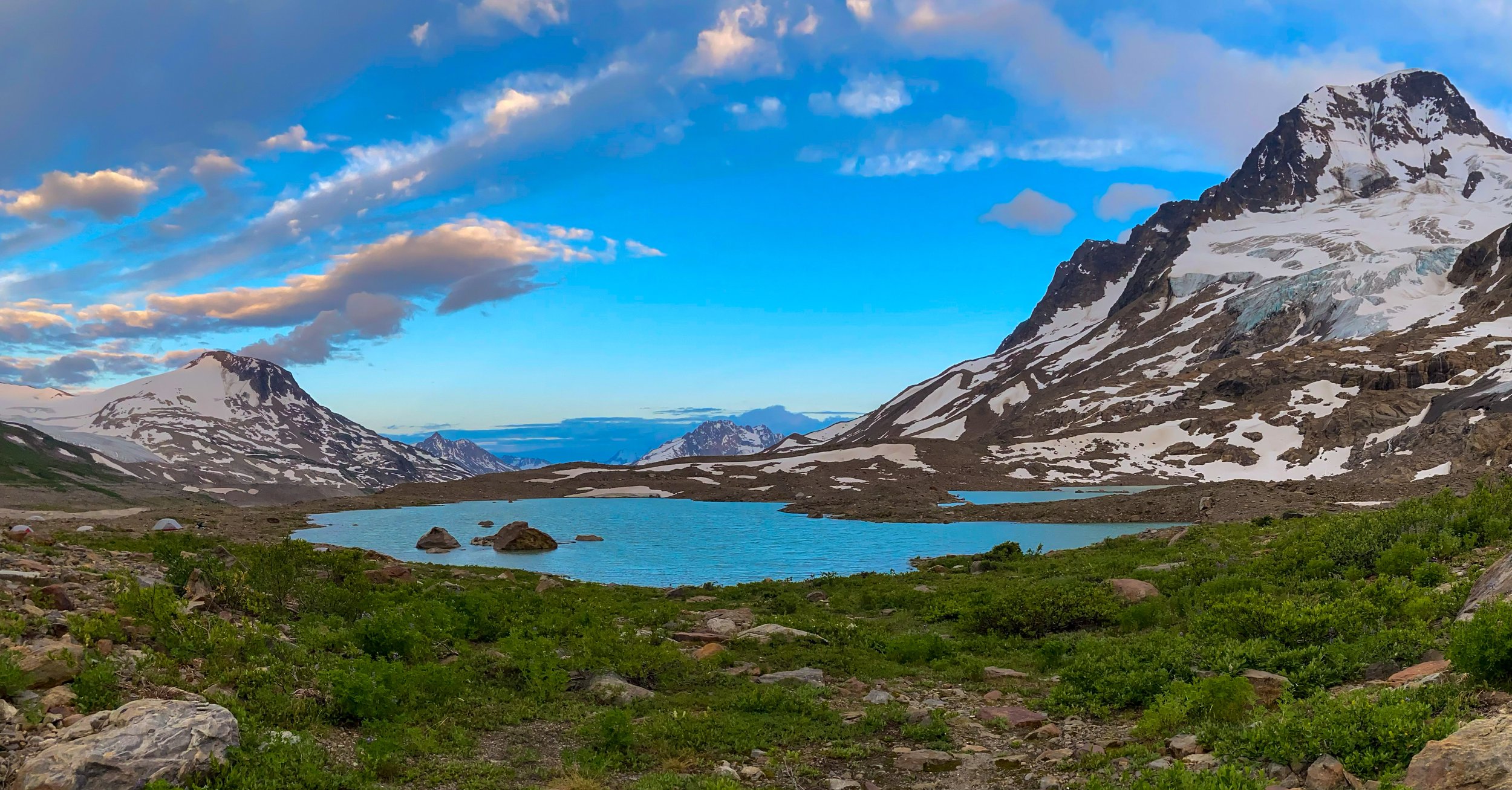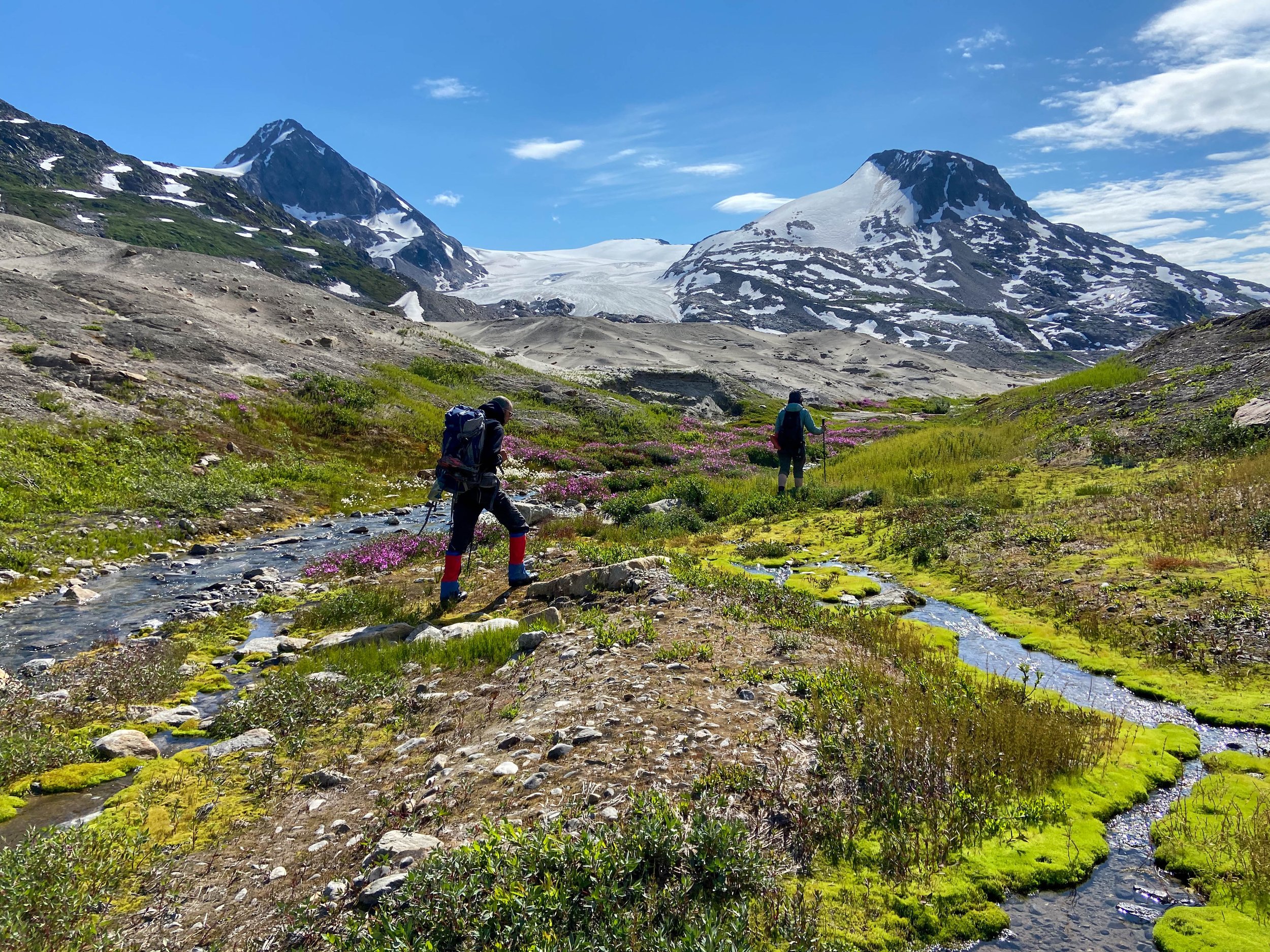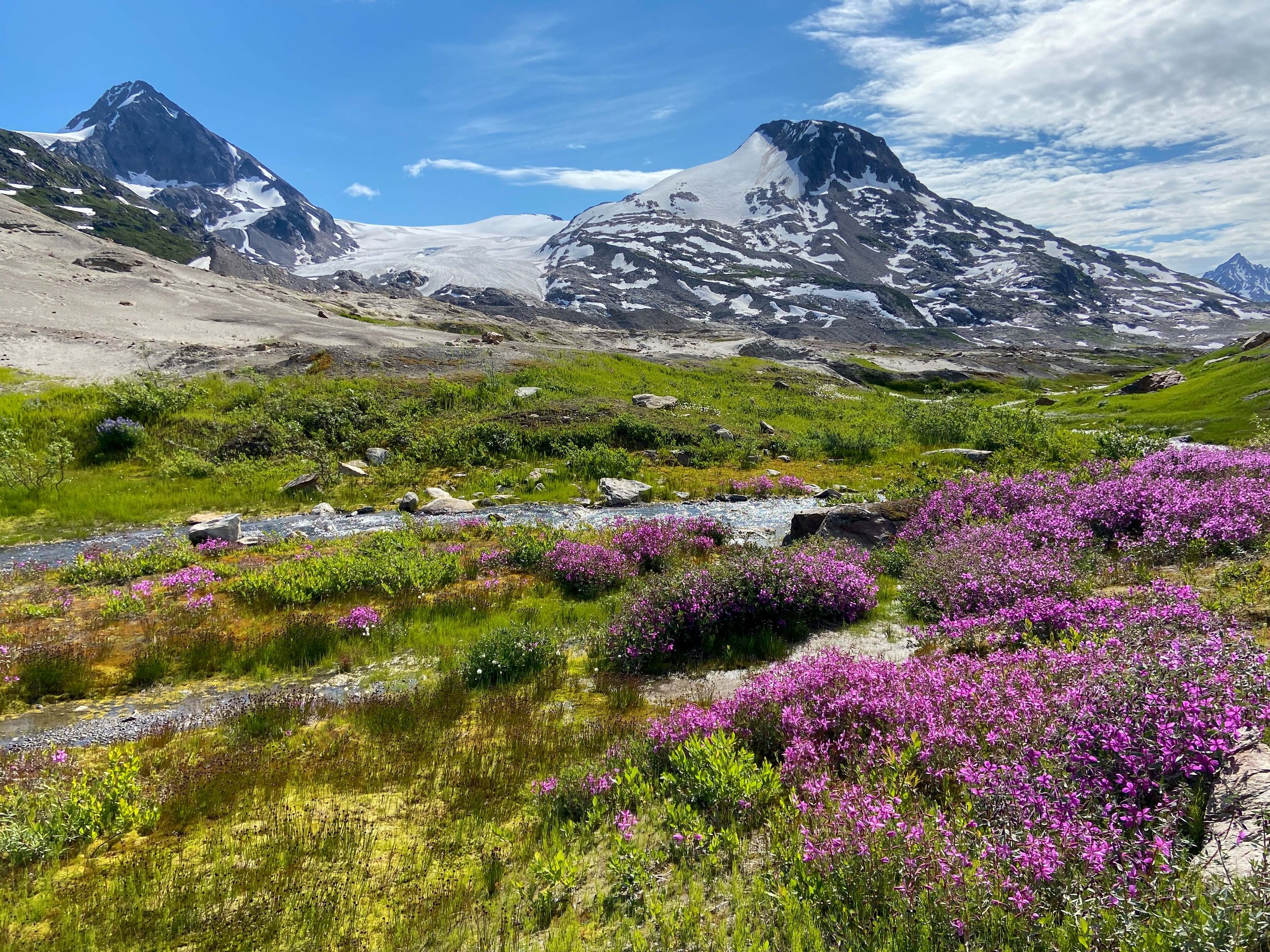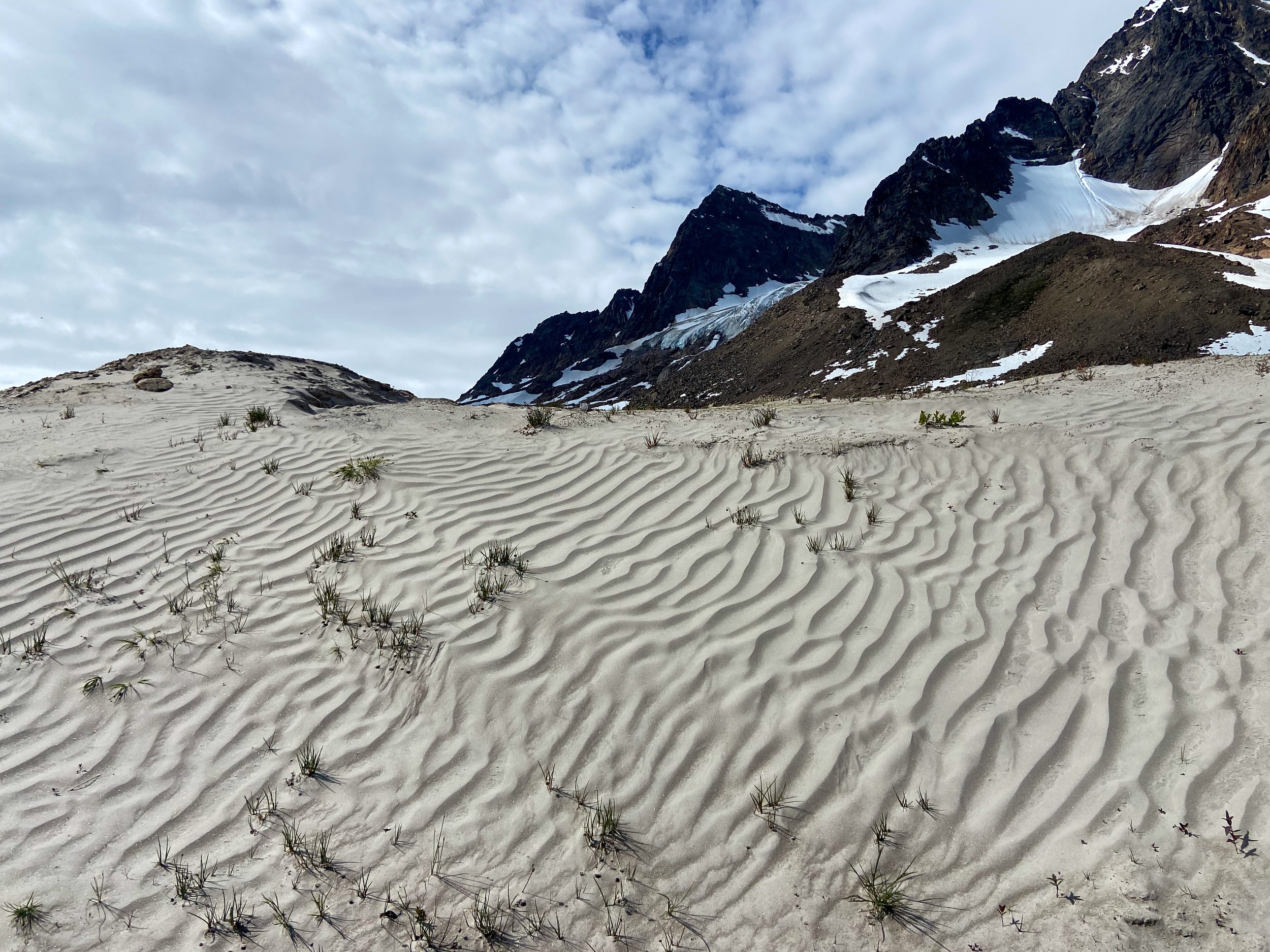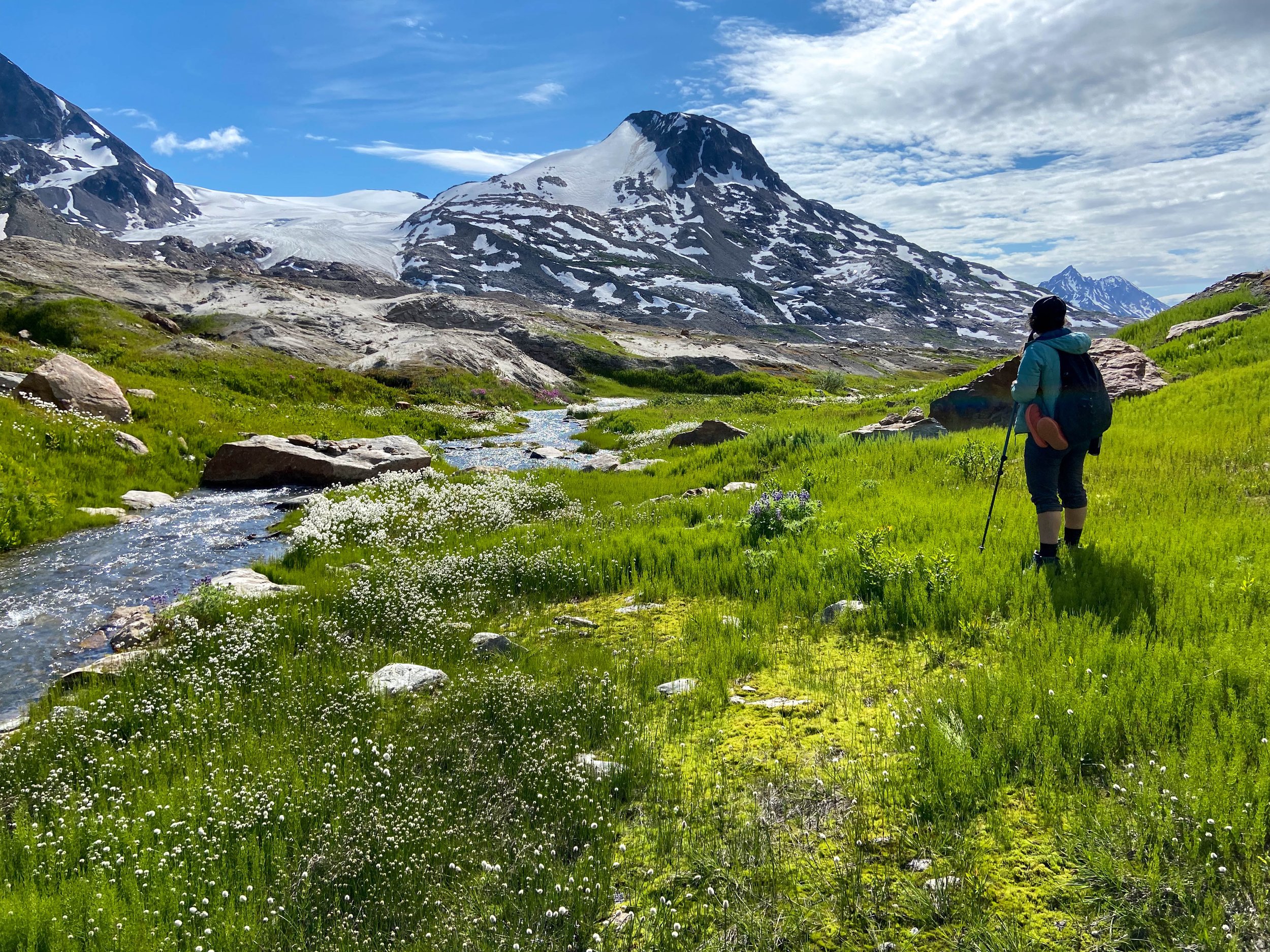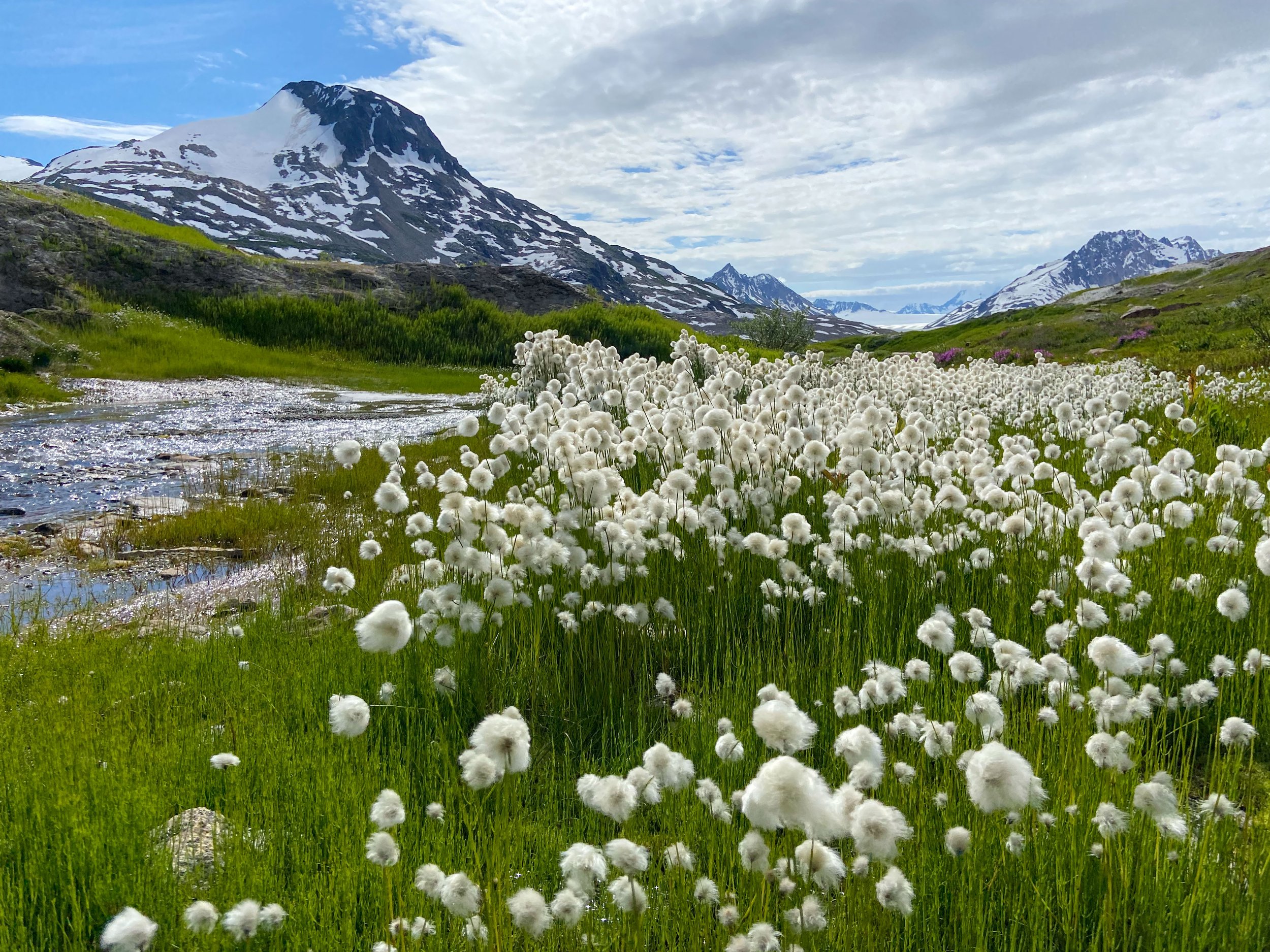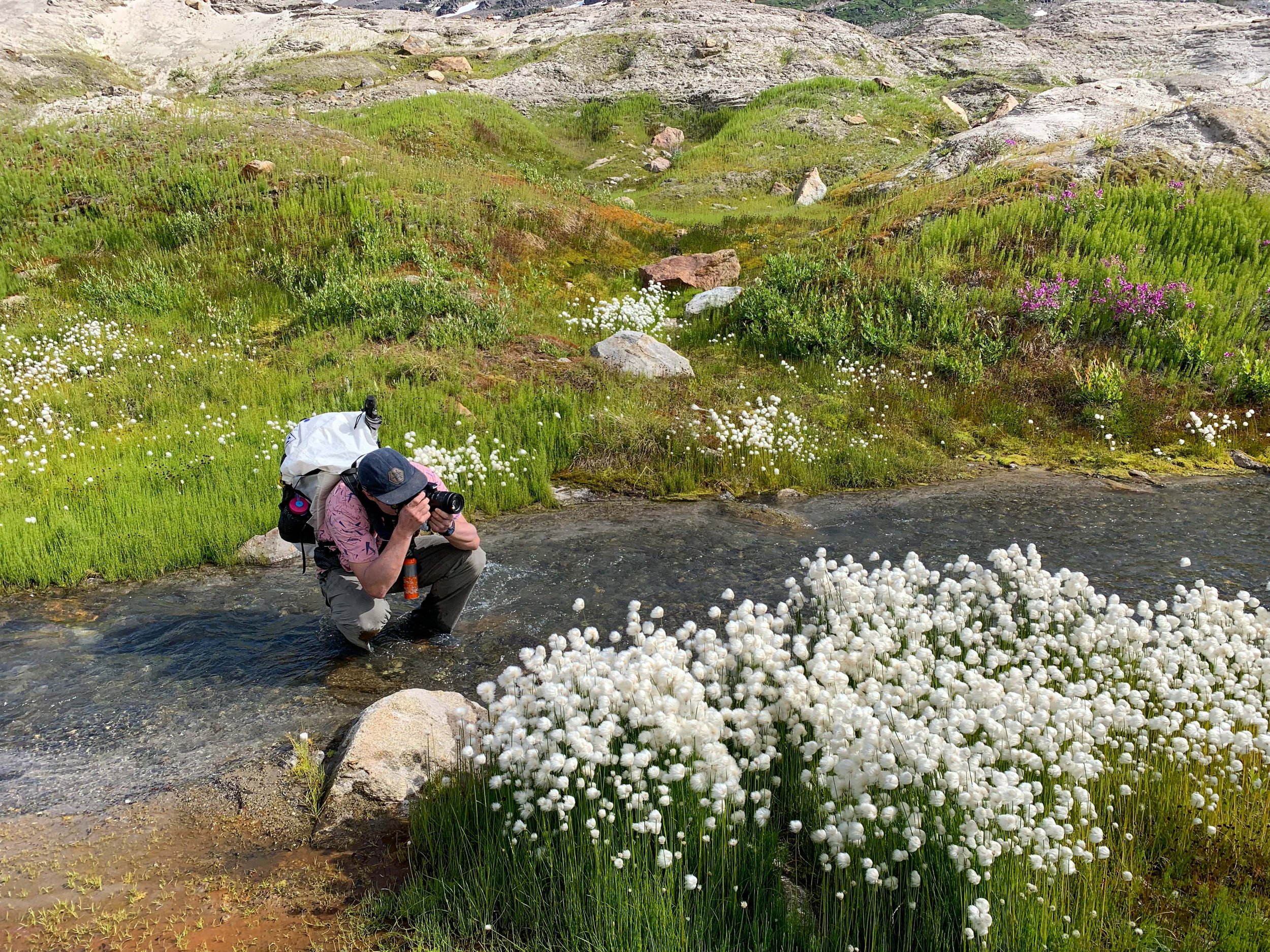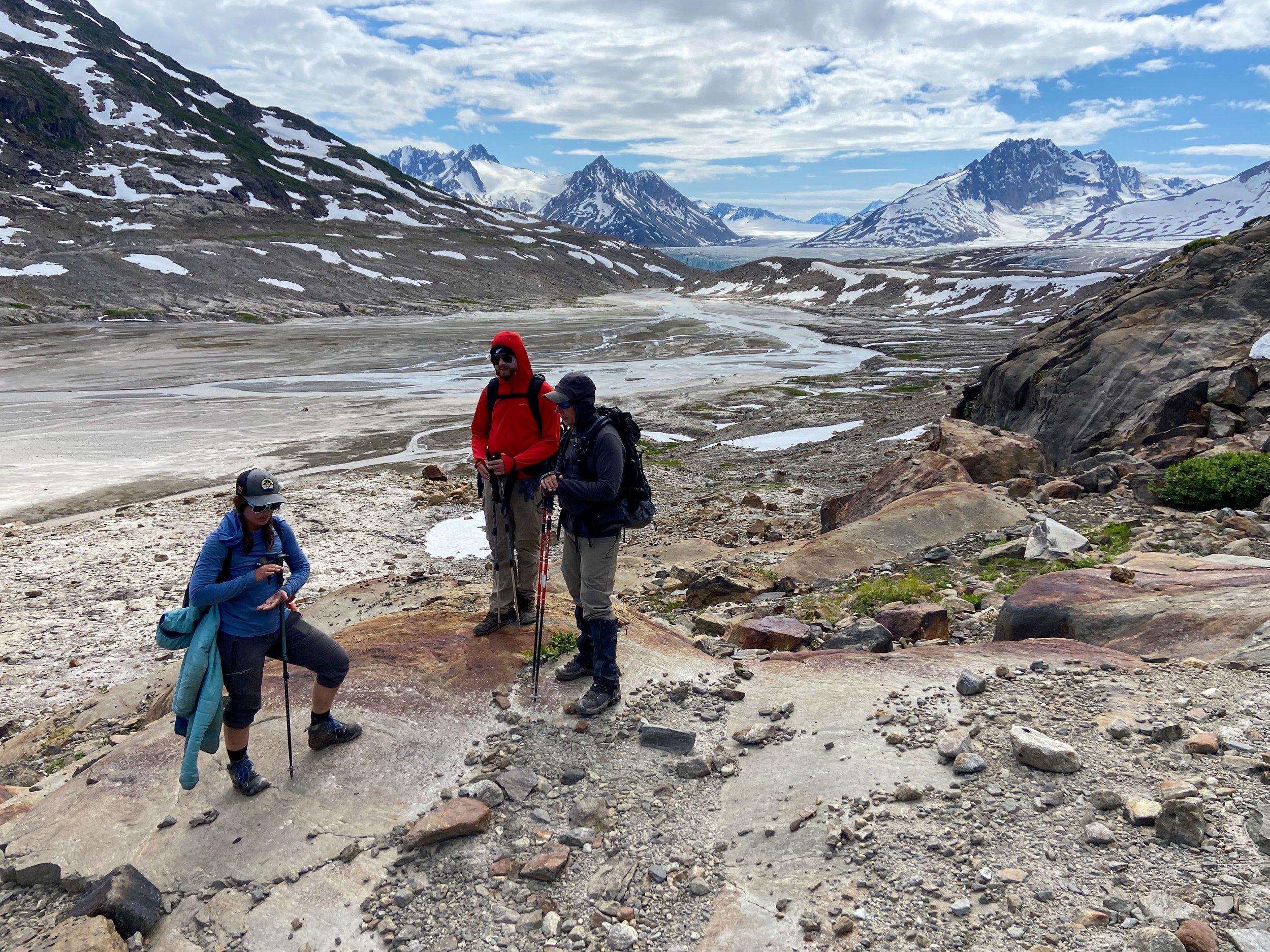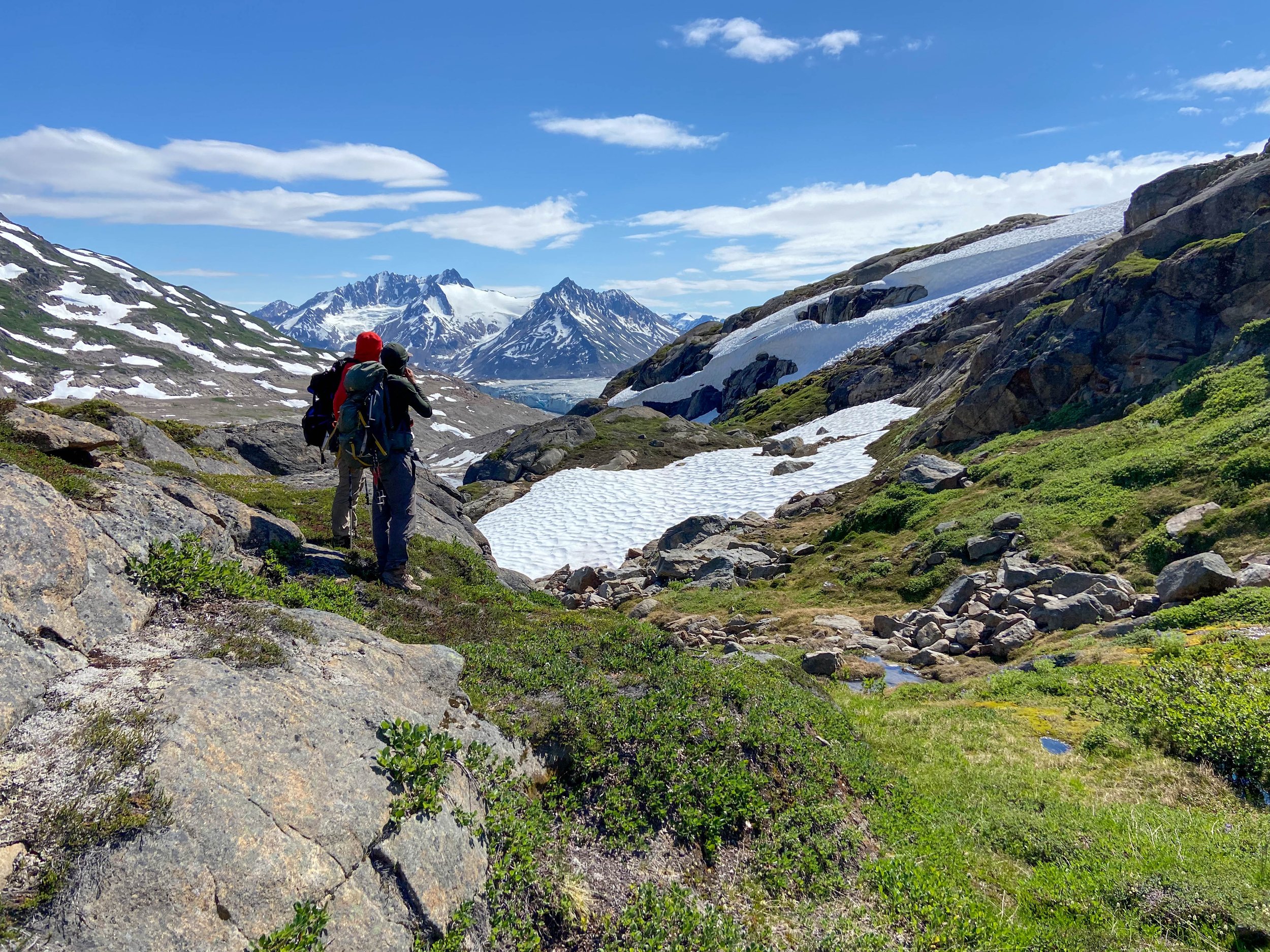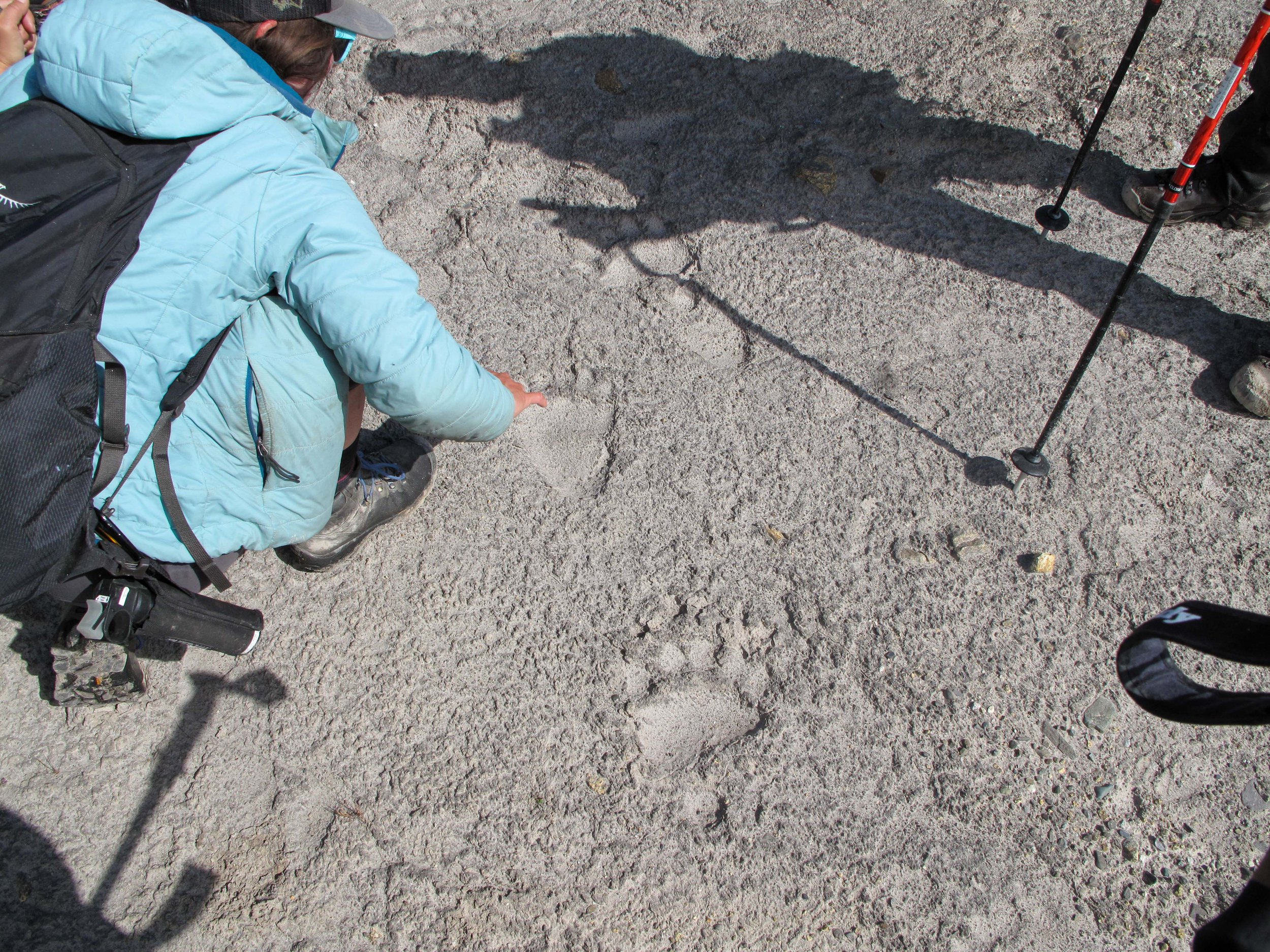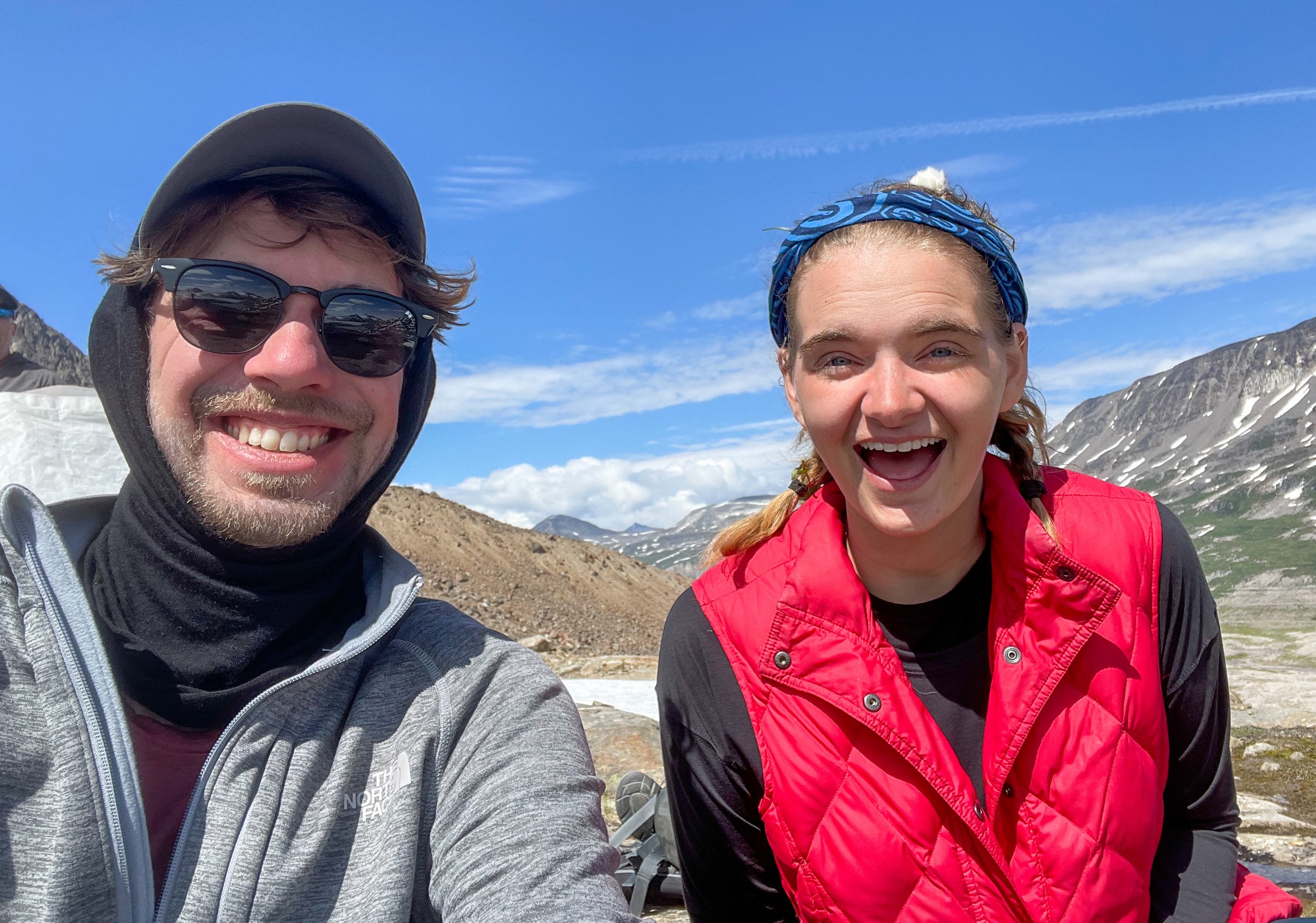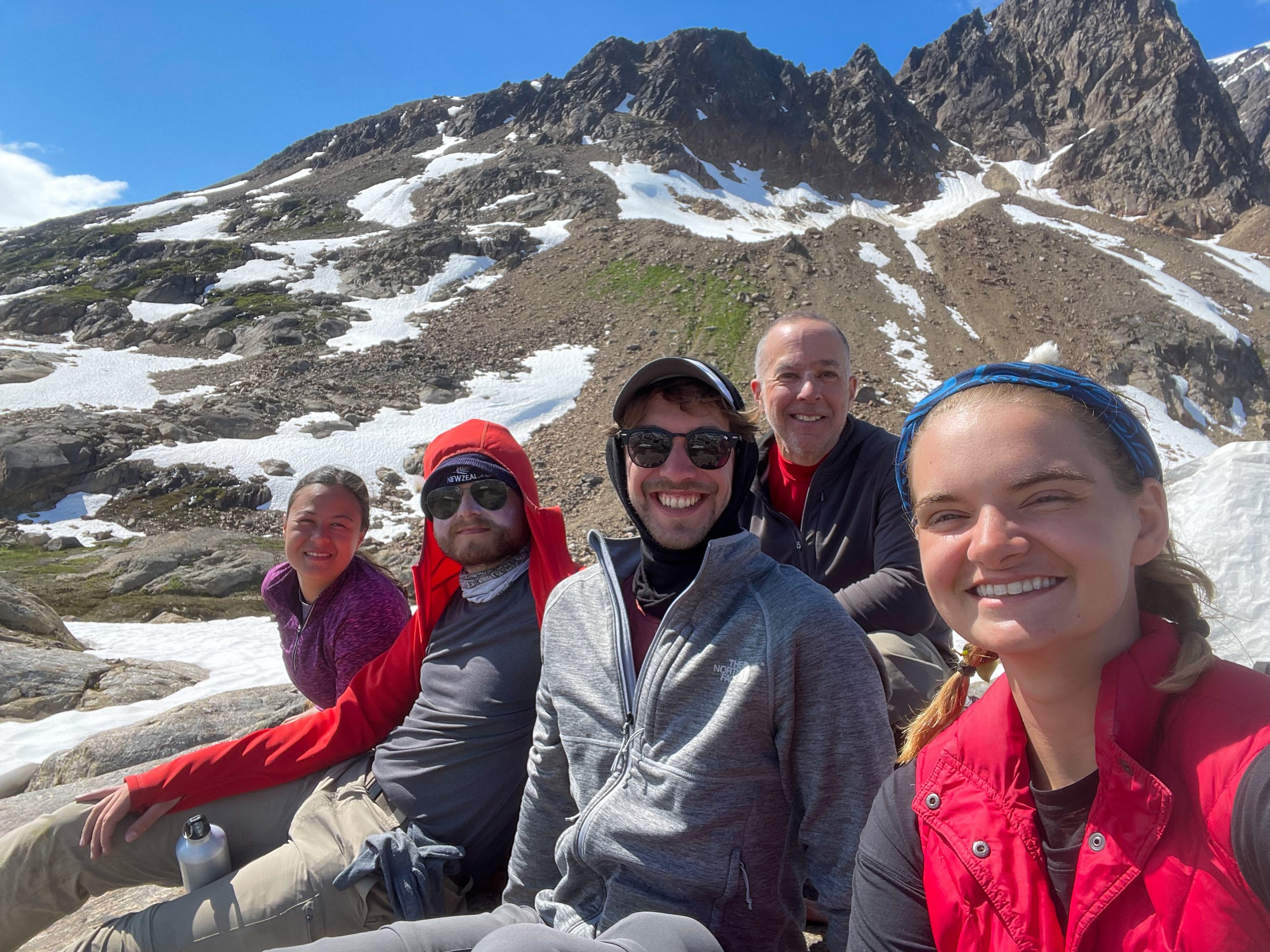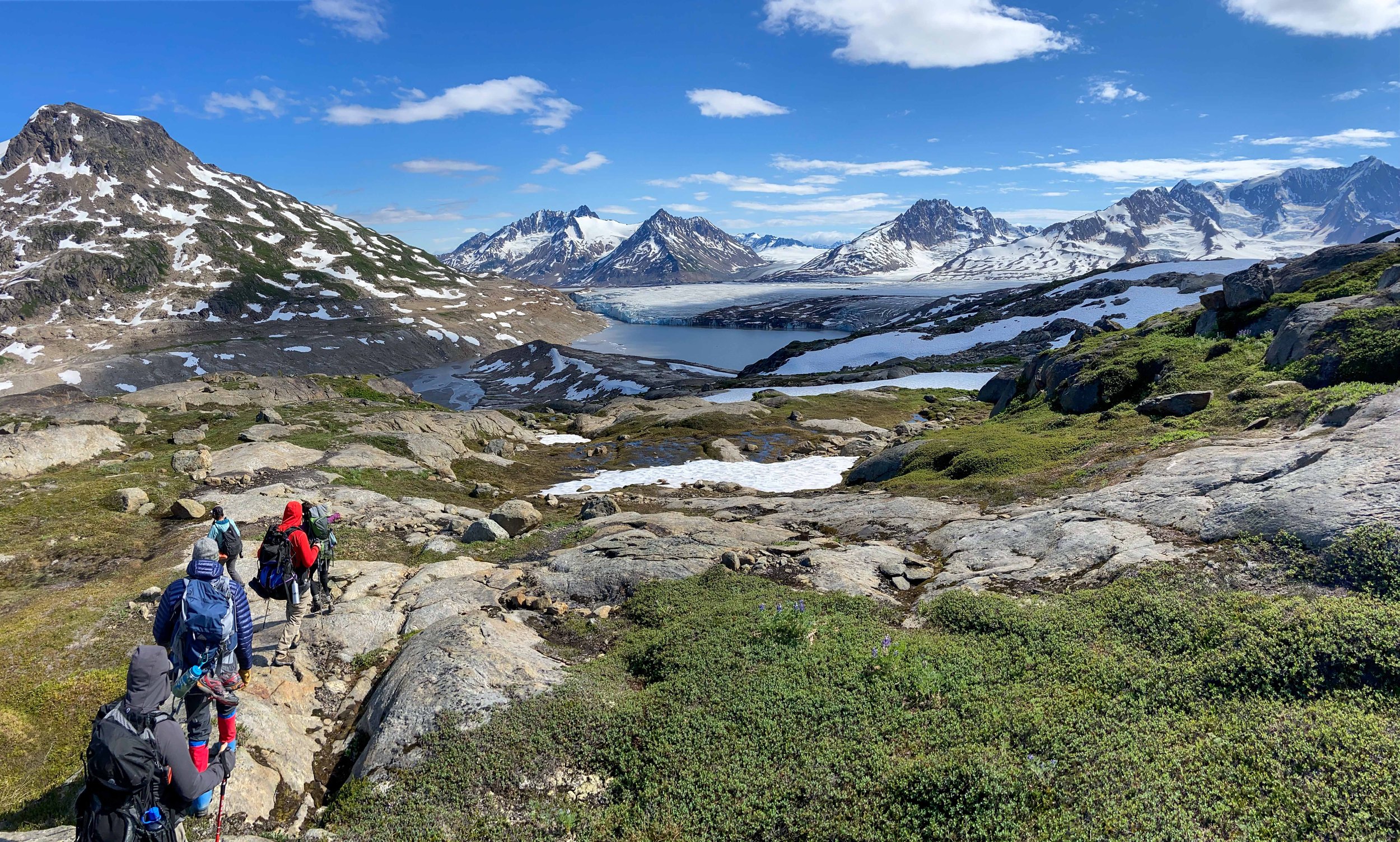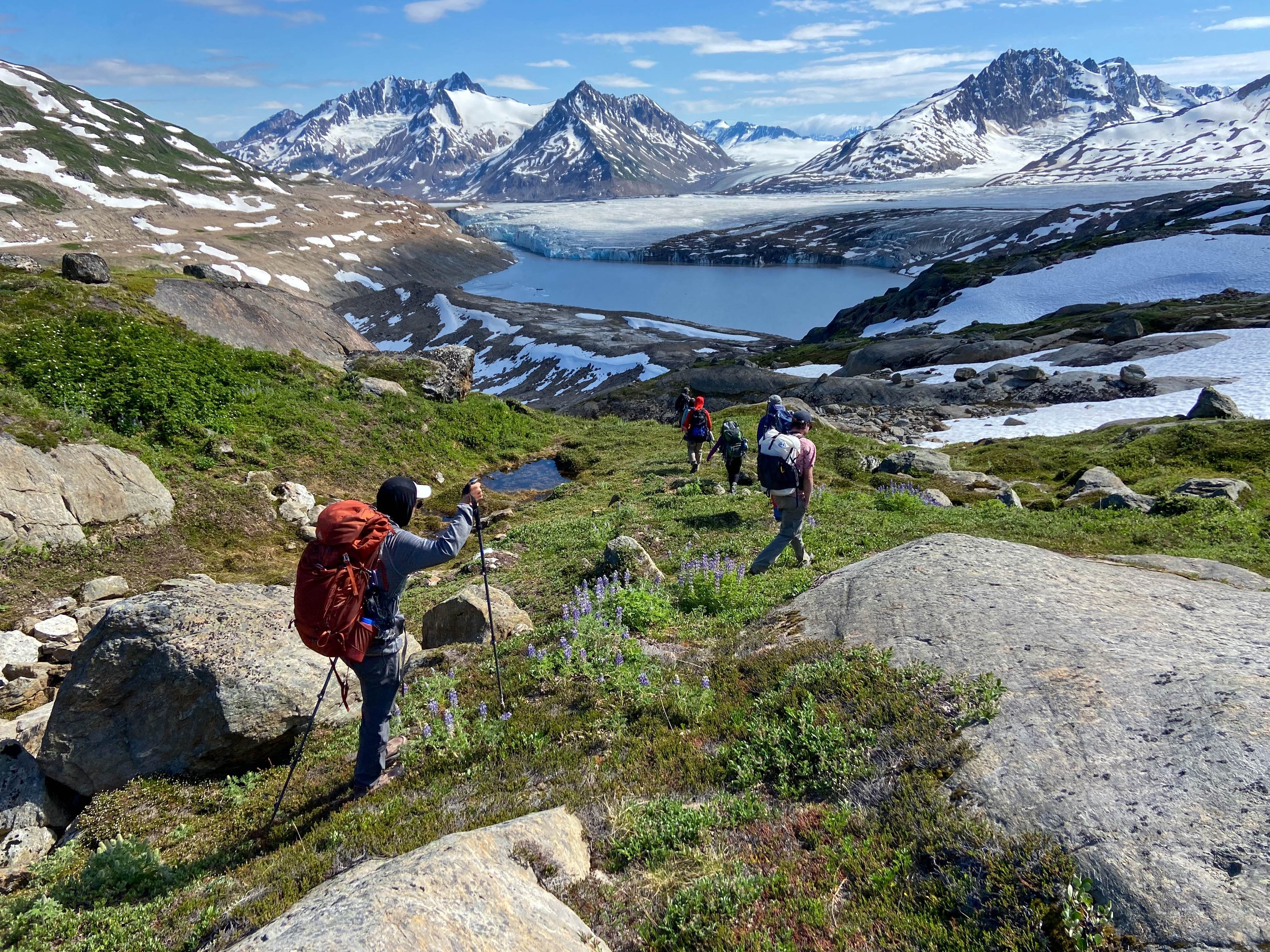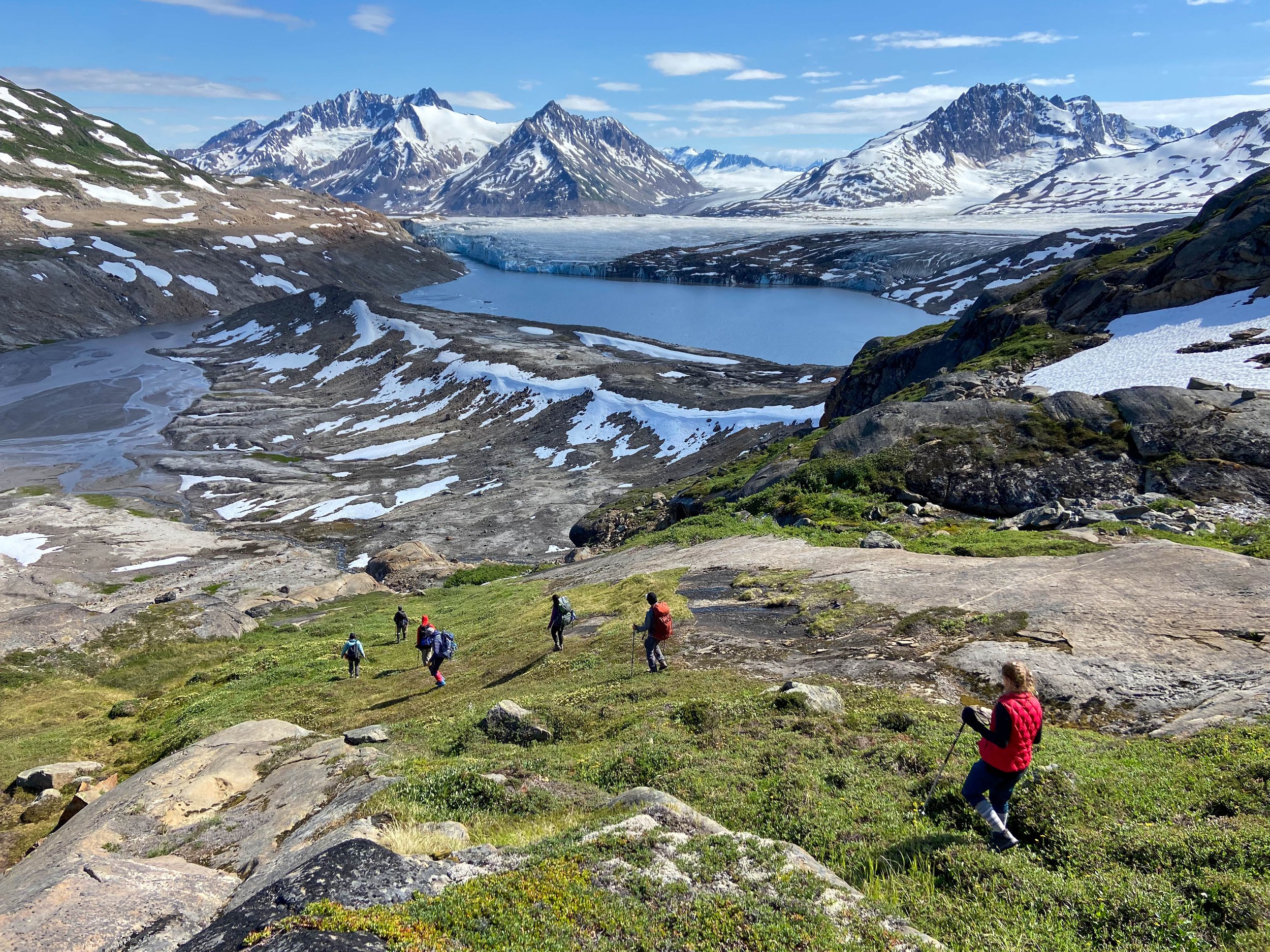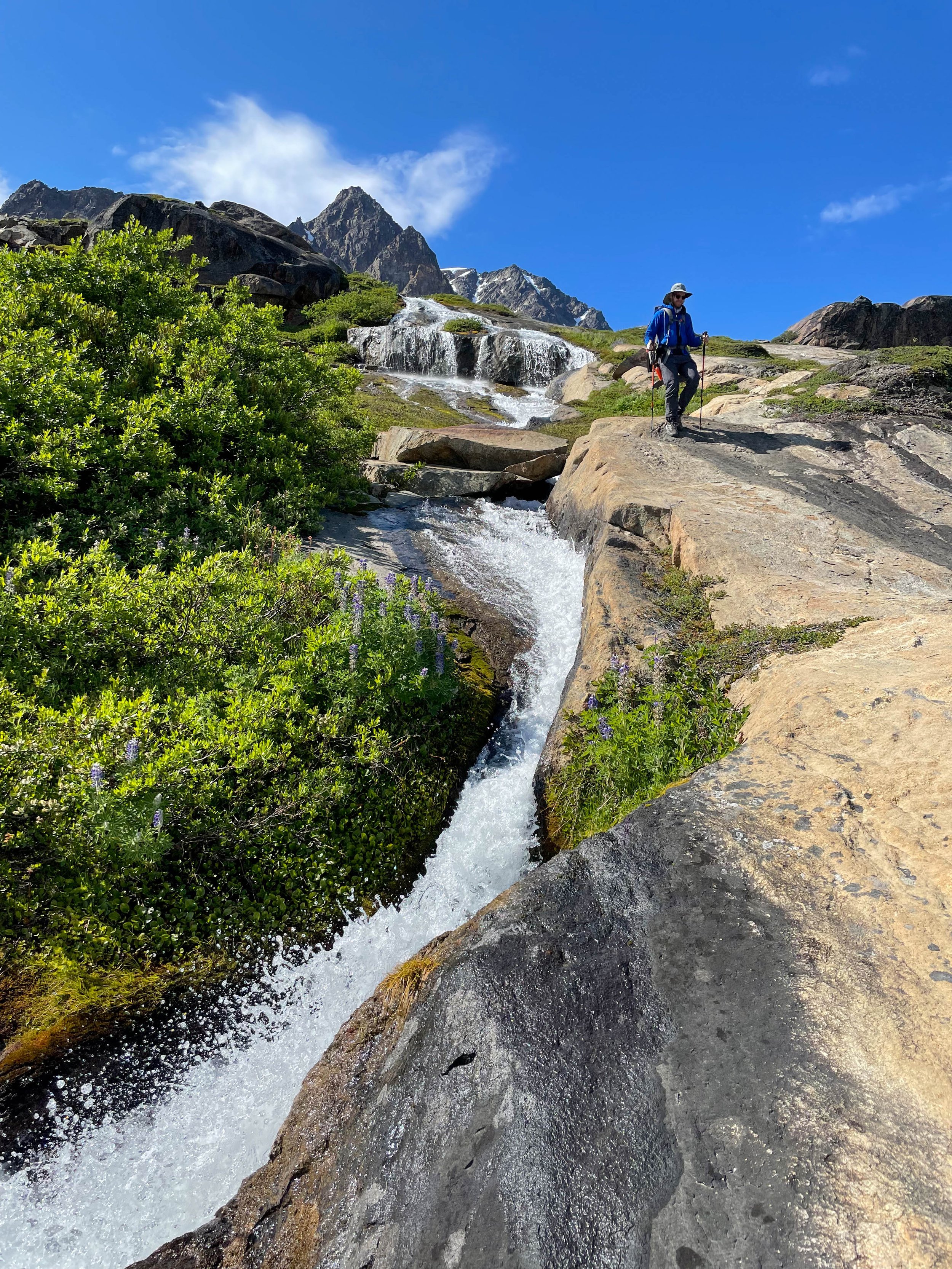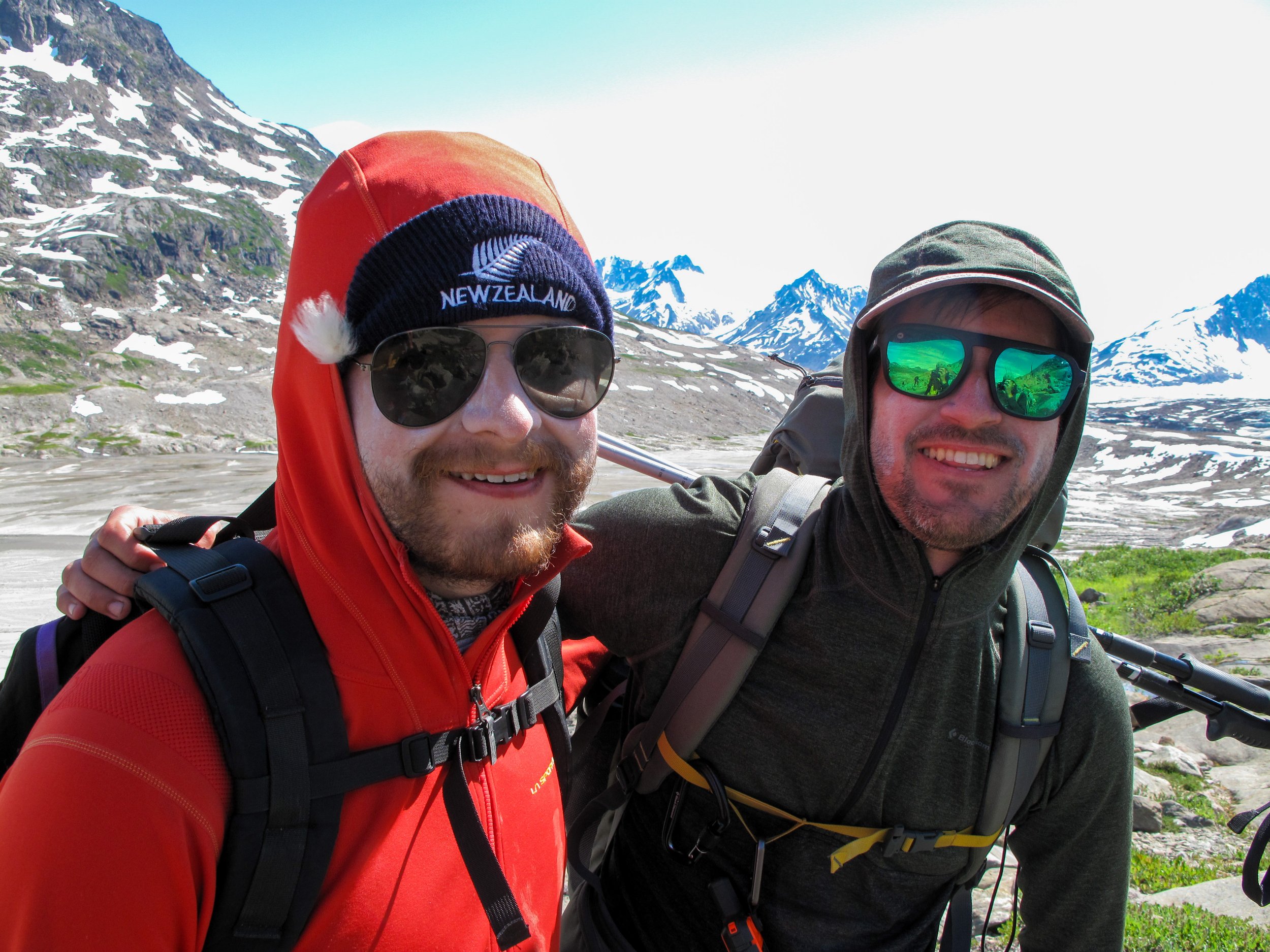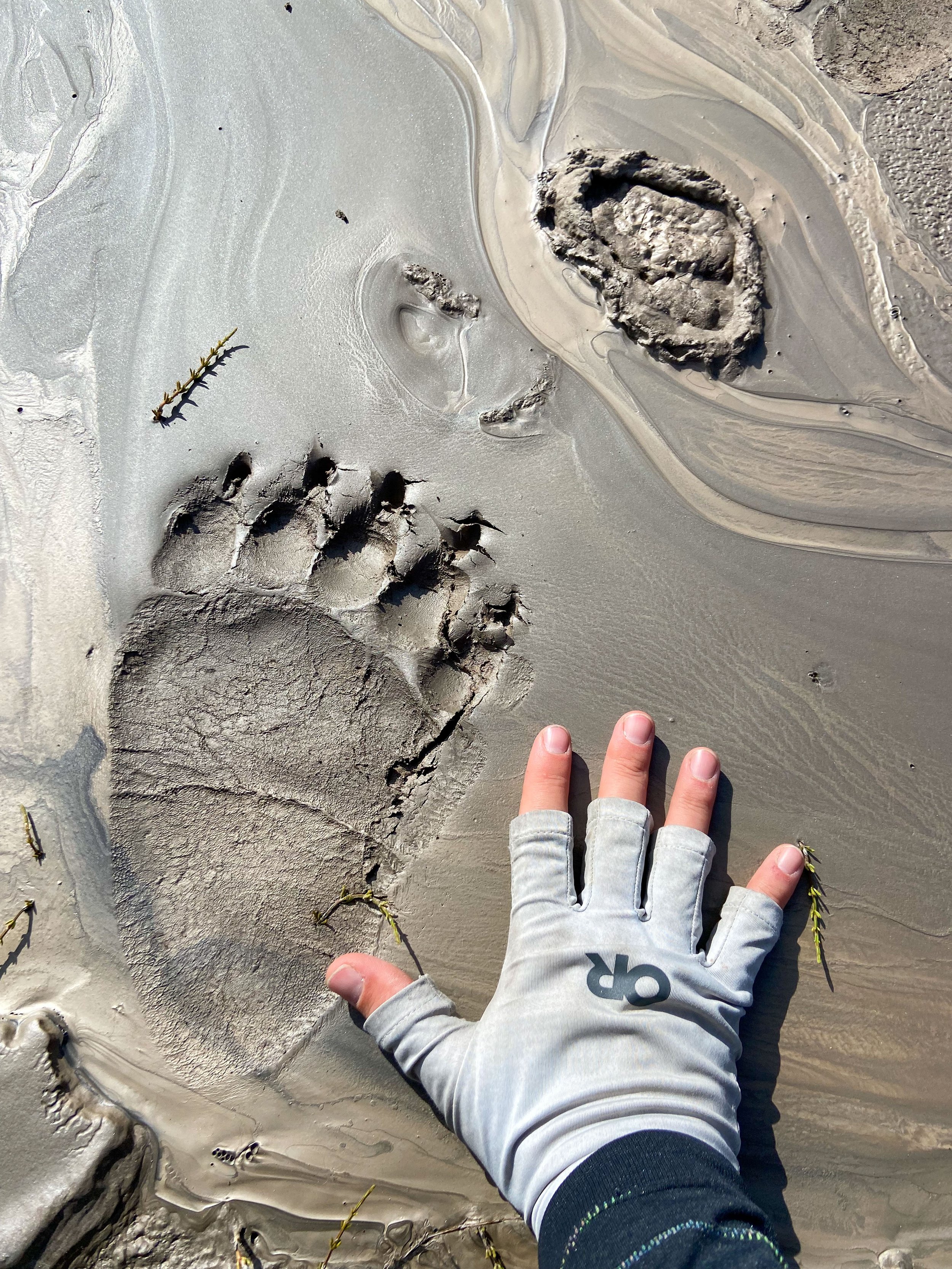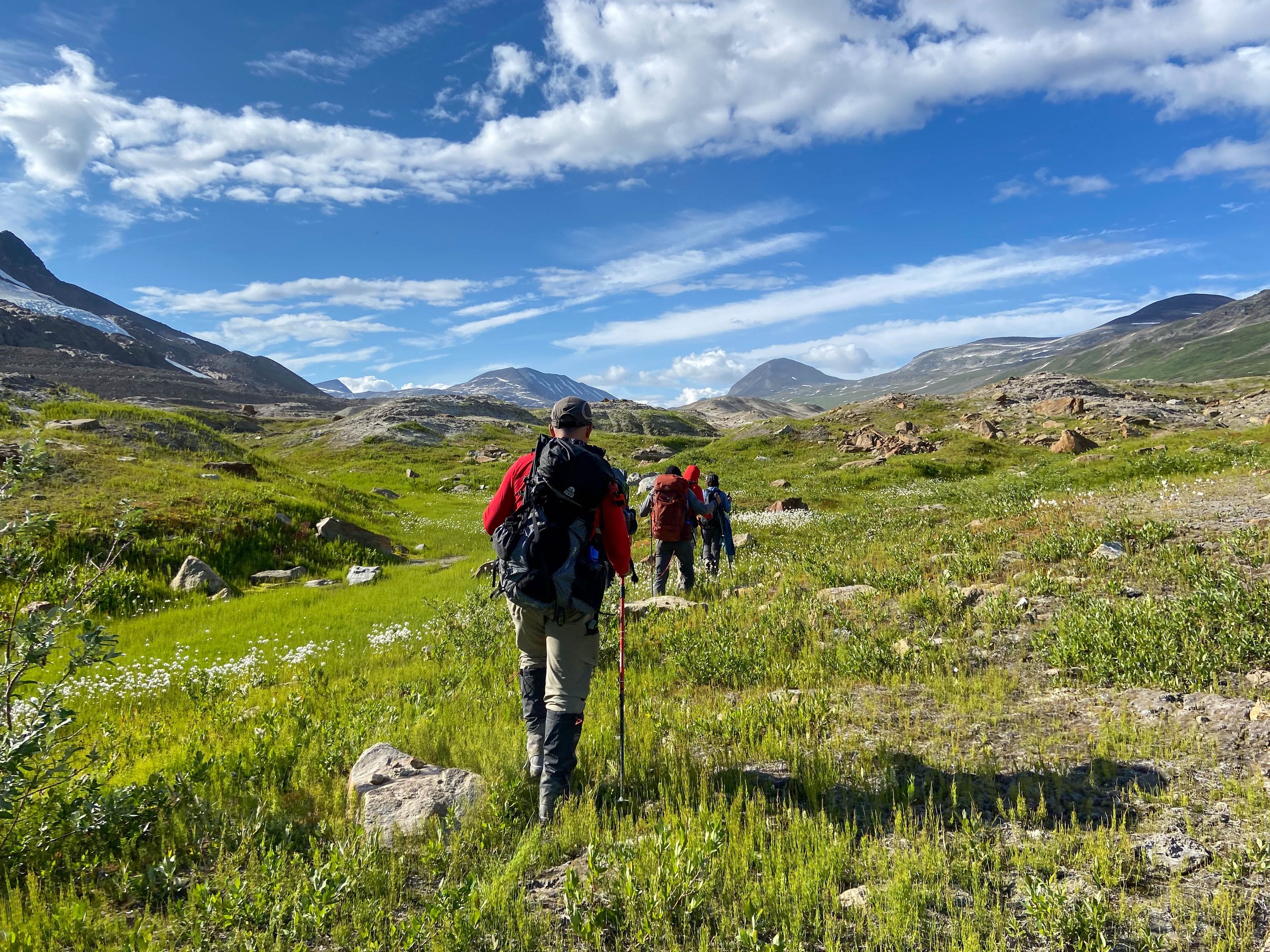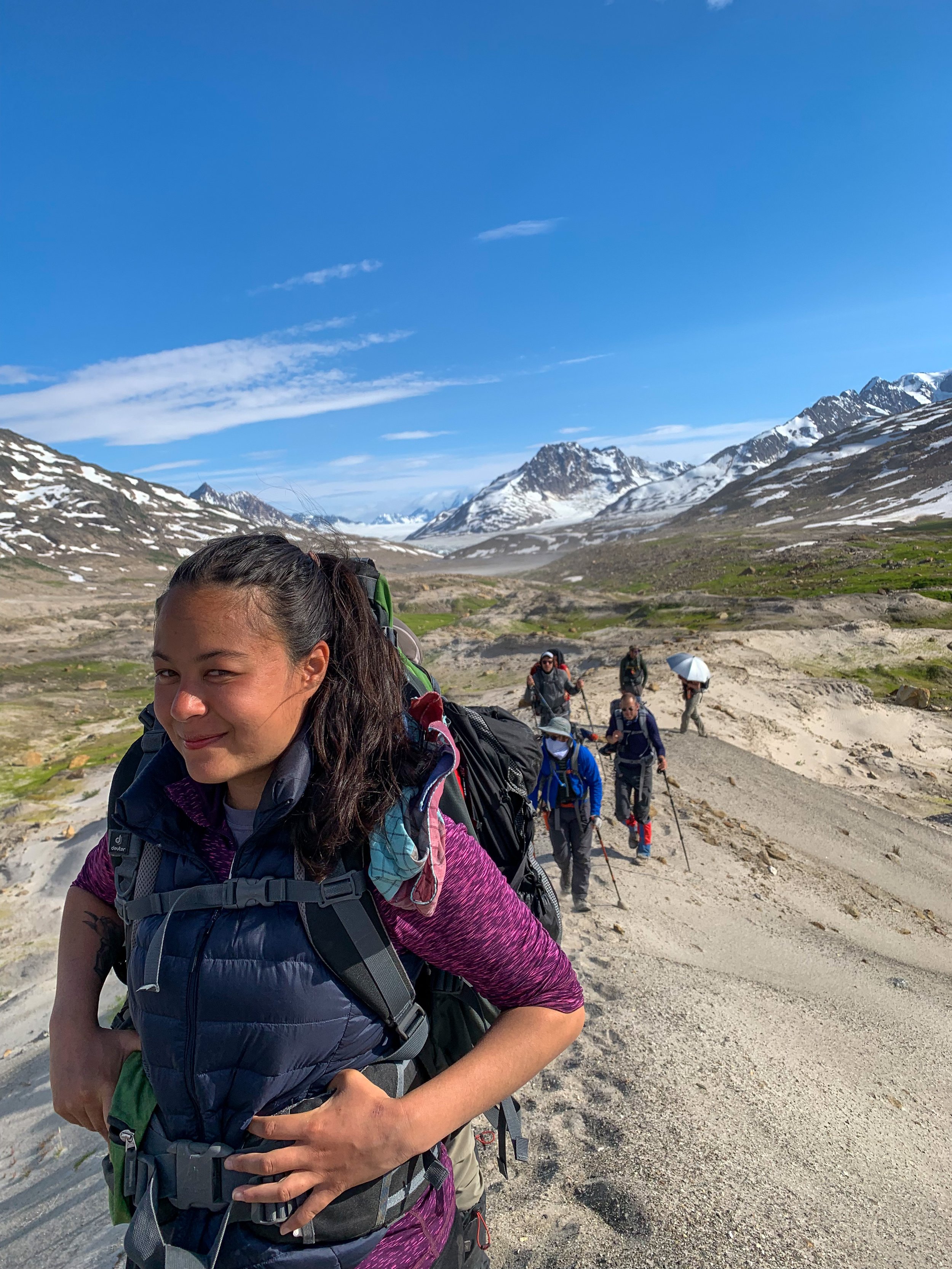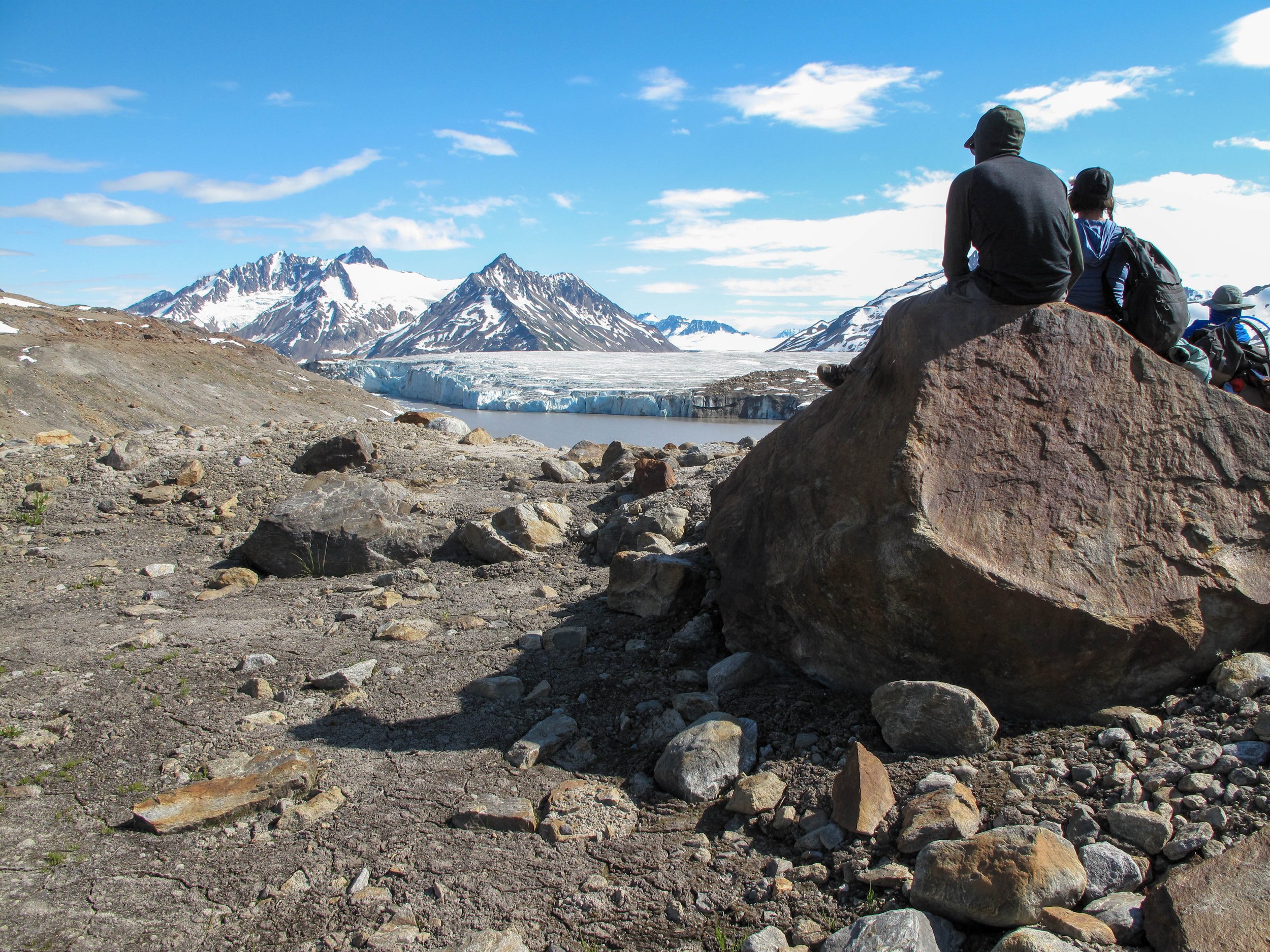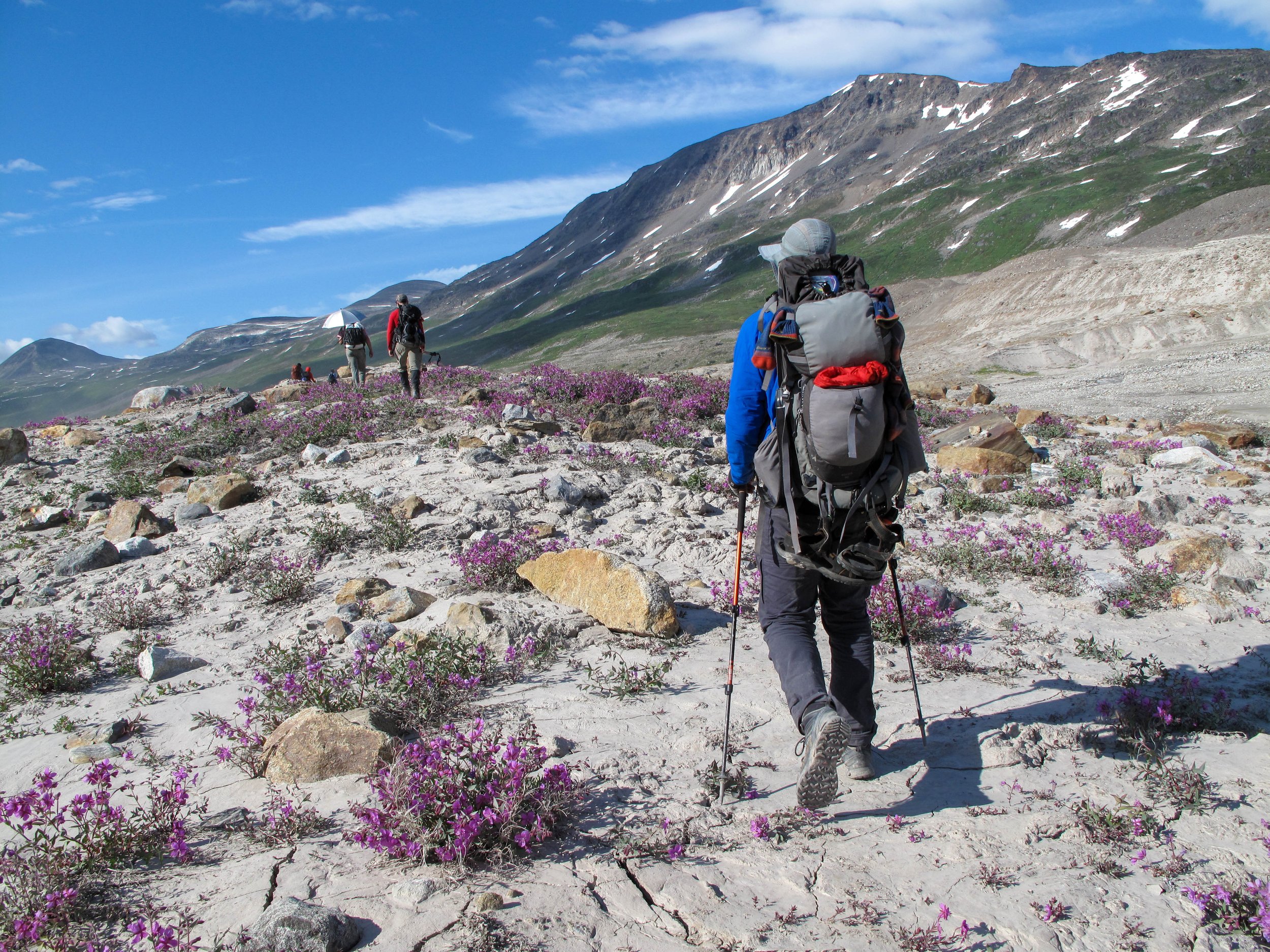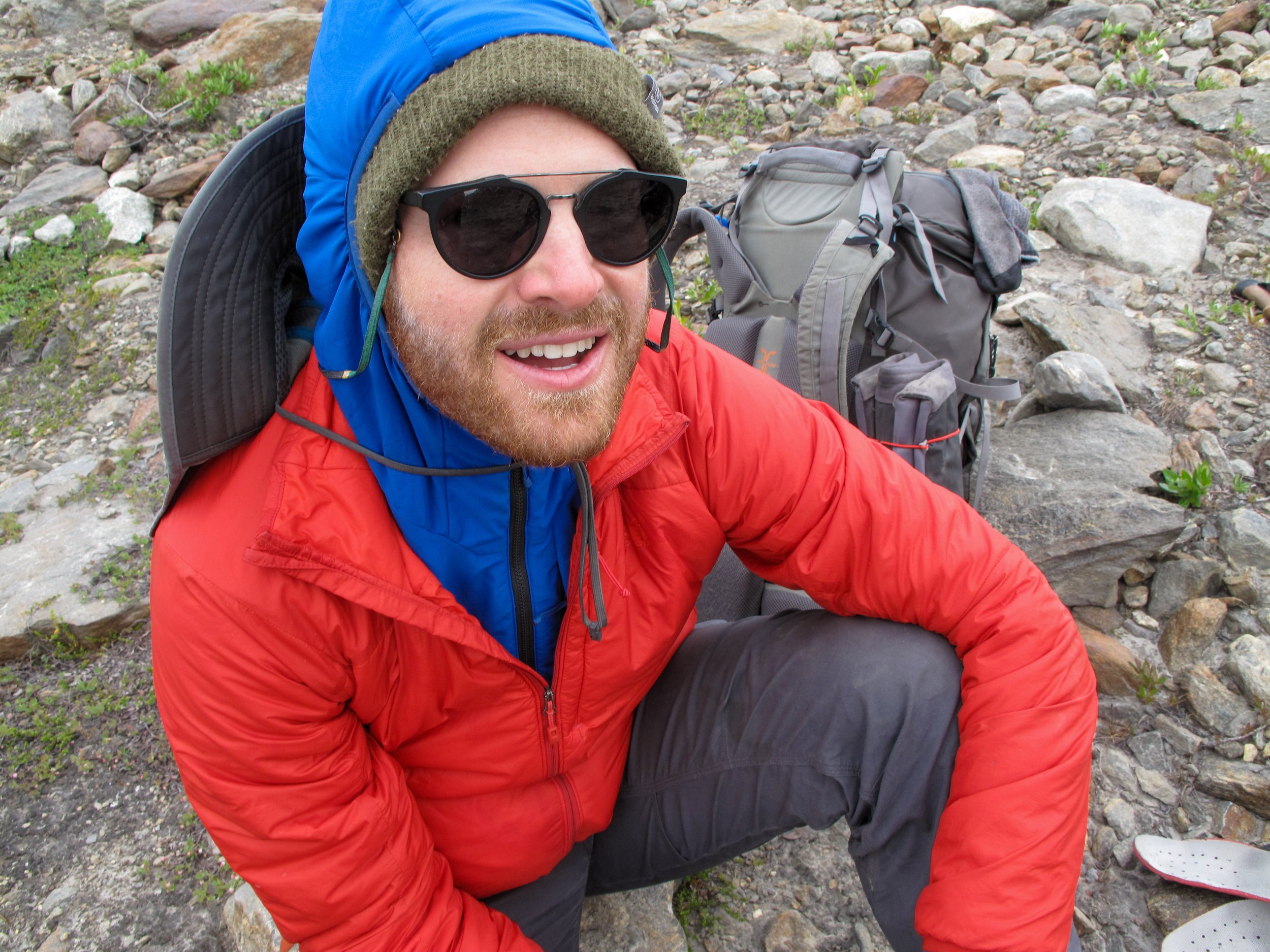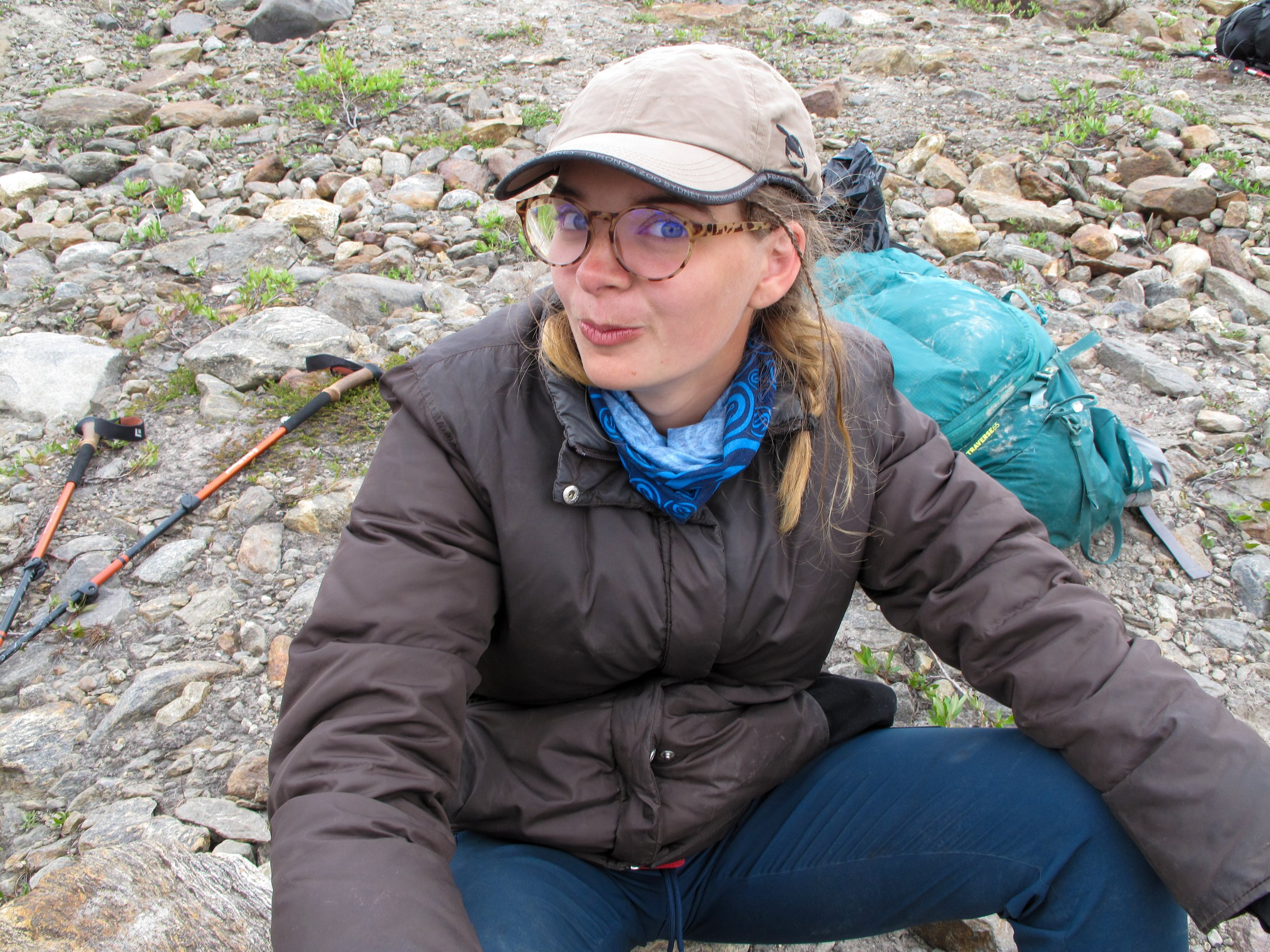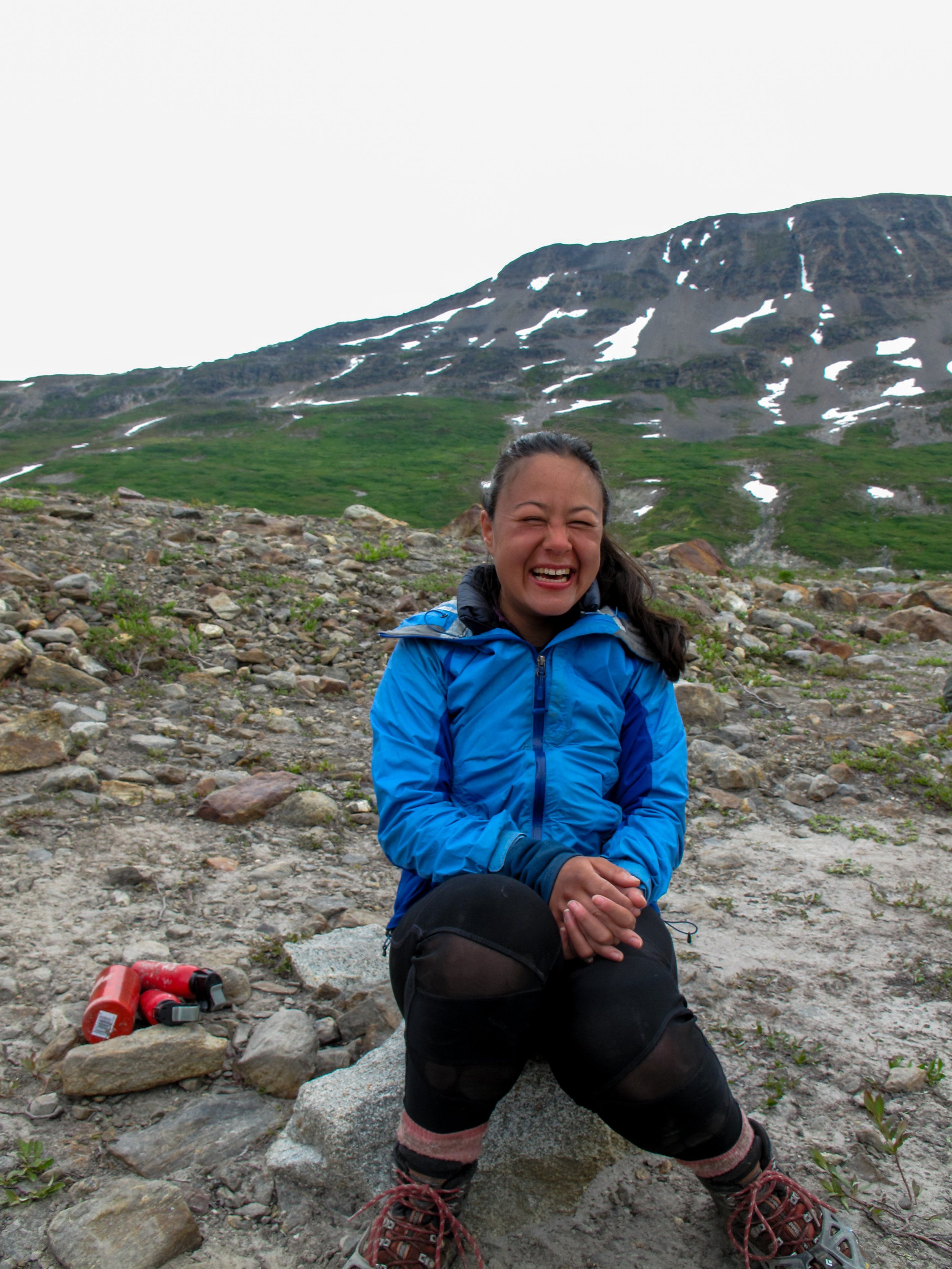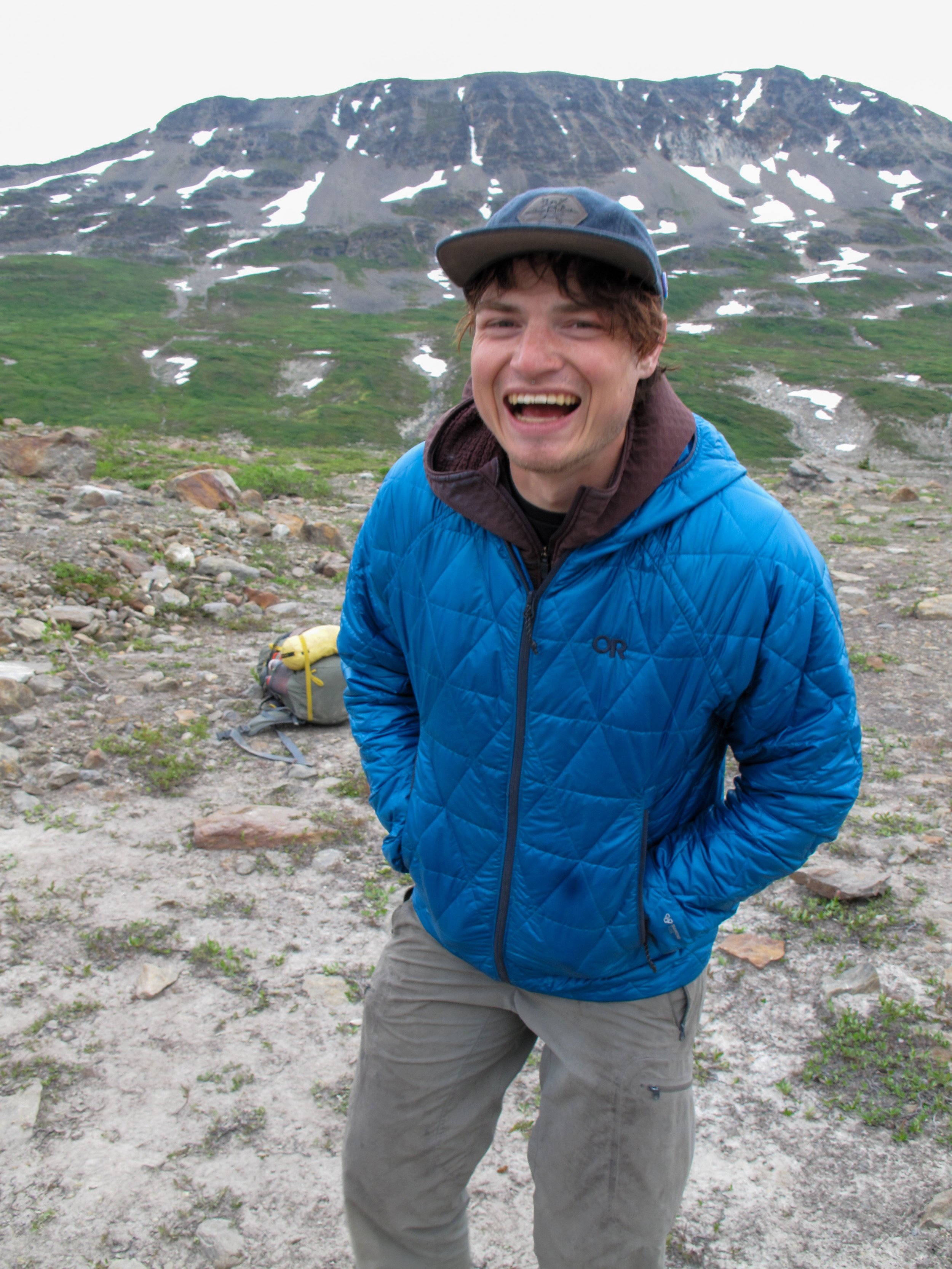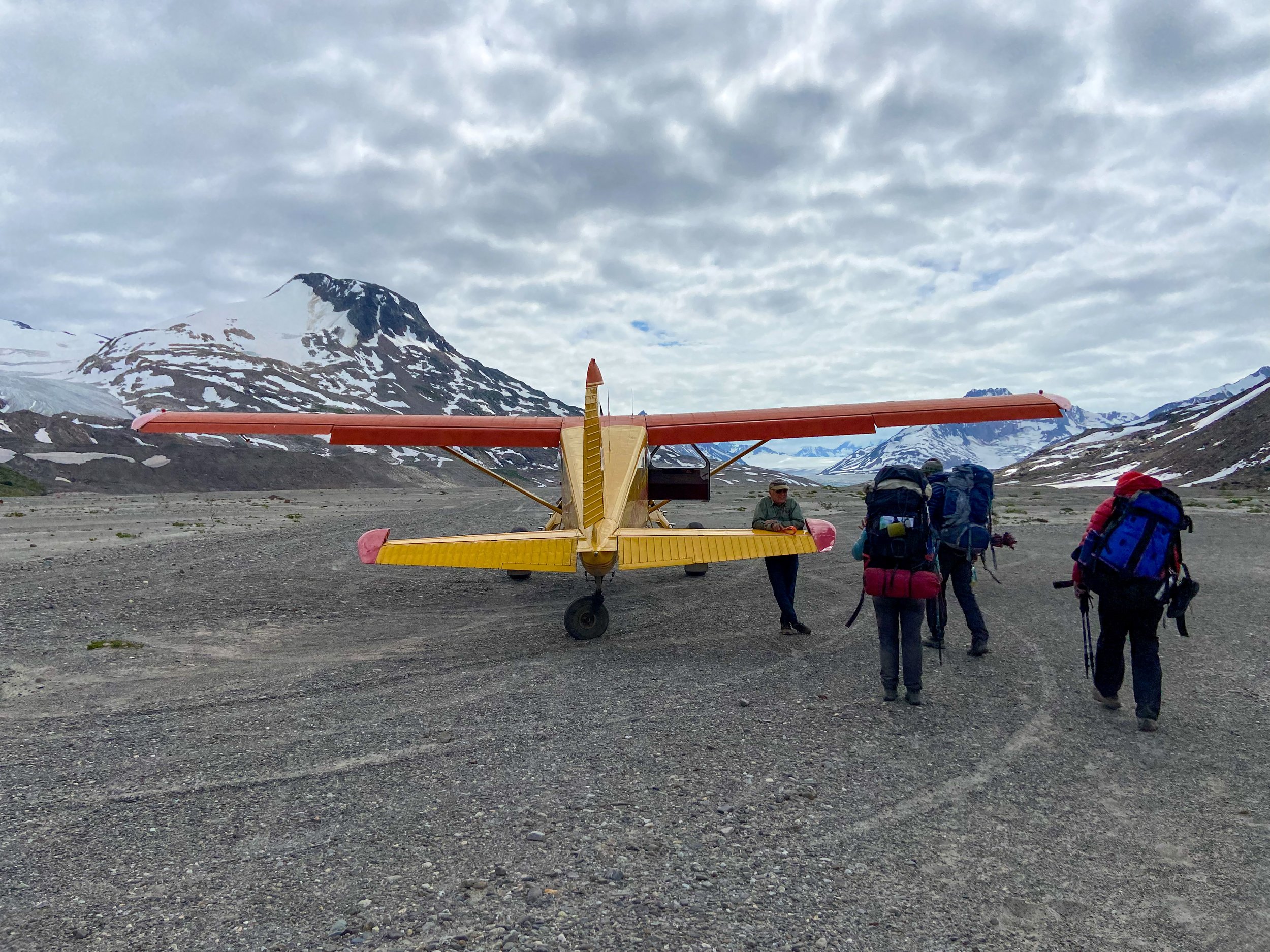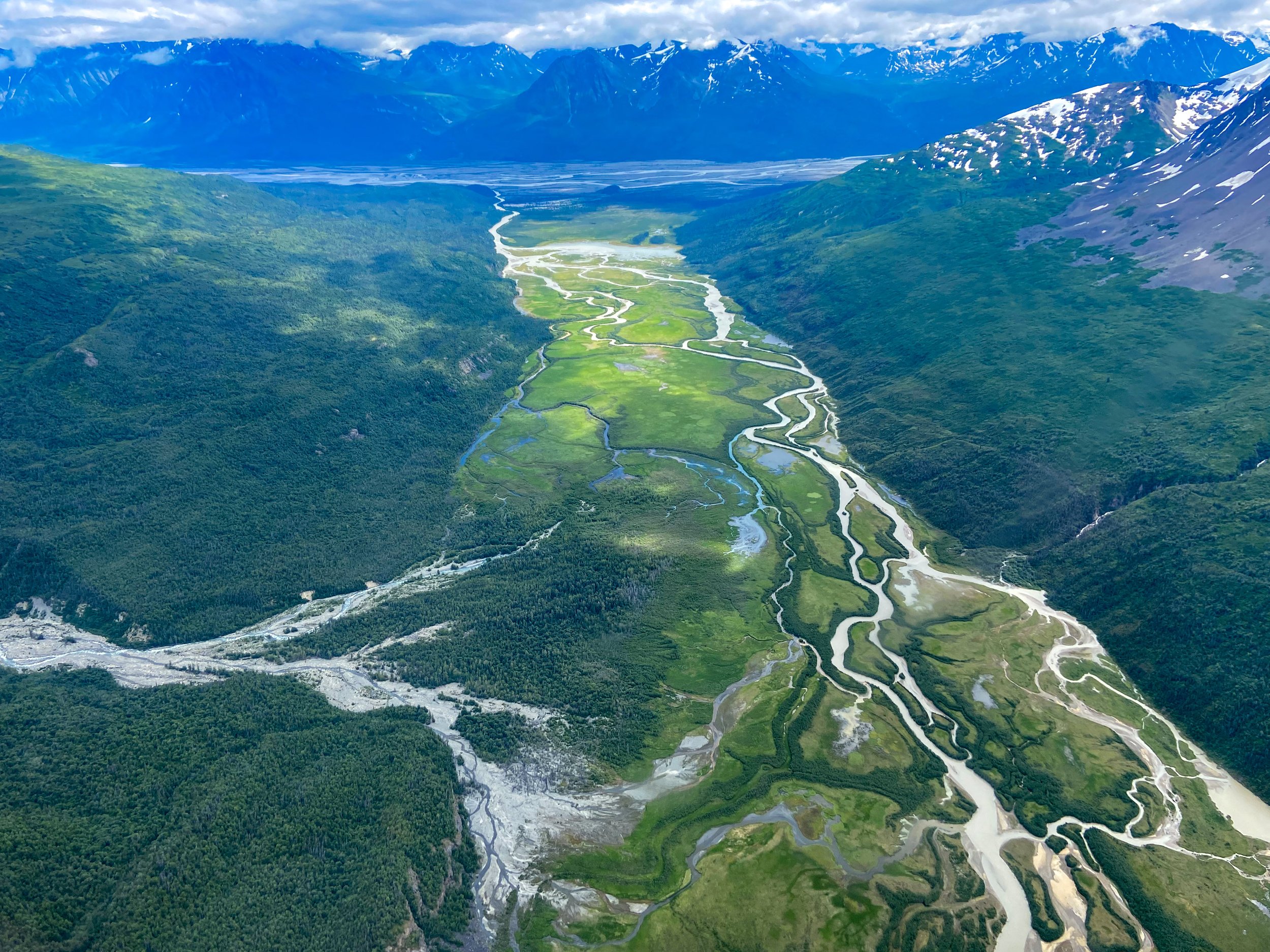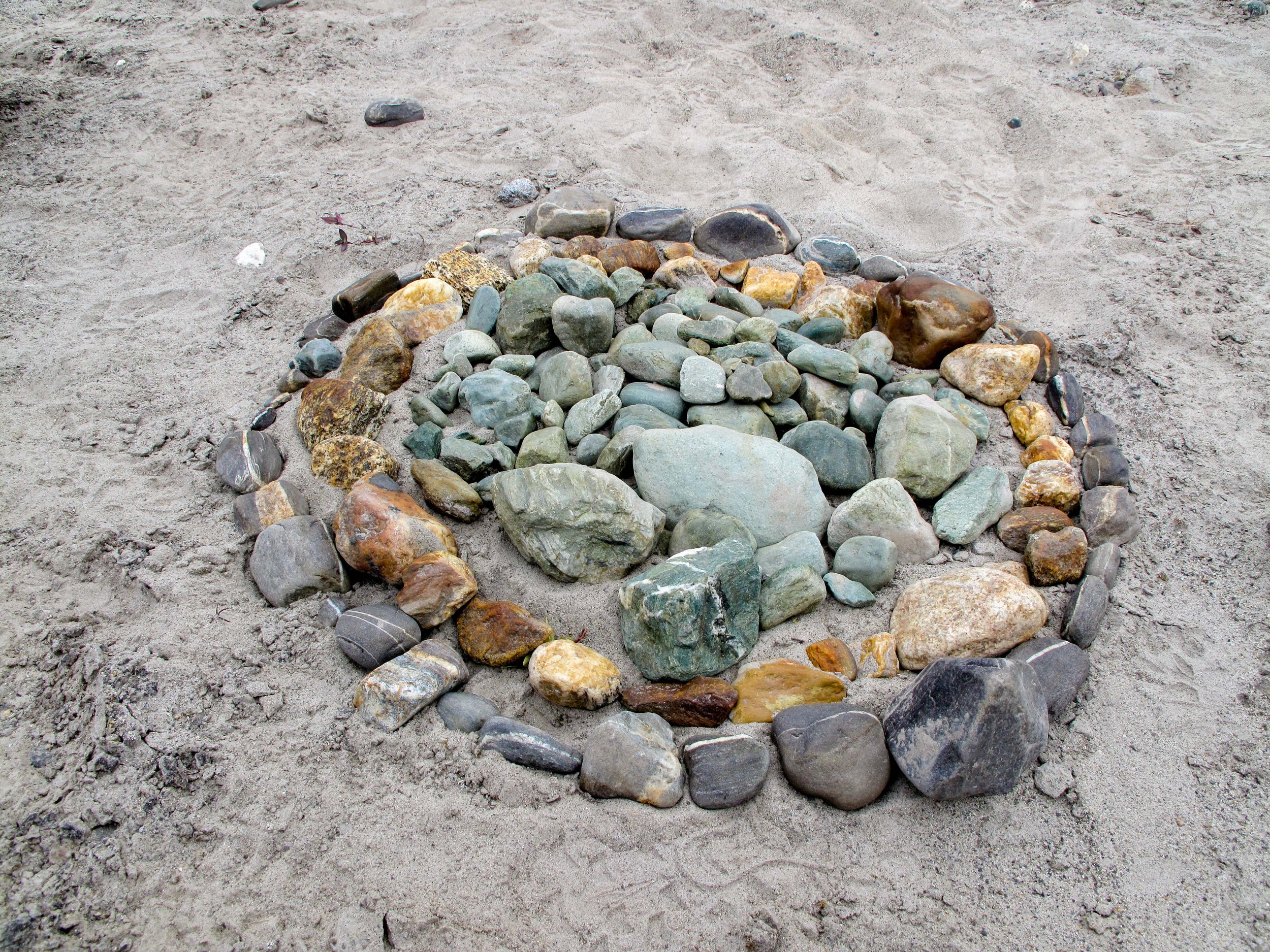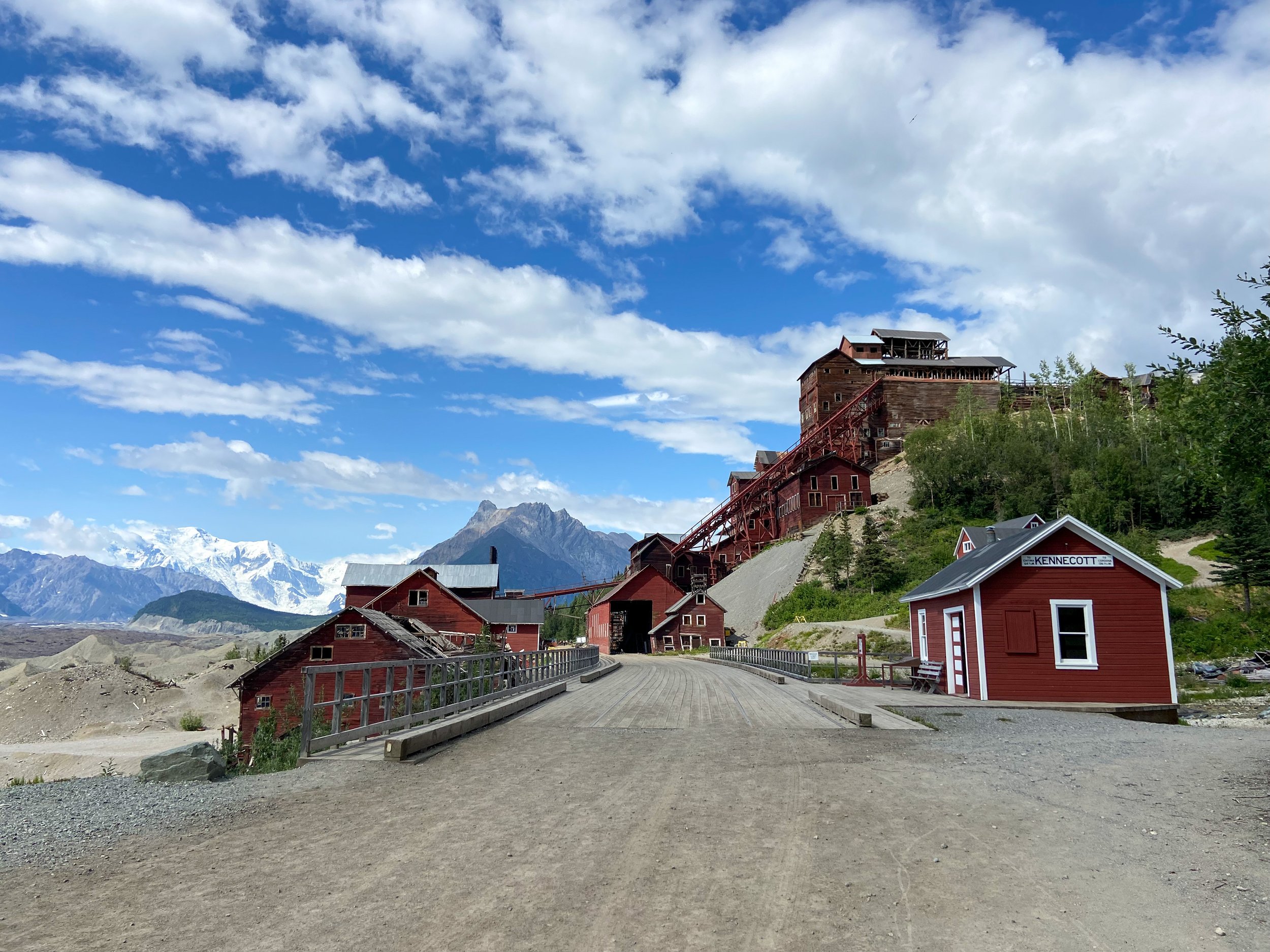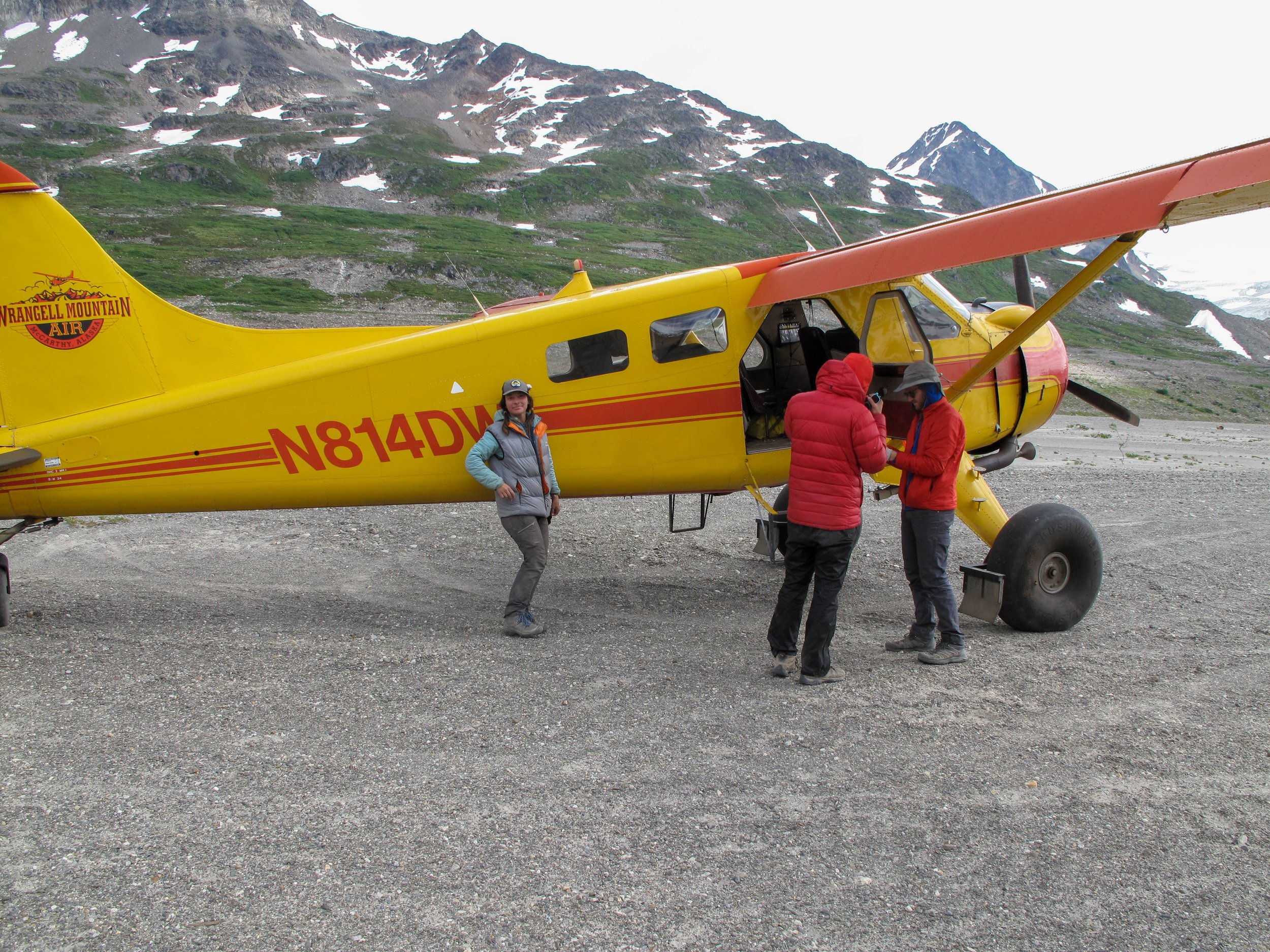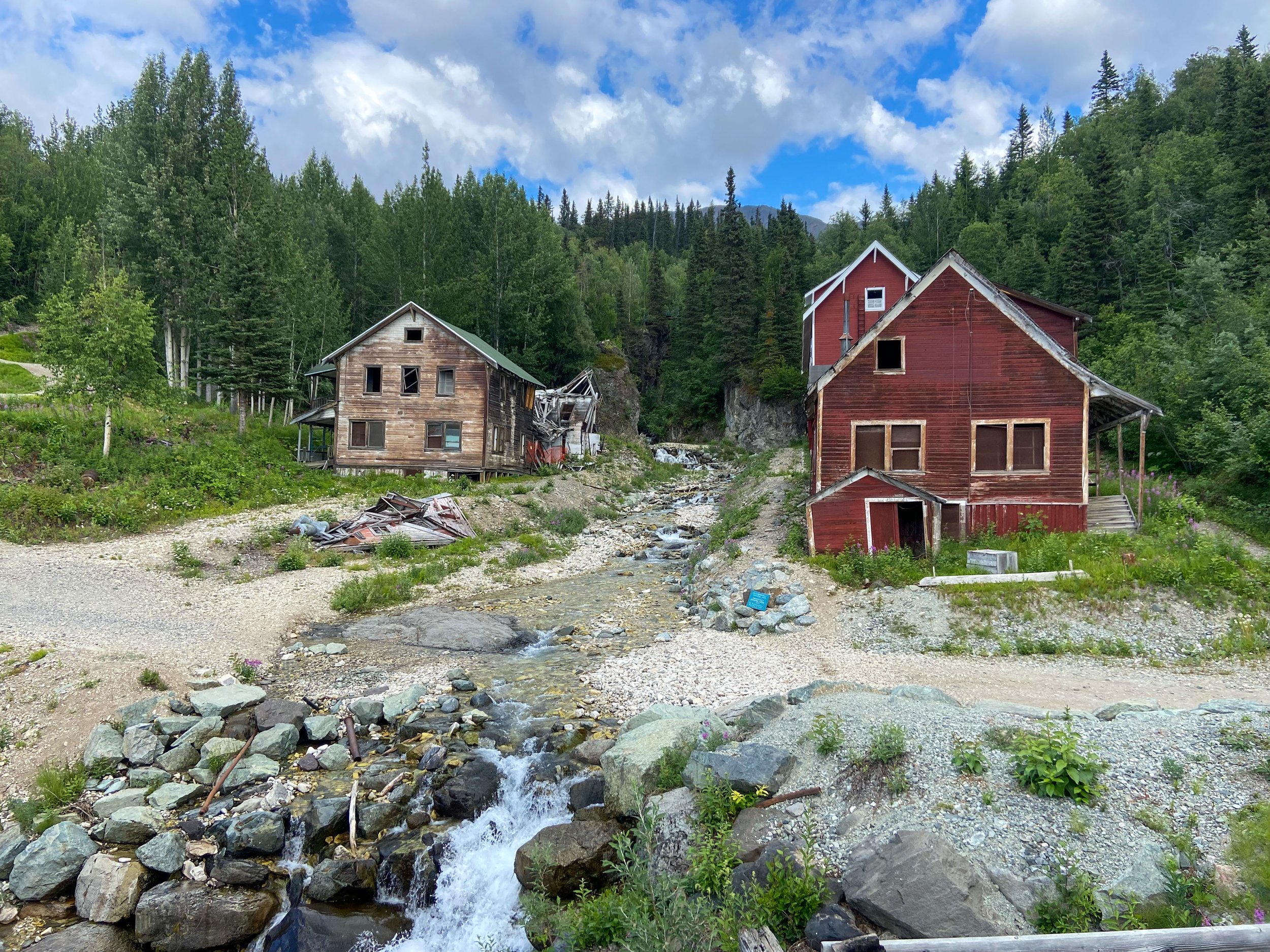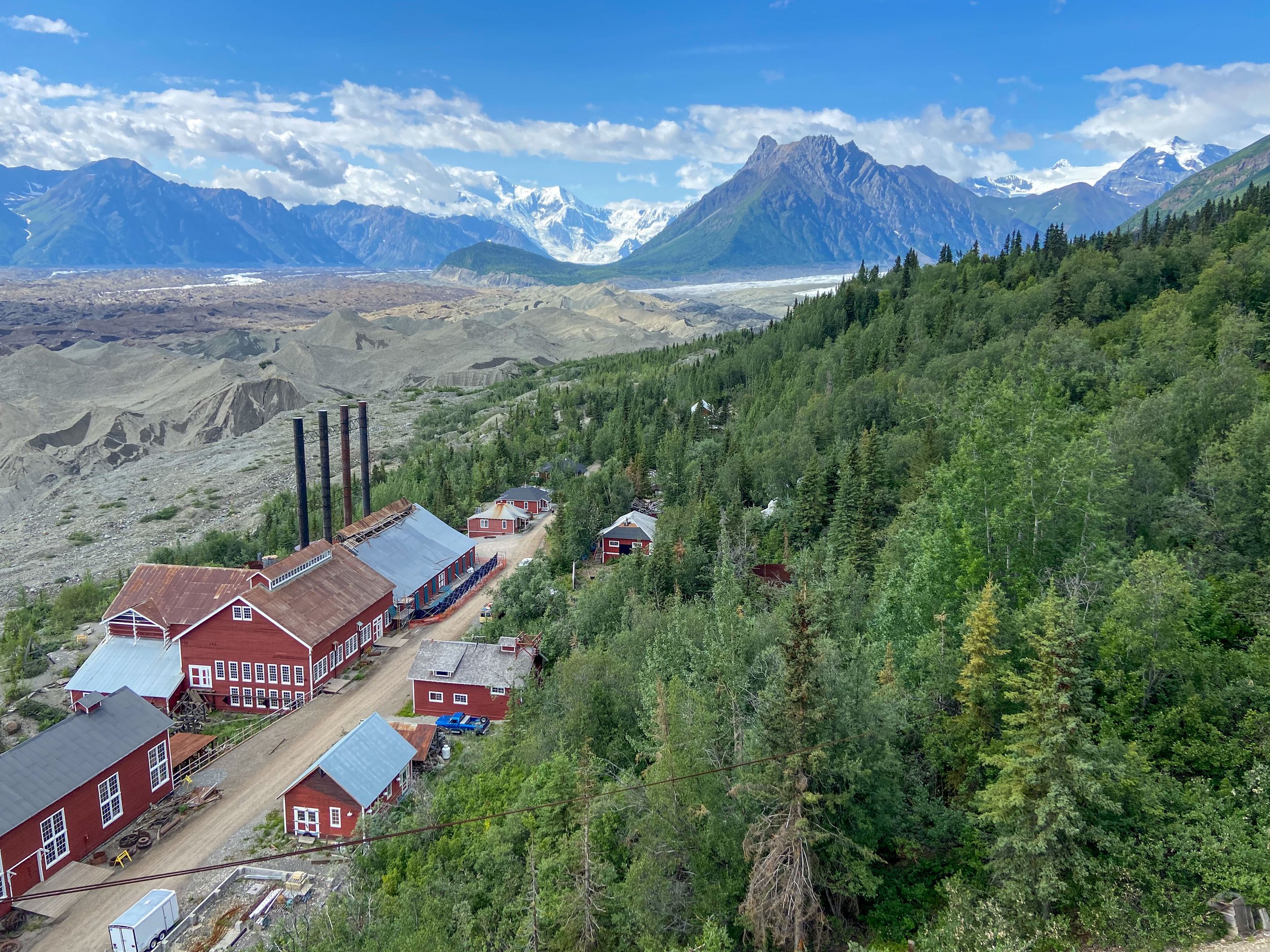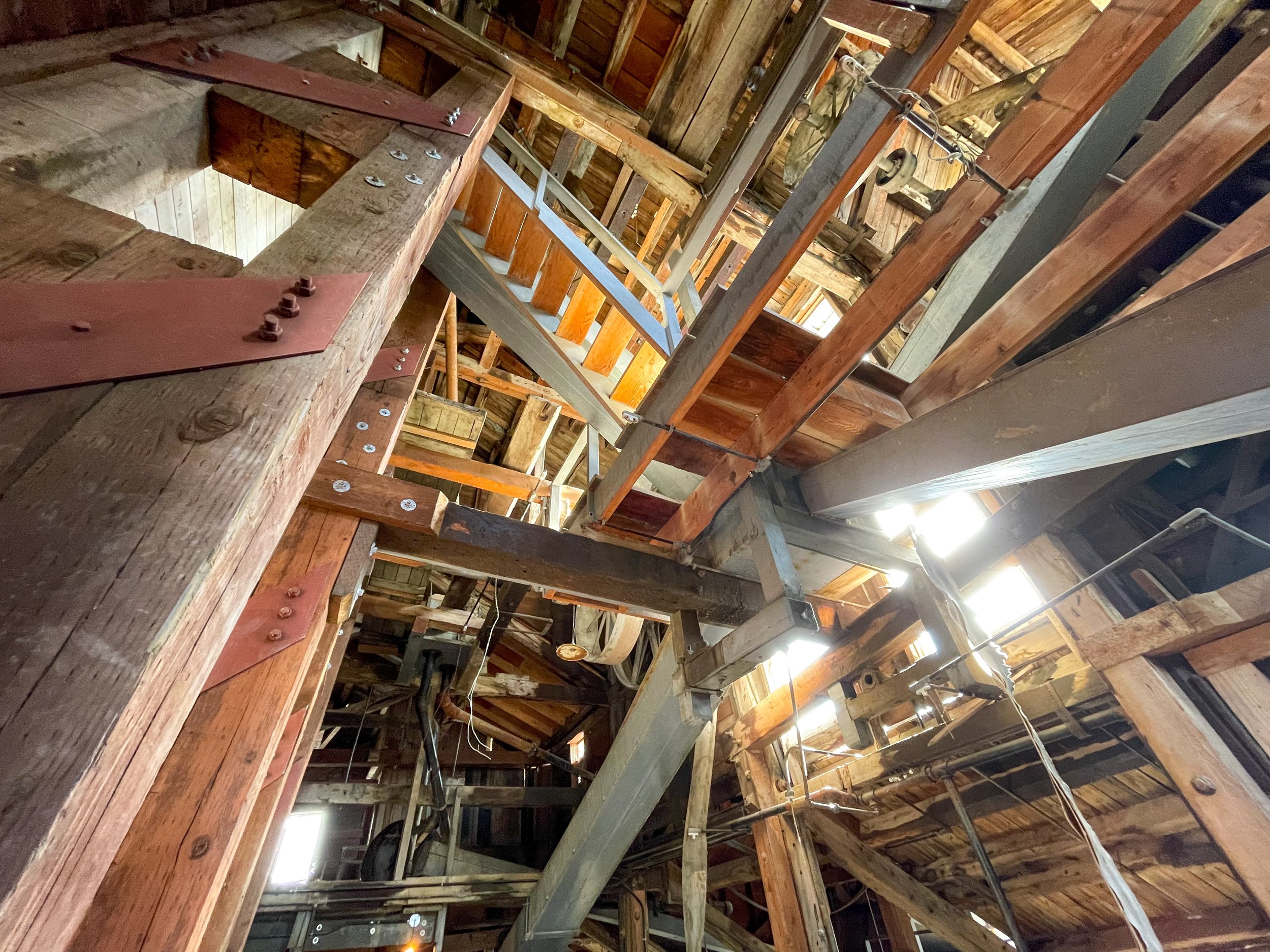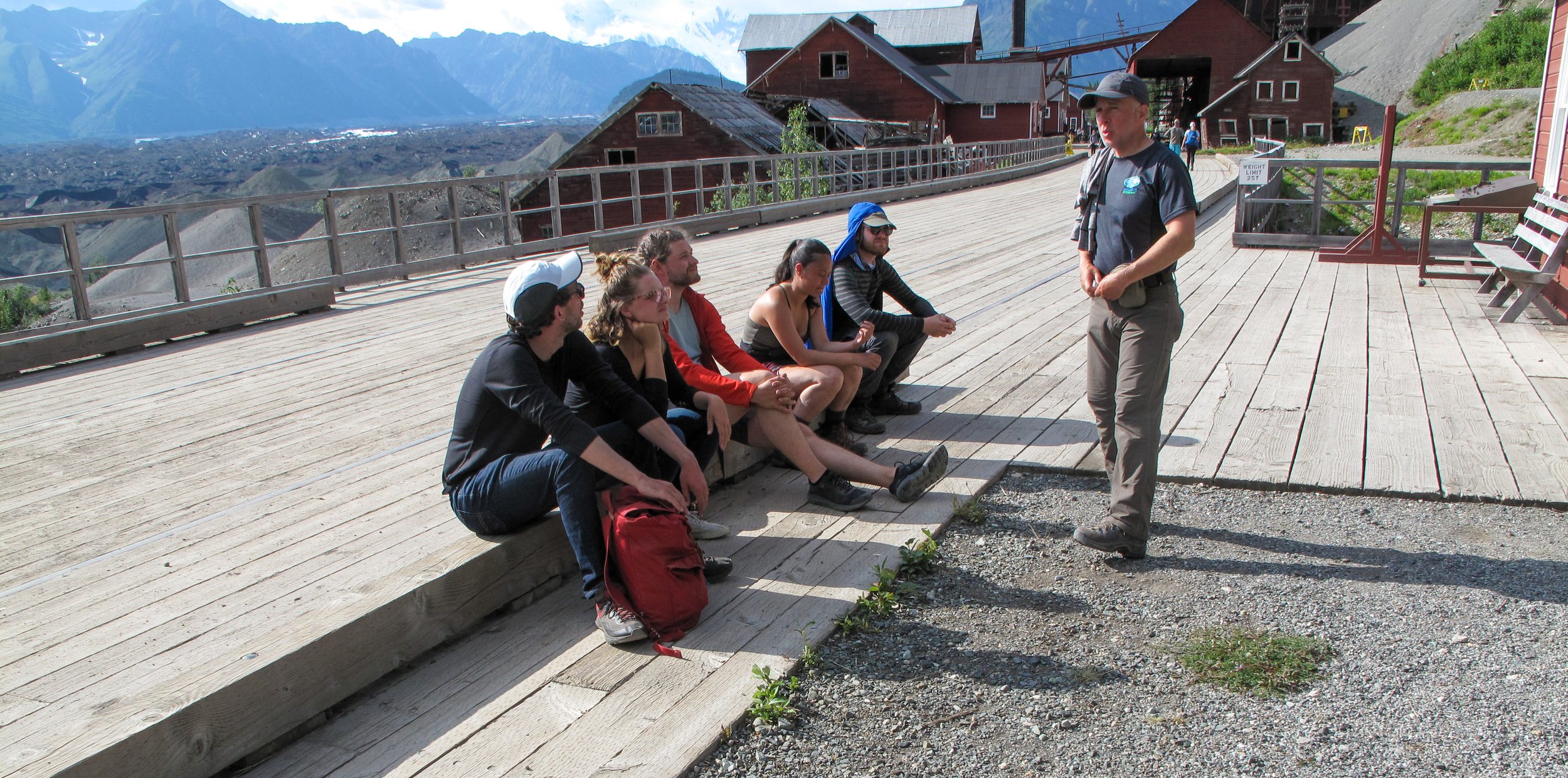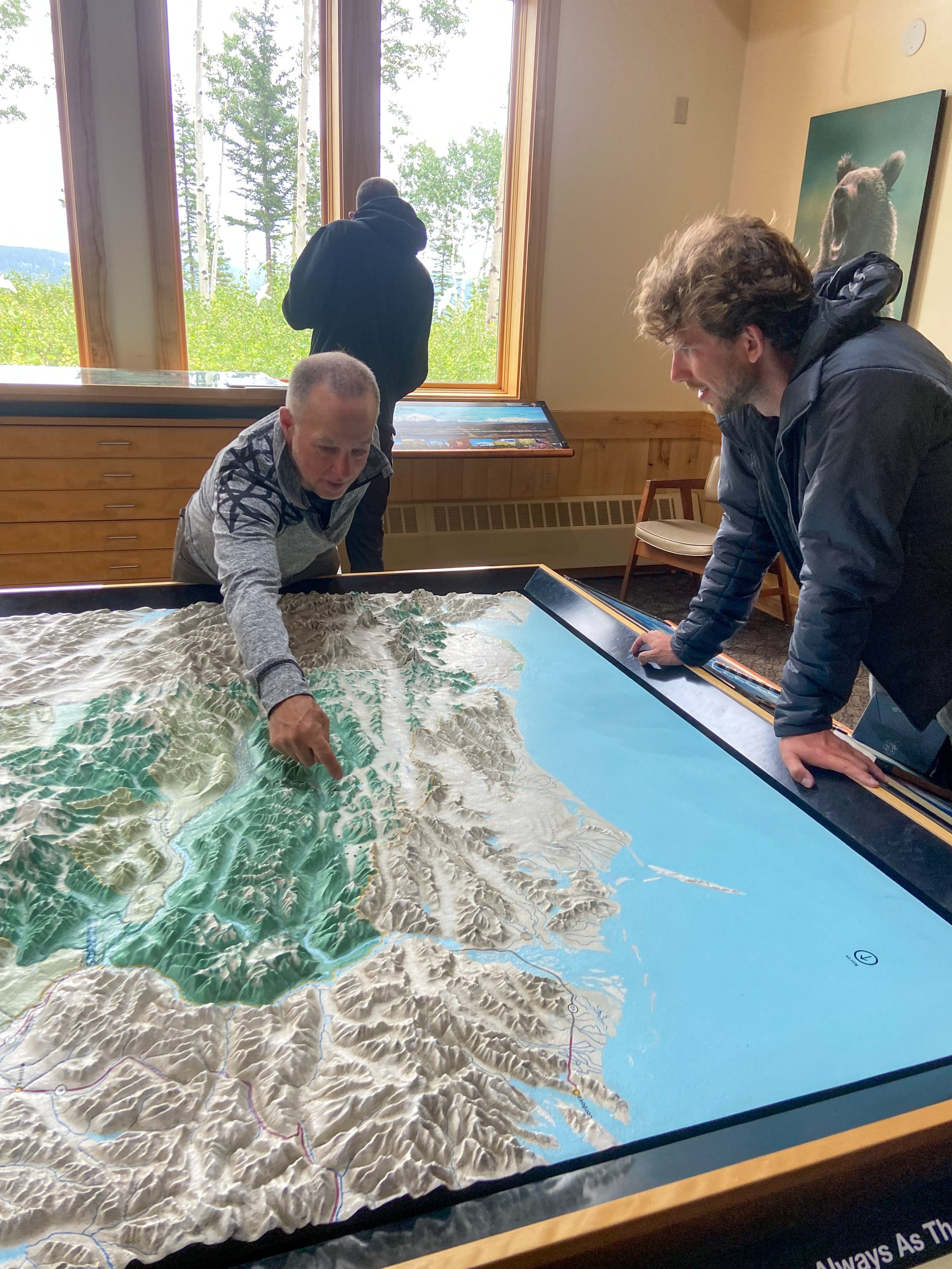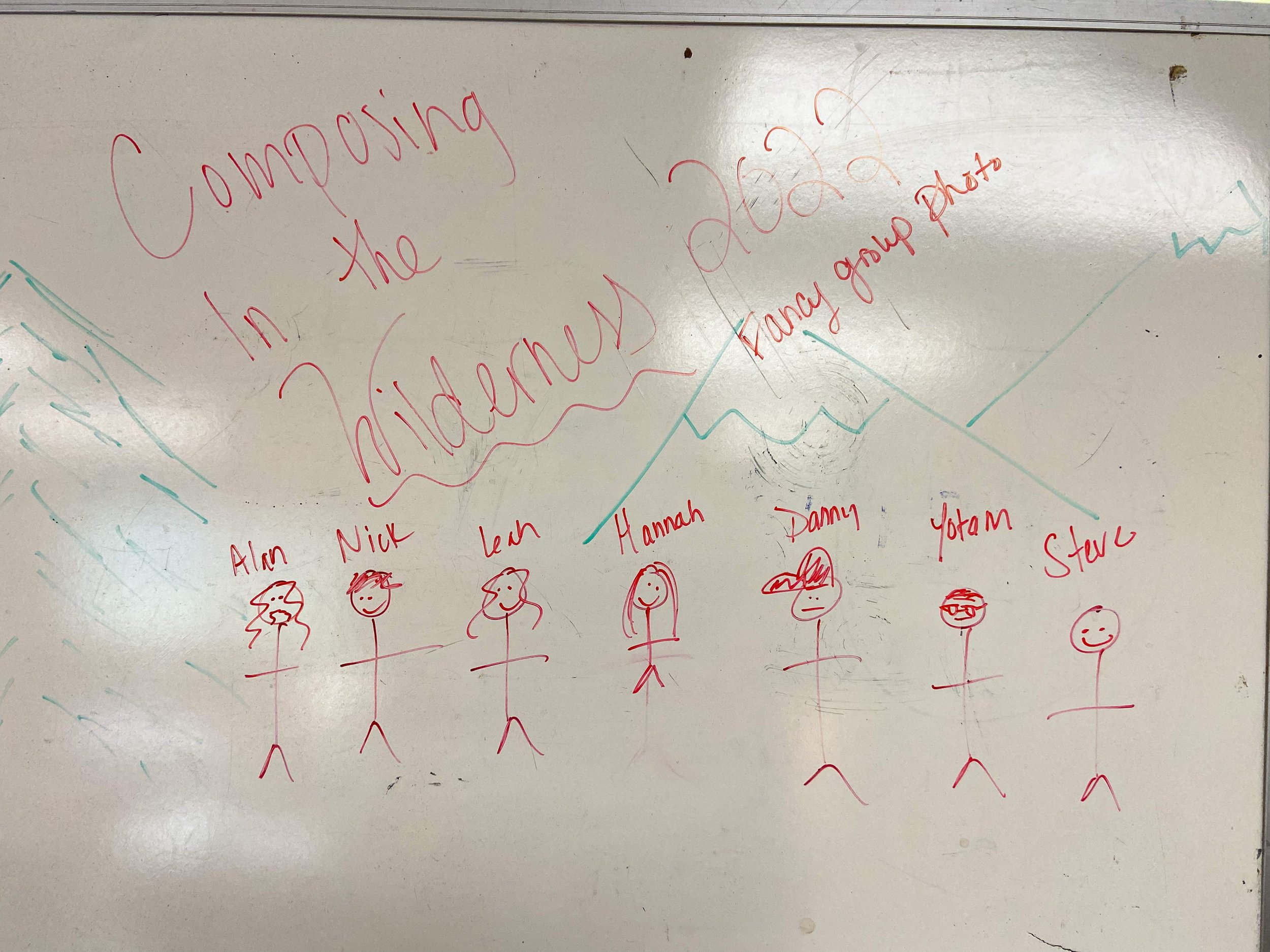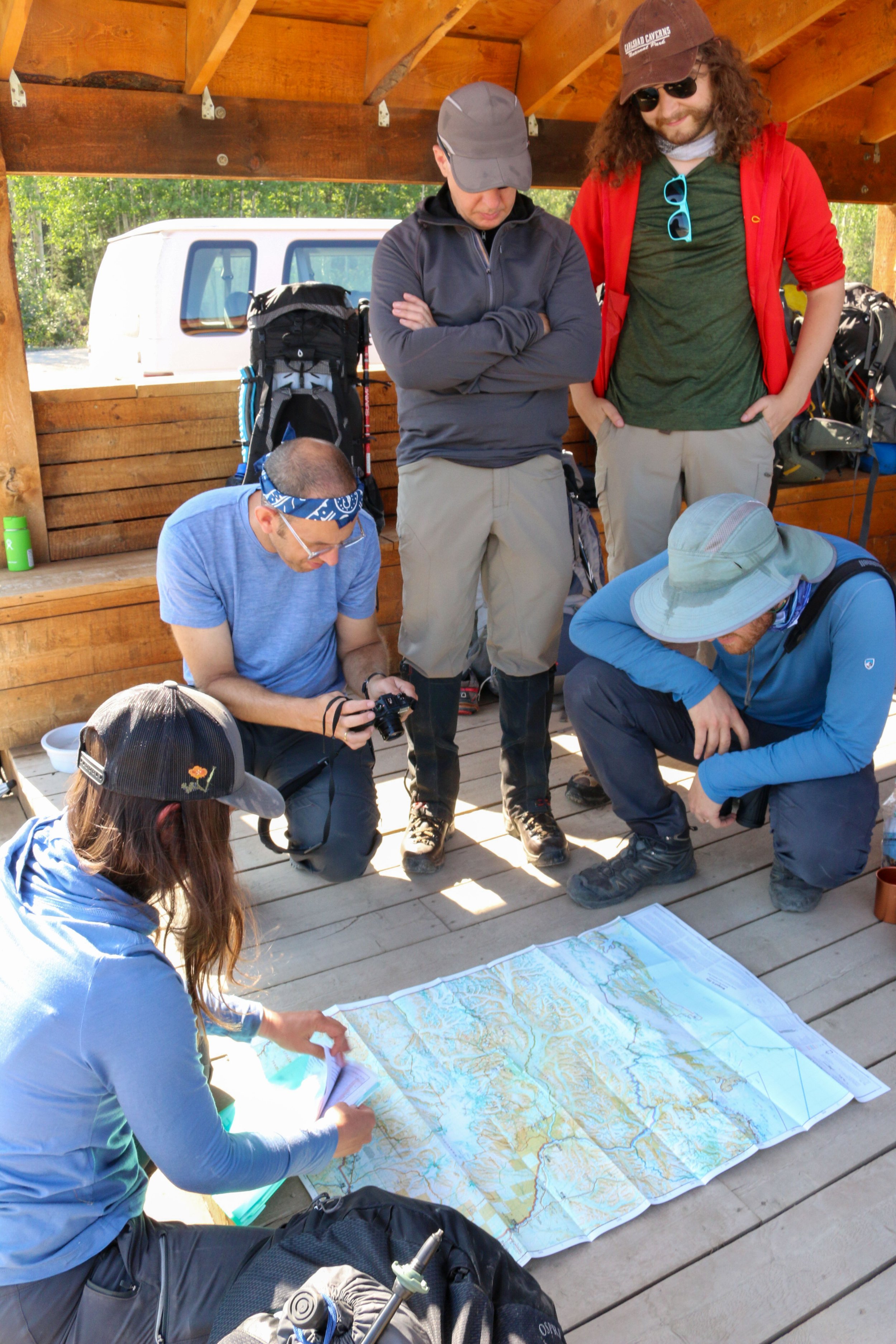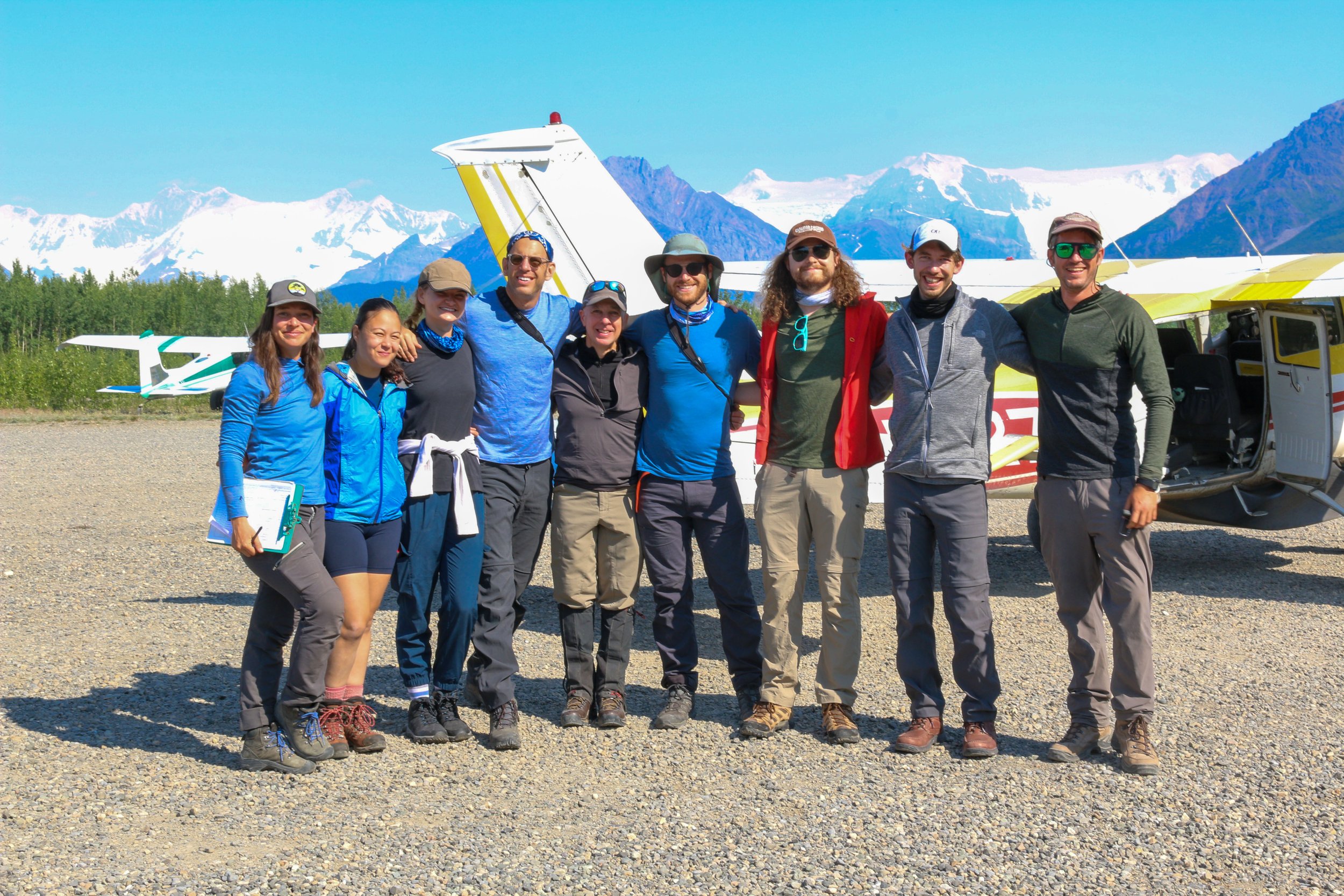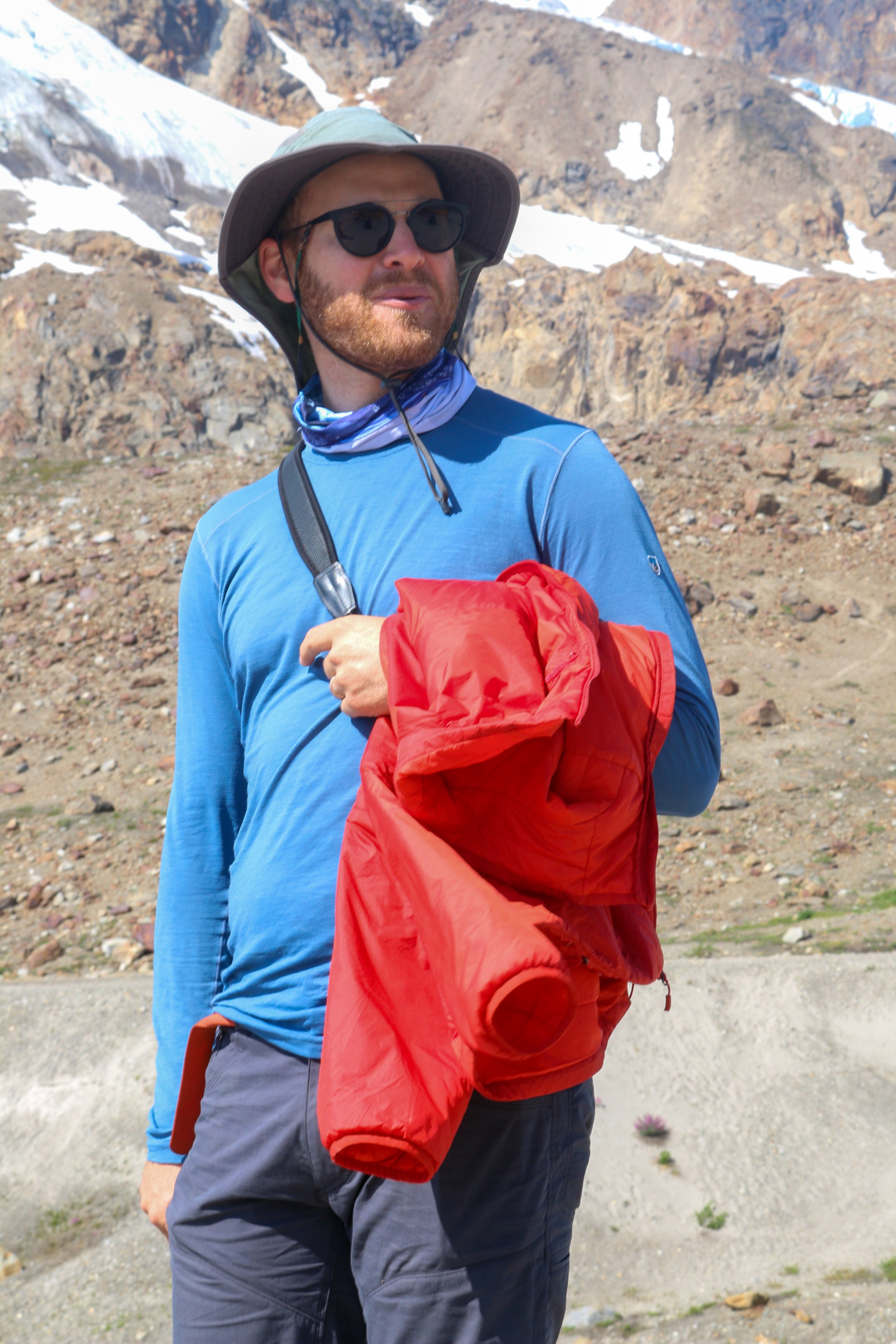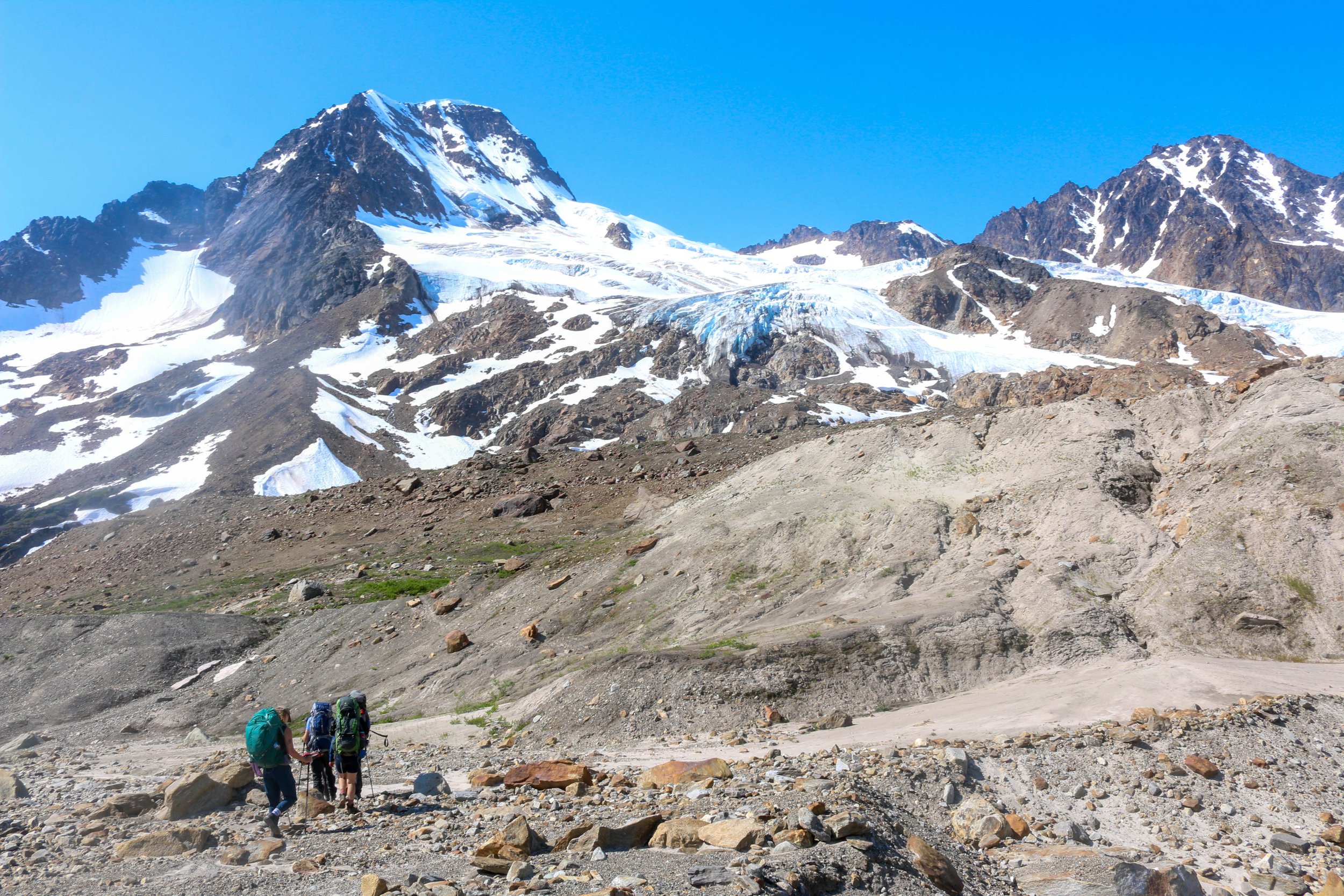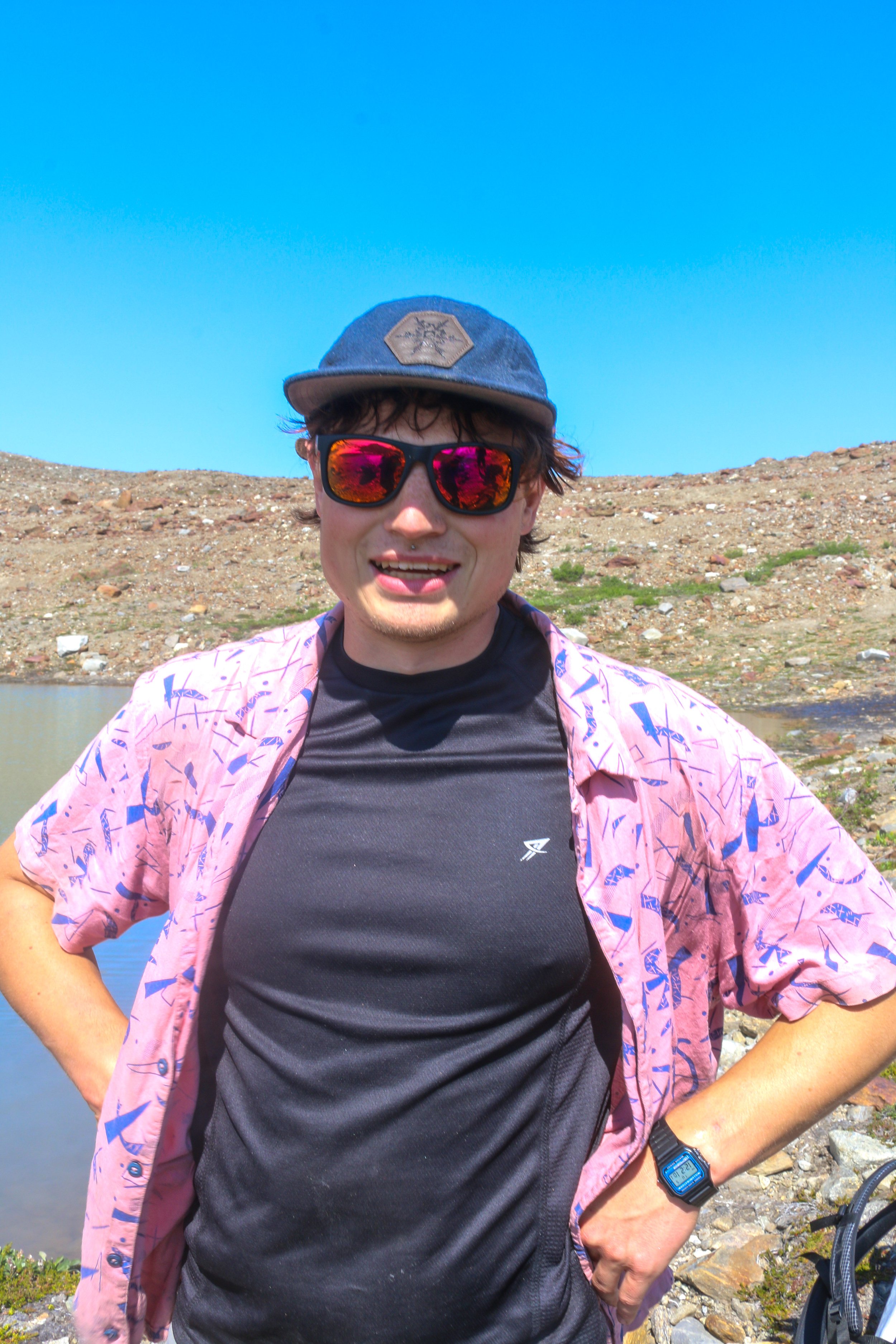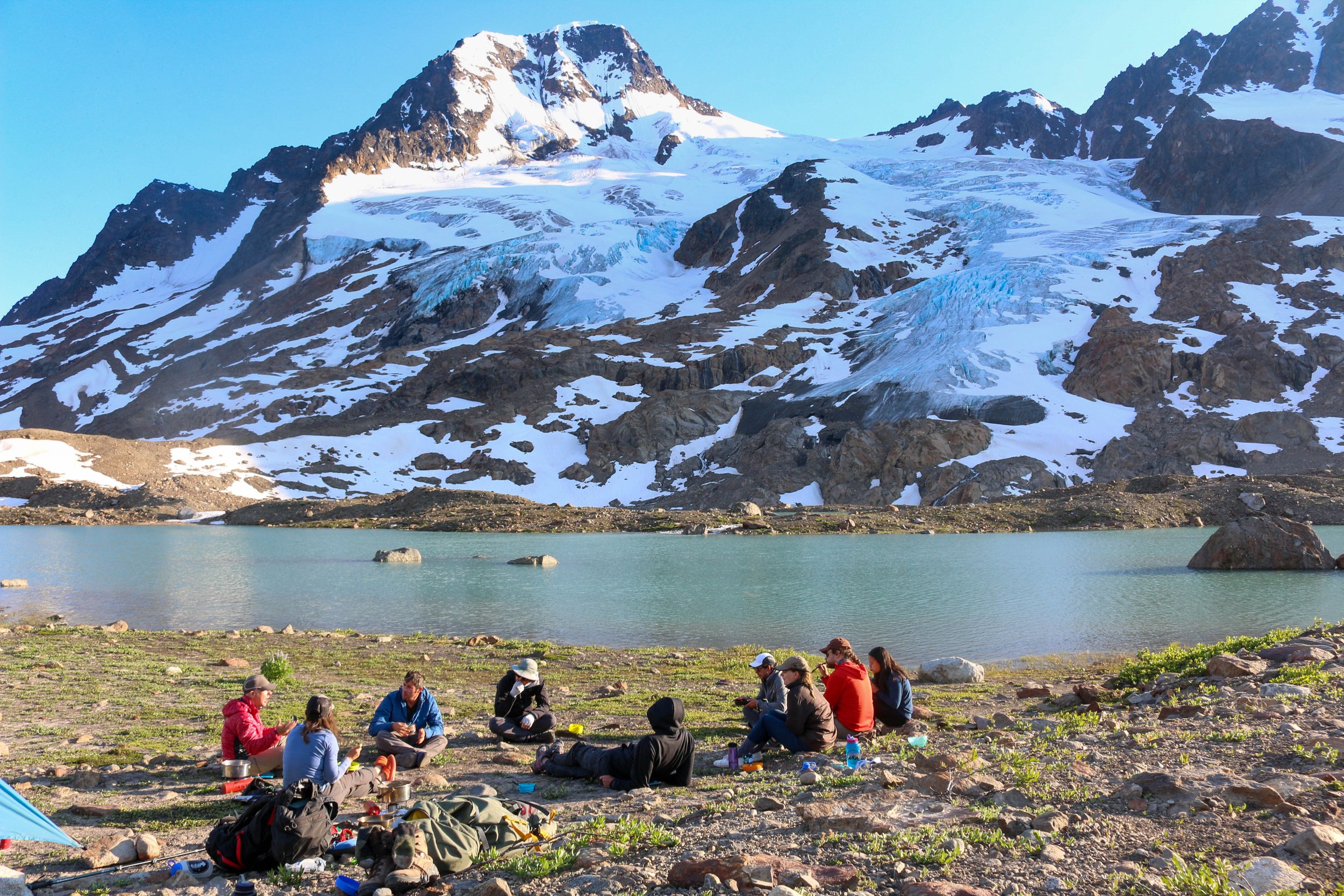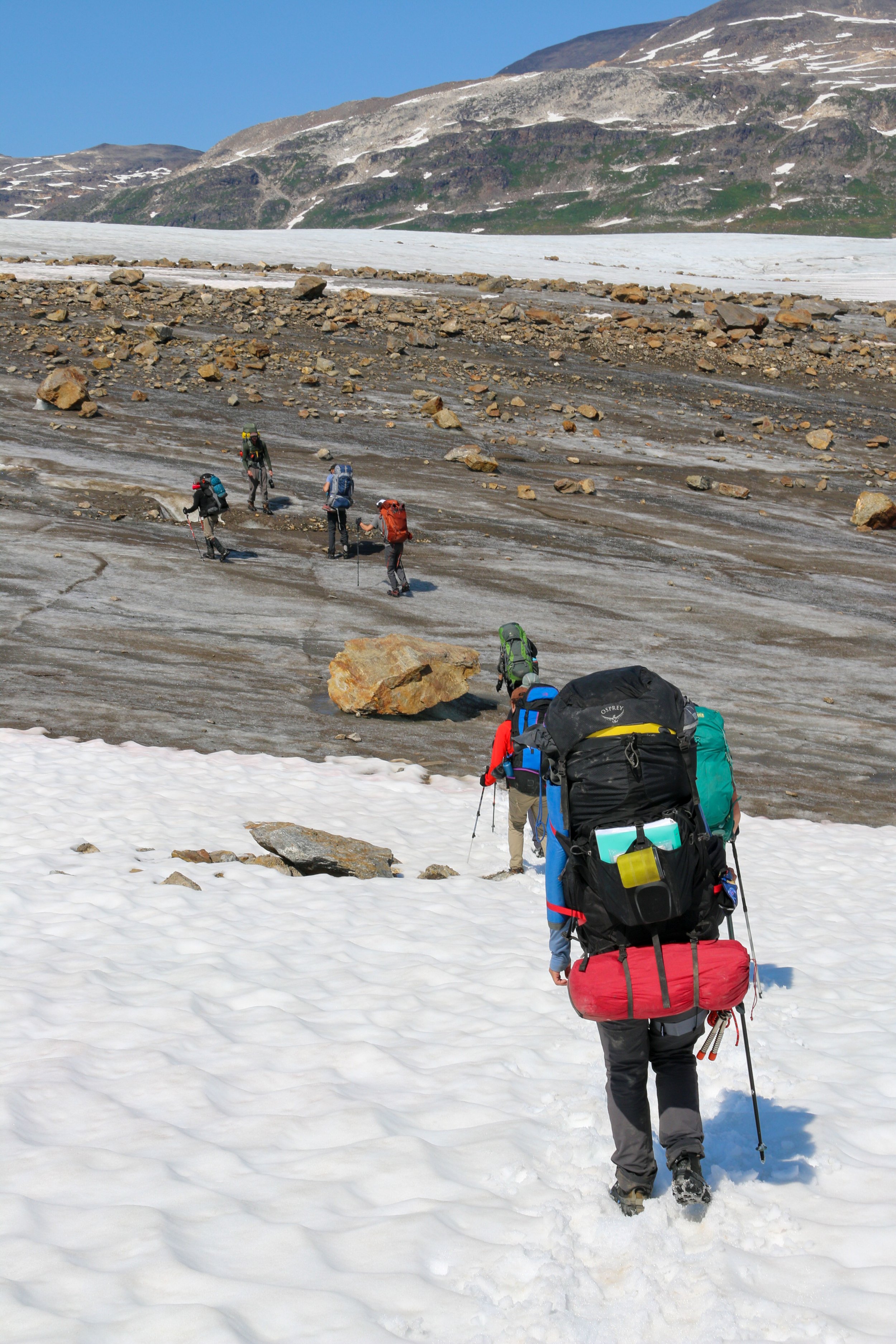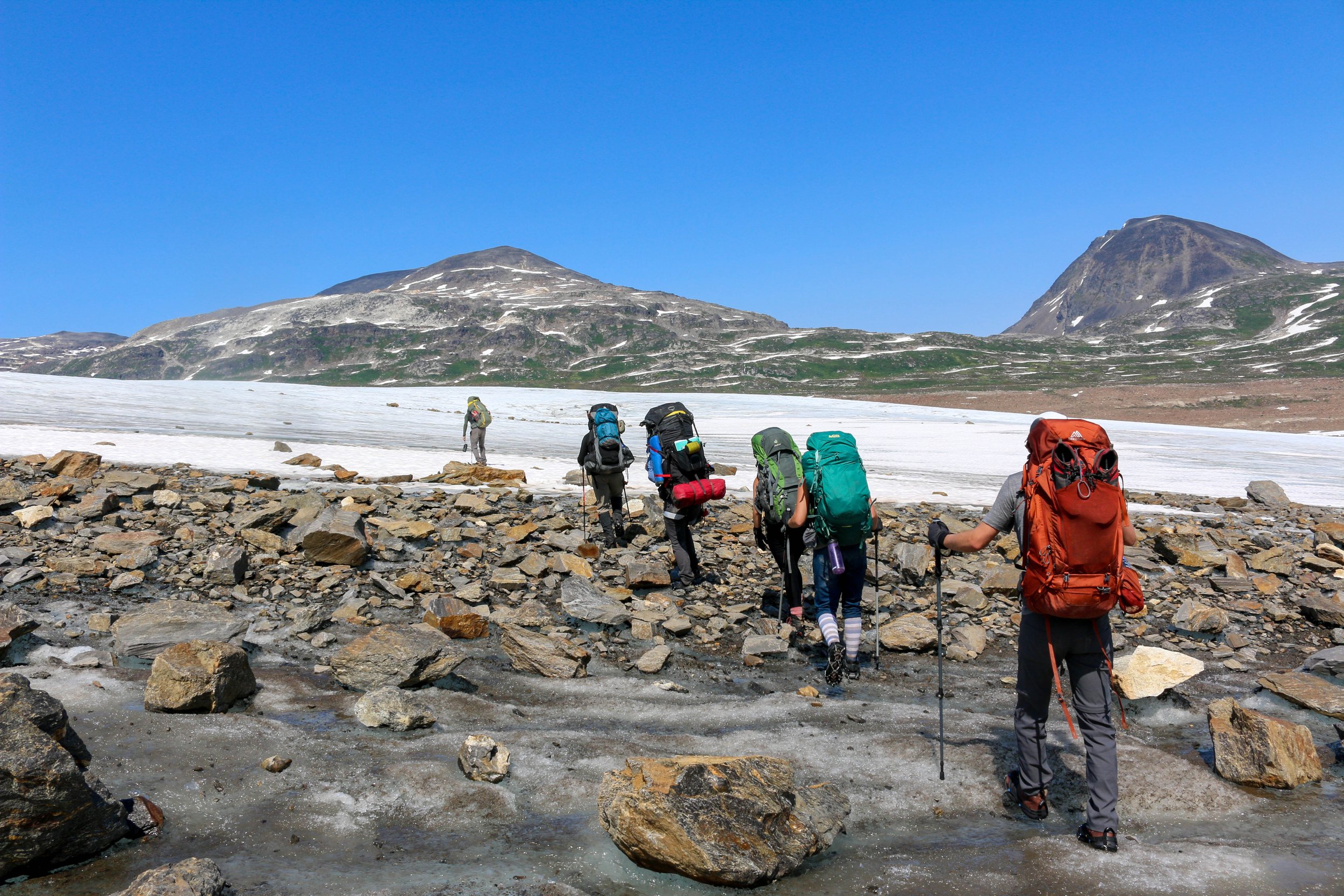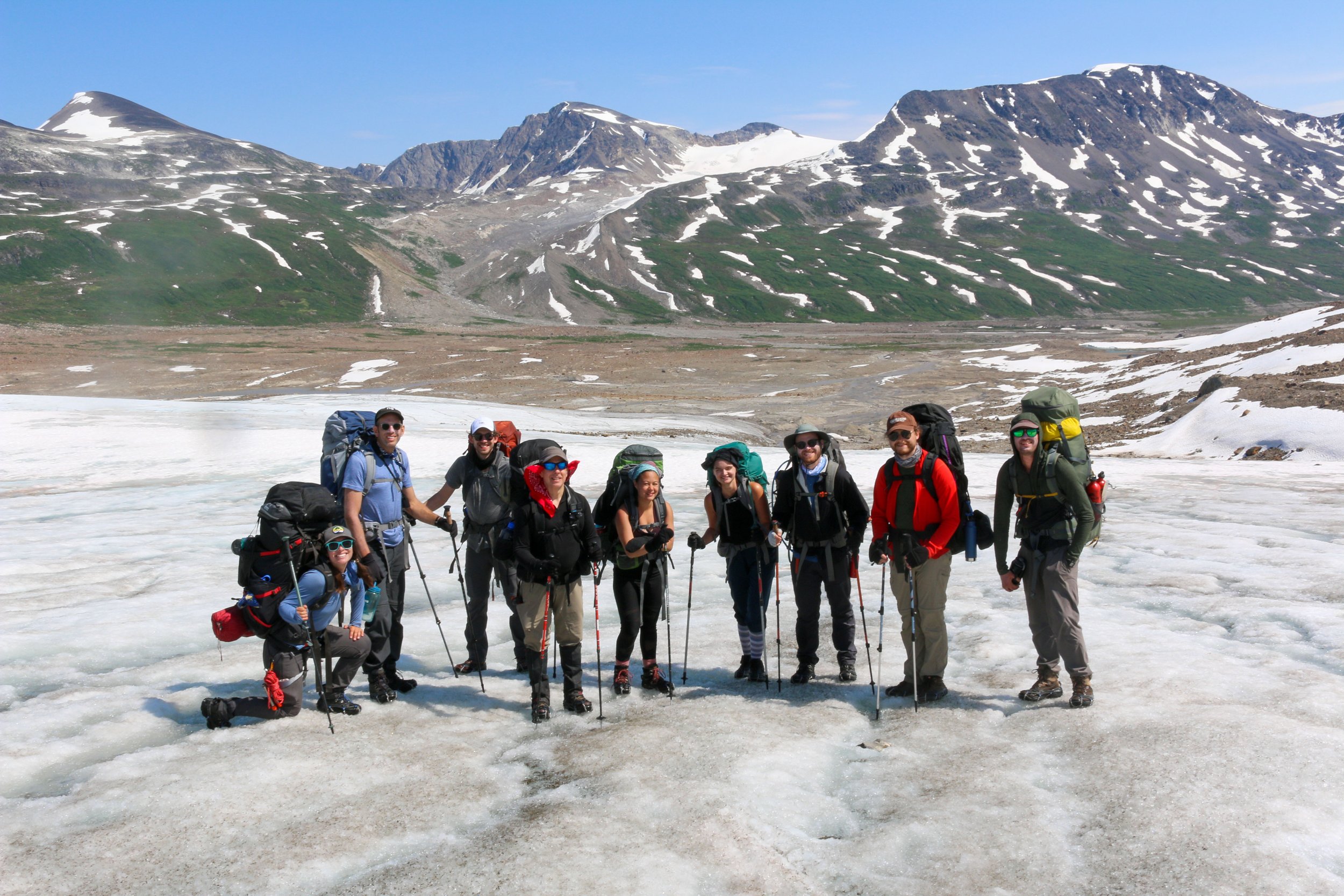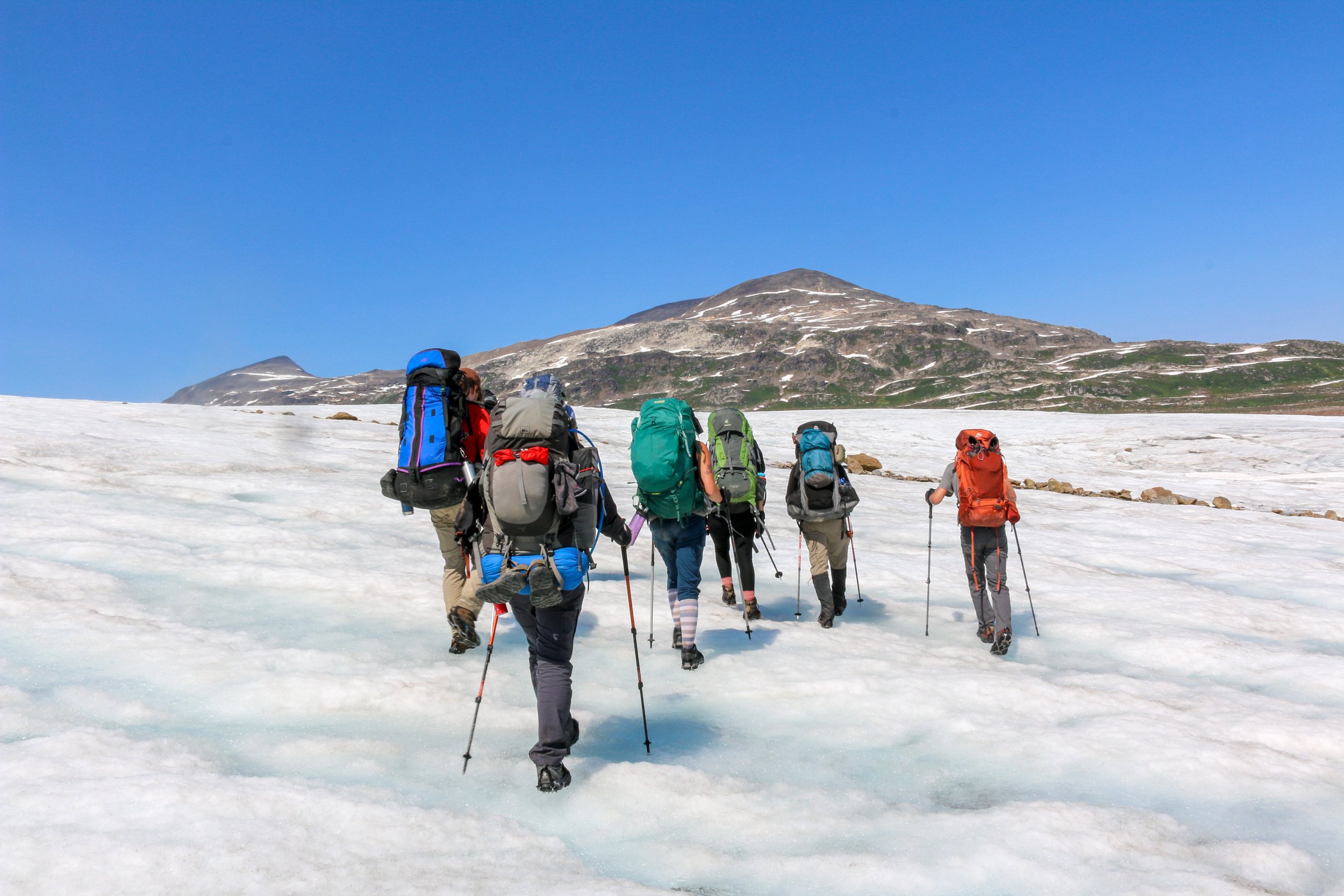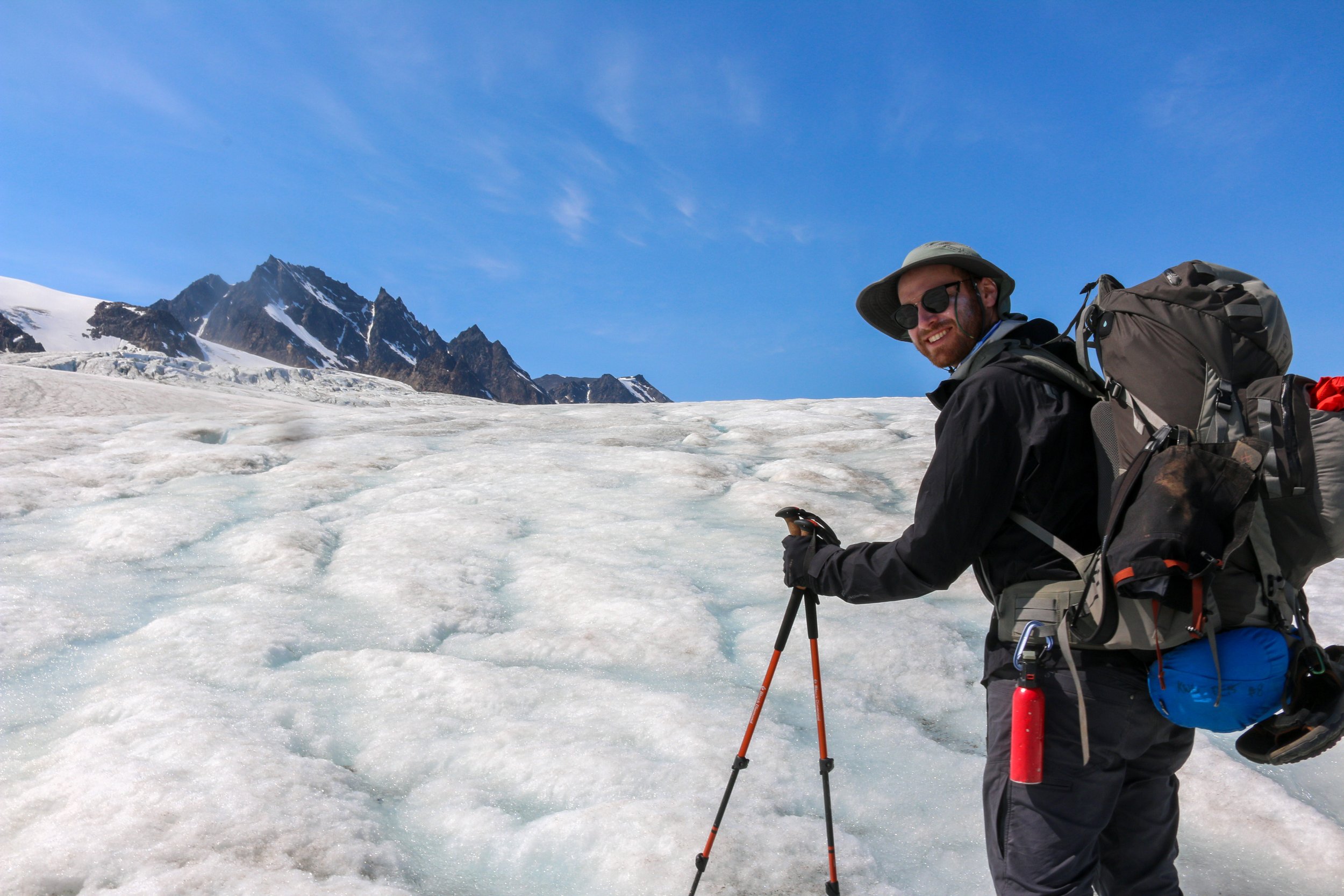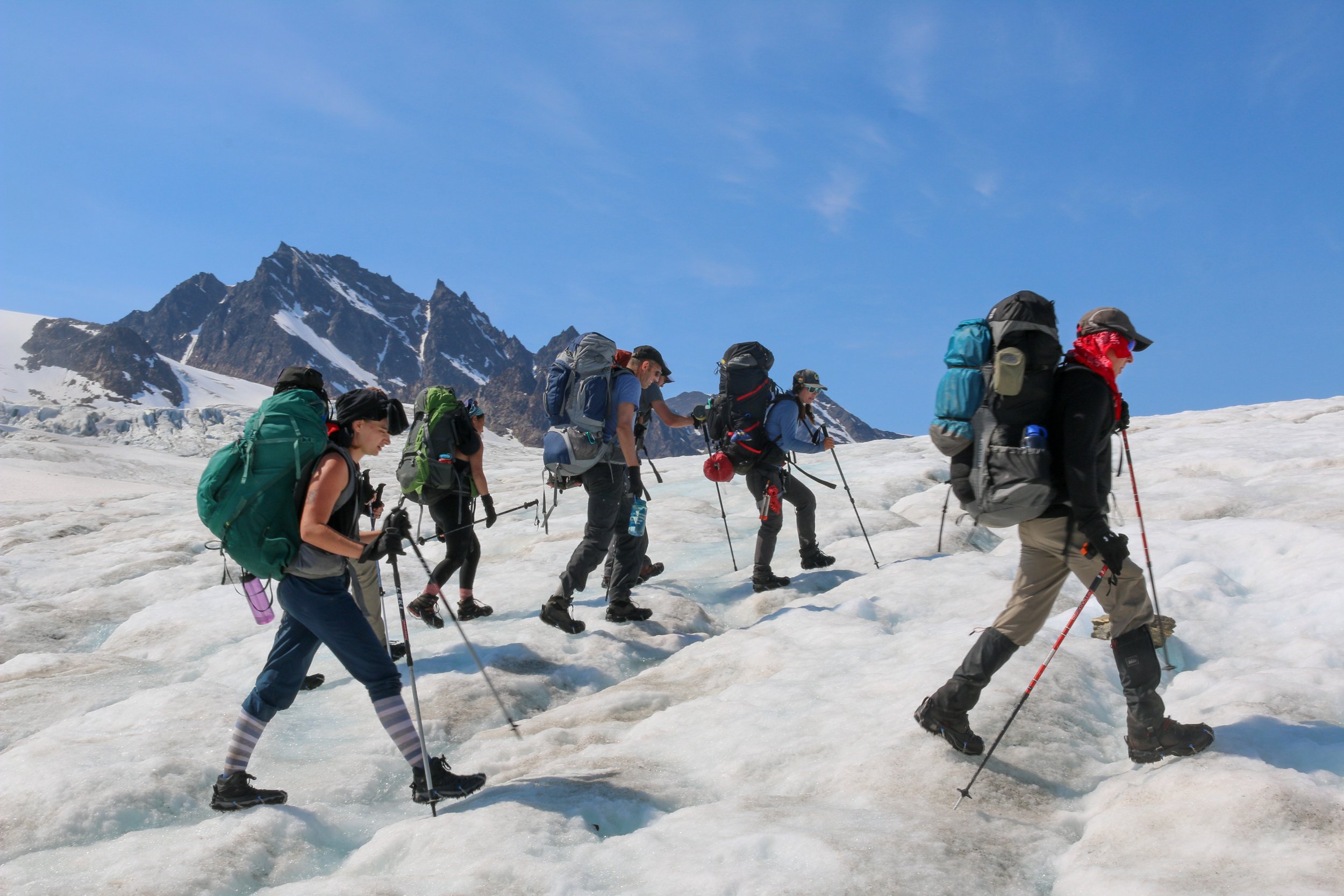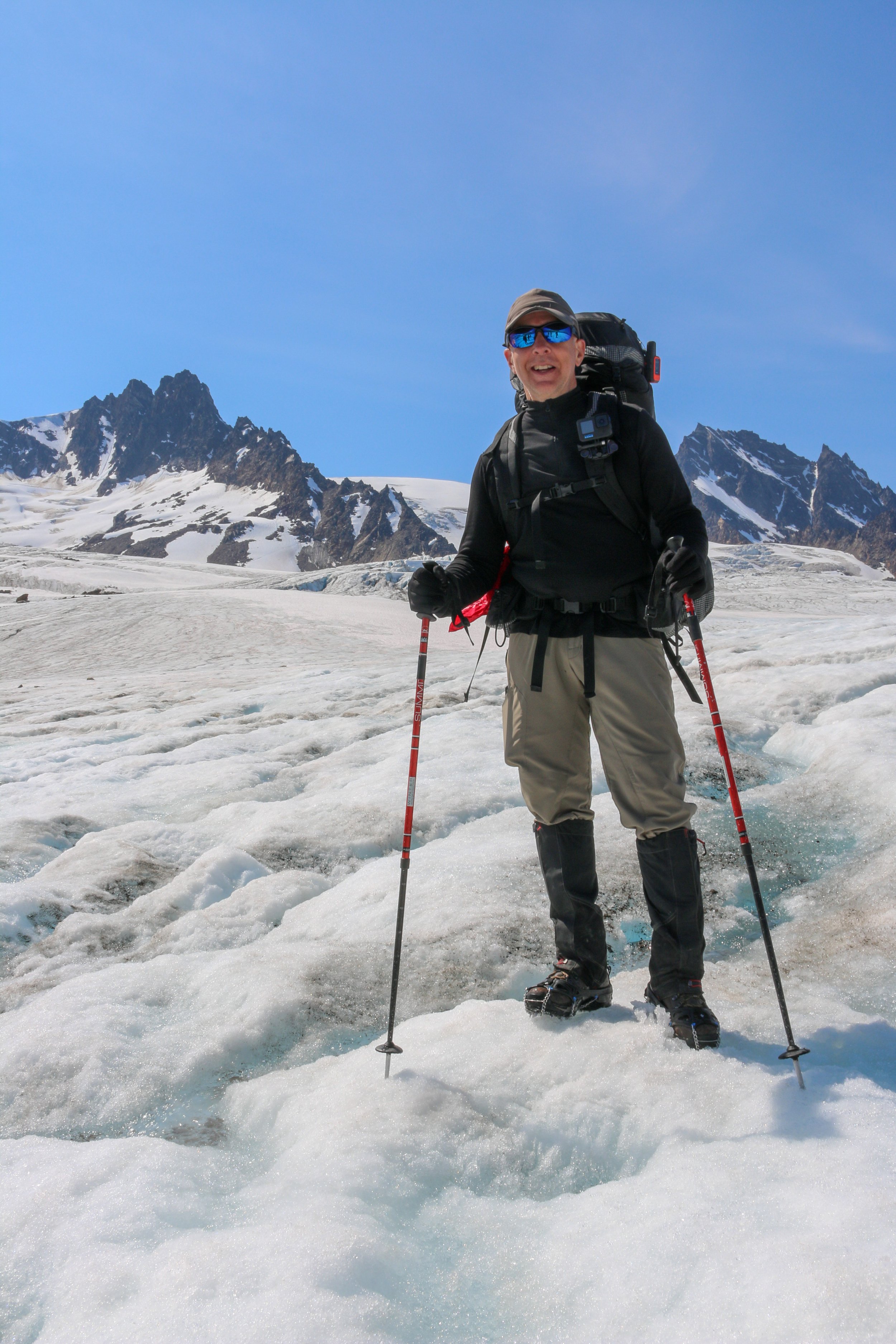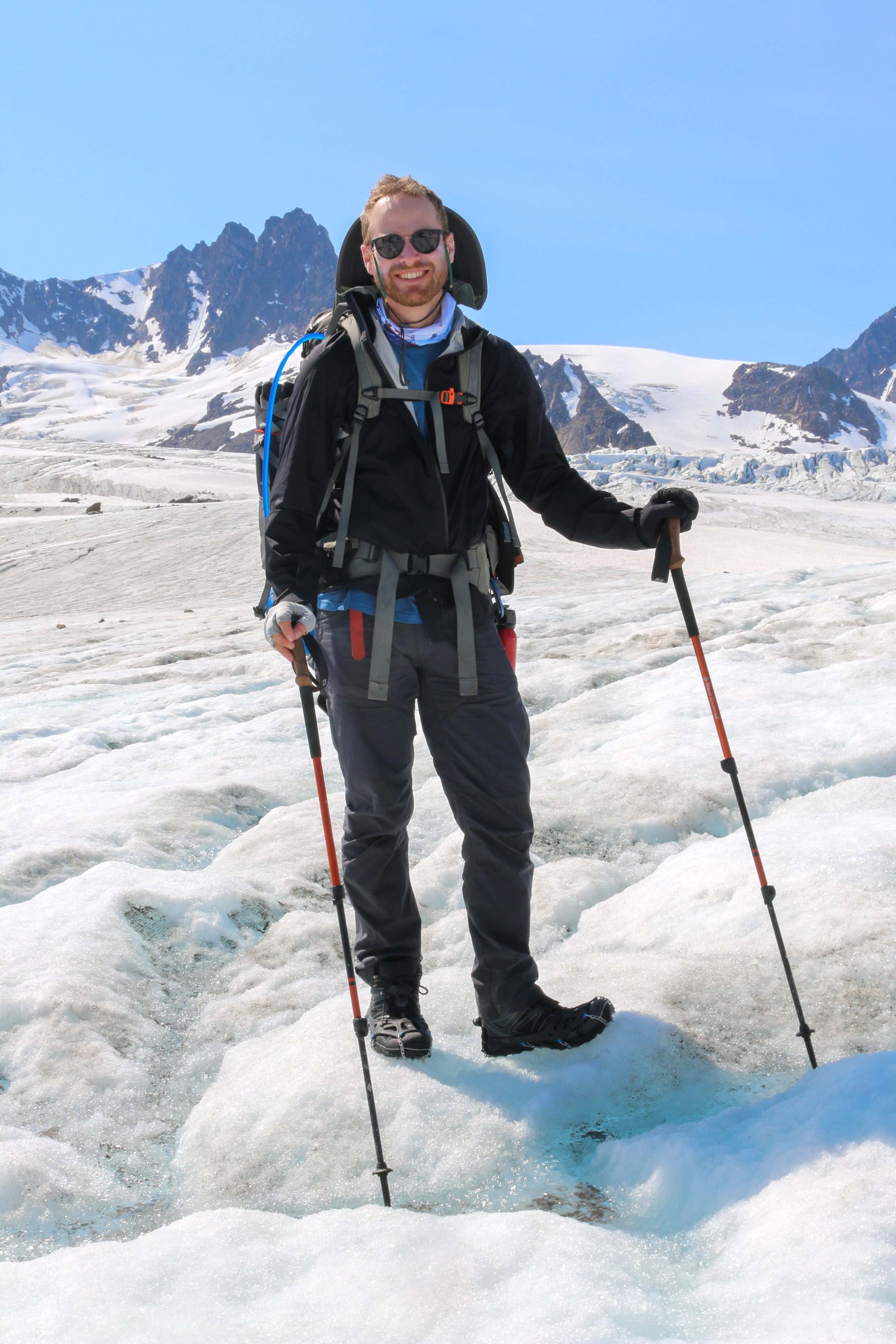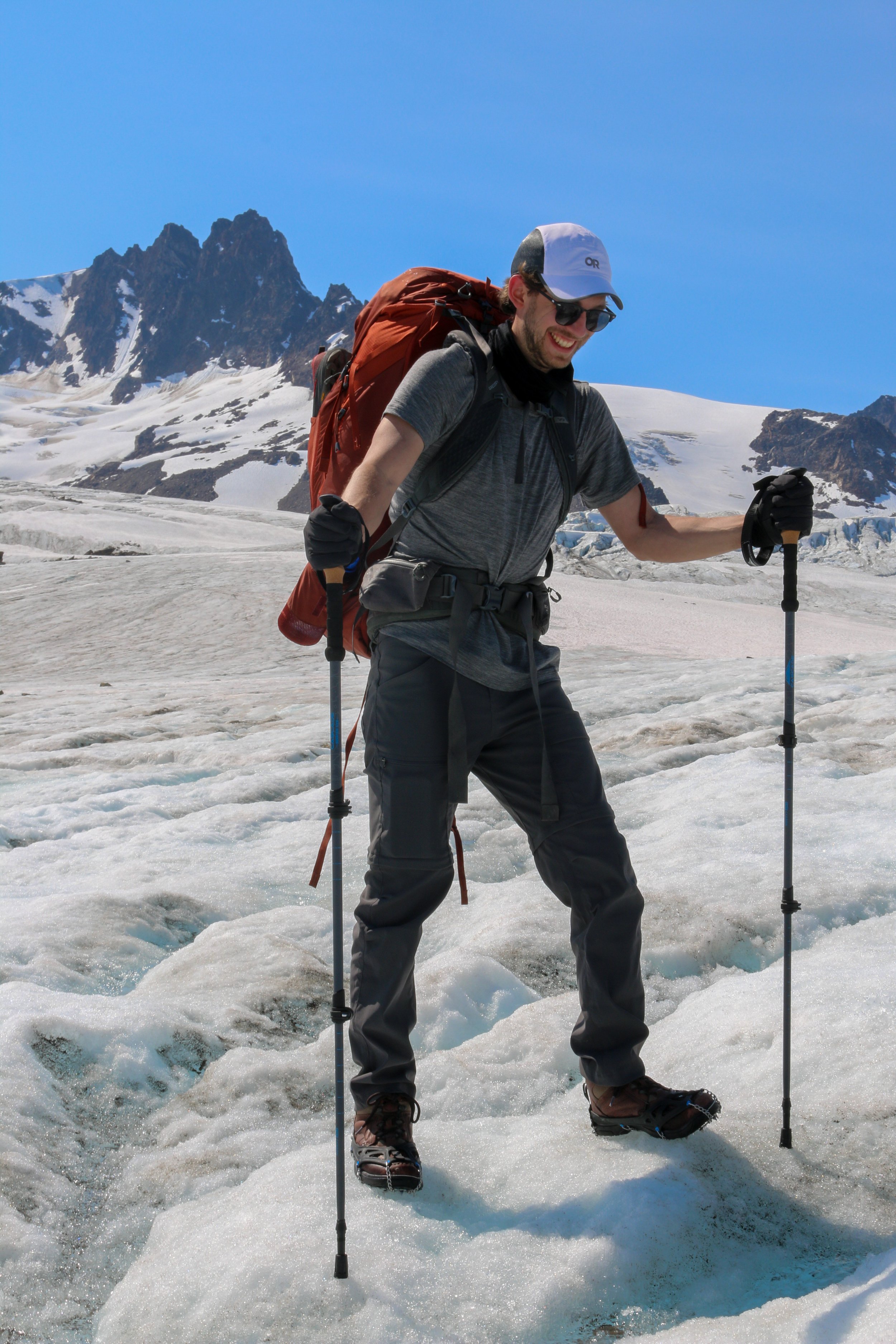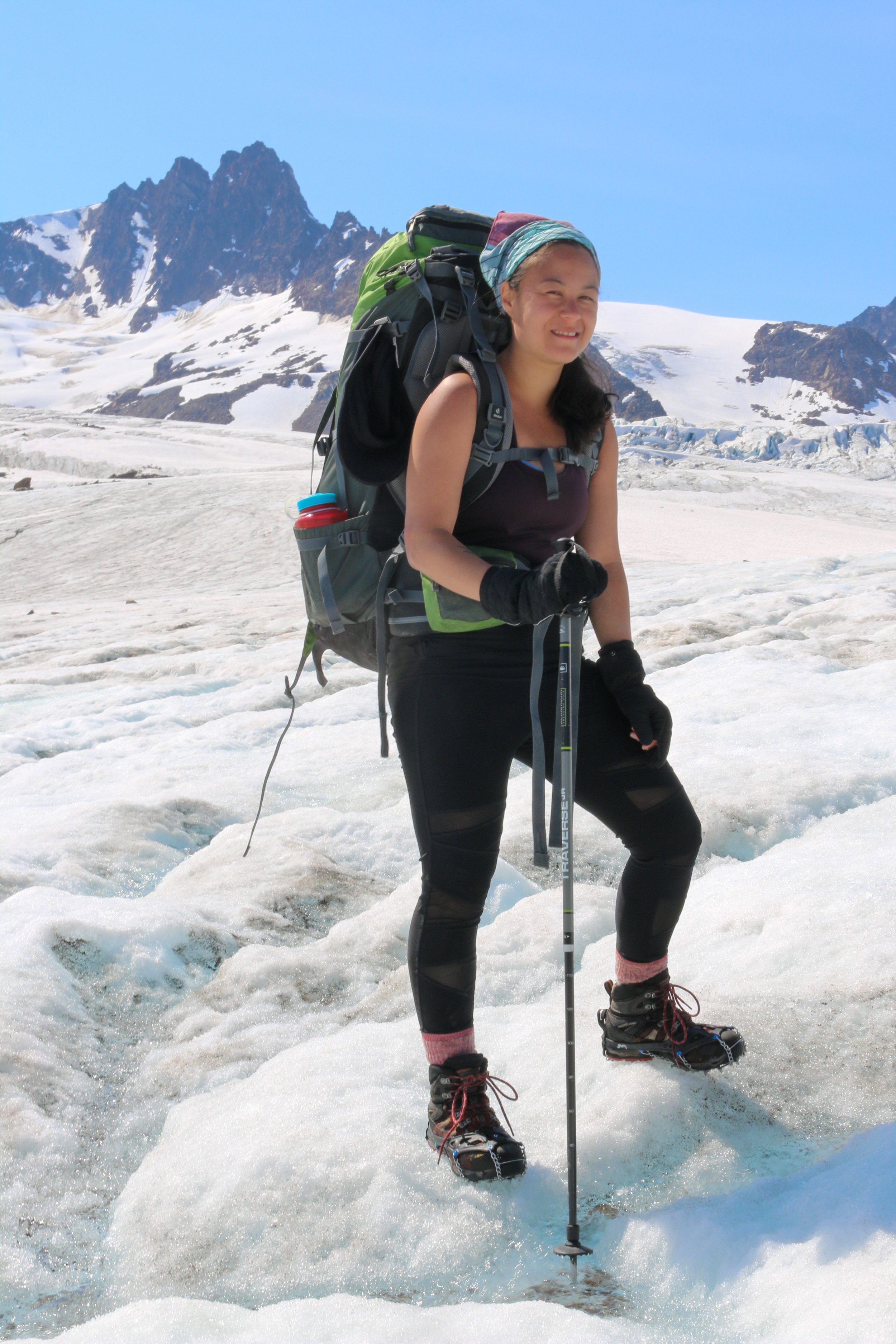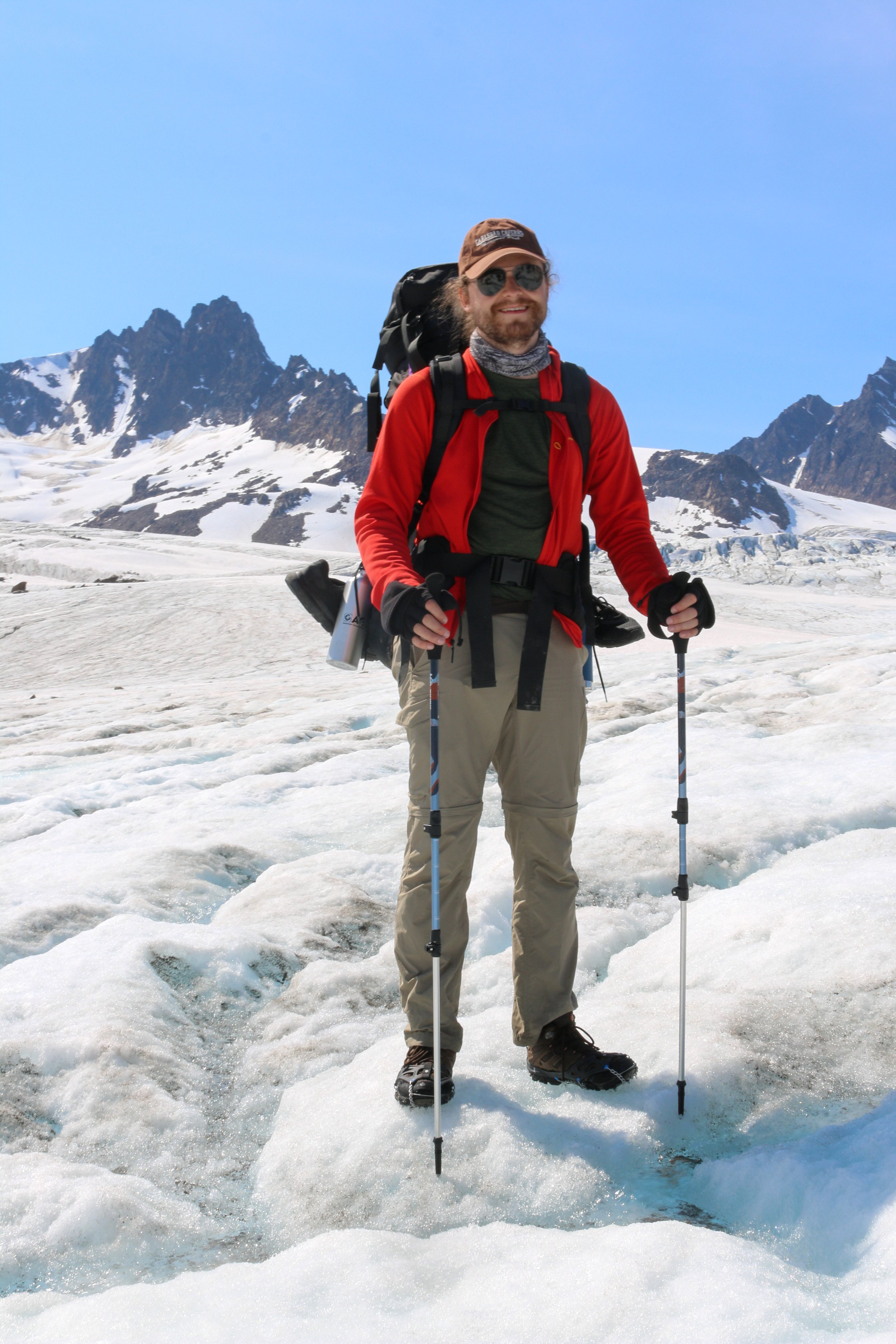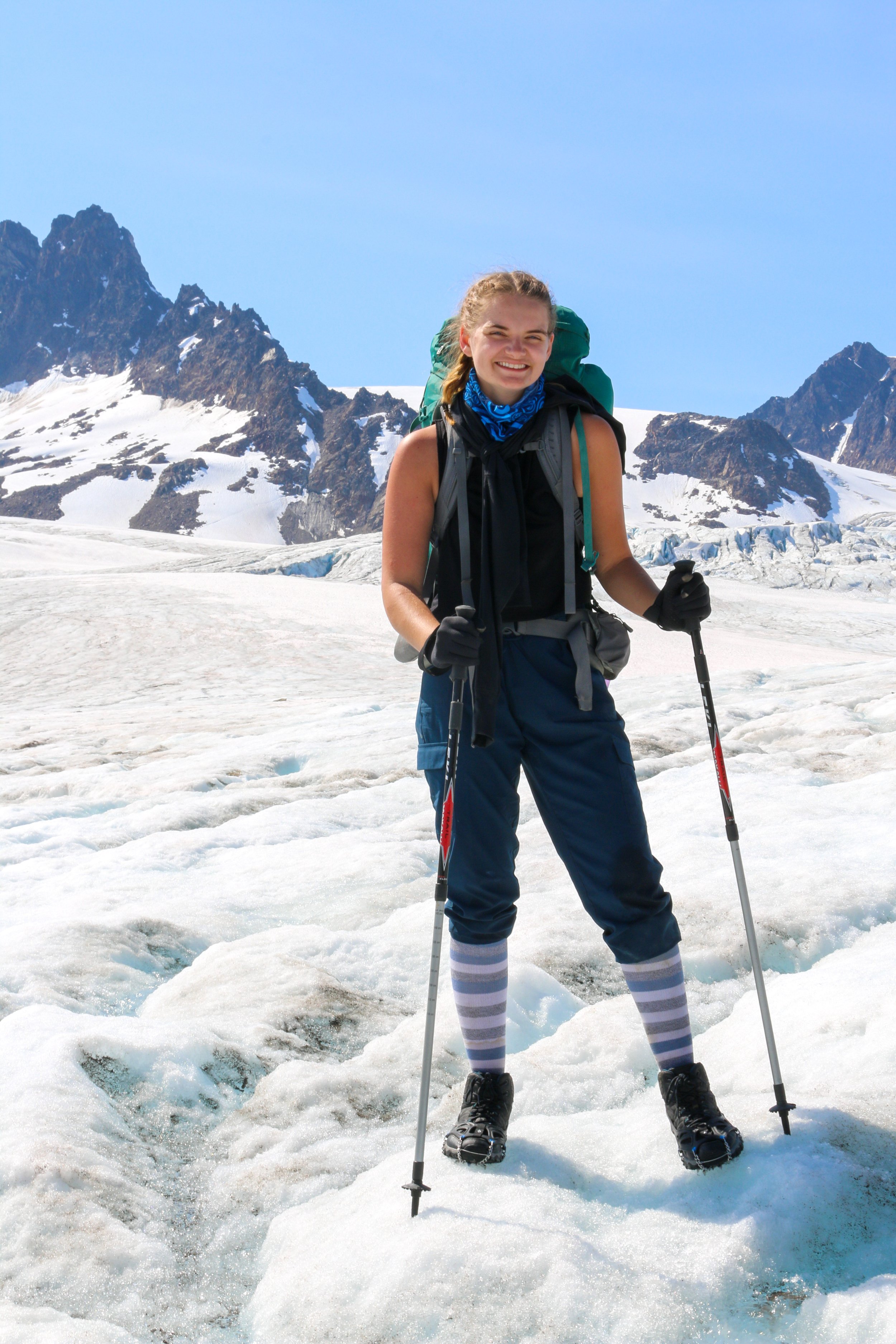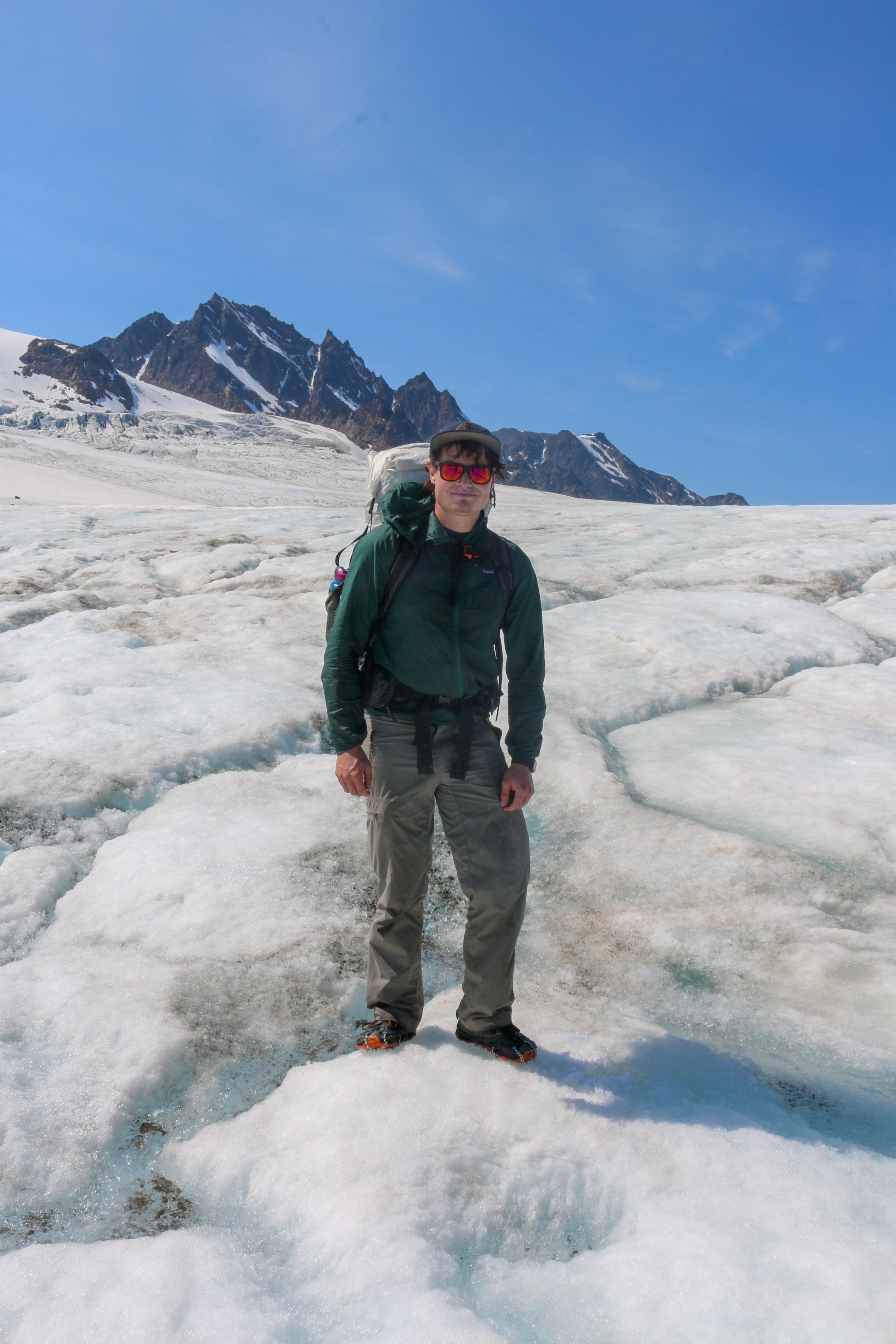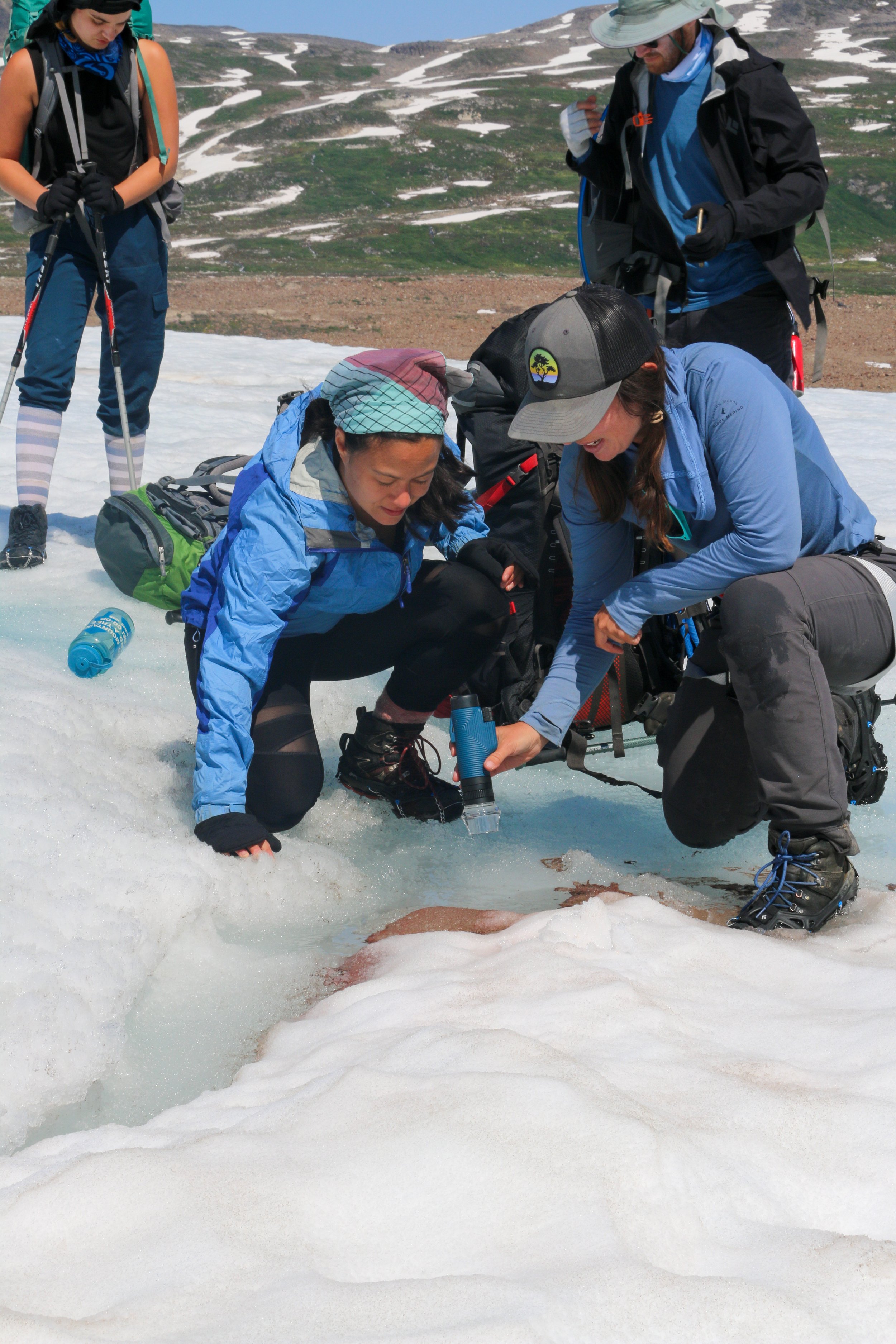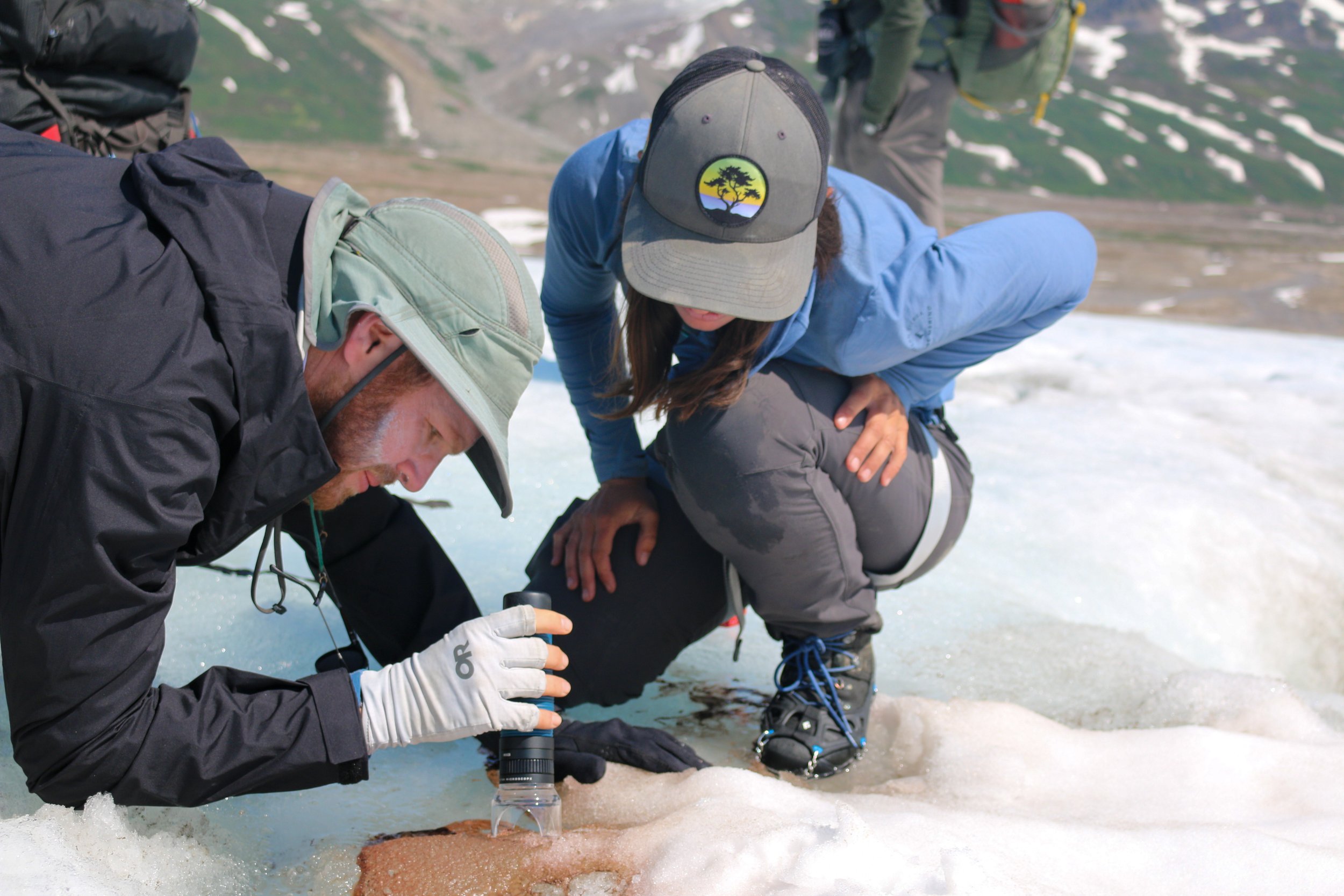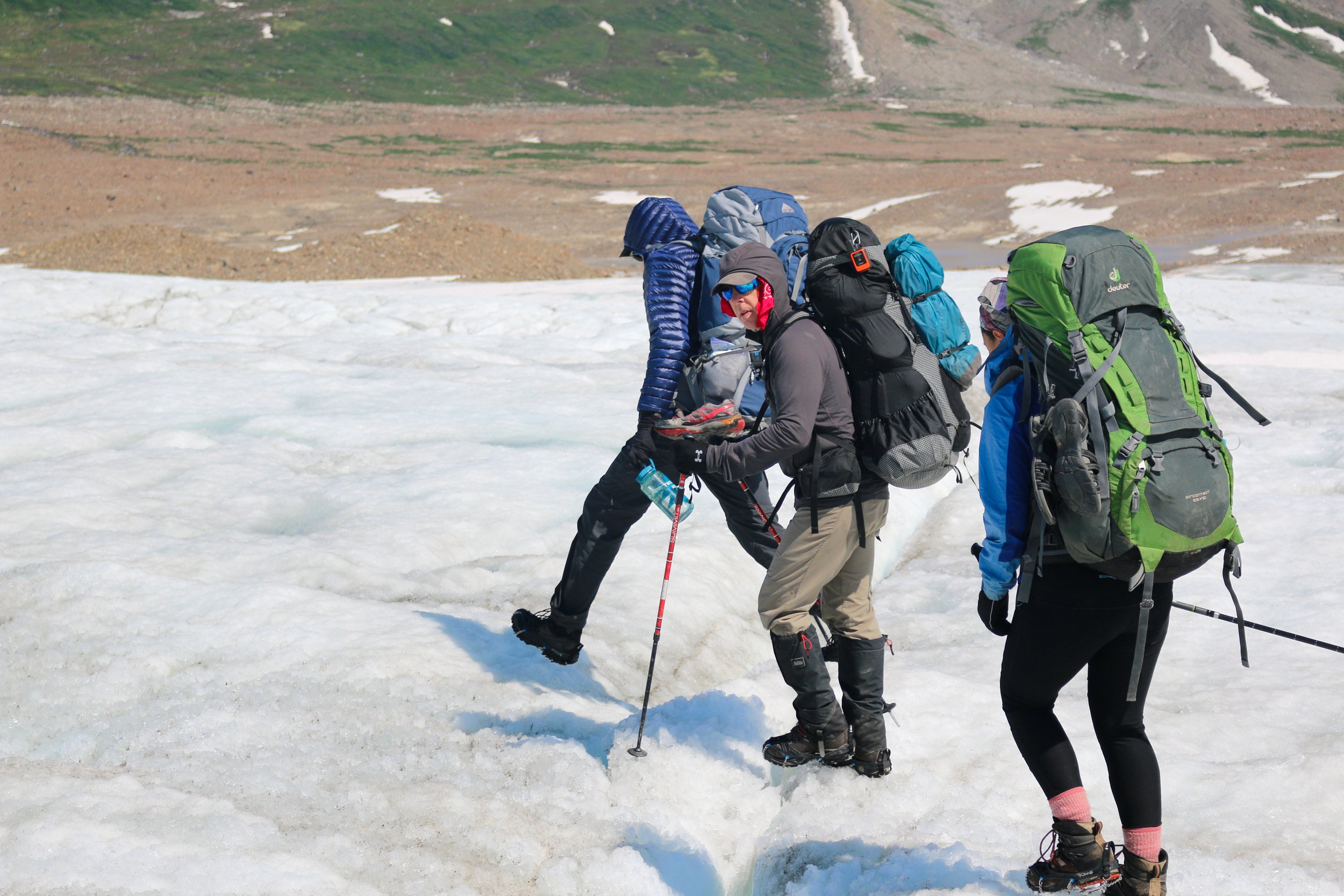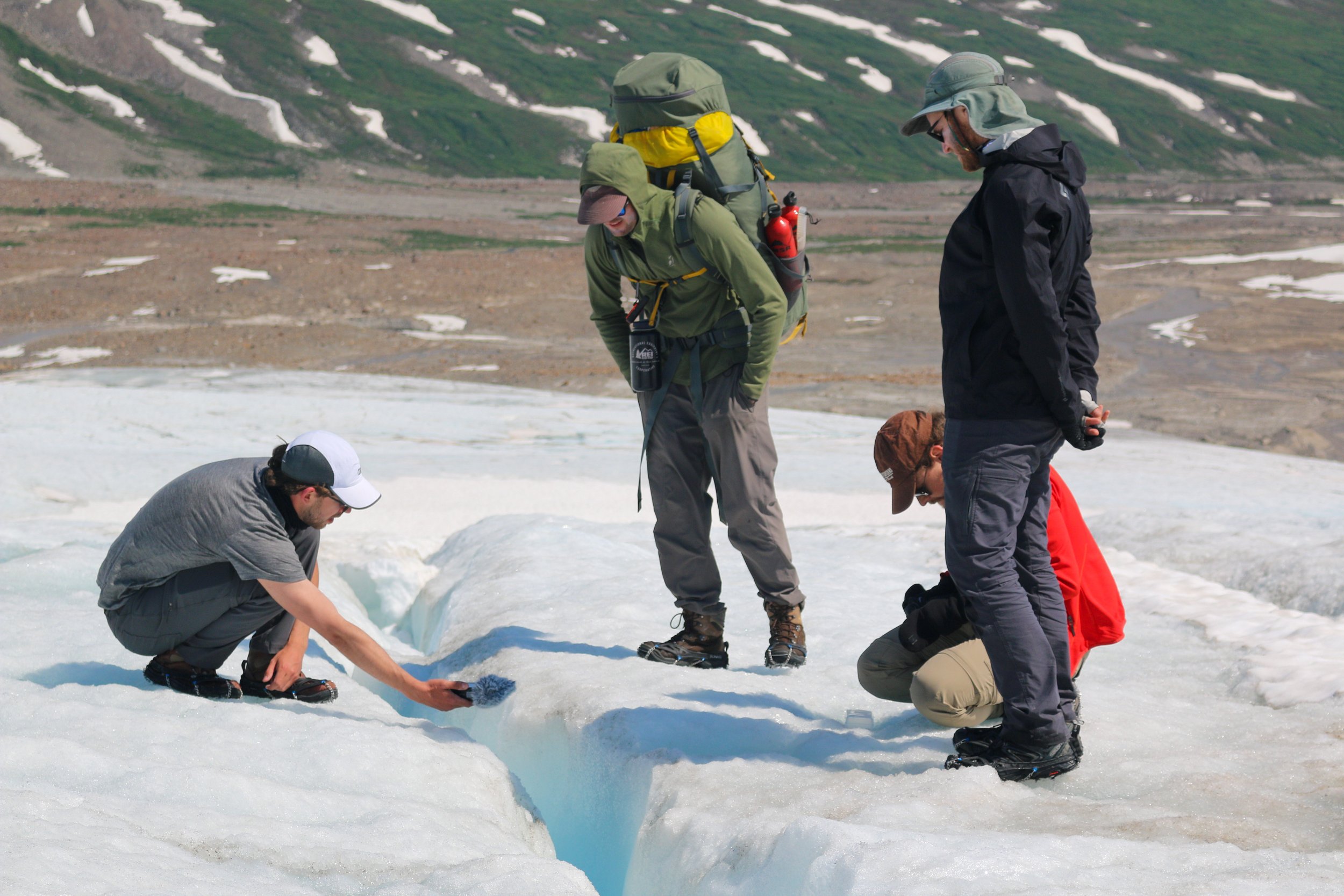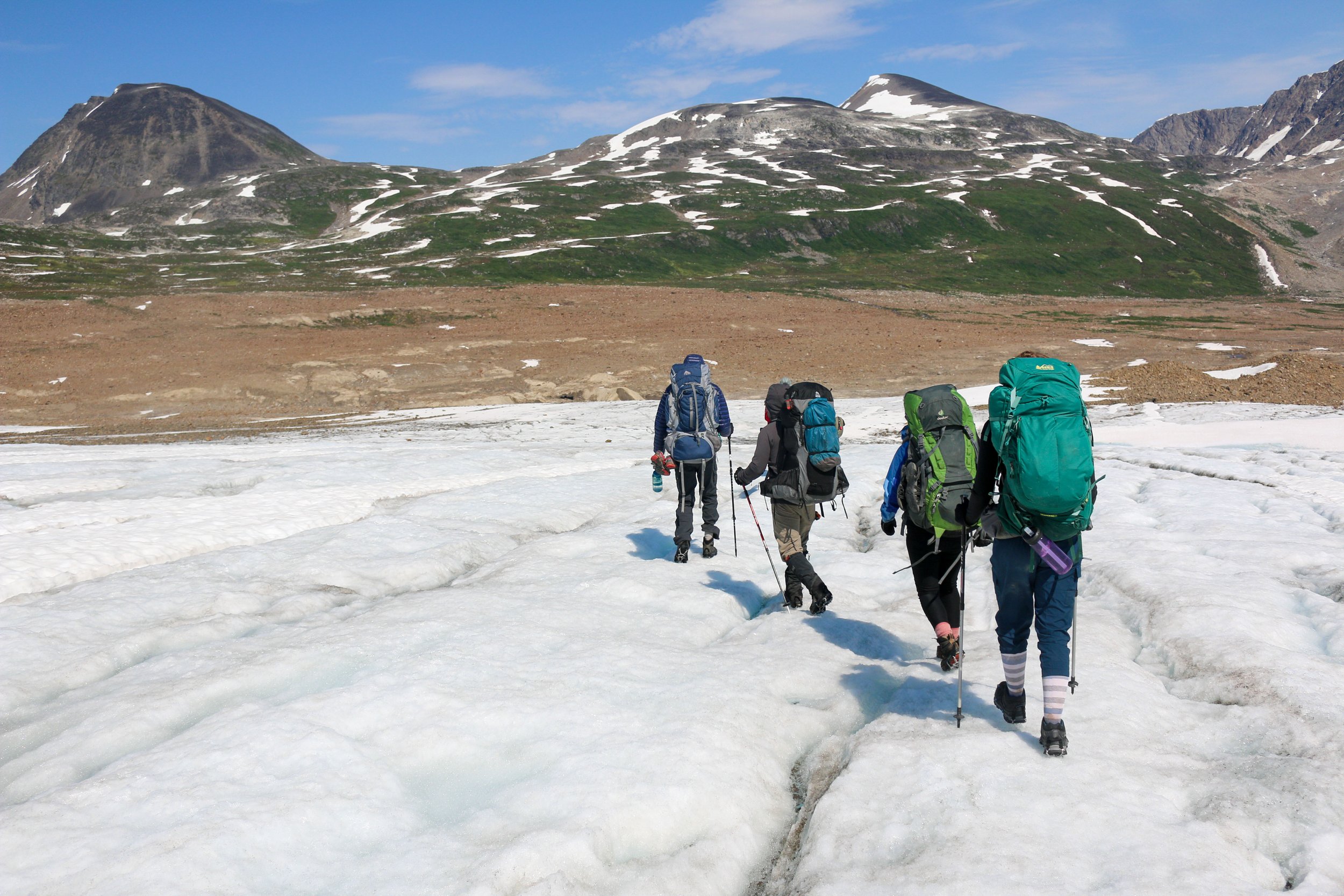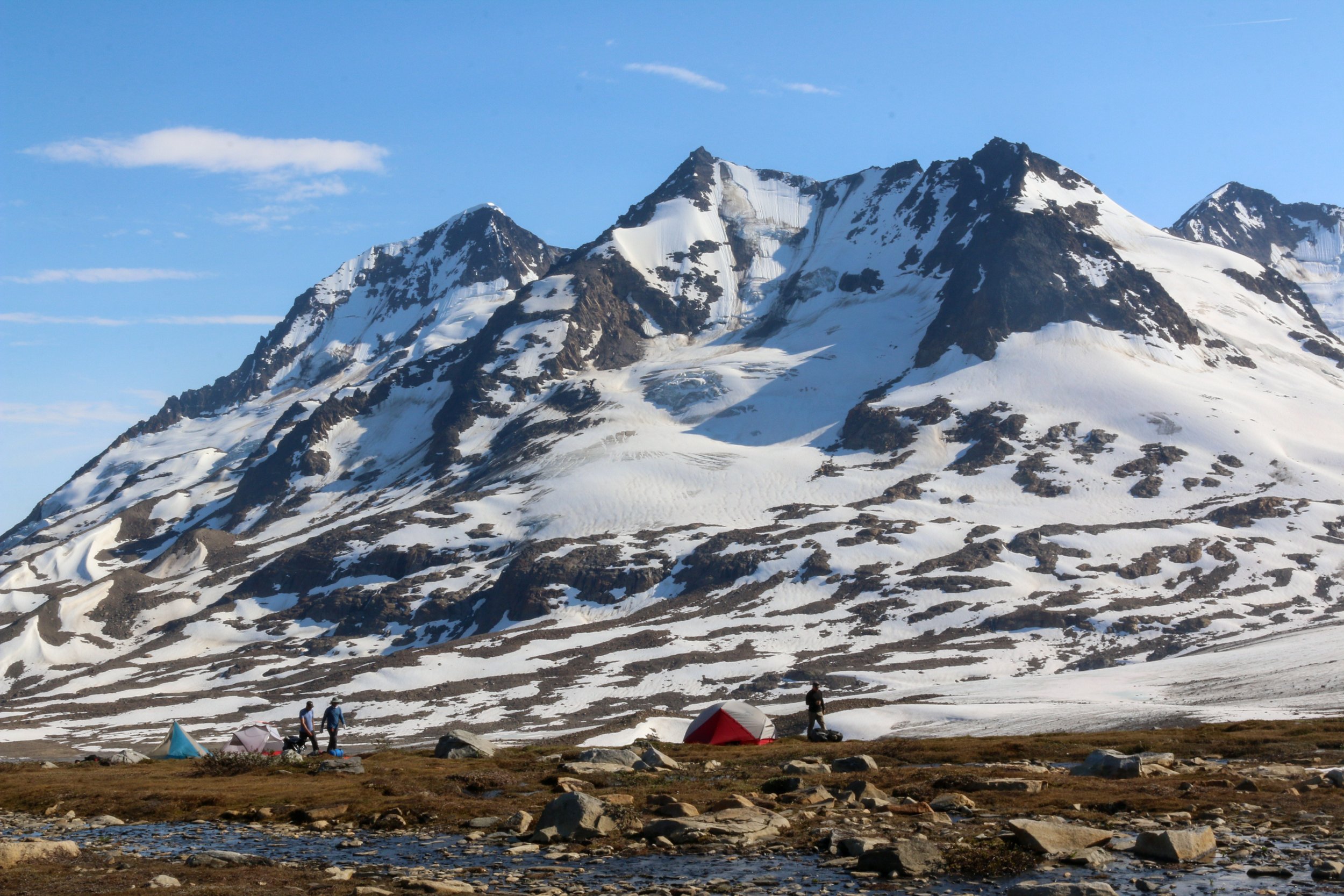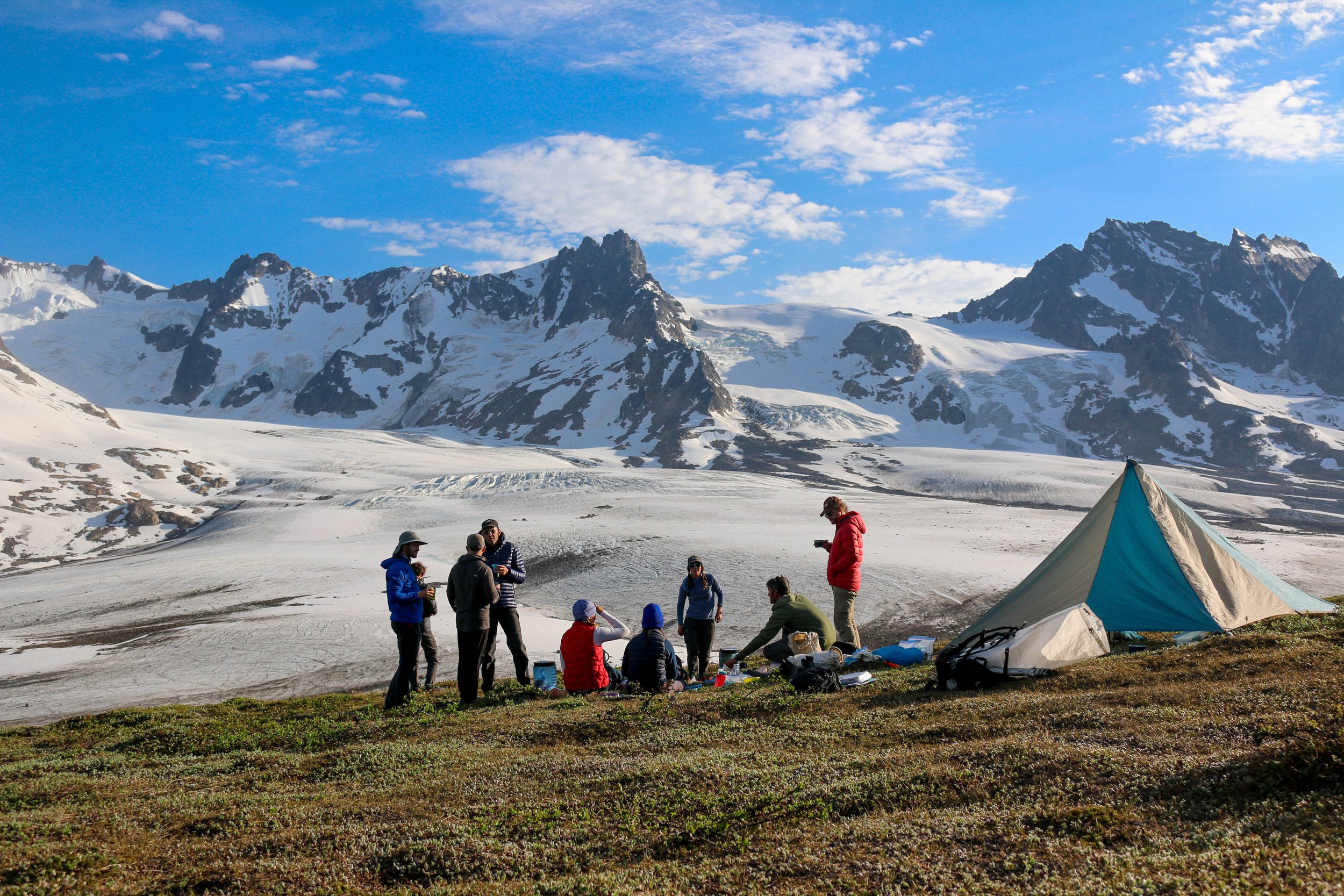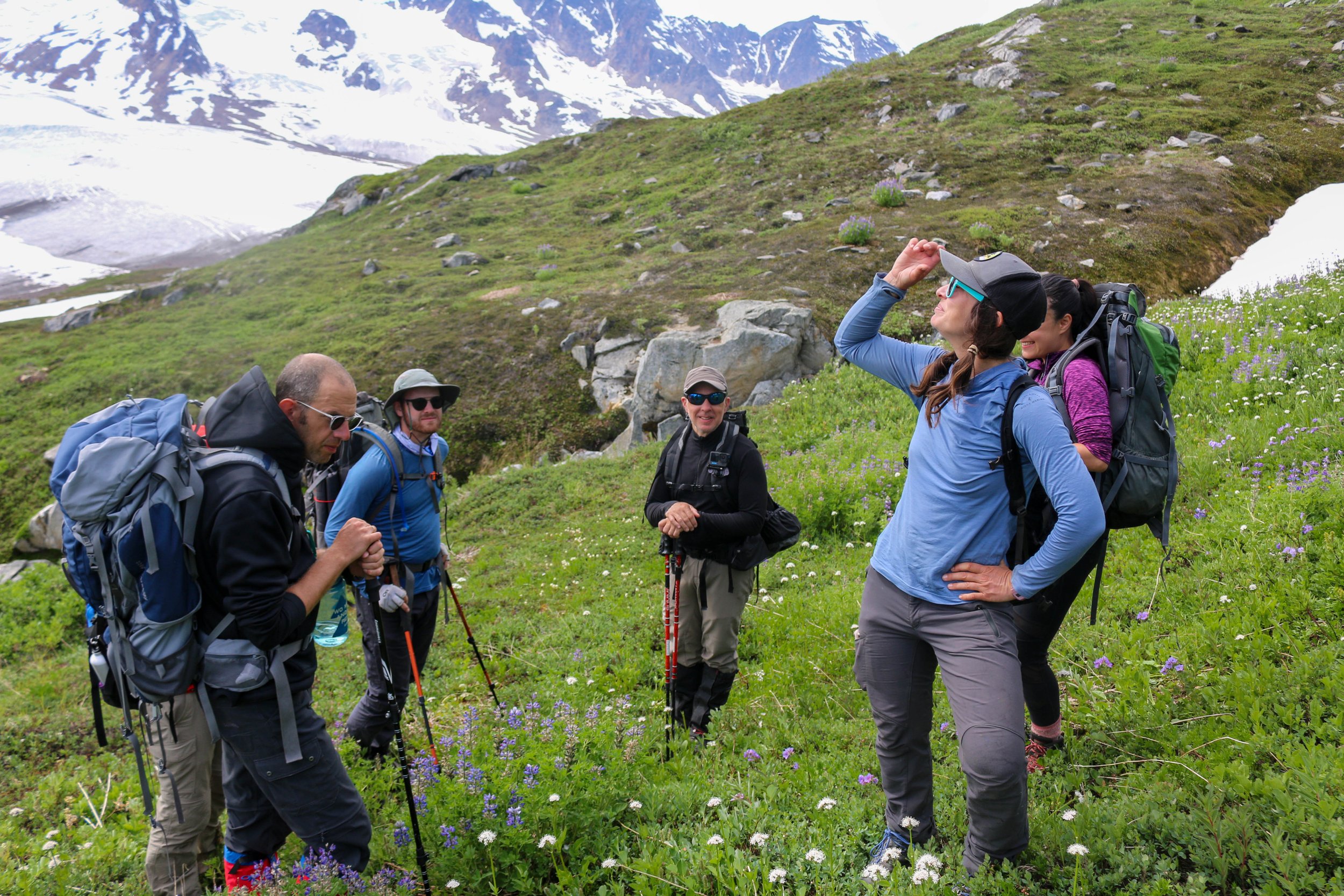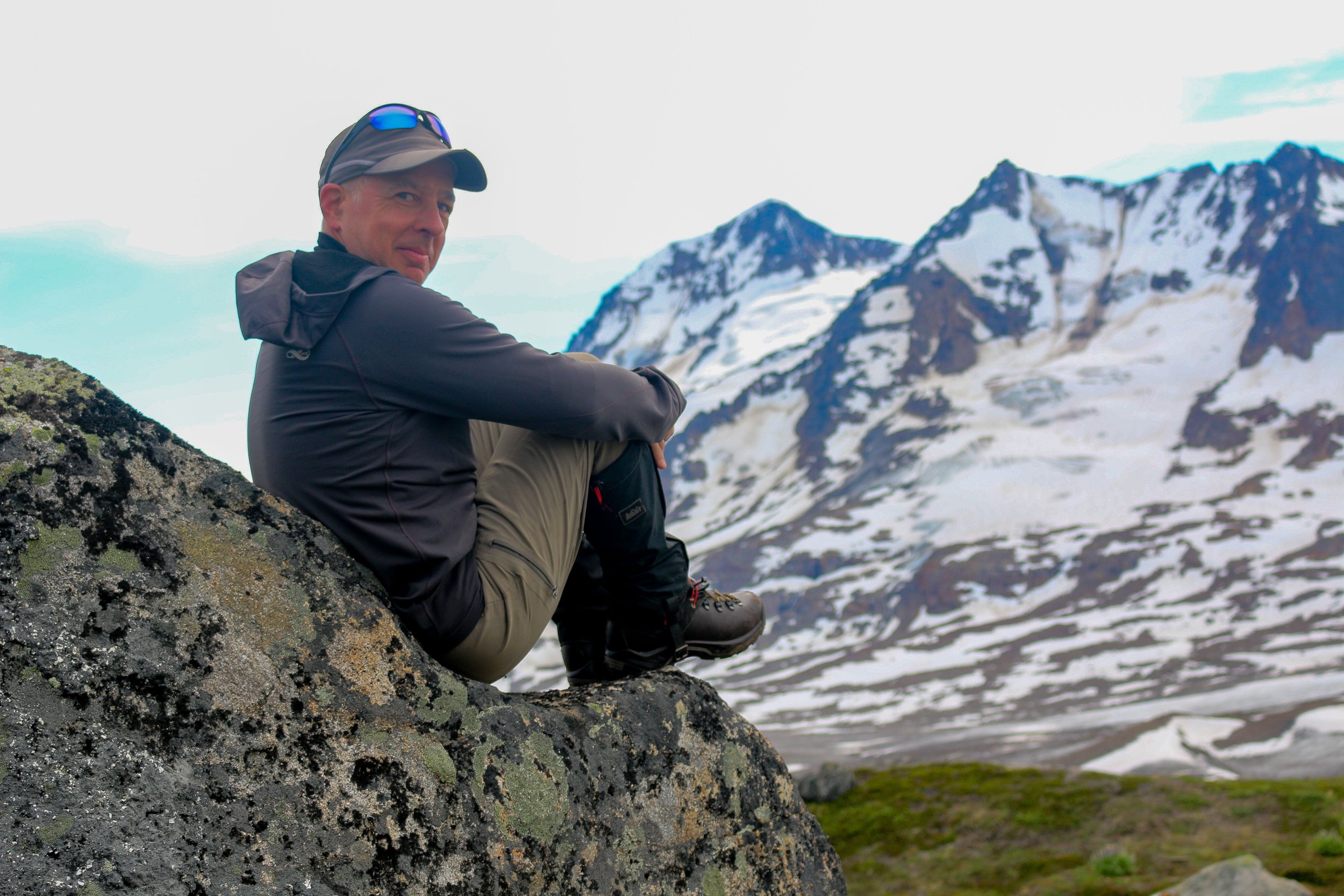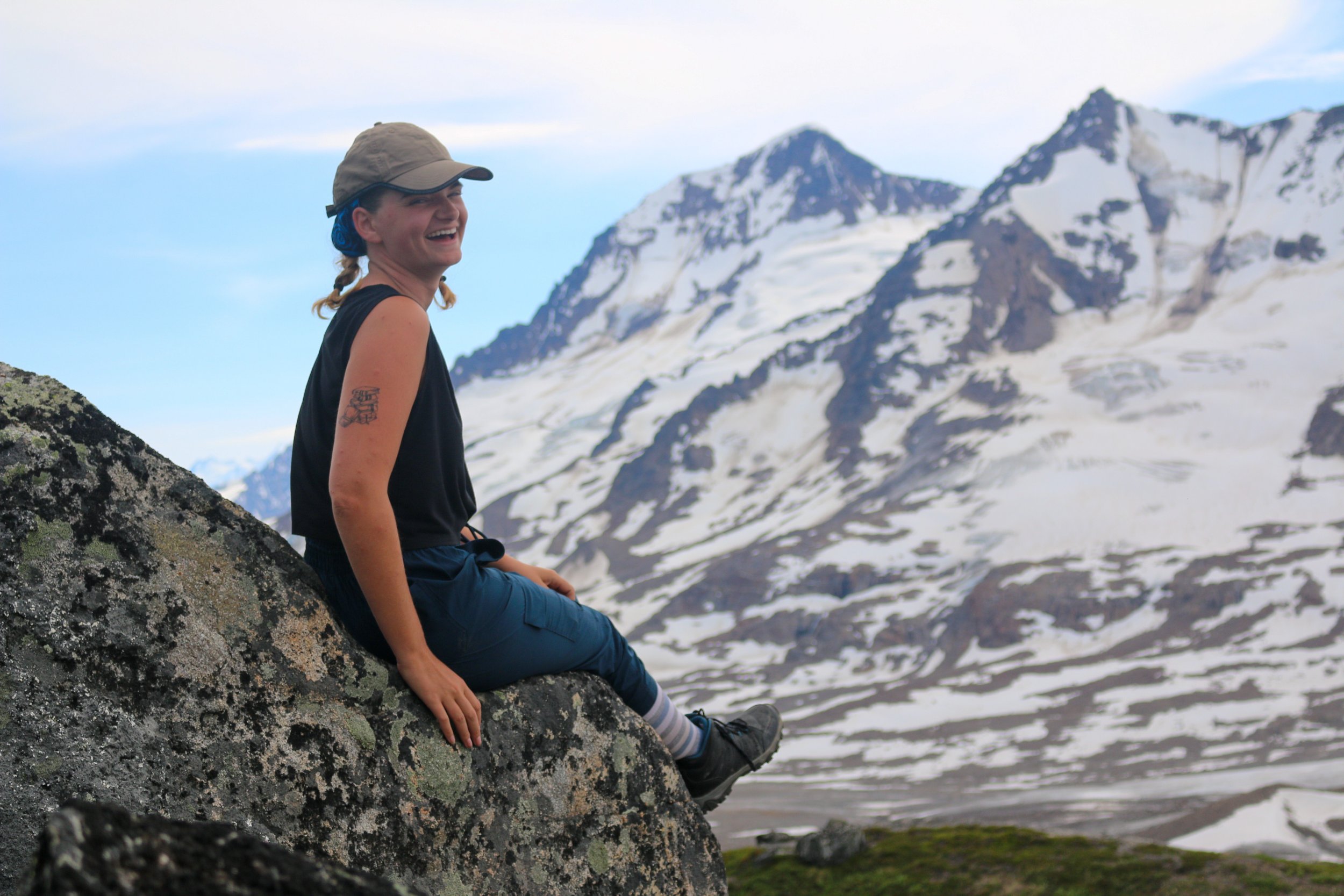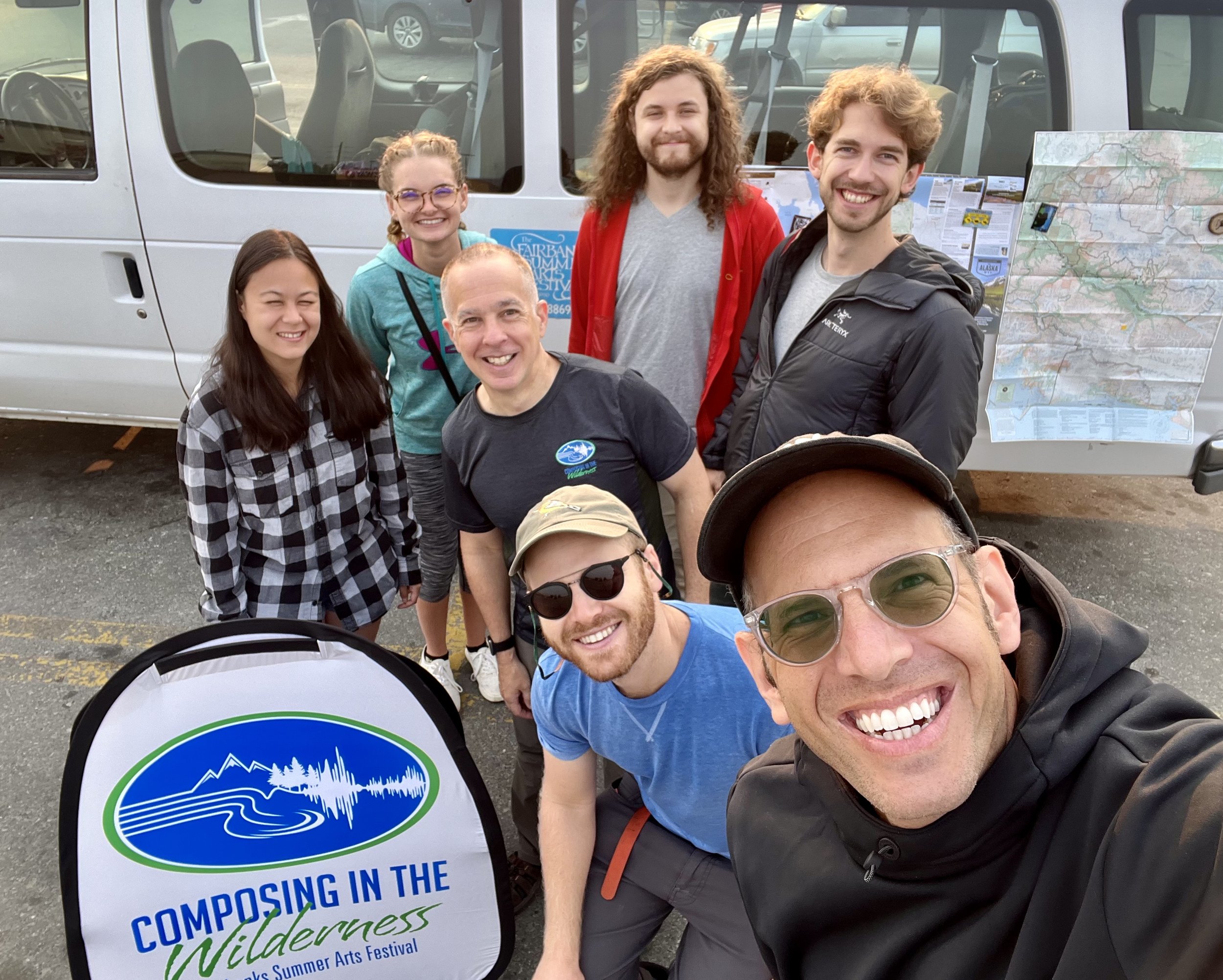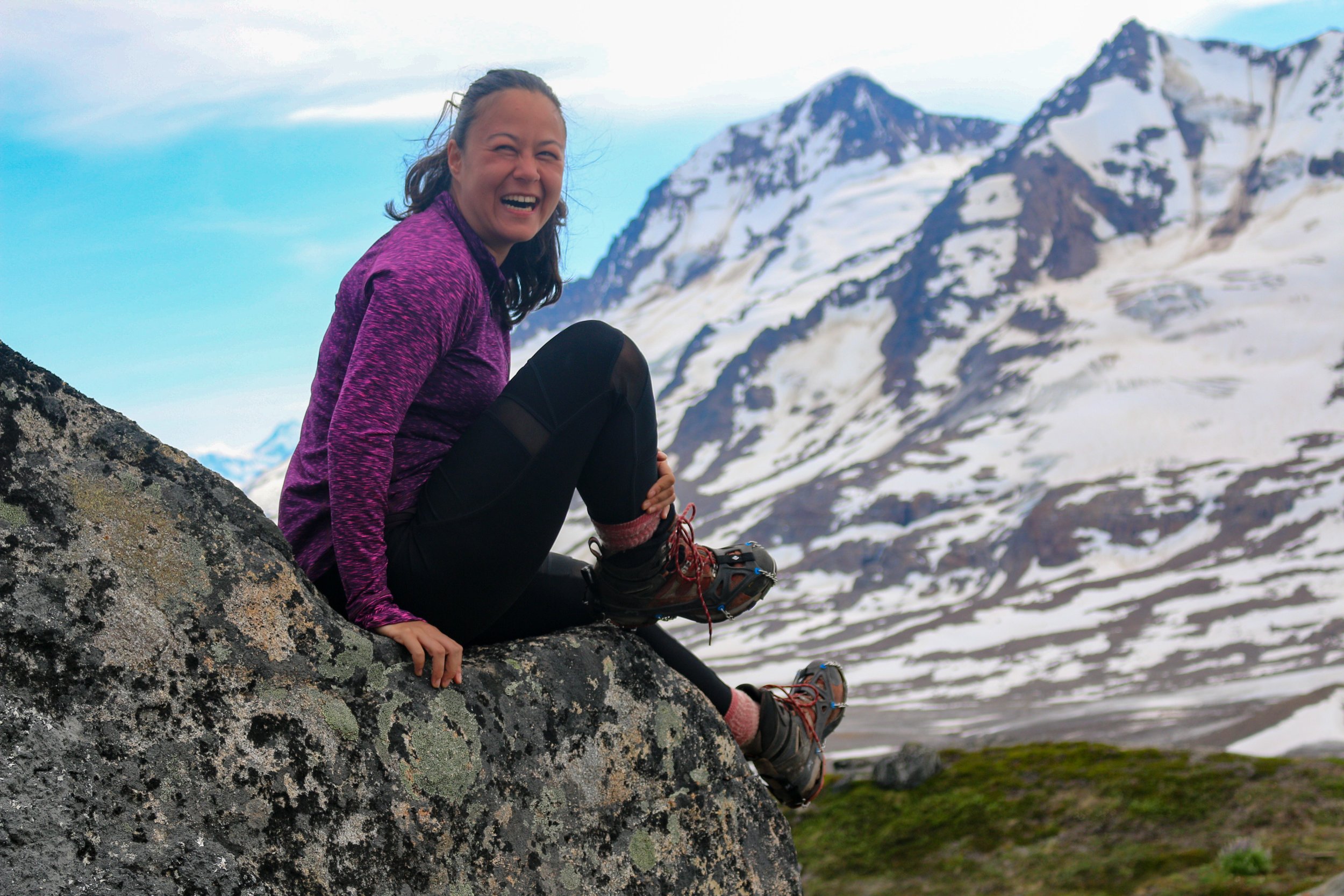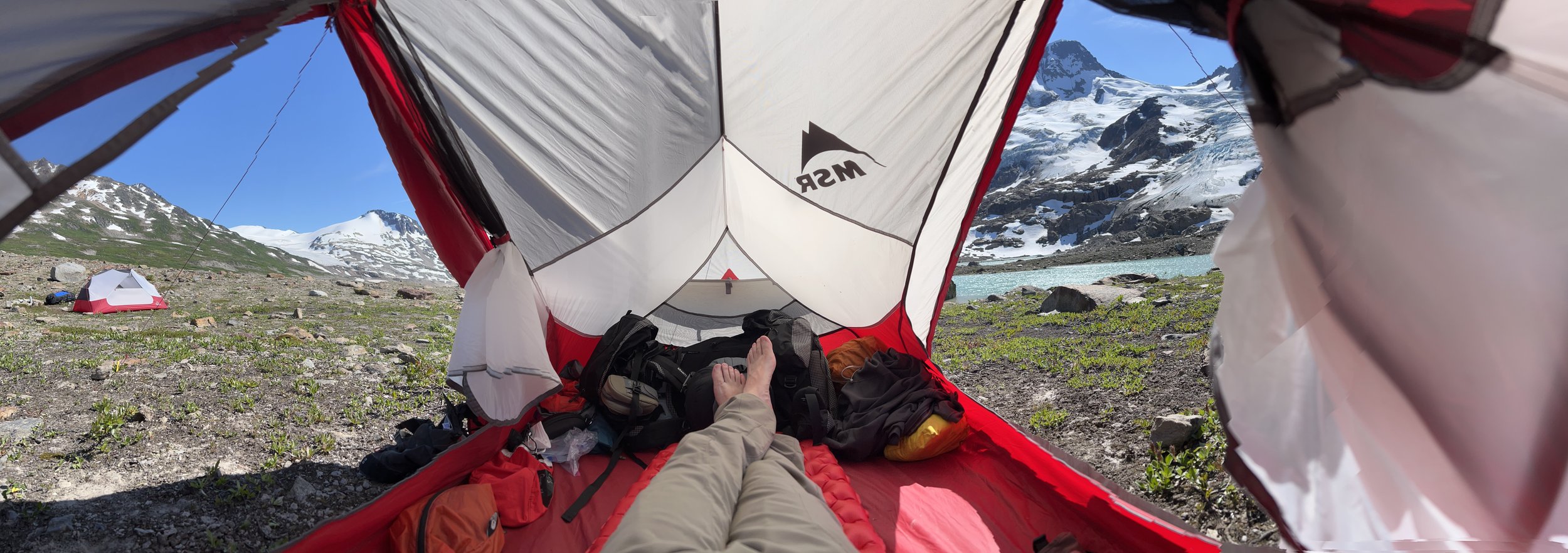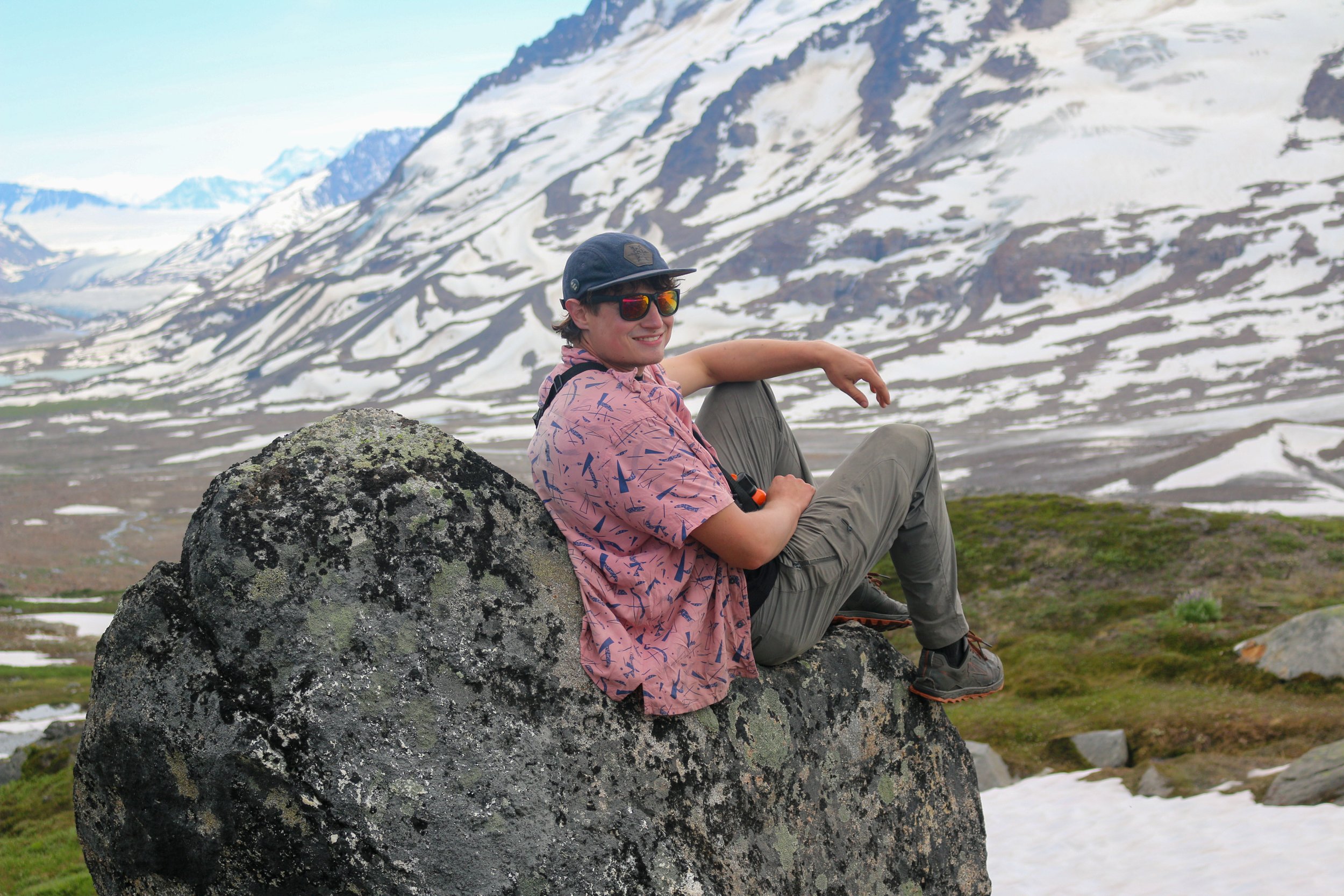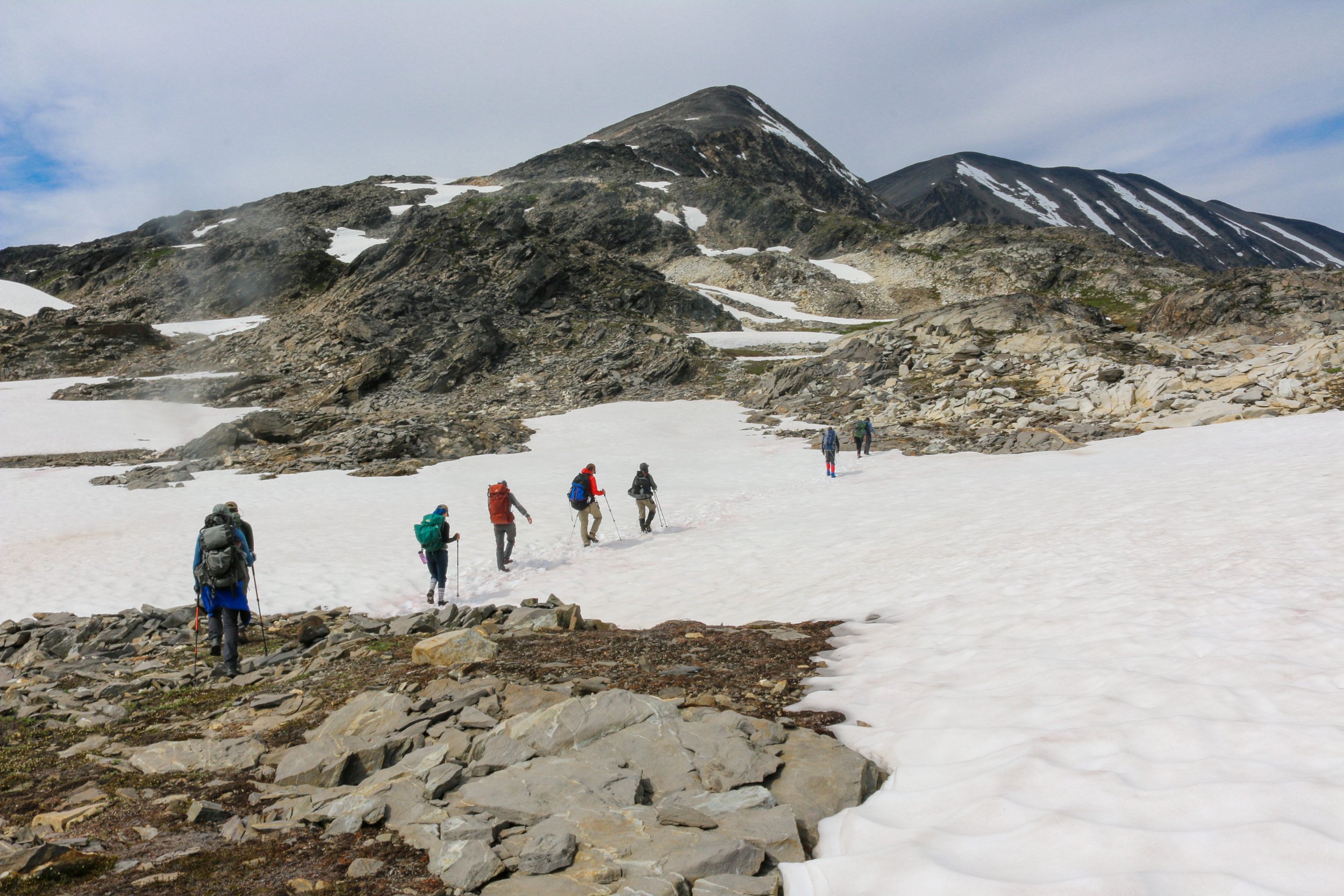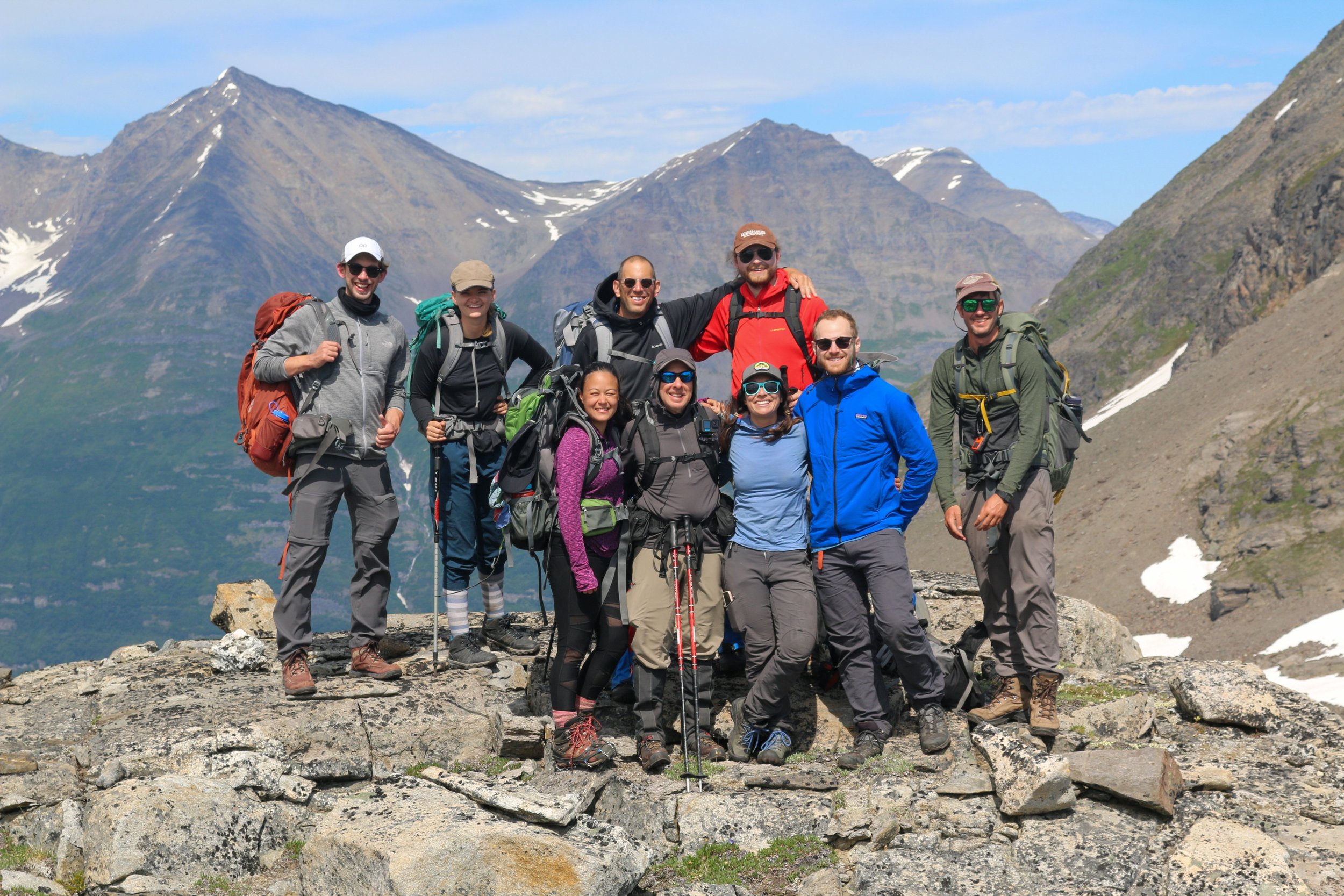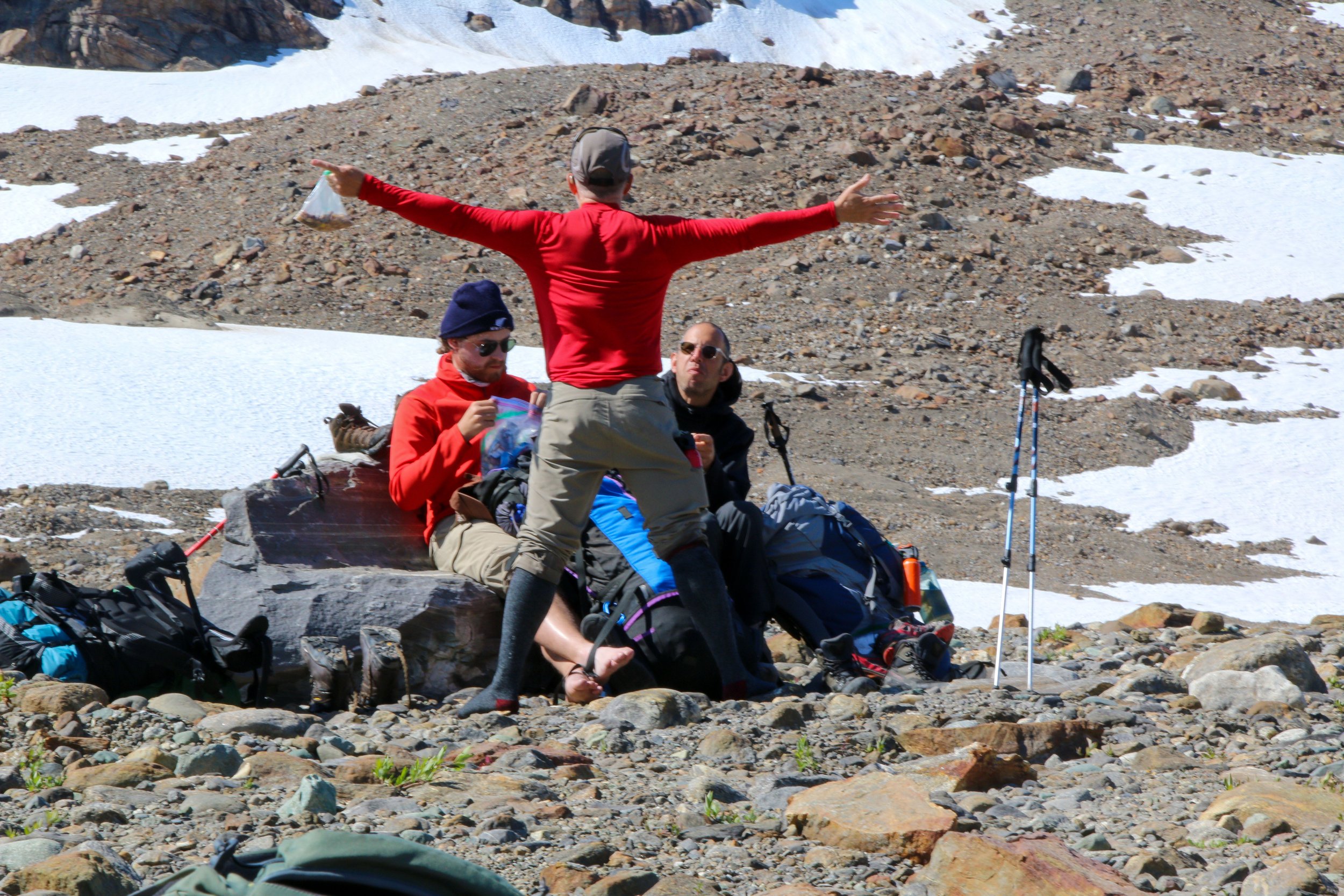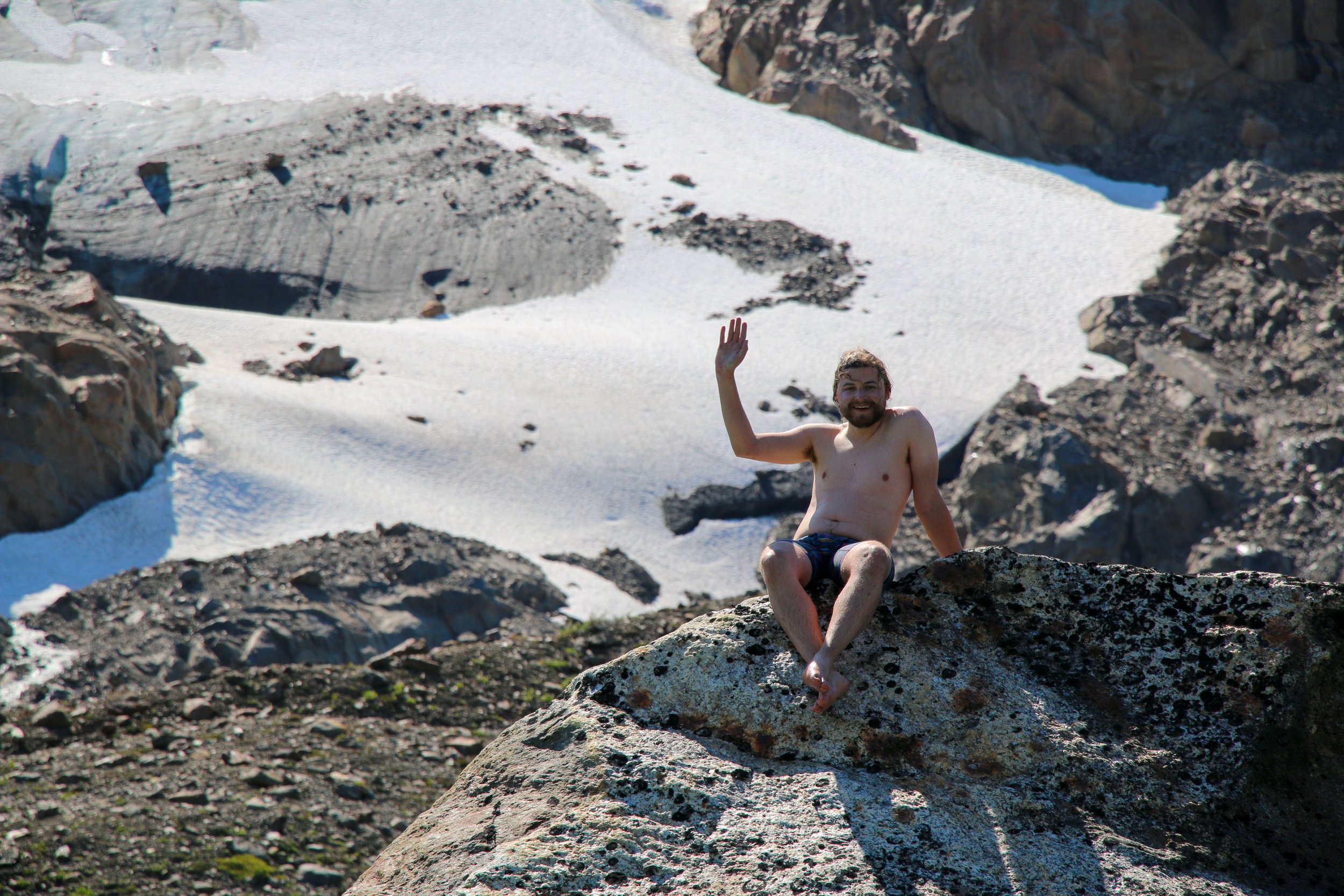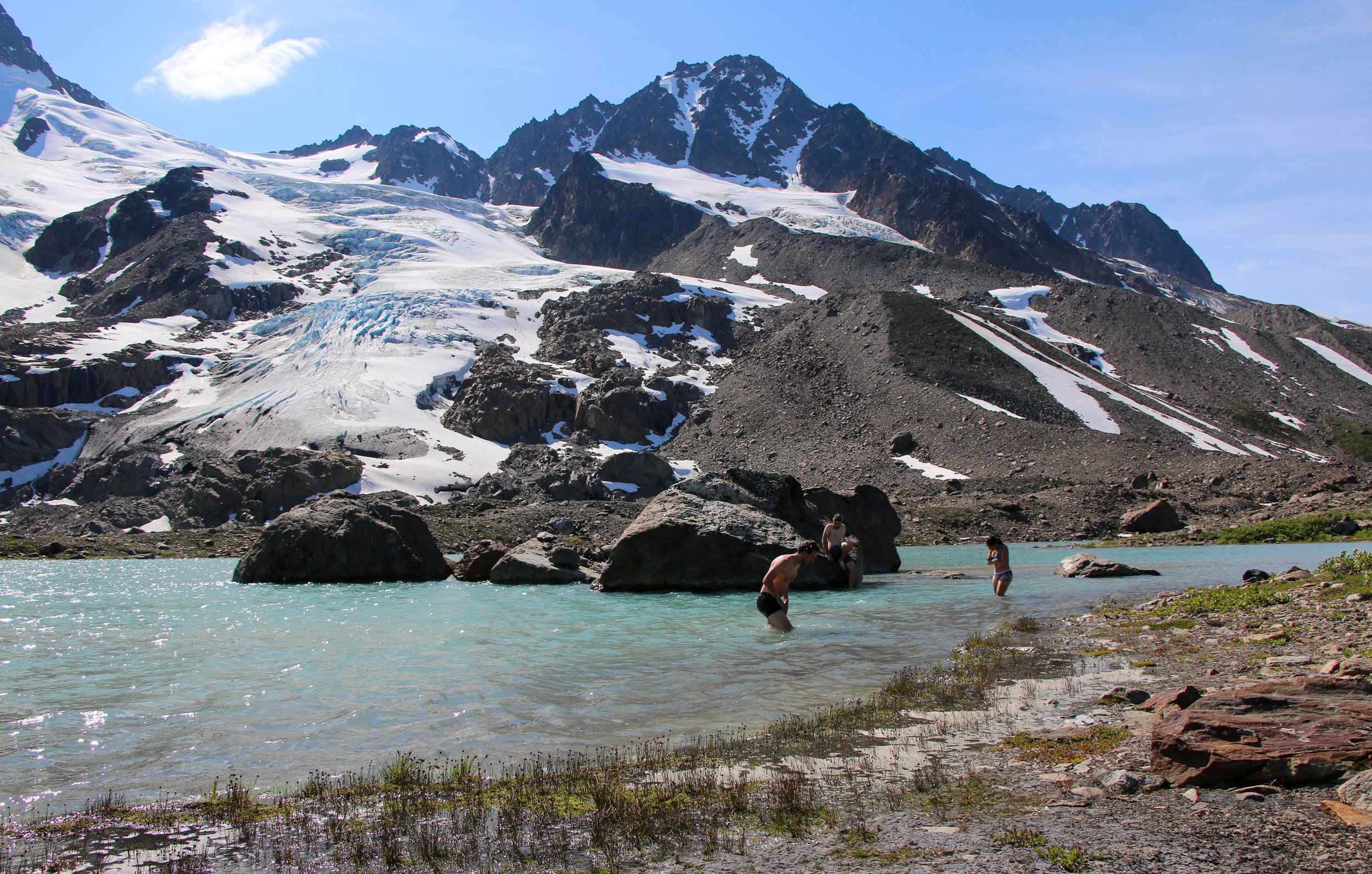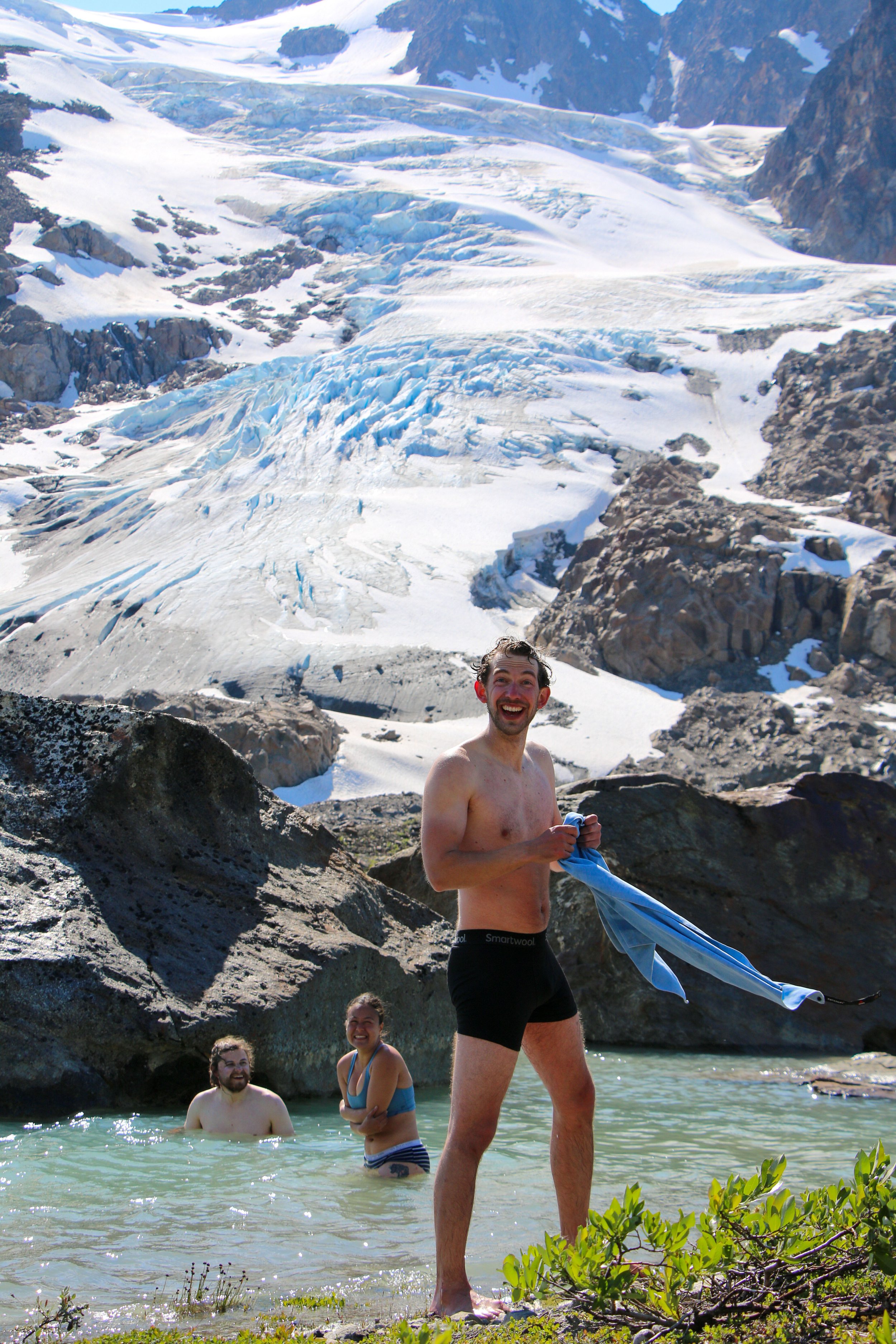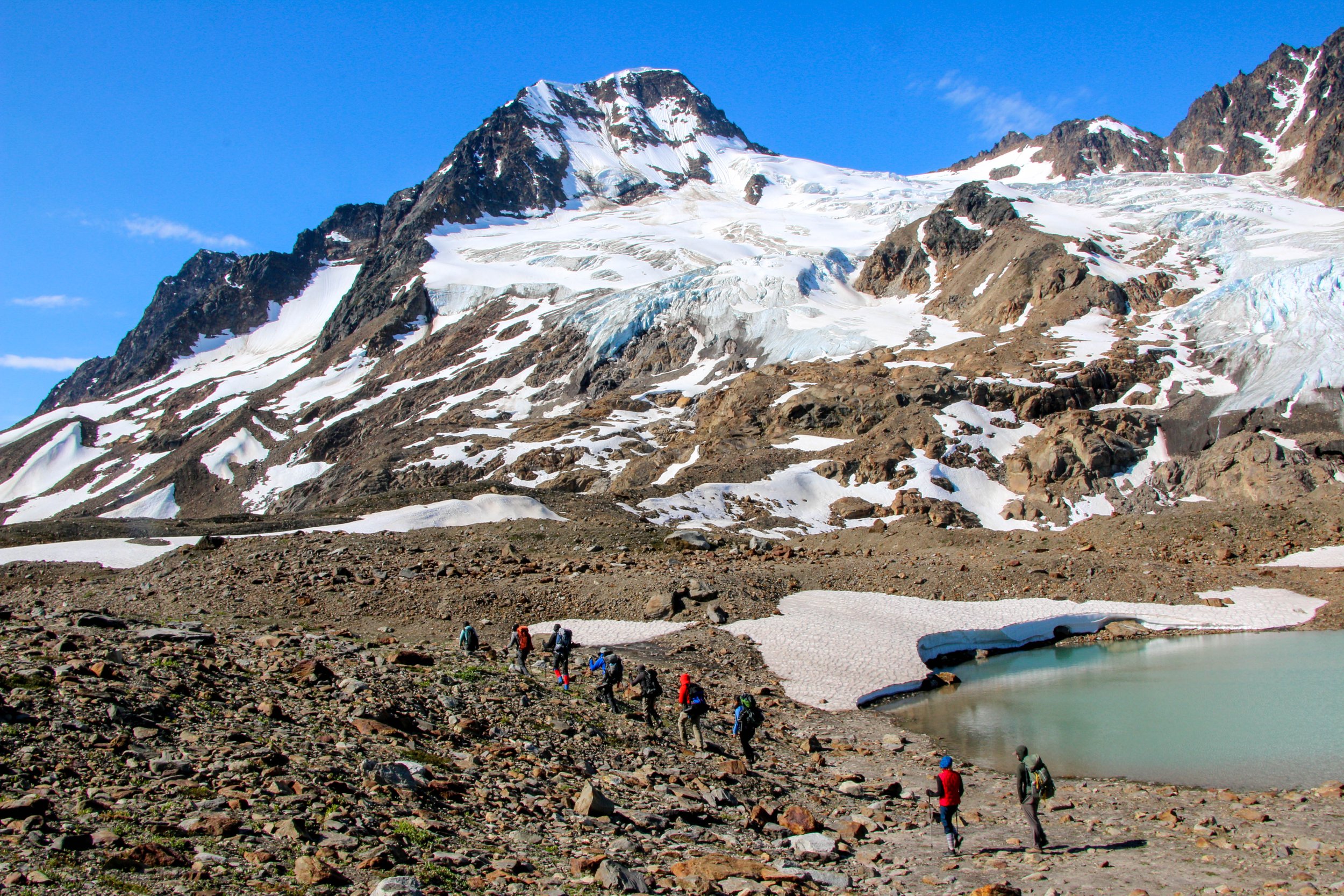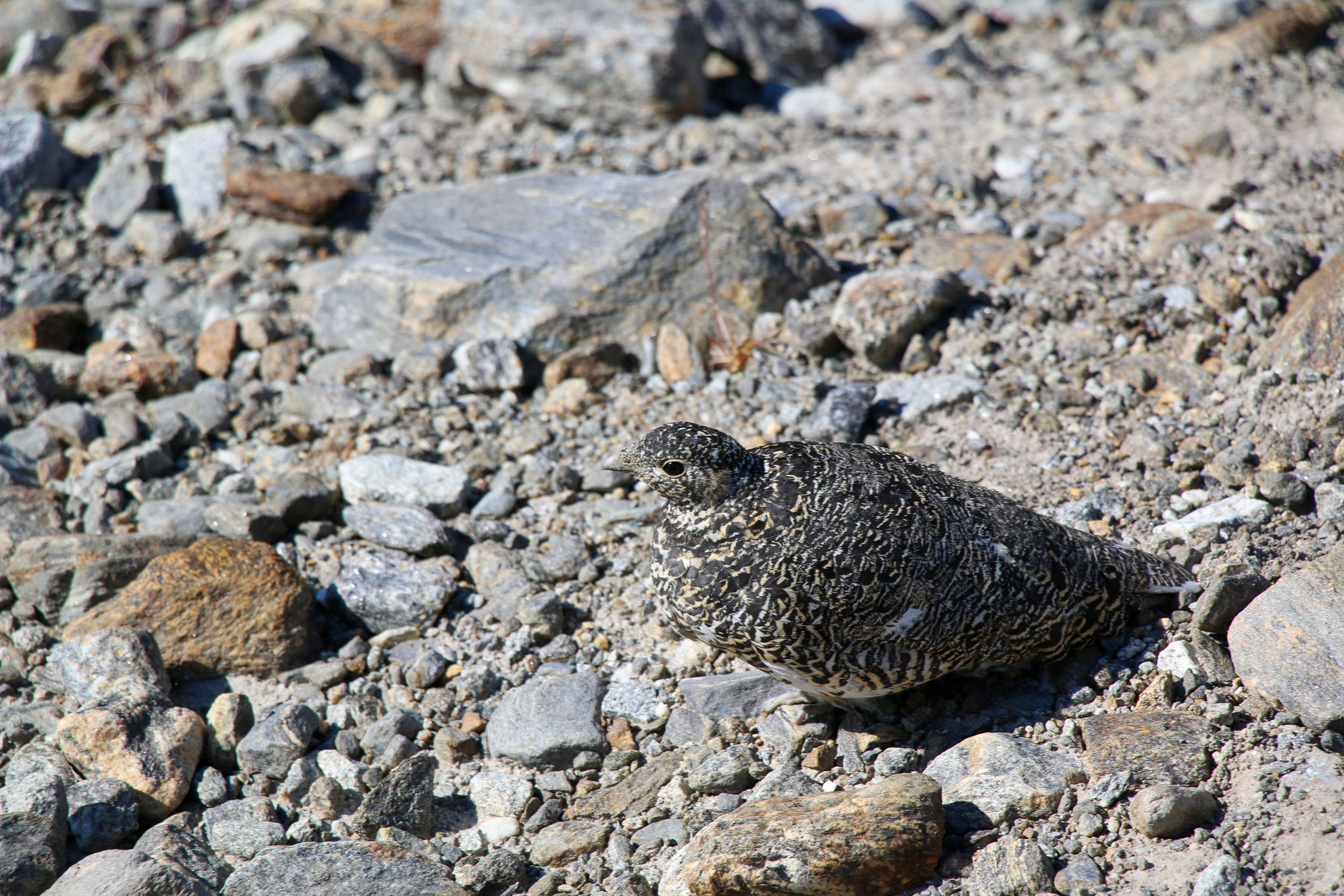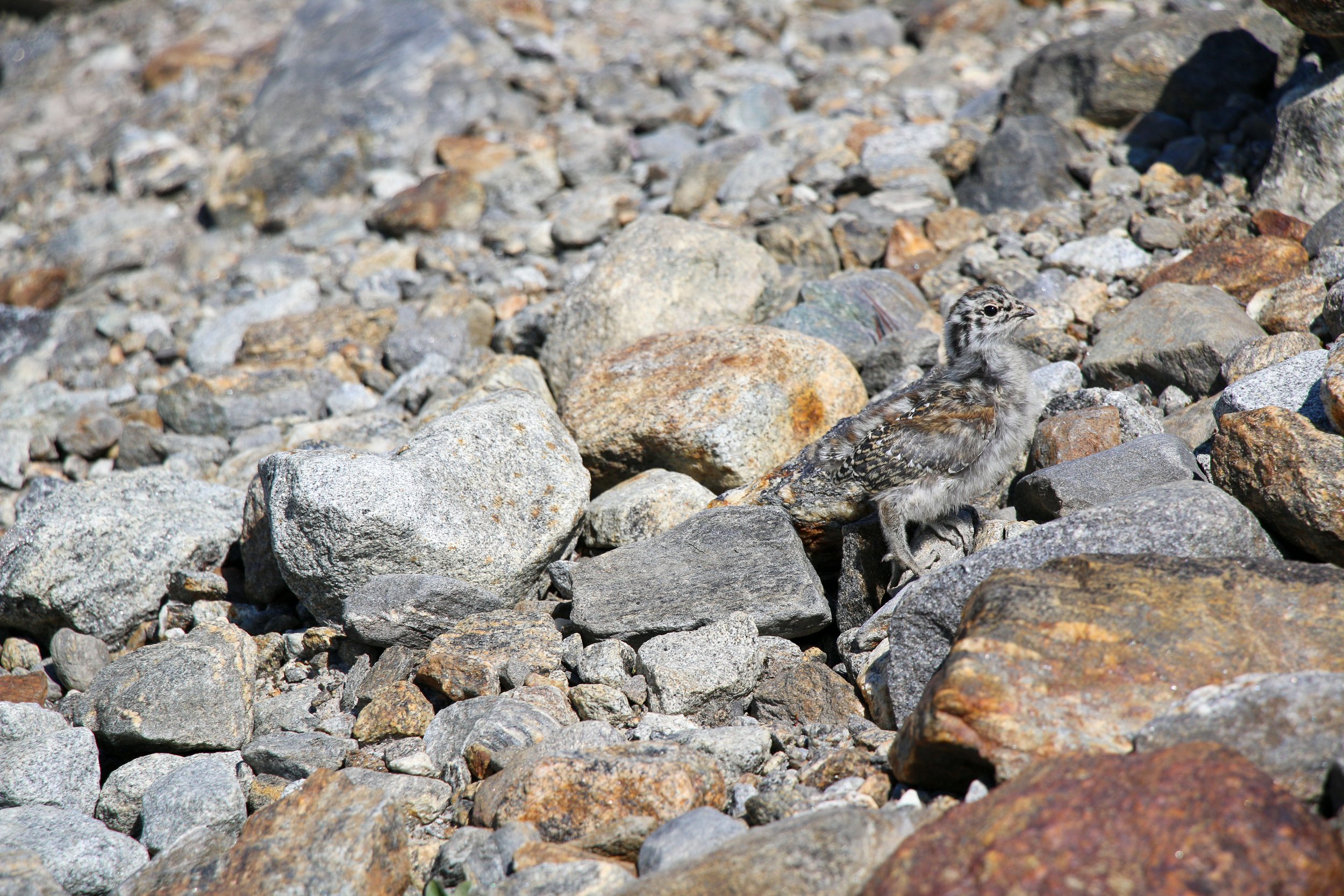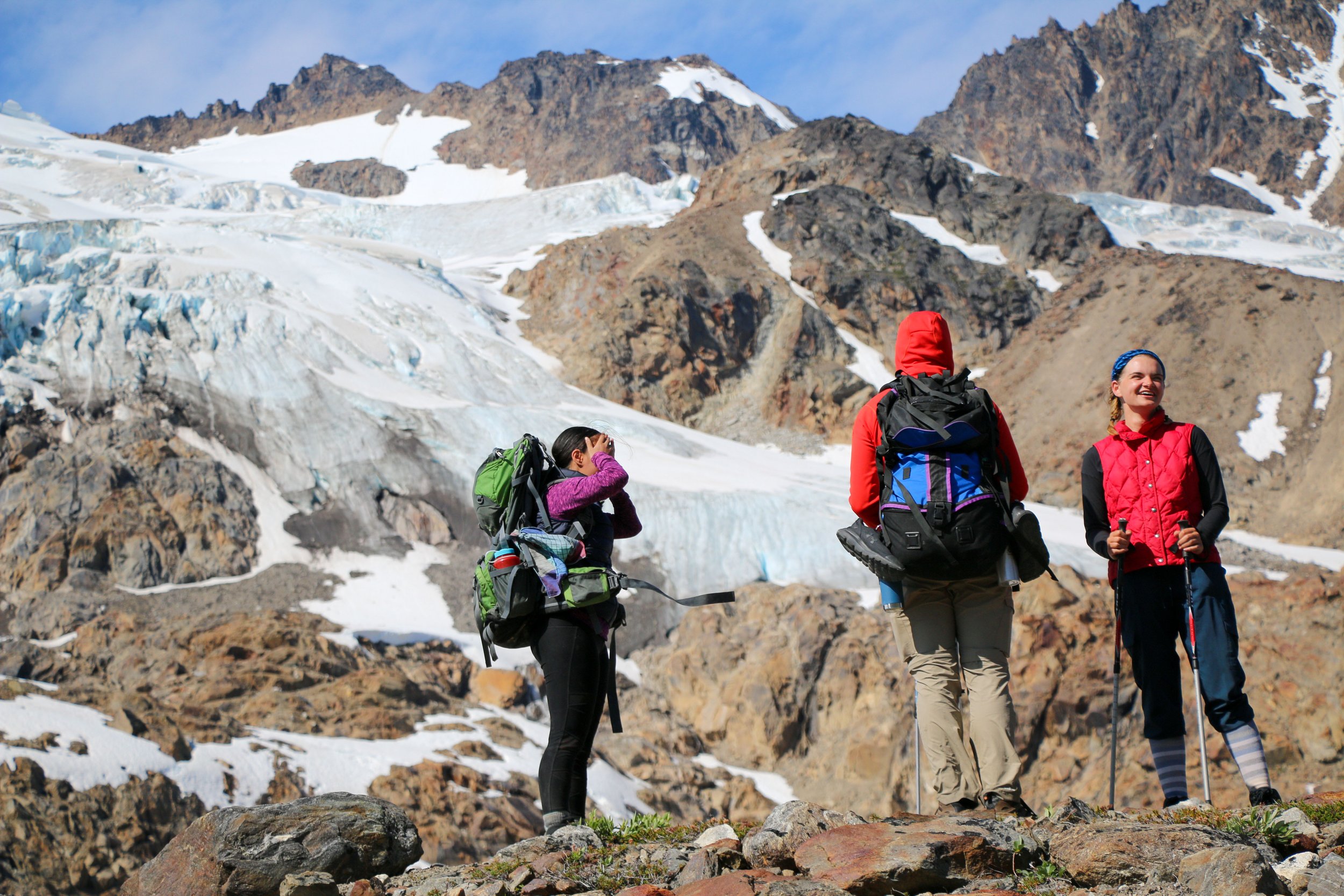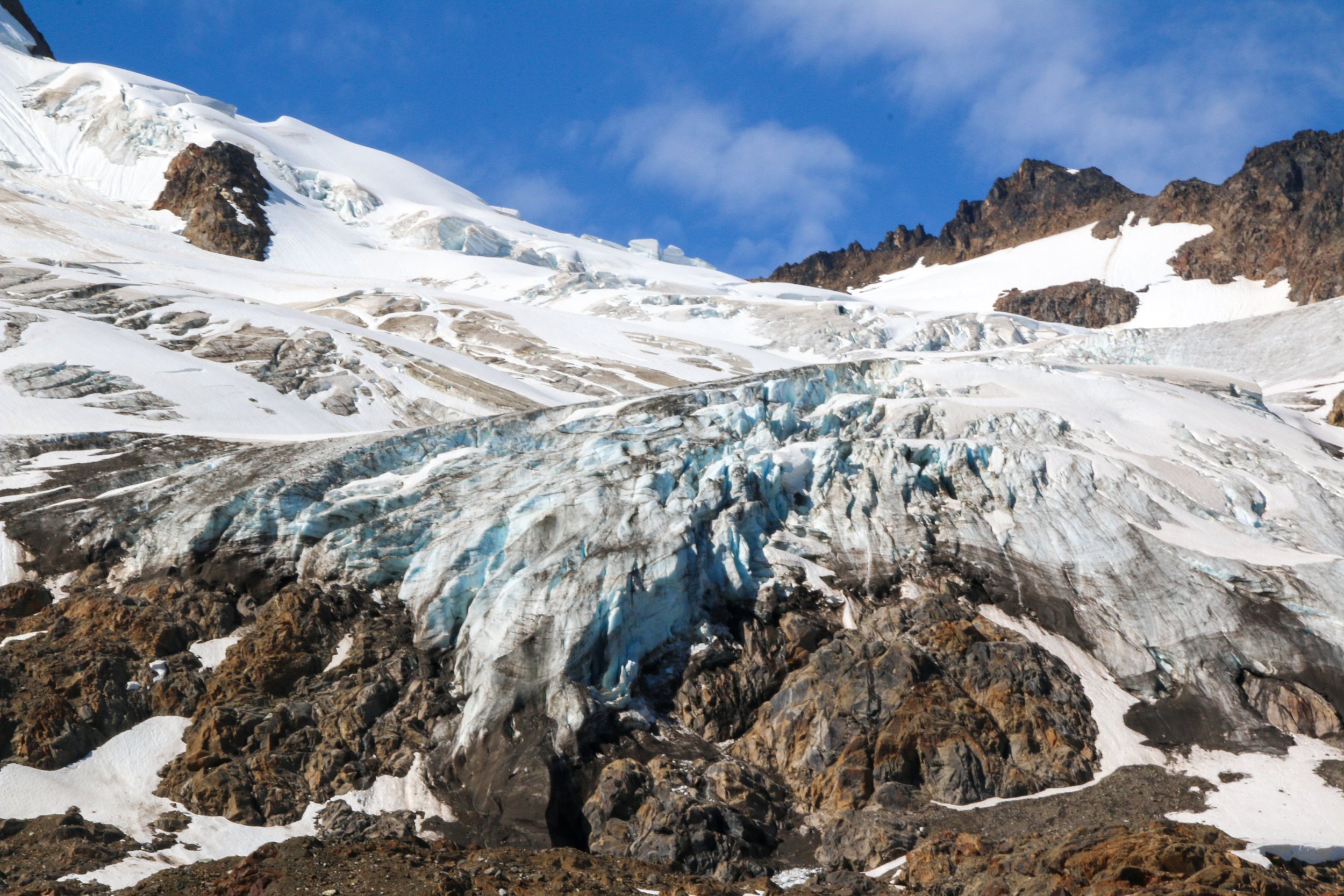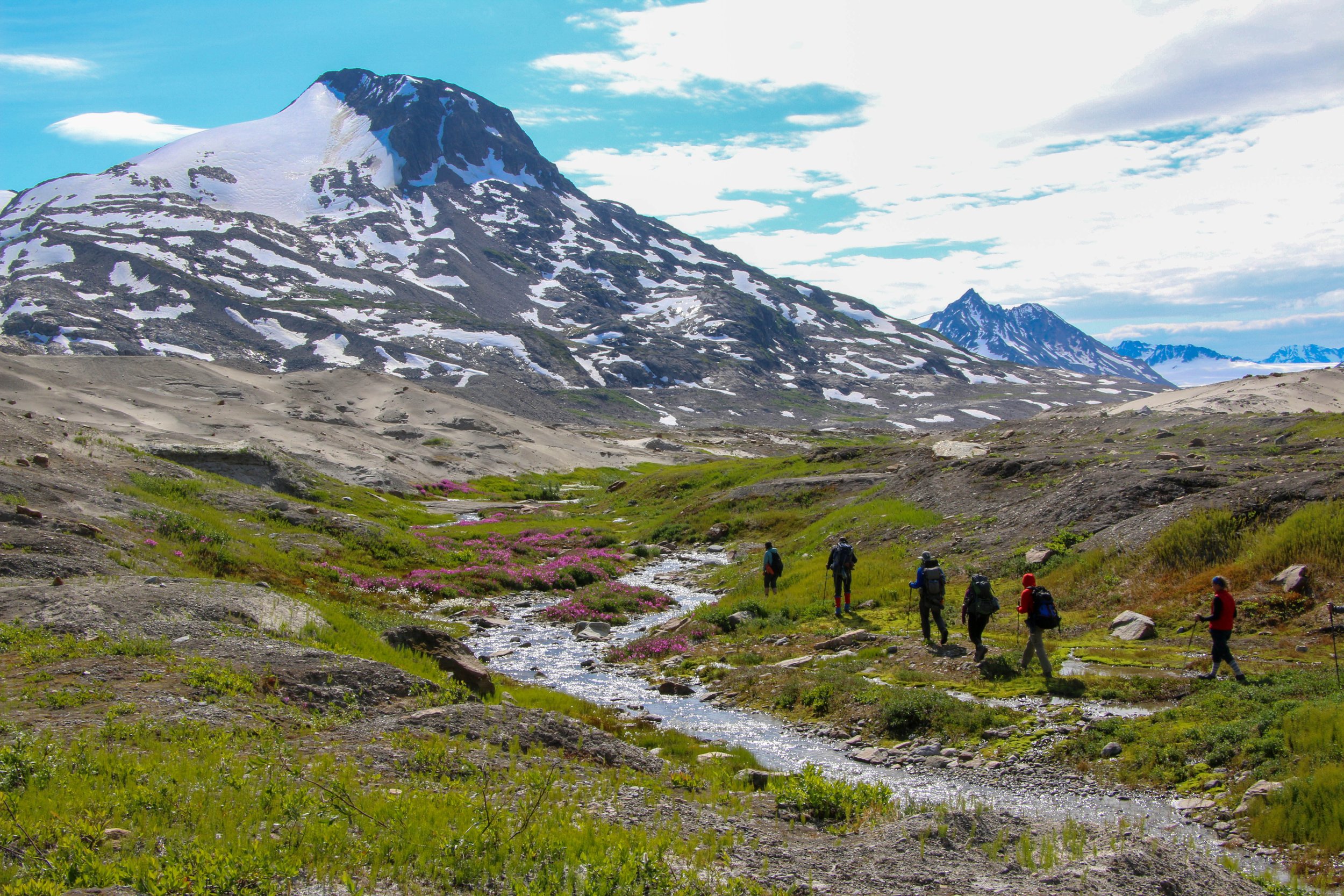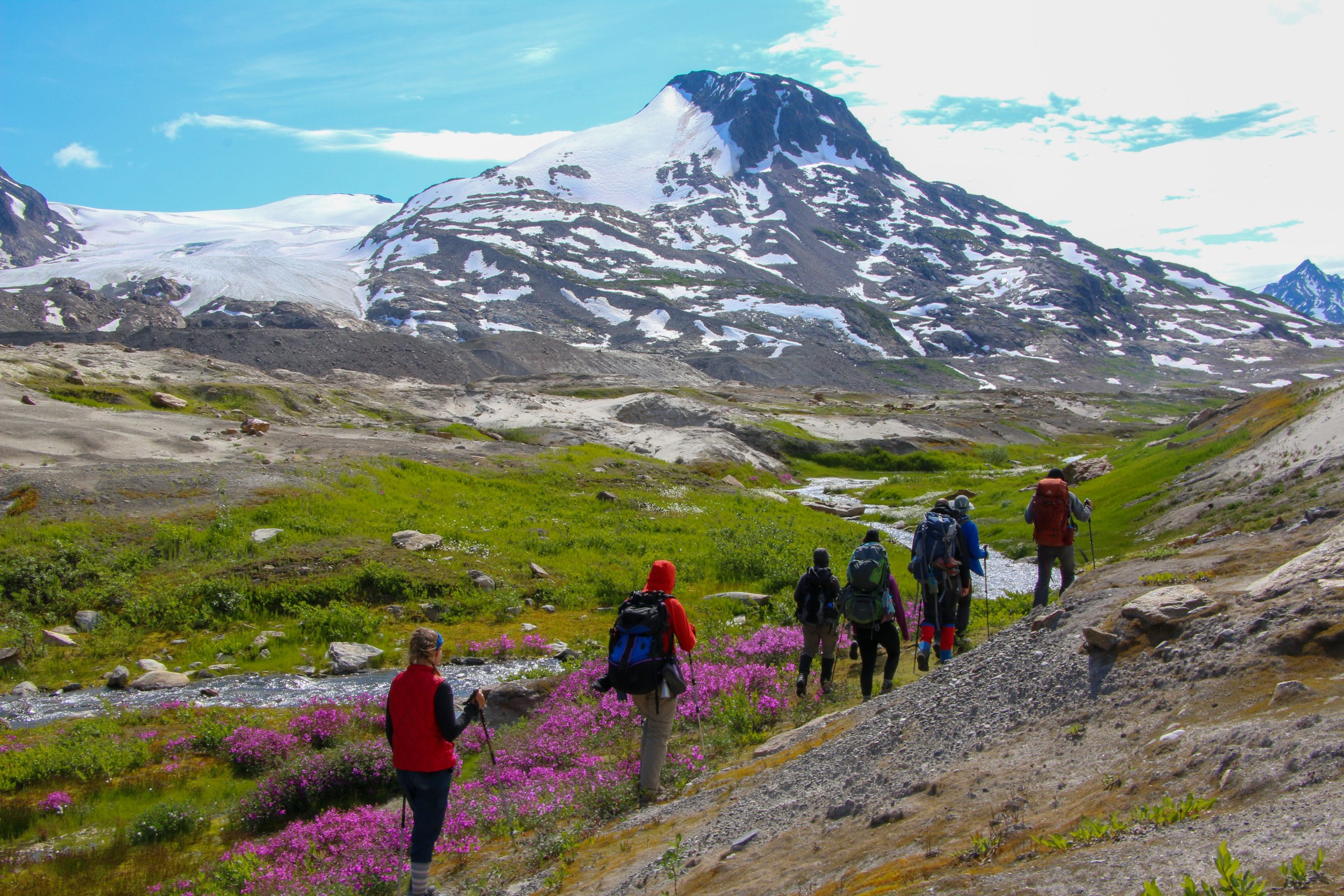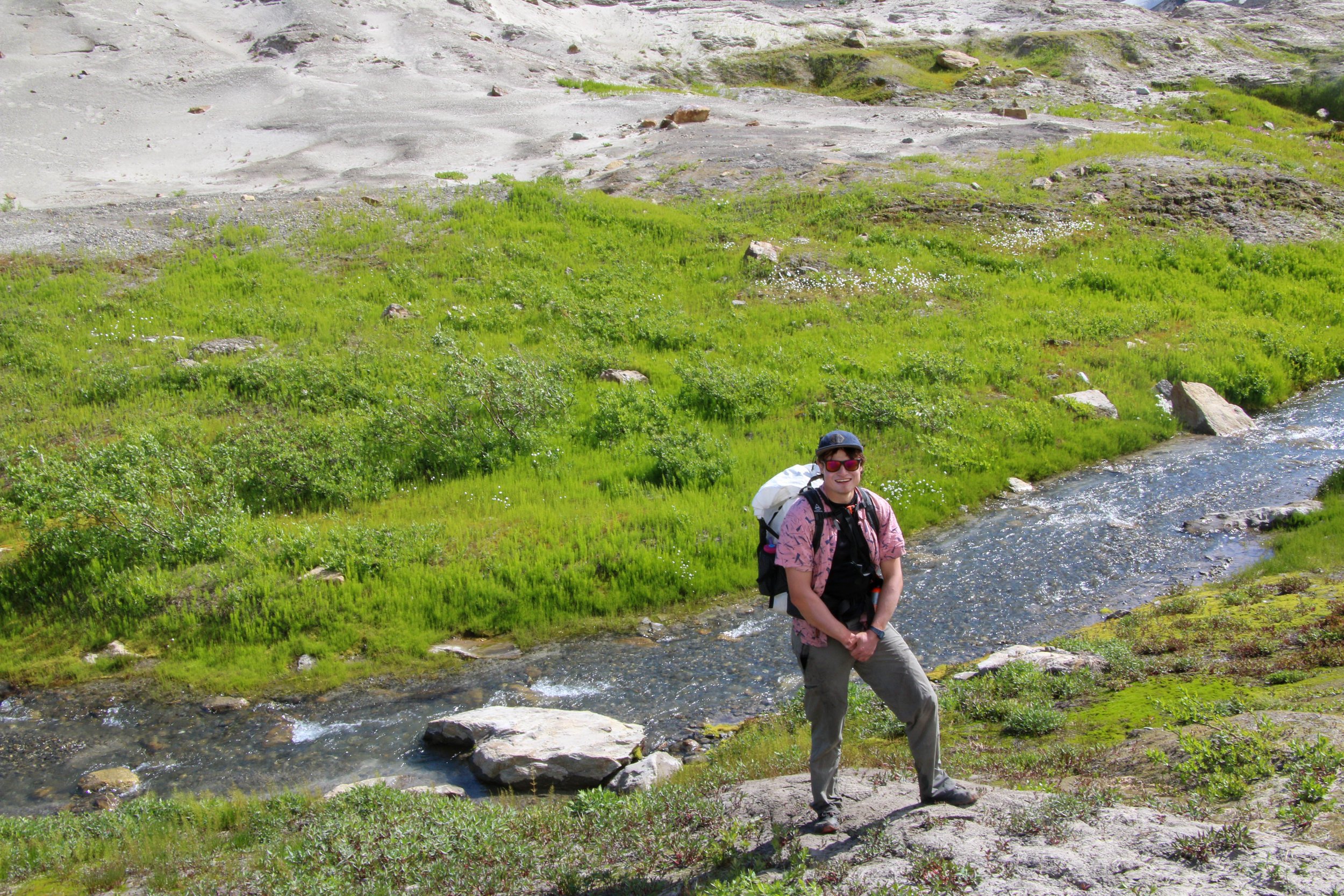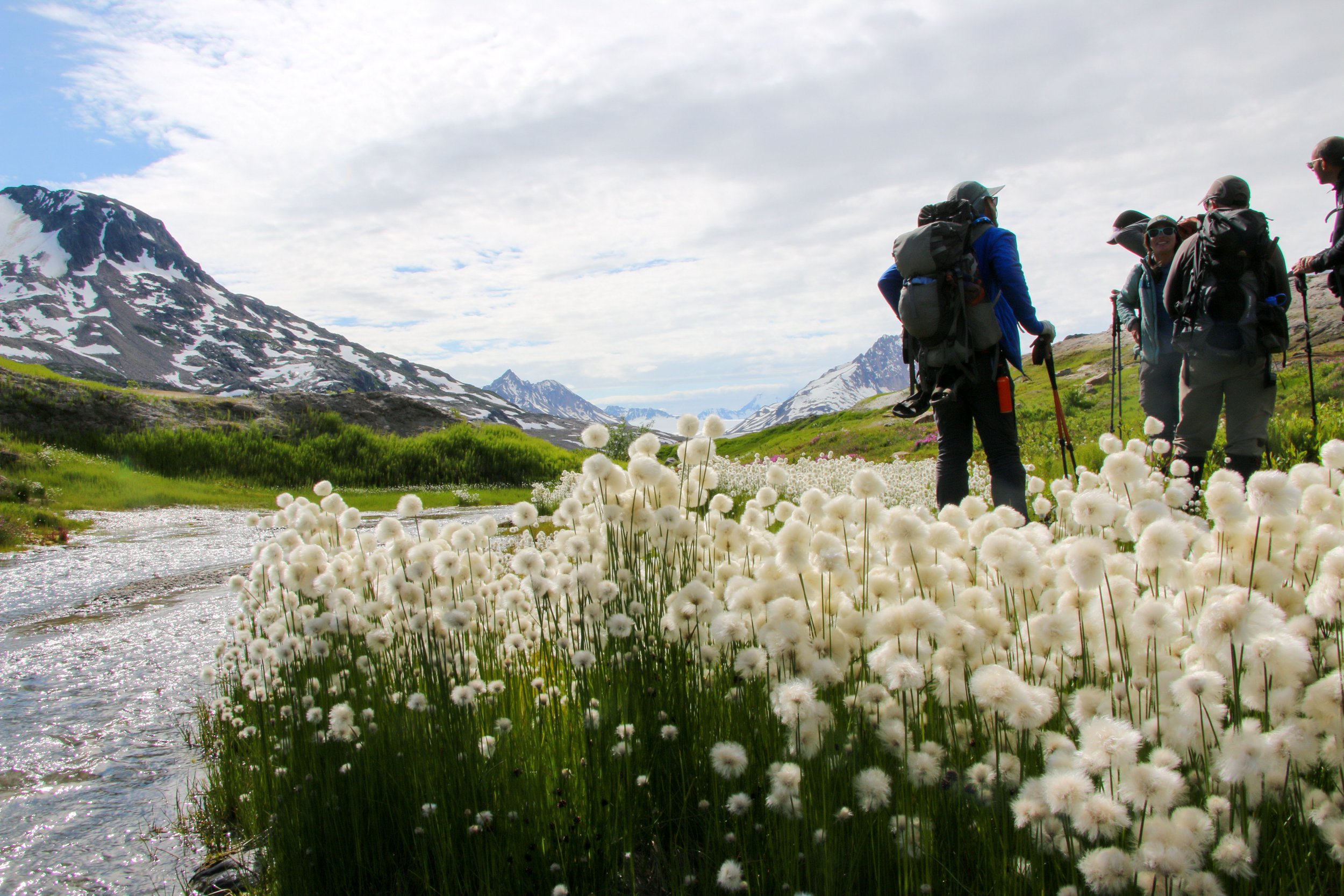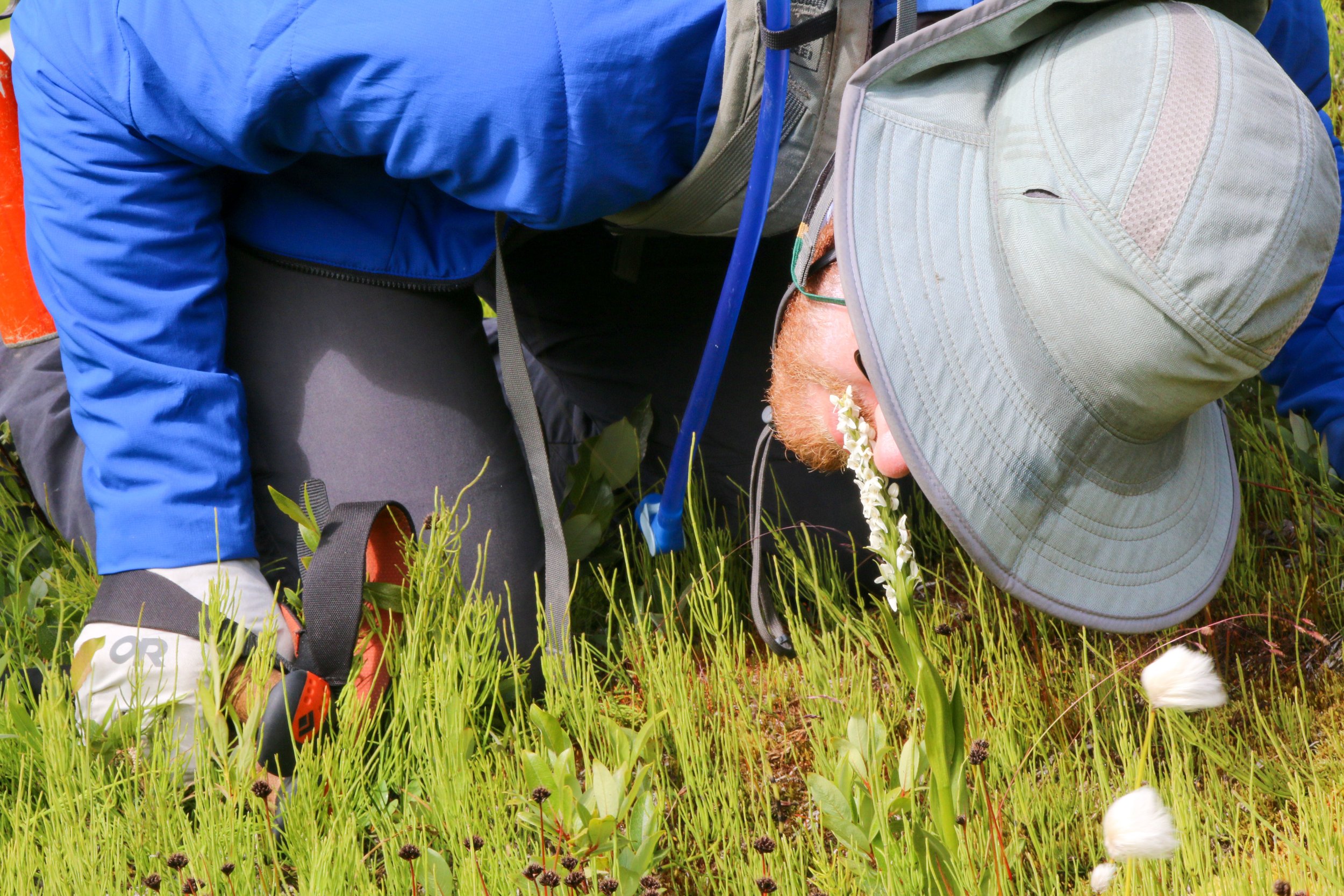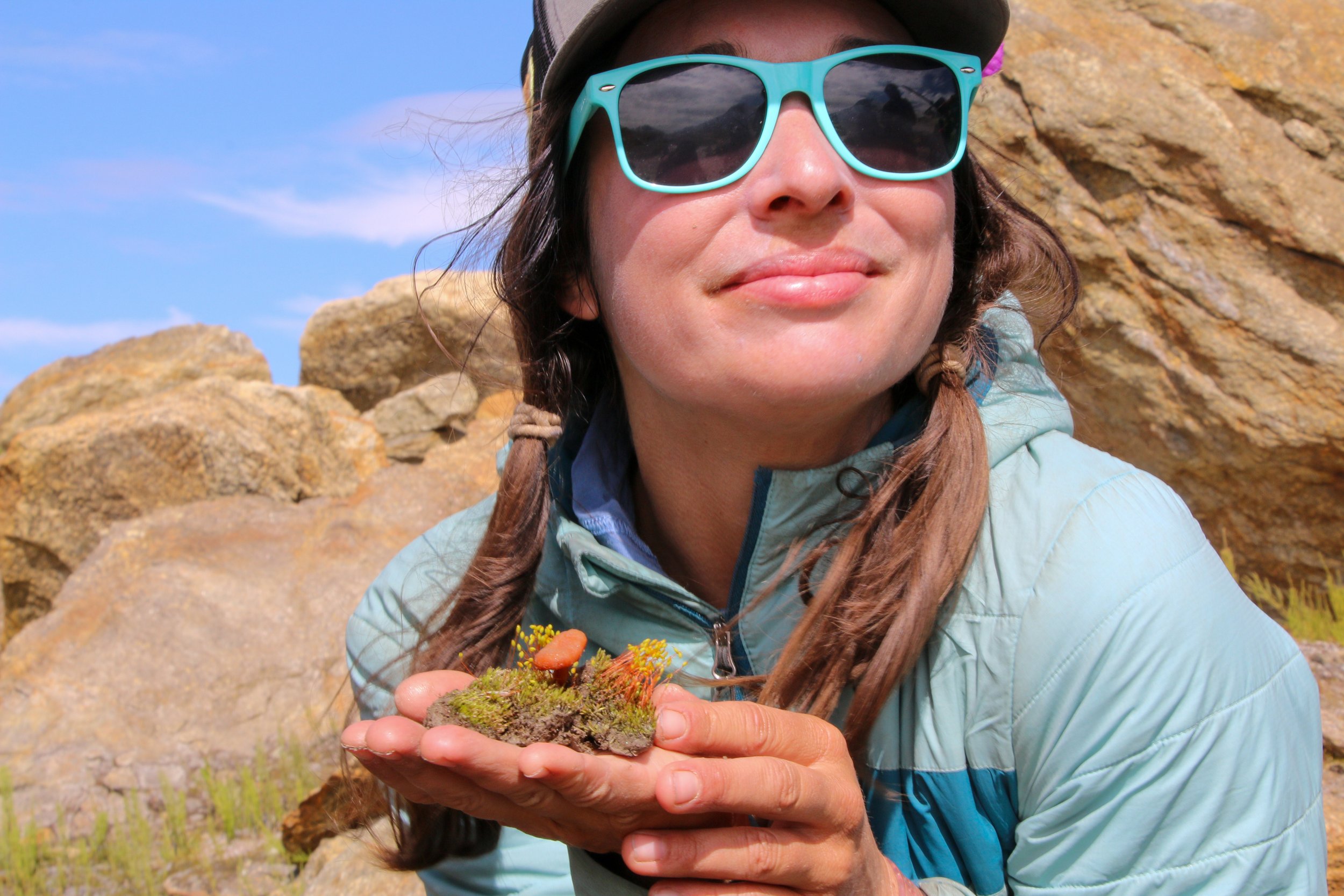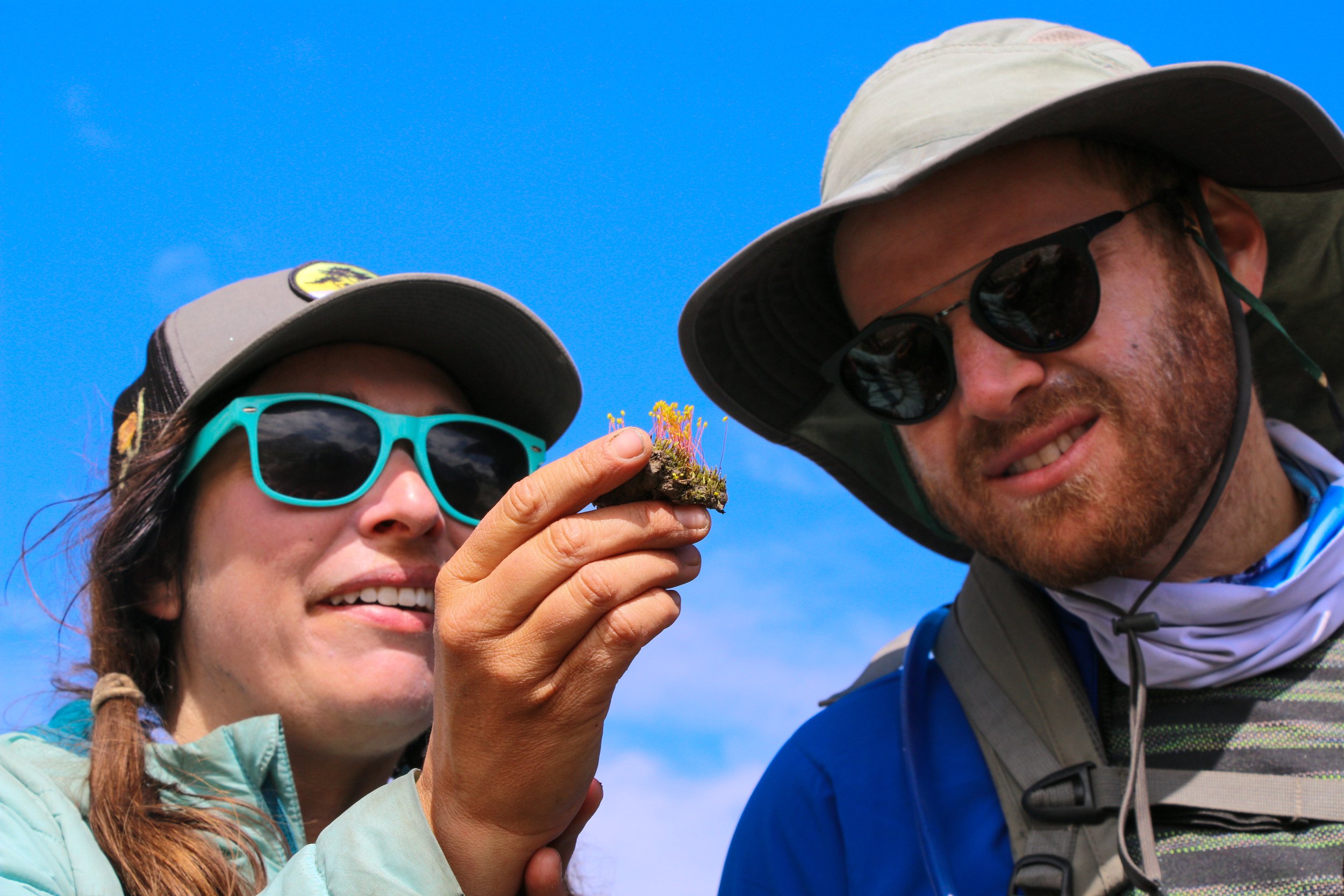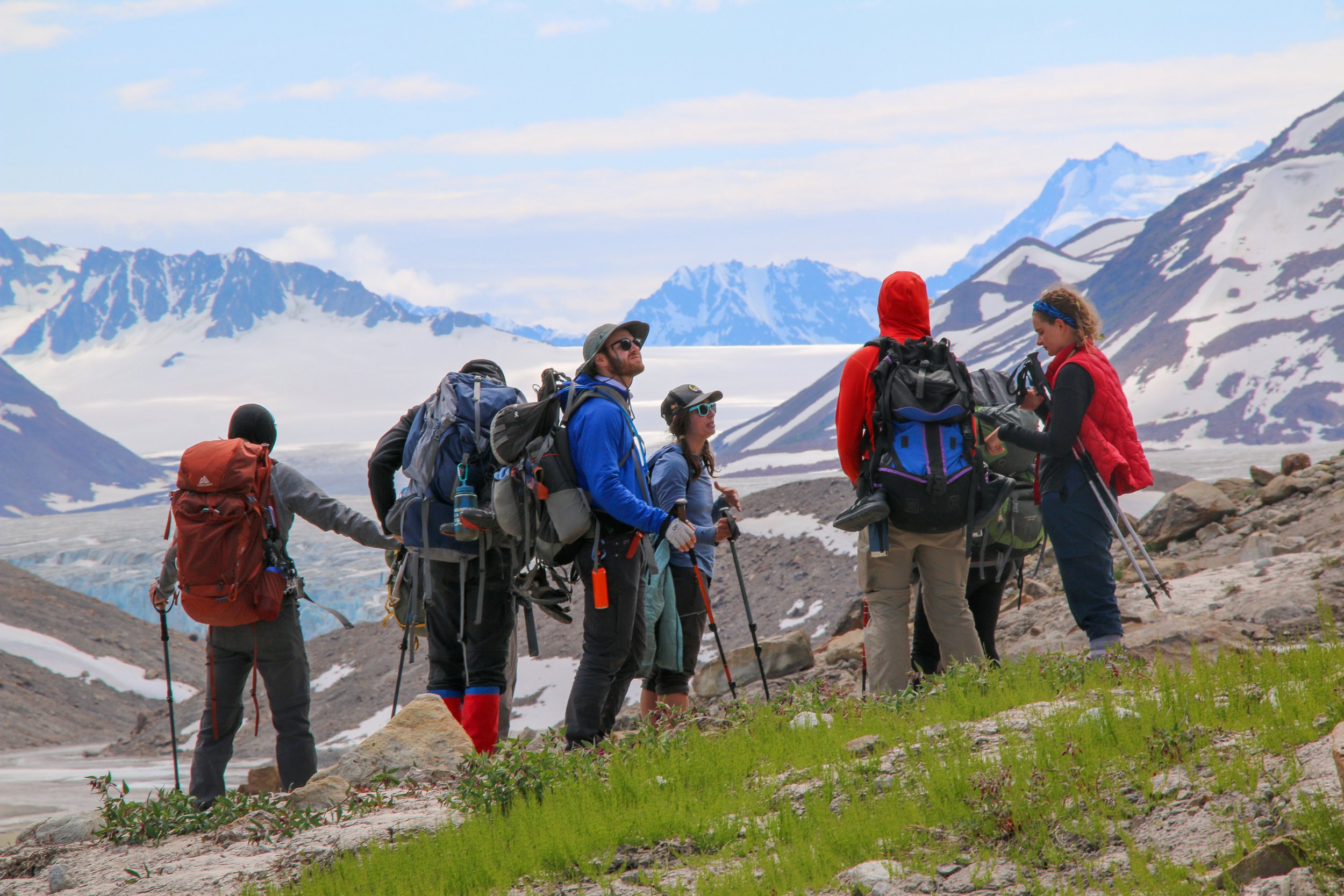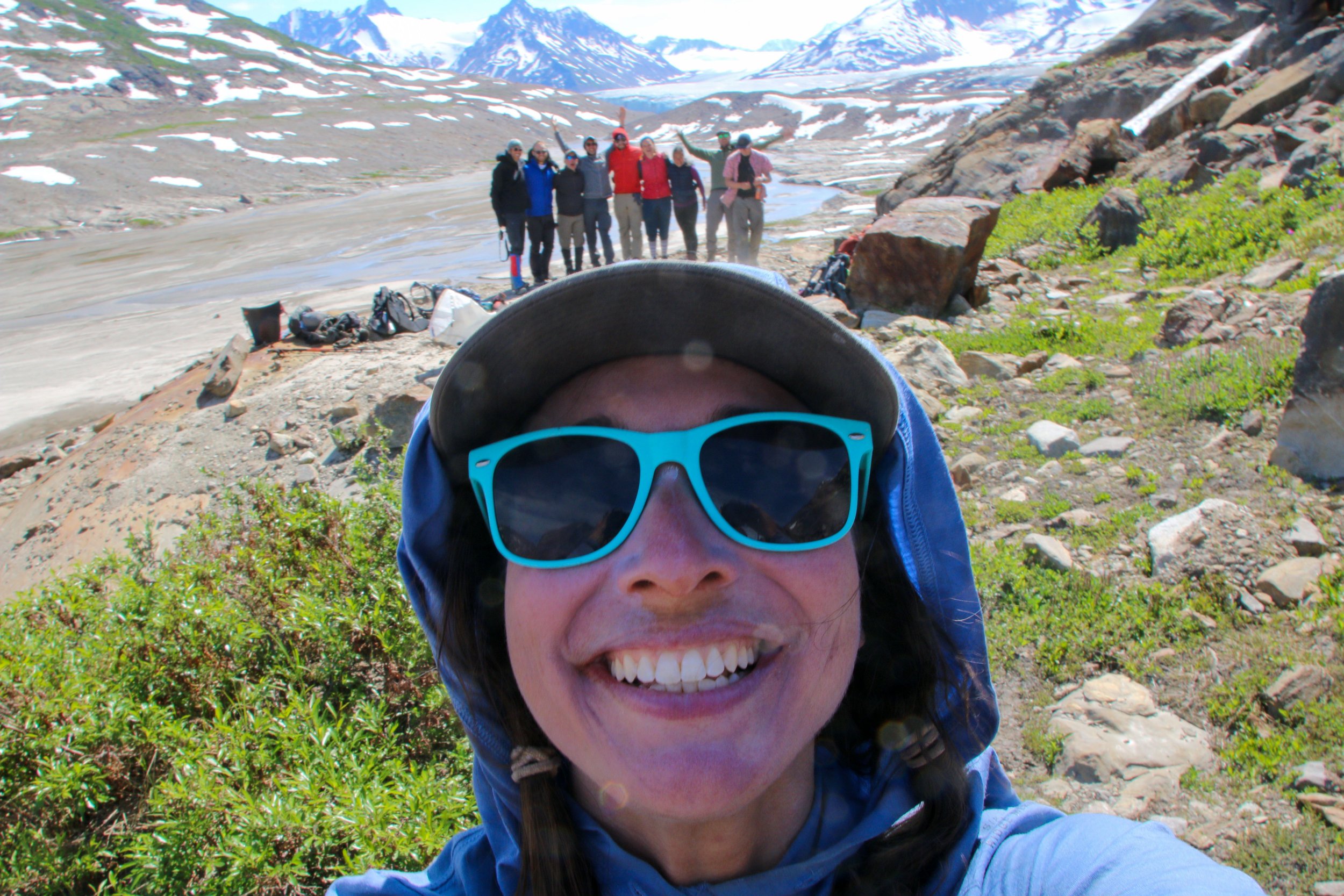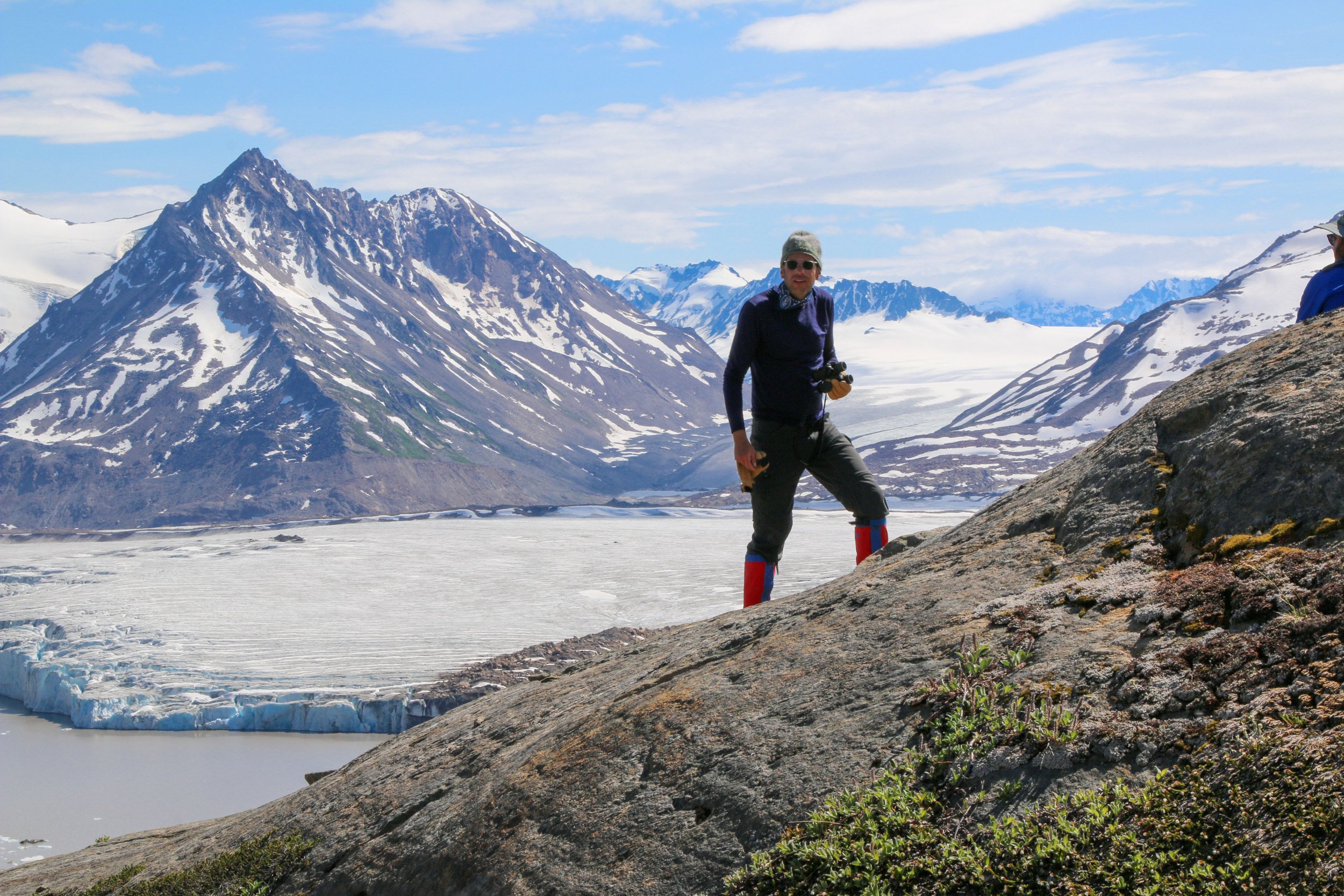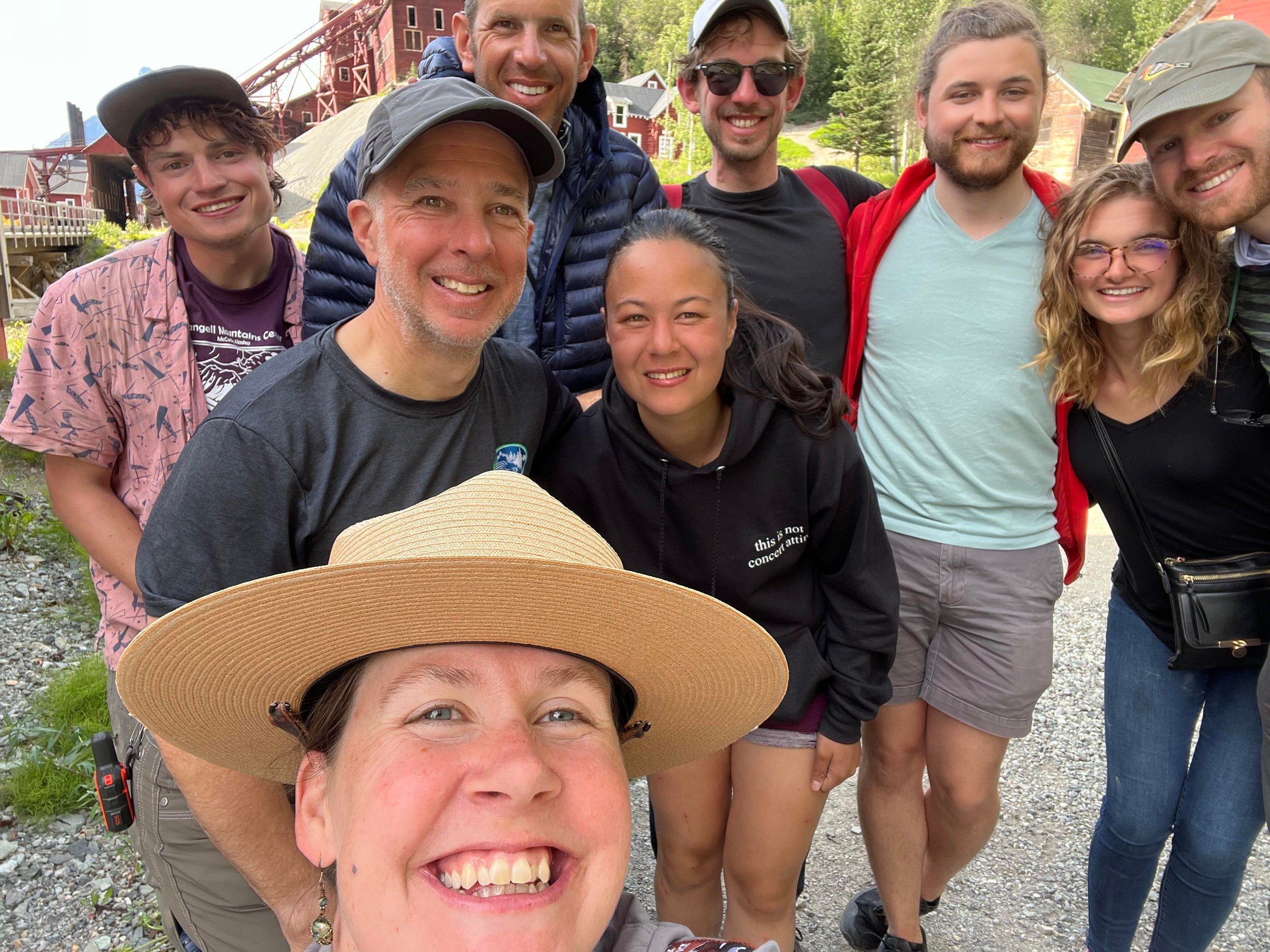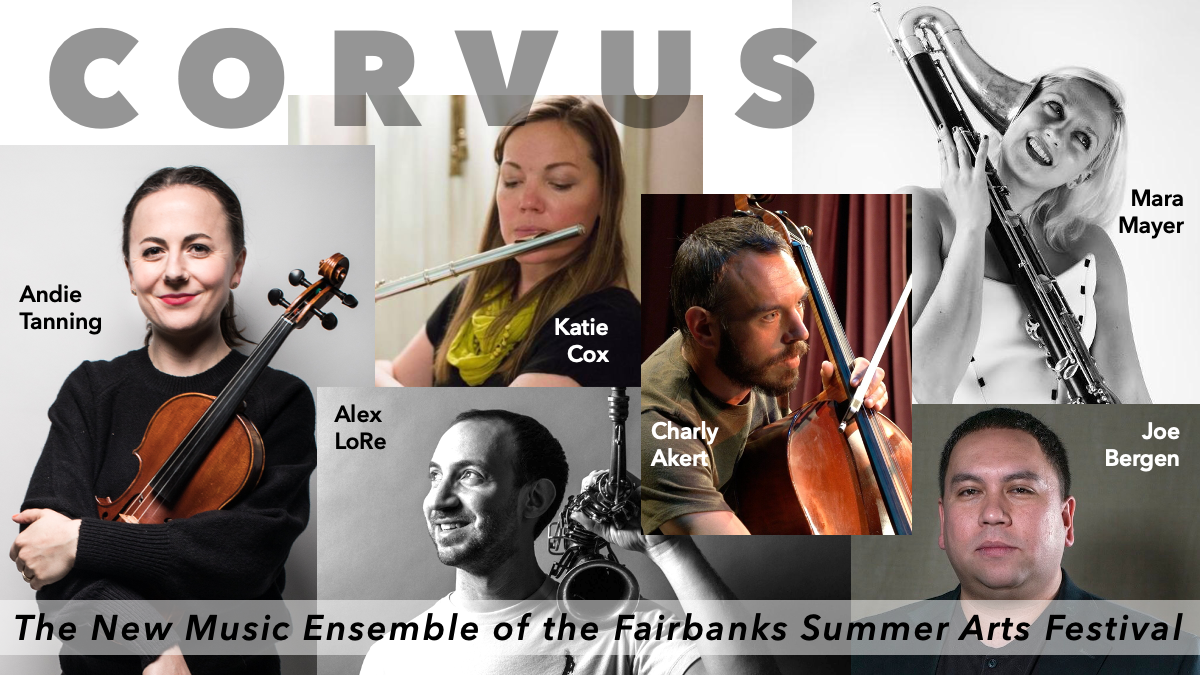WILD MUSIC FROM WILD ALASKA
Six World Premieres Inspired by Wrangell-St. Elias National Park
Presented by Composing in the Wilderness and performed by Corvus
PROGRAM
here, now by Leah Mullen
here, now is an open instrumentation piece written for CORVUS, for the 2022 Composing in the Wilderness Backpacking Trip. This piece is a structured improvisation that allows the performers to express themselves while listening to one another, in an environment that is unique to them every time they play it, that they must constantly adapt to. here, now is an attempt to use music to recreate the connectedness with other people, and freedom to exist in the moment that I experienced during my time in Alaska. Below is an excerpt from a journal entry from the first day out of the wilderness that is the main inspiration for this piece.
Journal Entry:
I found that some of the most connected I felt throughout the trip was when we were all together as a group, but completely silent. We were not bored, and certainly not disconnected, but rather we were experiencing and processing together. I think we forget that verbal communication is not the only way to understand someone else- perhaps it is even the hardest way to navigate a connection with another person.
During the semester or when I am working in the summers, I try to force myself to have down time, but it always involves something - cooking, walking, trying to sleep. Sitting and attempting to just exist in a space has never gone well for me. This, though, was some of the most at peace, if not the most at peace, I have ever felt. I found that, with no distractions other than the needs of my body, I was able to sit and observe, and then wander to a place I was drawn to and do it all again. I had thoughts about the day, the surroundings, but nothing stressful. Nothing pressing. I found sitting and listening to the stream and touching the fuzzy flowers and feeling my skin warm and crinkle under the sun felt so vibrant and calm at the same time, that those moments had an ethereal and surreal quality to them. I was aggressively present- I was able to gently process my thoughts and feelings while taking in the world around me. I did not force myself to feel less, to dull my sensations of joy and wonder and peace in order to accomplish more.
I was just there.
I just got to be.
Bremner by Yotam Haber
This is a companion work to my chamber works Chòref (2022) and Bloodsnow (2021). All three of these works explore my experiences in Alaska. While the first two pieces deal with violence and fear, this piece is my exploration of space, solitude, and loss. The title refers to a glacier in the Wrangell-St. Elias National Park, which I had the privilege to see, hear, and touch before it disappears.
colossus falls with invisible radiance by Alan Mackwell
During our time in the Alaskan tundra, we would regularly experience the effects of the distant disentegration of the hanging glaciers perched about the valley we explored; crashes and explosions echoed to our camps several moments after their sources had settled into a cloud of disturbed snow. colossus falls with invisible radiance seeks to recreate that experience; imagining those tons of ice unnoticeably falling gracefully and silently, yielding uncanny moments later to a raucous of mythic proportions.
Ice Worm! by Hannah Cai Sobel
The concept of an ice worm is fairly self explanatory - a worm that lives in ice. An ice worm living on a glacier would likely not expect 7 composers and 3 guides to come clanking across his home. Then again, 7 composers and 3 guides trying to cross a glacier would not expect to see a little ice worm in their path, especially if they'd been told they weren't going to see one. And if 7 composers and 3 guides did see an ice worm during a glacier crossing, they would likely be very excited. As for the ice worm? We can only imagine what he was thinking.
A Sparrow is a Brook is a Glacier by Nicholas Denton Protsack
When you hike in the Chugach Mountains, relationships between all things-some unfolding over thousands of years-can be readily observed everywhere you look. Nothing is inanimate. Everything seems to have a life and trajectory behind it; the massive glaciers propagate themselves from the ice field high in the peaks above, patiently sprawling across the valley for eons until they each find a spot that suits them. Their meltwater, like a vast circulatory system, feeds many streams and rivers, which in turn nourish the local marshes, fungi, plants, and animals. The mountains constantly make their motion known to you as well; several times a day, the unearthly rumble of distant rockslides punctuate the vast white noise of the wind and rivers. Even the force of gravity seems to have a mystical persona that hangs in the air. Everything is constantly drawn downward from the peaks to the valleys.
The calls of the Golden Crowned Sparrow seem to echo this state of being; though the melodies will vary slightly from place to place, they, too, always descend downward.
When I visited the Chugach Mountains, I spent much of my time transcribing the calls of the Golden Crowned Sparrows. Taking in their melodies, and the landscape around me, I had a bizarre, almost transcendental thought: A mountain must perceive a glacier similarly to the way I, or a sparrow, perceive a brook gurgling by our feet. Perhaps all forms of existence are just different sides of some cosmic coin. Perhaps through music, I can show how a sparrow's call can become a brook, and that brook can become a glacier...
Rockface by Daniel Walter
ROCKFACE explores musical abstractions of glacial formation, erosion, and extinction. The vital force at the center of the work is compression: when more snow falls than melts each year, the lower layers become compacted under the newer snow. Those layers compact into dense glacial ice, which carves rock as it flows downhill. When the glacier finally recedes due to warming, it leaves behind a sheer and fantastical glacial valley full of lakes, rivers, and streams.
This piece derives from a sequence of diminishing intervals where each interval becomes one semitone smaller, from an octave to unison. Like a glacier erodes a mountain, this straightforward process of musical compression yields strange and otherworldly forms as it carves spaces over time. After the glacier recedes, a valley stands as a negative image of the ice that once filled it.
THE PERFORMERS:
Charly Akert (cello)
Charles Akert has been described by the Toronto’s Ludwig Van as “a performer with great sensitivity to the music, and an understated virtuosity.”
Born in Alaska to Swiss parents and cellist from age 5, Mr. Akert has enjoyed a varied career as soloist, chamber musician and “rock star”. His performances have ranged widely: from Carnegie Hall to NPR’s Tiny Desk Concerts with numerous artists from Kim Kashkashian to The Family Crest and Father John Misty.
After completing multiple degrees (BM University of Northern Colorado, MM San Francisco Conservatory of Music), he earned residencies at the Banff Centre and the Aspen Music Festival and won first prize at the Plowman Nation Chamber Music competition as a member of the Nexus String Quartet.
As a teacher of both cello and chamber music, Mr. Akert has served as guest faculty at the Kinhaven School of Music, at the Blue Lake Festival, and at the Fairbanks Summer Arts Festival. He is a regular guest artist and core member of the Trinity Alps Chamber Music Festival.
During the COVID pandemic, Charles returned home to Fairbanks to begin teaching cello lessons and pursue a lifelong dream of becoming a bush pilot.
Joe Bergen (percussion)
Joe Bergen is a musician, educator, composer, and arts administrator who focuses on creating and developing diverse and equitable music communities. Joe is best known as a founding member, and Co-Artistic Director of Mantra Percussion, Inc., a future-focused arts organization committed to a lasting influence on percussion performance and percussion education. Joe is the Director of Percussion Studies, adjunct music education professor at Caldwell University in Caldwell, NJ, and adjunct music instructor at Stevens Institute of Technology in Hoboken, NJ. Joe is also the New Jersey state chapter president of the Percussive Arts Society.
Katie Cox (flute)
Katie grew up in Alaska, spending summers fishing, camping, hiking, identifying wildflowers, and playing the flute around Alaska. Originally from Fairbanks, she currently resides in Brooklyn, NY. As an active chamber musician in New York City, Katie has worked with contemporary ensembles such as TRANSIT, Contemporaneous, Ensemble Signal, members of eighth blackbird, Experiments in Opera, Numinous, and SEM Ensemble. She is currently a member of Hotel Elefant, described by TimeOut New York as "one of New York's fastest rising new-music outfits." She is Co-Founder and Executive Director of Wild Shore New Music in Homer, Alaska, and Executive/ Program Director of Redtail Artist Residencies, a residency program in Queens, NY, for composers and choreographers. She is a member of CORVUS, the resident contemporary music ensemble of the Fairbanks Summer Arts Festival working with the composer of the Composing in the Wilderness project. Katie has performed at NYC’s tops venues Roulette Theater, the Park Avenue Armory, Hearst Plaza for Lincoln Center Out of Doors, Carnegie Hall, The Kitchen, (le) poisson rouge, Miller Theatre at Columbia University, and Brookfield Place for the Bang on a Can Marathon. Major composers she has worked with include Pulitzer Prize winner John Luther Adams, Guggenheim Fellow Richard Carrick, Conrad Winslow, Anna Clyne, Carlisle Floyd, and Mary Kouyoumdjian. Katie is also a teaching artist for the Little Orchestra Society. In her spare time, she enjoys bird watching in her local parks and co-leads beginner bird walks on Saturdays with her husband, Mike Elfassy, and daughter Anna in Prospect Park, sponsored by the Brooklyn Bird Club.
Alex LoRe (saxophone)
Praised by The New York Times as a saxophonist who is “...making the connections among about 70 years’ worth of contemplative, articulate and light–toned players,” Alex LoRe is an active alto saxophonist and composer on the New York music scene. Mentored by such masters as Lee Konitz, George Garzone, and Bunky Green, LoRe’s playing and compositions reflect a myriad of influences ranging from the contemporary classical repertoire through today’s most influential artists on both the jazz and popular music scenes. Saxophonist George Garzone describes his playing as “bold and unforgiving”, with “...a beautiful sound; he understands the concept of melody.” He has performed alongside the likes of Dave Liebman, Melissa Aldana, Dayna Stephens, Aaron Parks, Matt Mitchell, Marta Sanchez, Ingrid Jensen, Ron Blake, and Ari Hoenig, among others. Internationally, he has performed throughout the Middle East, Europe, Australia, and Canada.
LoRe has recorded on over two dozen albums as a side musician. In New York, he frequents prominent venues such as Smalls Jazz Club, Dizzy’s Club, and The Jazz Gallery. He is also the co-founder of “This, Now,” an 11-piece chamber ensemble that strives to further integrate the fabrics of through-composed music and improvisation.
In May of 2023 LoRe will release his fourth album on Whirlwind Recordings. His quartet features some of the most in-demand musicians of his generation: pianist Glenn Zaleski, bassist Desmond White, and drummer Allan Mednard. LoRe’s previous three albums— Dream House (2014) and More Figs and Blue Things (2016) on saxophonist Greg Osby’s label, Inner Circle Music, and Karol (2019) on Challenge Records International have received critical acclaim by The New York Times, Downbeat Magazine, and Jazz Wise Magazine (UK), among others. All About Jazz states, “with Karol, [LoRe] continues to carve out a unique space in the pantheon of present-day saxophonists and composers.”
Mara Mayer (clarinet)
Mara Mayer is a freelance clarinetist in NYC. She specializes in contemporary chamber music, improvised music, and the bass clarinet. Frequent collaborators include the Nouveau Classical Project, Curiosity Cabinet, Banda de los Muertos, and GABI. Mara graduated from the Eastman School of Music and also holds a degree in Brain & Cognitive Science.
Andie Tanning (violin)
Andie Tanning is a violinist and performer. She is the cofounder and musical director of Wild Shore New Music, now in its eighth year as Alaska’s premier new music festival. She released her debut album, “Dandelion,” in December 2018. Steve Dollar of the National Sawdust Log writes, “The stylistically diverse Dandelion is not only a scrapbook of Tanning’s experiences and influences, but also an open and always surprising collaboration with composers and video artists whose spirits are illuminated through the violinist’s intrepid musicianship and exploratory nature.”
She has toured internationally as a company member of the New York City Players, has served as a multi-instrumentalist in theater groups Object Collection and New Paradise Laboratories, was the fiddle player in the musical, The Snow Child, by John Strand, Georgia Stitt and Bob Banghart, and was a violin sub in the Broadway revival of Oklahoma!. Ongoing musical collaborations include the development of a new song cycle based on the poetry of James Tate with Eve Beglarian, Jim Fletcher and James Moore, and the minimalist rock band Thee Reps. Her album with James Moore, “Gertrudes,” was released on New World Records in 2016. She has performed at LA Opera, The Kitchen, The Pompidou, and Carnegie Hall.
Her work has been reviewed by the New York Times, New Sounds Live, and The Wall Street Journal.
Composing in the Wilderness is offered each year by the Fairbanks Summer Arts Festival in collaboration with Alaska Geographic and the National Park Service. We are especially grateful to the staff of Federal Hall National Memorial for hosting this event. For this trip, we also owe deep thanks to Kennicott Wilderness Guides.



